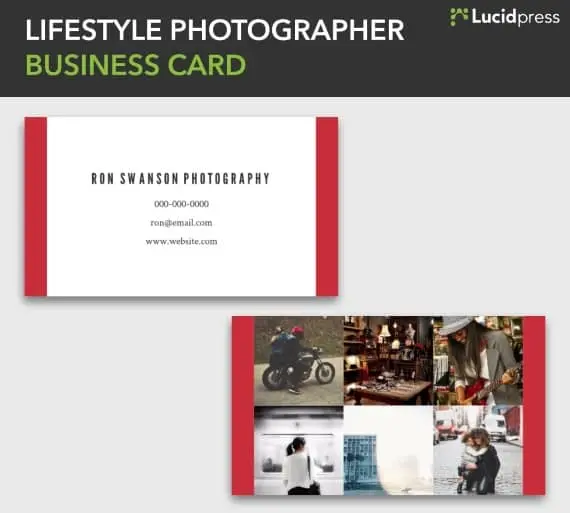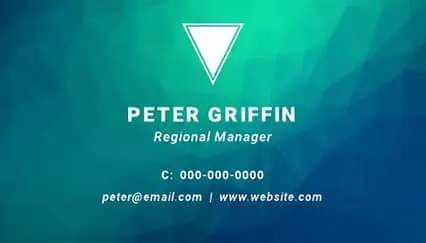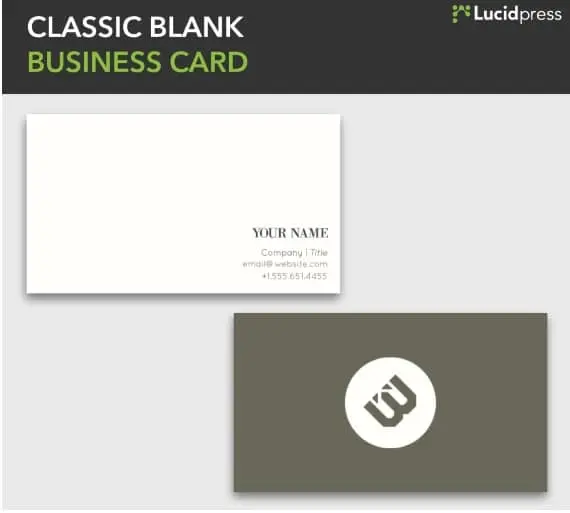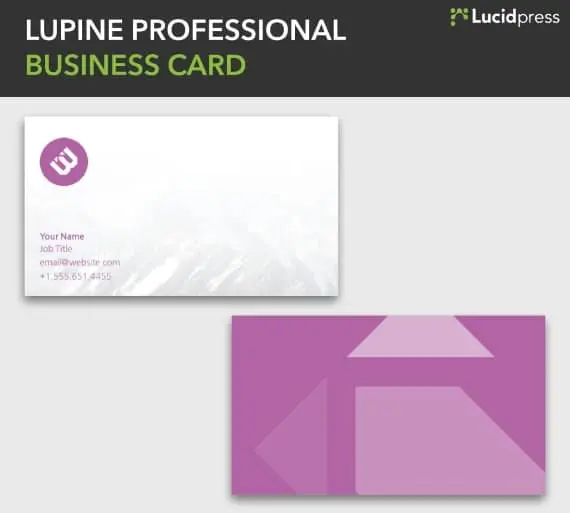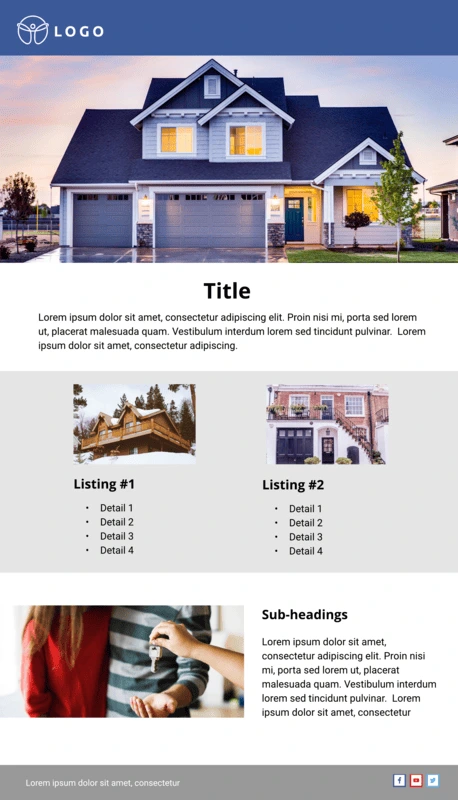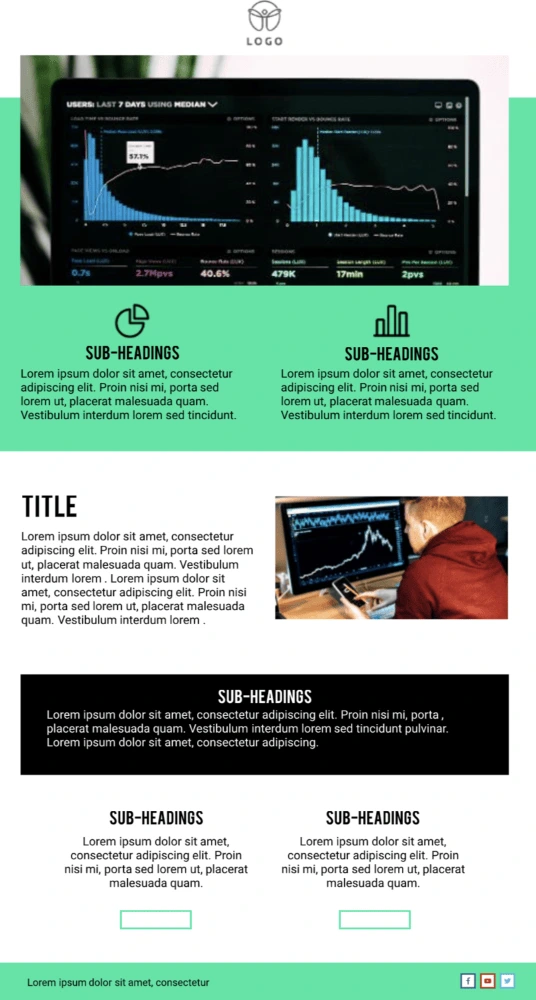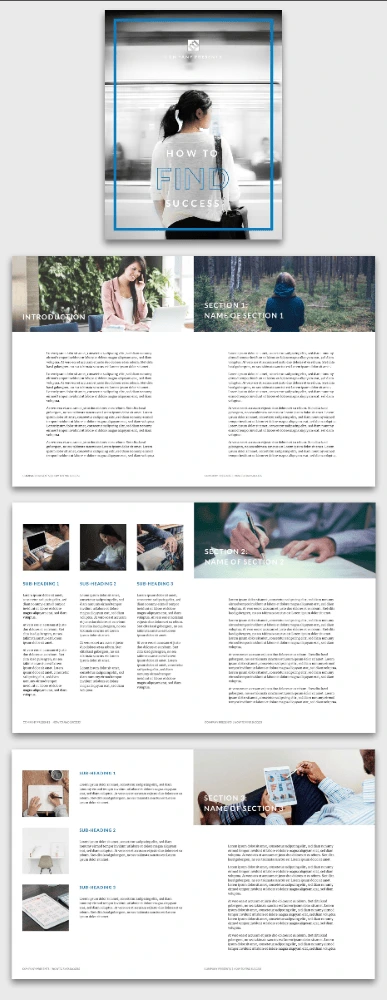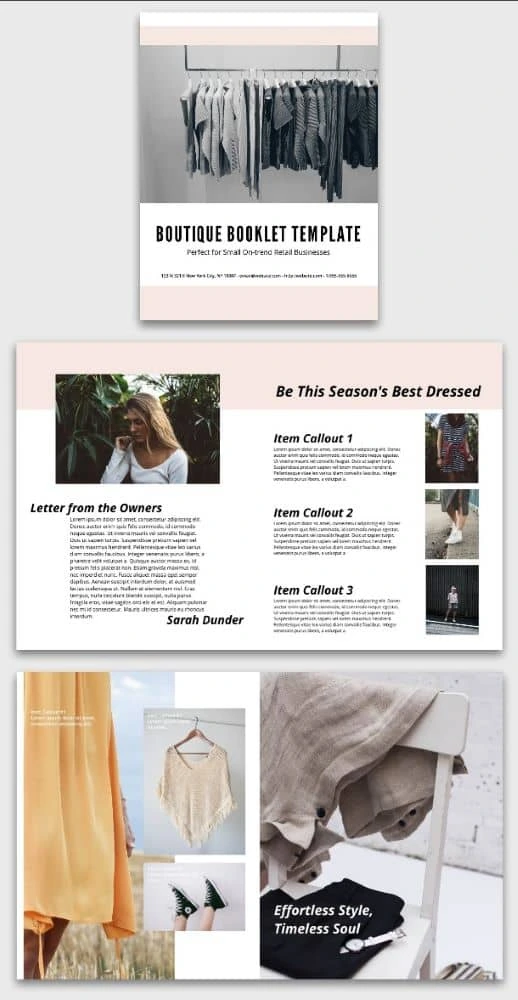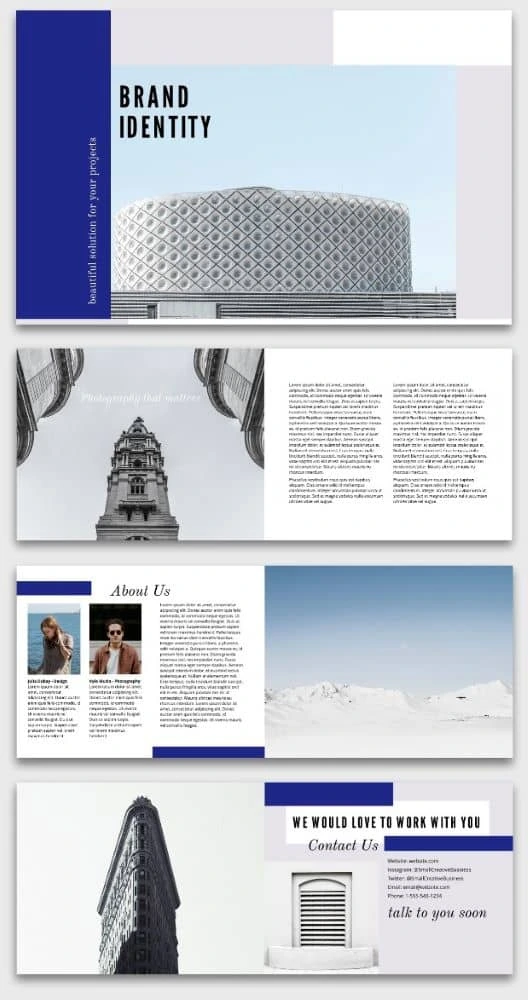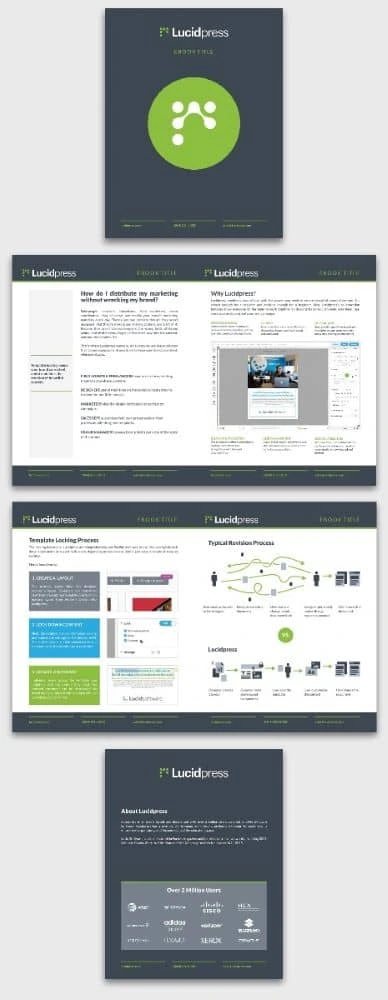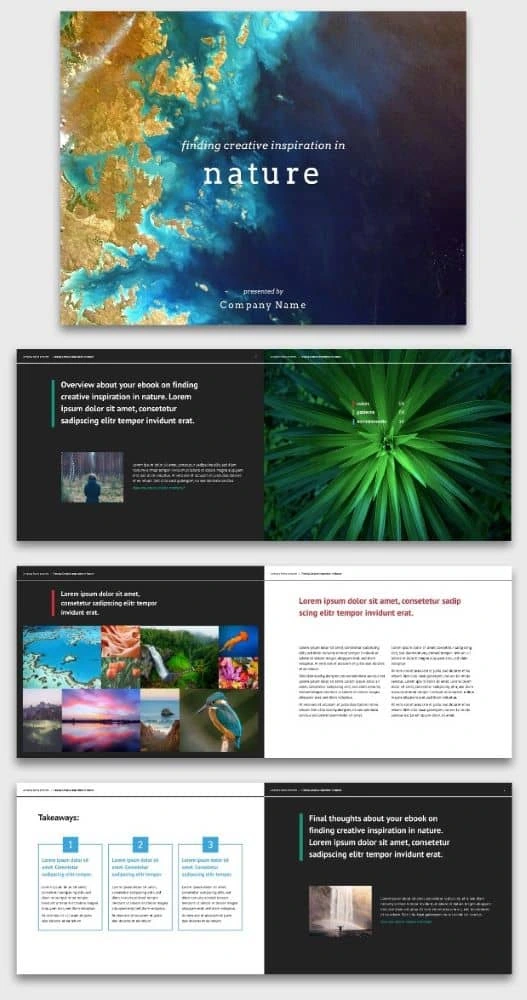In this episode of Group Therapy, hosted by Marq, Chris Knudsen, former CMO at Purple, and Cole Parker, Senior Product Marketing Manager at Marq, discuss the state of video marketing and the obvious trends many brands are ignoring.
Jeremy Wold, Head of Marketing at Awardco, and Katie Krongard, Senior Content Marketing Manager at Marq, discuss brand strategy shifts during and post-pandemic, work culture, and how to achieve cross-functional collaboration from marketing strategy to execution.
Jeremy shares that you should never sacrifice strategy for speed.
Marketing collaboration starts with communication and empathy. Great collaboration also brings data to the conversation to ensure cross-functional alignment on what is working, what isn’t, and builds trust with partners across your organization.
This is the first episode in the Group Therapy series hosted by Marq. Conversations with creative and marketing leaders about all things brand.
Sometimes, getting back to the basics can re-energize your team and help your organization find alignment across every initiative. As foundational as it may seem, even the savviest of businesses re-visit their brand marketing strategy often to ensure it is serving their products, customers, and long-term goals. In this article, you will learn the basics and then some.
- What is a brand strategy?
- Why do you need it?
- How to build an effective brand strategy, step-by-step
Whether you are an established business or just starting, your brand strategy is crucial to your growth, product positioning, and messaging.
Without further ado, let’s get into it.
What is a brand marketing strategy?
A brand marketing strategy is a comprehensive plan to achieve long-term goals that will make your brand identifiable and the preferred choice by your customers. At a foundational level, your brand strategy is the core of why you do what you do and who you do it for.
What is your product/service? Who is it for? What are its benefits? Why YOU over XYZ competitor?
A well-thought-through brand strategy should involve teams across your organization to contribute and bring ideas forward from brand equity ideas to product positioning. 1
The brand strategy process requires many intangible elements, making it difficult to measure success. That’s why it’s important to establish a strategy that outlines the steps needed for successful branding (short and long-term), product positioning, and outlined metrics to quantify progress.
Your brand strategy, from content to product development, should aim for attainable growth over time and, when done right, helps everyone in your organization understand the roadmap for the company.
Why do you need it?
Building a brand marketing strategy is essential for any business that wants to be successful. A strong brand strategy allows companies to differentiate themselves from their competitors and create an identity that resonates with their target audience. It also helps them establish customer trust and loyalty, increasing sales and profits.
A well-crafted brand strategy should include elements such as a mission statement, core values, target market, positioning statement, and key messaging. These components will help guide the company’s marketing efforts and ensure that all communications are consistent across all channels. Additionally, having a clear brand strategy in place will make it easier for the company to measure its success and adjust its approach if needed. Ultimately, a solid brand strategy is essential for any business that wants to stand out from the competition and achieve long-term success.
Without a brand strategy…
Without a brand strategy, and clarity on your purpose, vision, mission, and values, you can end up making marketing and business decisions that don’t align with your product or customer’s needs.
Without a unified approach to marketing, you risk losing time and money. Your team may also be divided on the best path forward, which can impact overall morale and energy for initiatives. Your content suffers and can appear to be scattered and sometimes even contradictory. Without a consistent message in your content, it can be hard to attract customers.
We could rattle off the negative outcomes, but the core message here is without a clear brand strategy, you’re likely to fail, even if you have an amazing product/service and team to support it.
So, let’s talk about what you need to drive growth. It is never too late to strip back your marketing efforts, re-establish your core message, and develop a foolproof strategy to help you push forward.
A comprehensive approach
We’ve established that building a brand strategy is important. You need one, plain and simple. But where do you start? First and foremost, developing a solid brand strategy requires collaboration between teams across the company to ensure that all aspects of the brand are considered. 1
To get started, assess where your brand currently stands. This includes looking at customer feedback, market trends, and competitor analysis. Once you understand where your brand is now, you can begin to make plans for the future. This includes deciding which channels to use to promote your brand, what kind of content you create, and how you measure success.
Long-term goals should also be established when creating a brand strategy. These goals should be ambitious but achievable. They should focus on increasing customer loyalty and engagement with your brand over time. Investing in research and analytics can help identify areas for improvement and provide valuable insights into how customers interact with your brand online.
By building a comprehensive brand strategy, businesses can ensure that their brands remain relevant and competitive marketplace. If you have a brand strategy in place already, conduct a brand audit to identify areas where your strategy can improve to better serve your customers and your brand.
Let’s break it down, step-by-step.
Step-by-step guide
1. Identify your target clients/customers.
Dive deep into who your target audience is and what problems you are trying to help them solve. By identifying these unique sets of customers, you’ll be better able to market to them moving forward.
2. Research your target market.
The process does not stop by simply identifying your target market. You should research your target audience and learn about them in detail. What are their job titles? How do they talk about the solution your product solves? These personalization details will vary by industry, and in this step, you will want to get as specific as possible so you can better tailor your marketing to each group.
3. Research the competitive landscape.
You must know who your competitors are and identify the areas you need to compete in while identifying how you win against them. This should be ongoing but vitally important to understand before establishing your brand messaging strategy.
4. Develop your brand positioning.
What value does your product/solution bring to your target audience? Your value and the ways in which you benefit your target audience is a crucial element of your brand strategy. It is important to consider the benefits to your customers in the short and long term, clearly identify these, and craft messaging to communicate these effectively.
5. Develop your messaging strategy.
A messaging strategy is the way you will communicate your product/solution to reach your audience. Your messaging strategy should be crafted to shape your audiences’ perception of your brand, product, or service while also building trust and loyalty.
A key element of a successful messaging strategy is for your core messages to be consistent and repeatable across all platforms and channels. Consistency in telling your brand story and consistency in communicating your product/solution to your target audience is vitally important in building brand equity over time.
You want sales, marketing, customer success, and beyond to be unified in the messages they share with your end customer. To do this, you need to think through your core message and develop clear language that can be easily understood and answers the key questions your audience will have about you.
What is it? Why should they care about it? How does it benefit them?
6. Build your pricing and sales strategy.
How will you structure your pricing, and how will you approach selling? Collaborate with your team. You can make a bigger impact when you align your approach, and you will see results sooner. Ground your strategy with research so you can engage in sales conversations confidently, knowing you are priced competitively and fairly.
6. Plan how you will share your brand story.
A brand marketing strategy should include the foundational elements of your product/solution and how you plan to share it. At this point in your strategy development, you should clearly understand who you are communicating with and what messages you plan to share with them. Identifying not just the how in telling your story but who can also set your team up to move with momentum. Who creates your content and can everyone be a brand contributor?
7. Identify your key performance indicators.
Your strategy should include performance markers that you can return to often. These measurements for success will help you adjust your strategy where needed and influence the marketing activities you do to support your brand. These KPIs should include specific measurements that you can follow over time, like organic website traffic, conversions, revenue, etc. Your brand strategy should drive growth for your business, and your performance indicators will help you ensure that you are on the right path.
Ready to create content and creative assets to support your brand strategy? Learn more about the must-have templates to enable your team to self-serve their content requests.
As a franchisor or franchisee, you understand how important marketing is for your business. However, with marketing happening on both sides of the franchise, there can a fair amount of confusion that results in marketing that cannibalizes itself.
Related: 4 keys to successful local marketing
There are many methods to handle franchise marketing. Sometimes, the franchisor and a corporate marketing team are wholly in charge. Other times, the franchisee takes on all marketing responsibilities. Most often, it’s a mix of the two.
It’s easy to see how this arrangement could cause confusion for your customers. But by coordinating your marketing efforts, your brand message will be strong and clear across all franchise locations.
Large-scale, national marketing campaigns
Here are some tips for coordinating large-scale marketing campaigns between the franchisor and franchisee.
Focus on the brand
In a franchise, the brand is often the selling point for customers. They know they can trust a certain brand and will support that franchise, no matter where they are. This is why it’s beneficial to focus on the overall brand image in your marketing efforts.
Provide a brand style guide
Franchisors can create a brand style guide for franchisees, to help them create on-brand materials and limit branding mistakes. It you aren’t sure how to create a brand style guide, take a look at this blog post for some killer examples.
Here at Lucidpress, we’re pretty obsessed with staying on-brand and empowering everyone (even franchise owners who have no design experience) to create visual content. If you’re curious how Lucidpress could streamline your franchise marketing, then check this out.
Communicate clearly & frequently
To maintain your brand image across multiple locations, communication is key. Set the precedent that there will be consistent communication regarding marketing efforts between the franchisor and franchise owners.
One area that’s often under-communicated is digital marketing strategy. The franchisor should coordinate website and social media creation with franchisees, so there aren’t multiple accounts that could confuse or misdirect customers.
Looking at these marketing strategies, the biggest factor is the brand. Build a strong brand identity that will give your franchises a good reputation, then give franchise owners the freedom to create their own marketing collateral using approved brand assets.
Small-scale, local marketing campaigns
Small-scale marketing strategies should focus on specific efforts in the local community. Franchises often have the good reputation of the larger brand, but localized marketing is what will win the community over and create a loyal fan-base.
By empowering franchisees to control their own marketing on a local level (and by giving them the tools to stay on-brand), individual franchise revenue will soar.
Here are more tips for localized, franchise-level marketing.
Find local sponsorships
Talk to local charities, sports teams or schools in the area to find opportunities to donate to a good cause and get some advertising. This is a great way to show community members that you’re invested in the area.
For example, when I was in high school, there was a Taco Time that always sponsored the school’s football and basketball teams. Their sponsorship included banners hanging up at the football field and inside the gym. They sold food at the concessions stand and had their logo printed on the game rosters. As you can imagine, my friends and I ate a lot of tacos.
This was a worthy investment for this franchisee, as it showed their support for the community and offered unique advertising opportunities. The owner of the Taco Time had a great relationship with the community and people loved going to his location.
Personalize your messages
When you’re advertising to a specific community, it’s important to personalize your messaging for your audience. Every community is different, and by catering to yours, customers will feel special and more inclined to support you.
A great example of marketing personalization is CrossFit gyms. Each gym (or “box,” in CrossFit lingo) has its own website and social media accounts that tailor their messages to the area where the gym is located. Whether it’s about the weather or events happening in the city, these gyms create a local identity for themselves that members can be part of.
Keep up-to-date
Encourage franchise owners to stay on top of trends and news as they create marketing for their franchises. Being in tune with the local news can help you spot opportunities and avoid embarrassing advertising mistakes.
Any time you post about current news or trends, make sure you do your research. An unfortunate example of this is DiGiorno. When the hashtags #whyistayed and #whyileft were trending on Twitter, DiGiorno tweeted “#whyistayed You had pizza.” The problem: these hashtags were dedicated to discussing and raising awareness of domestic abuse—an incredibly serious cause. Needless to say, many people were offended by the tweet and DiGiorno quickly apologized for its mistake.
Be where your audience is
This, of course, is one of the most important rules in marketing. No matter how clever and wonderful your marketing efforts are, if your audience doesn’t see them, then it’s a waste.
So, find out where your local audience is: Do they spend time on Facebook, Instagram or Twitter? Do they read the local newspaper? If so, that’s where you should be, too.
Be consistent with the brand
Much of the traction and business a franchise location enjoys comes from the brand name that it carries. To continue attracting and retaining that business, it’s important to stay true to the brand.
If the franchise brand is known for great customer service, then local managers have to make sure that customer service is a priority for them. Personalize each franchise to the local area, but stay true to the brand it represents. For example, maybe there’s a way to provide outstanding customer service that’s unique to your community.
A great example of this is Chick-fil-a. It’s a well-known fact that if you say “Thank you” to any Chick-fil-a employee, they will reply with “My pleasure.” Quality customer service is part of the Chick-fil-a brand, and customers can expect to receive the same level of customer service wherever they go. While each Chick-fil-a has its own concerted marketing efforts, they stay on-brand with their customer service.
Key takeaway
Marketing within a franchise can lead to miscommunication and overlap if the franchisor and franchisee do not coordinate their efforts. However, through communication and a good brand management system, your marketing efforts can complement one another and culminate in more success.
How can franchises maintain brand compliance across locations? Learn more in our free ebook, The complete guide to multi-location branding.
Ever wondered how to improve your school or company newsletter? Follow these steps to take your mailing from “Meh” to “Wow!” To follow along and create a newsletter of your own, open the Citrus Splash employee newsletter template in Lucidpress—you can see the demo features right in the editor.
Newsletters are published on a recurring basis to keep readers in the loop. The details of a newsletter will depend on its audience. Above all, newsletters should be informative and add value for readers. Print newsletters focus on text content and are typically letter size (8 ½” × 11”). Email newsletters can vary in layout and size, but should be viewable from both the email message and in a browser.
Open this template in Lucidpress to follow along!
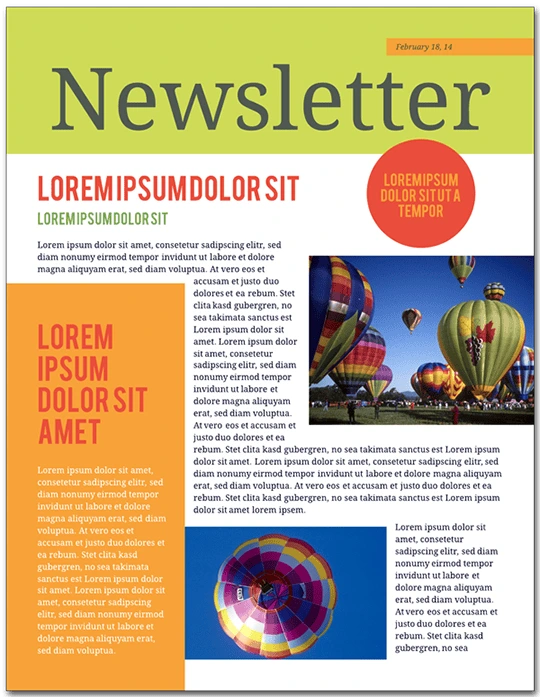
Related: 13 best newsletter design ideas to inspire you
How to create a newsletter
1. Produce good content
Make sure your content is engaging and useful. Don’t add fluff to your writing for its own sake. Before you use design software like Lucidpress, check to see that your pieces are copyedited, your photos are chosen, and your articles’ lengths are set.
This newsletter template is five pages: long enough to include a solid lineup of articles and photographs, but not so long as to be overwhelming.
2. Establish branding
Think about how you will create a consistent brand. Every aspect of your newsletter will reflect upon your corporate or academic culture and identity. Choose a succinct title, incorporate your business’s font (if you have one), and replicate your brand’s color scheme with Lucidpress’ color picker.
To place your logo onto the canvas in Lucidpress, drag the Image icon from the Content bar. From here, you can upload a .PNG file with your company icon.
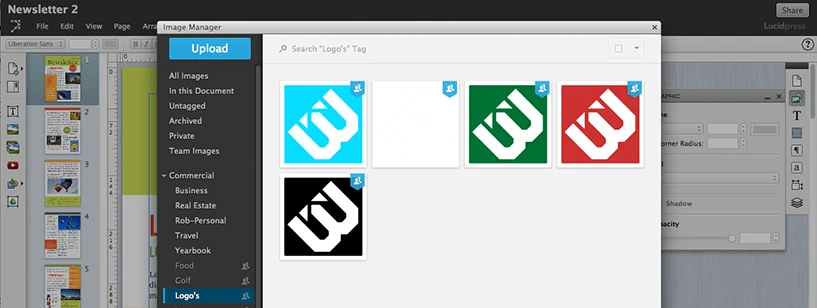
3. Brevity is the soul of wit
It’s important to have a strong opening article. This will often be a message from the principal or director, or a highlight of the most exciting feature in a product. Newsletter articles should be a page or less, with carefully placed images that visually break up the text. Splitting your articles into columns gives your content a suitably “newsy” feel.
On the bottom of page 3, there is a call-out box with a colored background. There are several ways you could use this section of the template for your own content. It could be a mini-article, a call for donations or a caption for the photo above.

4. Be informative without being too salesy
Newsletters should provide value for their readers. If you used this template for a school, the audience should be able to tell what’s going on for alumni. Avoid too much of the hard sell; consumers are best persuaded with interesting content, not aggressive marketing.
On page 5 of the template, you’ll see an event calendar. To replace the preset dates with your own, double-click the text to edit.

5. Add photos and graphics
This newsletter is tied together by the images of brightly colored hot air balloons. Graphics like these provide visual consistency and make the newsletter fun to look at. A wall of unbroken text is not enjoyable to read, and it will not engage your audience as much as having well-placed images which complement your articles.
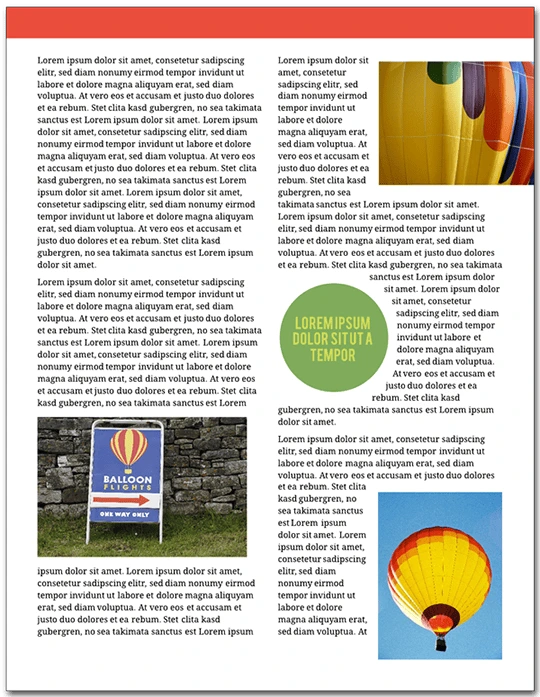
In the template, double-click an image to replace it with your own. This will bring up the Image Manager. From here, you can import images from your computer, Facebook, Dropbox or Google Drive.
6. Optimize your text formatting
Having consistent formatting is essential to your newsletter’s success. Limit the number of colors and fonts—less is more when it comes to readability. In general, use dark text against a light background. Standard usage calls for serif typefaces for the body of your articles, and sans serif typeface for captions, callout boxes and sidebars.

To change the font in Lucidpress, double-click text to select it, then choose a different typeface from the Properties bar. To change the font of every text element at once, press Ctrl+A. The font you choose reflects your brand: aim for consistency over eccentricity. A clean, modern design will earn your audience’s trust more than curlicues and Wingdings.
7. Use interactivity in Lucidpress
Lucidpress makes collaborating on a newsletter simple and straightforward. In Comment mode, your colleagues can weigh in on the content and design of your documents. You can use Lucidpress to invite feedback without the inconvenience of saving multiple drafts—it all happens in the cloud. The following video illustrates how:
8. Proofread your newsletter
Newsletters are text-heavy documents, and a grasp of spelling and grammar conventions will serve you well. Taking a few minutes to proofread your writing will pay big dividends in reader satisfaction.
In Lucidpress, select your text, choose Edit from the Menu bar, and choose spell check. You can also conduct a find-and-replace search for those times when you forget “i before e except after c.”
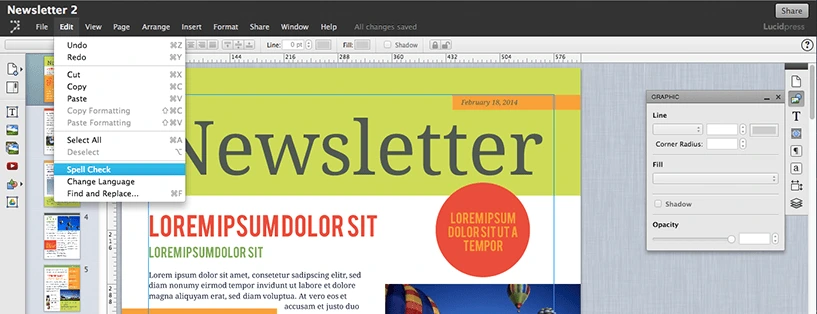
9. Be reliable and consistent
Decide how often you are going to send out your newsletter. This will affect the newsletter’s length, event calendar, and expected features.
Think ahead to the season your audience will receive your newsletter. If you are sending a winter holiday-themed mailing, you have to start designing weeks in advance. The same template can have a very different mood with different color schemes. Try using red and green for December, blue and white for midwinter, pastels for spring, and jewel tones for fall.
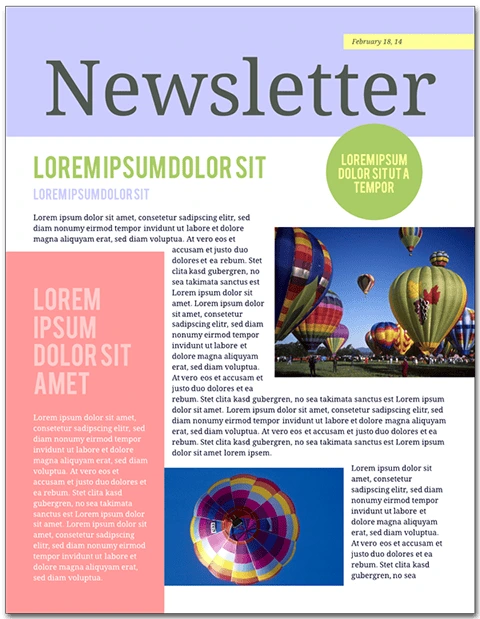
Newsletters are both popular and useful. They extend your brand’s presence, inform and entertain readers, and show off your expertise to the world.
Ready to wow your audience with beautifully designed newsletters? Lucidpress will help you send the right message.
When I was first hired at Lucidpress, I was asked to handle nearly all of our content writing, including the monthly email newsletter. It was a terrifying prospect. Most marketers know that email is a specialized skillset, and it’s easy to screw something up. But not only have we avoided major newsletter snafus, I’ve been able to cut down my time creating a newsletter from one workday… to one hour. That’s a time savings of about 800%, and the newsletters look (and read) better than ever.
Related: How to make a newsletter in 9 steps
So, how did I streamline my process? Here’s how to write a newsletter in three easy steps.
1. Do your homework
I hate starting newsletters from scratch, so I always do research beforehand. If you’re at a larger company, attend important meetings and take notes a few weeks before you start writing. If you’re running a one-man shop, make notes throughout the month. You’ll want to record things like:
- Improvements or updates to your product
- Business initiatives, like a push for more customer feedback
- Random thoughts and ideas like “Are there any upcoming holidays we can capitalize on?” or “Should we start a referral marketing program?”
Always write down a point-of-contact’s name next to your notes so you know who to seek out for more details. As for the third point, you may not use all the random ideas that pop up, but before long, you’ll have a working list of future email campaigns to test.
2. Clarify your goals
Develop a clear goal, and make sure it’s displayed front-and-center in your newsletter. You might be trying to:
- Publicize new features or offerings
- Increase traffic to a store or website
- Boost sales with a newsletter discount or promotion
- Capture customer feedback on your product
- Get subscribers to tell their friends about you
- Remind customers what your product does
- Make an emotional connection with your audience
In all likelihood, you’re trying to do several of these at once. Pick the most important one, and make sure it’s represented at the very start of your newsletter. It should also be presented (in a compelling way) in your subject line. The other major points will fall into place and can often be accomplished without text (think strategically placed links, images and calls-to-action).
3. Make it pretty (and repeatable)
Now that you have notes and a clear goal, you can easily write the text of your newsletter. The most important step here is to format your text for maximum readability. You’ll also want a nice-looking layout that communicates your company’s professionalism. Here are my tips for making it happen in under an hour:
Distribution
Ask yourself where your audience is, then decide on your method of distribution. You can go old-school with a printed newsletter or distribute your content digitally; the latter is more common nowadays. Lucidpress’s company newsletter templates allow you to quickly build a professional-looking newsletter, then print or share with a URL. All of our templates can be customized to make school newsletter templates, Christmas newsletter templates and more.
You can push out the link via social media or a website, but remember that you’ll still want to use a dedicated email service to email it. That way, you don’t have to handle subscribes/unsubscribes, CAN-SPAM compliance, and other time-sucking aspects of email management. I’ve had good experiences with MailChimp and Hubspot, but there are many others to choose from.
Here’s how a Lucidpress newsletter looks when you embed it in MailChimp. Pretty snazzy, right? We generate the code for you—just copy and paste it in.
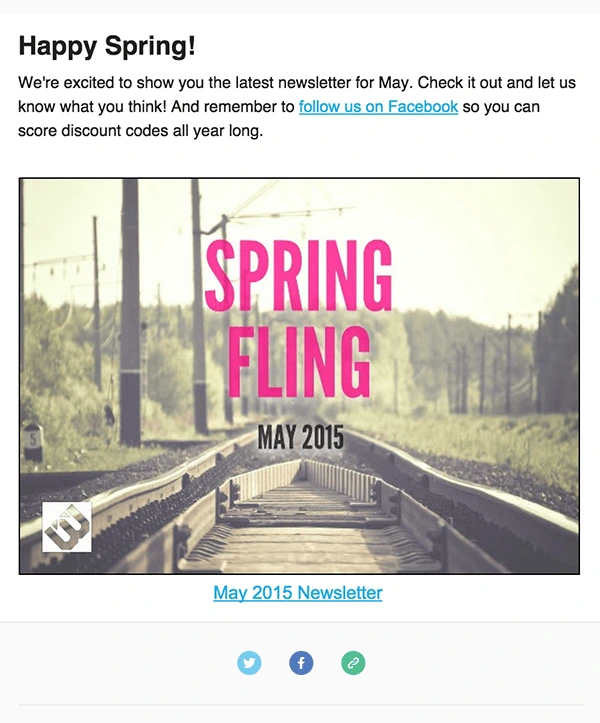
If you’d rather build a newsletter with HTML than embed a Lucidpress newsletter, pick an email service that offers prebuilt layouts. If you can’t do that, enlist the help of a professional web developer to create a few plug-and-play templates.
Text formatting
Lead with items that have the broadest appeal to your audience.
Keep it short, unless you have a good reason to do otherwise. My newsletters rarely exceed 400 words and are usually closer to 200.
This email from MURAL is a great example of how to use text sparingly to get your point across. The copy is brief and easy to read, while the images are carefully positioned to support the text. It all adds up to a highly consumable newsletter.
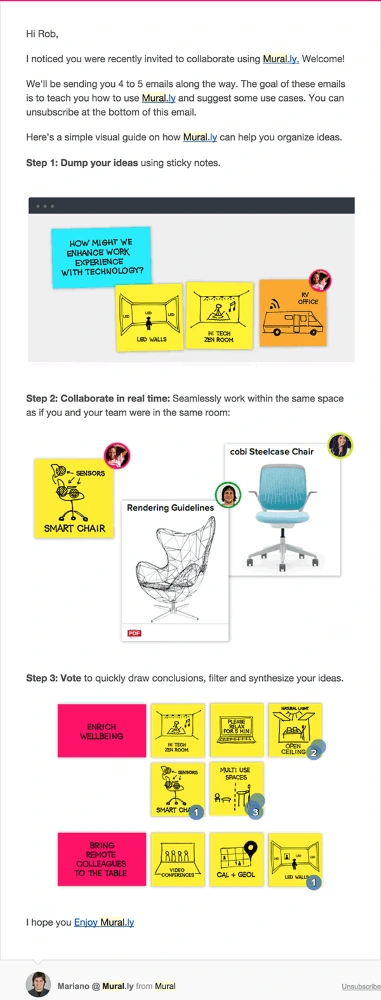
Design
Break up the text with relevant images, buttons and links. Use enough negative space to let all of your design elements breathe. This example from Litographs shows how striking a clean, roomy design can be.
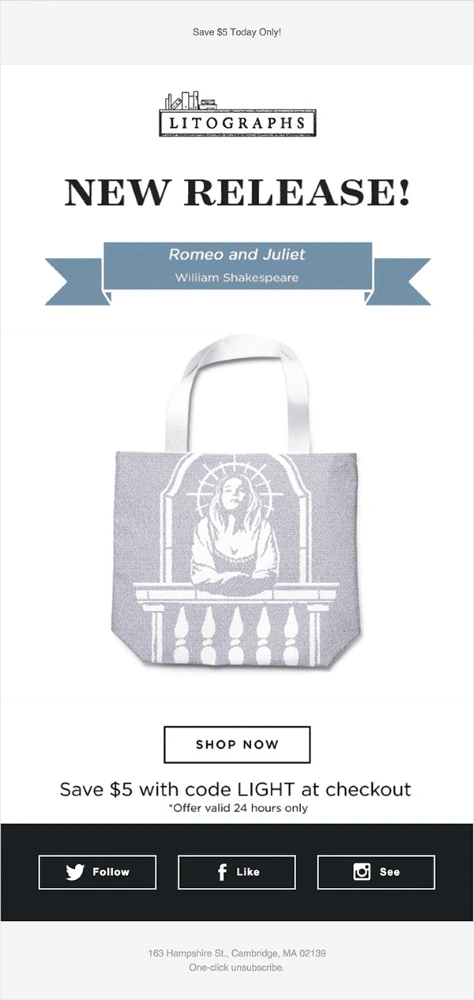
And that’s all, folks: how to write a newsletter in less time than ever before. We’d love to hear your own tips for maximizing effectiveness in marketing—just leave them in the comments.
Ready to make your own newsletter? These free newsletter templates are a great starting point.
Perhaps the term “long-form content” has made its way into the Promotions tab of your inbox a few times recently. Typical best practices for creating digital content suggest short-form content frequently seen in social content and webpages are easier to digest. However, there is a growing demand for long-form content in digital marketing.
What is long-form content?
Basically, long-form content is content with a word count of 1,200 words or more (according to Forbes). It can be a traditional blog post as well as a magazine, an eBook or a white paper, and a lot of voices are saying it’s the next big thing.
Do you have a negative knee-jerk reaction when you see someone touting long-form content’s wonders? Maybe what comes to mind is 7,000 words of text forming an intimidating mass that could cause minor head trauma if picked up and swung. Or possibly horrible flashbacks to school textbooks.
Let me start by saying that I am a millennial through and through, so thinking about a lot of boring text doesn’t really get me going. However, I am a believer in using long-form content in your content strategy.
Why?
Because if content (of any kind) is good enough, then people will stay on board for the long haul. []
This means they’ll spend more time with your brand and come to rely on you for dependable information and thought leadership.
Sure, our attention spans are getting shorter, but I like to think that, in many cases, what that really means is that we’re getting better at quickly determining what we want to spend time on and what we don’t care about. To survive a digital world filled to the brim with content, we have to pass on a lot of things, and do it quickly.
But think, for example, of the enormous success of The Lord of the Rings film trilogy. Though each of the films had a runtime of about 3 hours, the trilogy became a sensation and earned a whopping $2.9 billion worldwide. Why were people willing to follow 9 hours of film? Because there was a good story to tell. It was engaging and entertaining, and it was important to people.

To really drive this point home, think about all the people that weren’t satisfied with just 9 hours of LOTR and bought the extended editions so they could get even more of what they loved. If you’re on an exciting roller coaster, you’re not waiting for it to end—you want more!
So how can your content marketing capture people’s attention like The Lord of the Rings? It boils down to two things: looking good and being interesting. The trilogy was visually stunning, and it had a captivating story. With hard work, your content can achieve the same results.
If you find an engaging story to tell and give some thought to the design of your content, you can create something that will add value to your readers and keep them coming back for more. The film example demonstrates that length and storytelling easily coexist when the story’s right—but what about good design?
How can long-form content look good?
To speak to aesthetically motivated fears, I actually think that good long-form content can sometimes be more visually appealing and less intimidating than its alternative. Take for example, these two versions of the CRM tool Highrise’s website.
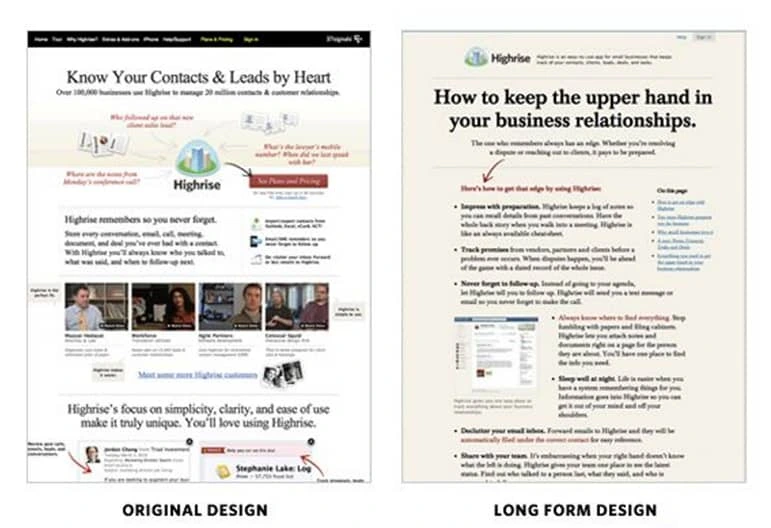
My first impression is that the original design is overwhelming and all over the place. It stresses me out trying to decide where to begin. The long-form design, on the other hand, is inviting and easy to follow. It’s designed in a way that is engaging, even while being longer. And here’s the kicker: Highrise’s long-form redesign increased conversions by 37.5%.
One reason that people may be more comfortable with a long-form design like Highrise’s is that it jives with what we’ve become accustomed to over hundreds of years. We’ve been reading books for a long time, so the layout of a long-form piece of content recalls familiar memories of your favorite novel. This effect is the result of careful design, and that’s where I feel Lucidpress can make a big difference. But more on that later.
What are some other benefits of long-form content?
In 2012, serpIQ conducted a study of more than 20,000 keywords and found that the top 10 search engine results had an average content length of more than 2,000 words, with the average number of words in the #1 spot at 2,416. Since long-form pages rank better in search engines on average, it’s likely more people will find your page and become customers. A few words from Google hint at the SEO possibilities of long-form content marketing:
“Users often turn to Google to answer a quick question, but research suggests that up to 10% of users’ daily information needs involve learning about a broad topic. That’s why today we’re introducing new search results to help users find in-depth articles.”
Pandu Nayak, creator of the Panda algorithm update
Another long-form content success story is Crazy Egg. They increased conversion rates by more than 30% with the use of long-form content. Also, this long-form content was approximately 20x longer than the previous version. That’s pretty dramatic, but so is a 30% increase in conversions. Here’s what Conversion Rate Experts had to say on the matter:
“The media would have us believe that people no longer have any capacity to concentrate. In reality, you cannot have a page that’s too long—only one that’s too boring. In the case of Crazy Egg’s homepage, visitors wanted their many questions answered and that’s what we delivered.”
I completely agree.
How to get started creating long-form content:
1. Determine your area of expertise. This will help you know what topic to write about. For me, I work in content marketing, so I feel like I have something to offer there. For you, it may be design, SEO, entrepreneurship, or, I don’t know, beekeeping. You’ll be able to tell the best story if you’re talking about something you’re closely involved with.
2. Research. For this post, I started out by googling “innovative long-form content.” Build on your expertise by looking deeply into current trends, statistics, and conversations.
3. Identify your target audience. All content needs to be relevant to your audience, but it’s especially important for keeping your reader’s attention with long-form content
4. Decide on your medium. It may be a blog post, but it also might be a magazine, an eBook or a white paper. Determine the type of content that will give your story the best presentation and resonate most with your audience. For example, this post could have worked with a white paper or eBook template, but it wouldn’t have been right for a magazine. A magazine might be better for a monthly newsletter with highlights across several different areas rather than a singular focus.
5. Start writing, then tell everyone you know about it once you’re done!
Standout examples of long-form content
Now that we’ve talked about the benefits of long-form content, let’s take a look at the innovators. There are some companies and organizations out there who are really nailing long-form content, and I’d like to go over 5 examples. Let’s dive in.
1. NewsCred
NewsCred has mastered the art of the seemingly impossible by making the white paper sexy. They understand visual storytelling, and they’ve invested a lot in the future of content marketing. Here’s a page from one of their white papers:
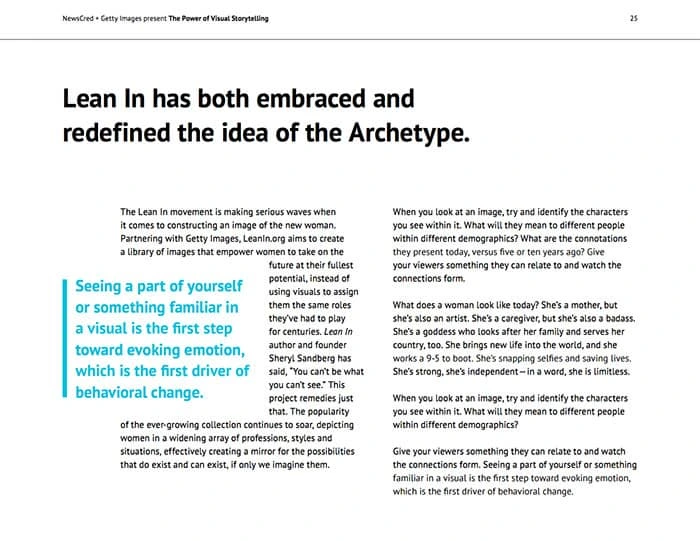
It’s manageable, it’s compelling, and it goes on for 35 pages. And you know what? I read through all of it. It captured my attention, and I walked away with valuable insights. NewsCred shows not just how long-form content can be compelling, but content in general. The long-form aspect of their content isn’t a gimmick—it’s just the best way to present the story they’re telling.
What NewsCred got right:
- Thought leadership (statistics, quotes, innovative ideas)
- Scannable and easily digestible
- Great design and striking images
2. Insider Journeys

Take a look at the beginning of this piece of content on Insider Journeys’ blog. Does it look like the start to an intimidating, boring content piece?
No. It’s immediately engaging and intriguing. Right when I opened it up, it had my attention, which it kept as I scrolled through page after page of what I think is best categorized as a mini-site.
I think this piece is the most elegant and beautiful long-form content I’ve come across in my research. It also defies expectations of what long-form content is. As you progress through the mini-site, there are intriguing facts, fun stories, and even a recipe for “the perfect Vietnamese coffee.”

On Insider Journeys’ mini-site, we see a marriage of design, copywriting and storytelling presented in a refreshingly compelling way. They’ve set the bar for what businesses can strive for with their content, and I have a hunch that content like this will stand out as the web gets increasingly crowded.
What Insider Journeys got right:
- Great organization and natural progression keeps readers from getting lost while scanning
- Powerful storytelling
- Image-based presentation that holds readers’ attention
3. Towergate Insurance
Wait! Don’t click away because you saw “insurance” and nearly died from boredom. Yes, insurance isn’t the most entertaining subject you may come across, but Towergate has made a noteworthy accomplishment with long-form content by making insurance accessible.
The piece of content I’d like to specifically point out is a guide to commercial property insurance, which isn’t really my cup of tea. But I was impressed with how, after a quick scan, I was able to comprehend the main idea of a fairly dense topic.
Towergate’s clarity kept me from getting lost in volumes of unbroken text. This effect was enhanced by the clean layout of the content. Take a look:
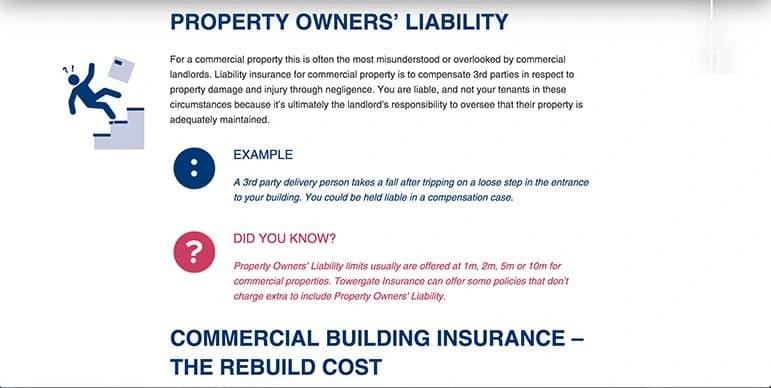
What Towergate got right:
- Straight to the point (still possible with long-form content)
- Clean layout
- Relevant section titles that aid in comprehension
I’d like to give credit to this great Moz article for helping me find this and the previous example.
4. Hip-Hop University

This example, along with the following one, are examples of long-form content that was made in Lucidpress. Before I go further, I want to be transparent about my motives here. First of all, I think these are great examples of well-designed, interesting long-form content made by smaller organizations. Beyond that, at Lucidpress, we really feel that businesses and organizations can benefit from using our product to revitalize their content marketing, especially in the long-form content space where design is crucial.
“Lucidpress template design makes everything very user friendly. I signed up to Lucidpress with no experience, but was able to achieve all of my needs and more.”
Albert Carter, co-founder of Hip-Hop University
Now back to Hip-Hop University’s digital magazine. There are two big reasons why I really like what they’re doing with this magazine. First of all, it’s a great example of long-form content presented in a unique way. Second, I appreciate Hip-Hop University’s commitment to furthering digital publishing and embracing its potential for content marketing.
Long-form content goes beyond the blog. You can have phenomenal long-form content in the form of digital magazines, eBooks, and as we saw earlier, white papers.
What Hip-Hop University got right:
- Innovative medium
- Professional cover that makes people want to read
- Blend of informative content and storytelling
5. International Academy of Wedding and Event Planning
This academy did a beautiful job with its 2016 Wedding Trend Report, and it’s all made in Lucidpress. This report is similar in form to an eBook, and it shows how diverse long-form content can be. The 2016 Wedding Trend Report combines illustration, photos and text to keep the content interesting, and it even utilizes Lucidpress’s interactive features with an embedded Youtube video.

What the International Academy got right:
- Interactive presentation
- Beautiful use of graphic elements
- Extensive thought leadership
Go forth and be awesome
I hope that something in this post has resonated with you and sparked some ideas about long-form content. It might be worth noting that this post is itself a piece of long-form content, and that’s because I really do think that long-form content will play an important role in content marketing’s future.
Go out and start experimenting with your content to find what fits best with your brand. You’ll need to determine what story you want to tell, and then tell it in a genuine, transparent way that lets your passion shine through. If it’s a good story, people will listen.
Learn how Lucidpress can streamline your brand’s content marketing and keep your whole team on the same page.
You’ve got a great idea for a flyer: a new business service, a store’s grand opening, an upcoming concert, open house or event. And you’ve got Lucidpress to make designing your flyer a snap. Now all you need… is an audience. Welcome to Flyering 101, where you’ll learn how to nail (no pun intended) your flyer distribution.
Related: 17 flyer layout design ideas for your inspiration
According to our research, here are the top six issues to consider before distributing your flyers.
1. Consider your message.
Certain messages are better suited for flyers than others. Most of them can be grouped under the same umbrella—that is, most flyers are announcements. Maybe you’re trying to drum up interest for a new business or invite people to a local festival.
There are lots of occasions which call for an easy, low-cost form of direct marketing. Is your flyer ready for primetime? Make sure you’re completely satisfied with every aspect of your flyer, from content to design. Because once you print out hundreds or thousands of copies, there’s no going back.
2. Consider your timing.
Allow me to state the obvious for a moment: flyers are made of paper. They’re not incredibly durable, and they don’t tend to last very long. If you’re hanging flyers outside, their lifespan could be substantially shortened by the elements. Before you get out the staple gun, check your local weather forecast for rain, snow, and heavy winds. If harsh weather is on the horizon, you might have to adjust your plans.
While we’re on the subject, take holidays into account as well. Around certain ones, like Halloween and Christmas, your flyer will be competing with a lot of decorations. Space might not be as readily available as it was before. That doesn’t mean you shouldn’t advertise around a holiday—especially if your message is seasonal or topical—but you should still take note.
3. Consider your audience.
Who should read your flyer? Is it of general interest, or does it address a specialized audience? It’s important to consider this before you start flyering. It’s one thing to hand them out to people. It’s another thing to hand them to the right people.
Distributing flyers to random strangers who pass you on the street might not be as effective as targeting a specific audience. In fact, in many cases, you might as well be putting your flyers in the trash. But once you understand who your audience really should be, you can put together a smarter distribution plan.
4. Consider your distribution method.
How are your flyers getting to your intended audience? You have a few choices. The most popular methods are:
- Hanging the flyers in public/community areas.
- Handing the flyers to people directly.
- Keeping a stack of flyers in a high-traffic area.
- Delivering the flyers door-to-door (or car-to-car).
The method you choose will have critical ramifications on your distribution plan. For example, how many flyers will you need to accomplish your goal? How long will it take to get rid of them all?
No matter where you’re flyering, make sure you get the right permissions. Not all places that are open to the public are open to flyering as well. Parks have maintenance staff. Neighborhoods have soliciting policies. Storefronts and cafés have managers. Schools have approval forms.
Don’t give up hope, though. Many times, you can chat with property owners to determine whether they’re open to flyering. If you see shops with flyers already out front, that’s a good sign. Many places, like college campuses and laundromats, have corkboards especially for flyers and local ads. Take a look around, and don’t be afraid to ask!
5. Consider your distribution team.
If you’re hanging or handing out flyers all by your lonesome, it’s going to be a long ride. Flyering moves much faster in a team. Fortunately, you can call on your support network for help. If you’re announcing a new store, employees can help. If it’s a party or a concert, you can recruit family and friends. If it’s a club or organization, it shouldn’t be hard to find volunteers.
The lower the quantity, the easier it will be to get all those flyers out into the world. However, if your back’s against the wall, you still have options. If you don’t have the time—and no one else seems to, either—give a flyering agency a call.
There are specialized businesses out there who take care of the entire distribution process, from start to finish. They can help you create a smart plan that targets your audience in a timely fashion. Some even offer GPS tracking so you can watch in real-time. Just keep in mind that you can’t control how the staff does its job, so choose your agency partner carefully.
6. Target your distribution.
Finally, take a good hard look at your distribution plan and make sure you’ve accounted for all the steps up to this point. Now that you have all the basics in line, you can make some advanced adjustments. Targeting your distribution is the final consideration that will have a major effect on your success, and there are two ways to do it.
- Geographic targeting. If you run a local business, you can target specific areas who are more likely to benefit from your services. You can choose the zip codes, cities, streets, or even neighborhoods to flyer. Take into account the topography and landscape of these areas. Some terrain will be harder to cover than others, such as hills or neighborhoods where houses are far apart.
- Demographic targeting. If you’re announcing a new location for your business, you might target loyal customers who you know will be interested. Or if your flyer addresses a specific need, like babysitting or landscaping, you might be selective about who gets a flyer. The idea is to give flyers only to the people who actually benefit from your message, so your flyer has a higher chance of success.
Flyering may be a cheap way to advertise, but that doesn’t mean you want to throw your money away. With these six considerations accounted for, you can craft a smart flyer distribution plan that helps you achieve your business or personal goals.
In today’s digitized, inter-connected world, it’s all too easy to send a text or an email to someone and forget about it. Whether it’s an e-card for Mom’s birthday or a PDF brochure for a prospective client, digital content is incredibly efficient and convenient. But as any library lover will tell you, there’s just no replacement for the printed word.
Related: Not everything is online—How print materials can raise brand awareness.
Here at Lucidpress, we offer our own Print & Ship service, so users can create unique designs and bring them to life through print. We’re talking cards, business cards, flyers, documents, brochures, you name it. Ordering gorgeous, high-quality prints is a feature that more of our users requested than any other—and we’re here to deliver (pun very much intended).
Not sure about the value of print in a digital world? Here’s a few reasons why we believe print will never die.
Scarcity

Now that so many things are shared digitally, print stands out. Well-placed printed materials can grab attention for your business, so they’re a boon to your marketing. And because printing is more expensive, printed materials carry more authority and credibility than they did before, because someone took the effort to produce them.
Ever hear of “supply and demand”? Digitized content eliminates the supply and demand curve, because supply is infinite. But with printed content, the curve still stands. Printed items are tangible and maintain their scarcity. Certain printed items, like concert and movie posters, can even become collectibles because they evoke strong memories of a certain time and place. Can’t do that with a PDF.
Beauty

No matter how popular eBooks get, there is always a stalwart bunch who refuse to get rid of their old books. Why? One possibility is this: books and printed materials have physical beauty that can be appreciated again and again over time. Book-binding itself can be described as an art, one which has evolved and developed a rich history. We know how important aesthetics are—just take a look at our previous blog post about book covers.
The point is, printed materials like books have varied appearances and styles. Digital materials are often homogenized down to black text on a white screen. And while that is useful and efficient for conveying information, the appreciation of unique physical beauty is lost.
Sentimentality

How many photos are saved on your phone or hard drive? When I last checked, mine had over 3,000 (and counting). But when was the last time I sat down and flipped through all those photos? Hardly ever.
Photos in particular are a record of permanence, a memory you can hang in your home or office. I may not glance at the pictures on my phone very often, but I pass by the picture of my nephew hanging on my wall every day. And each time I see it, my heart fills with joy. Certain photos deserve to be printed and cherished in scrapbooks, frames, lockets and wallets.
Printed materials are a powerful reminder of something concrete. Following the same principle as photos, you can create strong impressions by providing printed materials for your business. If you’re at a trade show, for example, it’s far more impactful to hand someone a brochure than to give them a link to a landing page.
Practicality

Wait, but didn’t I say digital materials are the more convenient choice? Sure. But that doesn’t mean print is lacking in practical benefits. Here are a few reasons you might choose print over digital:
- Many find print easier to read, especially for long periods of time, so as to avoid eye strain.
- Readers are less likely to skim a printed document than a digital one.
- Printed materials feel more inviting and immediately engaging than files which have to be opened first.
- As unscientific as it sounds, print simply feels better to humans because it uses more of our senses to create a stronger memory. (Think “old book smell.”)
Digital might have its advantages, but one thing is clear: print is not now, or ever, really going away. Its purpose and value might shift over time, but today, it makes more sense than ever to print what matters most. Whether you’re sharing a photo postcard for the holidays or business cards at a trade show, Lucidpress can help you bring your ideas into the real world.
Ready to design your own print ideas? Lucidpress makes it easy to create beautifully branded content in a matter of minutes.
Here’s a bummer statistic: 88% of people will throw away your business card within a week of receiving it. In fact, it is likely easier for them to just Google your name or business to find your contact info when they need you. But that’s okay, because exchanging business cards offers so much more than a way for people to contact you when they need your services.
Whether you’re at a job fair, trade show, or any other networking situation, your primary goal should be for people to remember you and your brand. With this higher goal in mind, here are 3 reasons why business cards still matter.
Related: 4 tips to prevent business card blunders
1. They help you create the right first impression.
In any networking situation, you typically get one shot to make a great impression.
“A business card can, if one chooses, provide more than just contact information through graphics, mottos, type face, or other visual content,” said Keith McHugh of Painted Rock Enterprises. “This additional content could elicit emotions or a message that helps you stand out from the crowd.”
2. They present your brand as trustworthy and credible.
Building new relationships with potential clients, vendors, or employers requires you to break through any walls that they might have built up. A polished business card is one way you can build up enough trust to break down those walls.
“Not having a card makes you look like a brand new, one-person company that works out of the home and can’t afford $25 for business cards,” says Perryn Olson, marketing director at My IT. “Prospective clients do not want to gamble with an unproven vendor.”
3. They’re still an effective direct marketing tool.
Here’s how the e-commerce platform Shopify defines direct marketing:
“…a promotional method that involves presenting information about your company, product, or service to your target customer without the use of an advertising middleman. It is a targeted form of marketing that presents information of potential interest to a consumer that has been determined to be a likely buyer.”
There is nothing more direct than giving a potential client a handshake and a business card.
In fact, Mark Aselstine, owner of Uncorked Ventures, describes a recent situation where his business card drove tangible revenue:
“I definitely go back and forth if they’re worth it, but I think they do help bring in sales, often in unexpected ways. As an example, I had a corporate client reorder a series of wine club memberships for holiday gifts this year, despite having the person who used to be responsible for the order leave the company. At first, I thought they had access to her email, but it turns out they found my business card in her desk after she left the company and looked up our history in their accounting software.
For me, there are times when I need to source a case or two of wine and I look through the stack of business cards to choose someone to buy something from.
In any case, as much as people want to talk about how antiquated business cards seem at times, they still do help drive sales, but often in unexpected ways!”
Ready to give your business cards a fresh look? Design your own for free right here in Lucidpress.
30 awesome business card examples to inspire you
Now that we know why it’s important to create a memorable business card, here are 30 creative business card ideas you can use for inspiration when creating business cards.
Creative business cards
Source: Lucidpress
Warm pastel creative business card
Source: Lucidpress
Bold impressions business card
Source: Lucidpress
Surf creative business card
Source: Lucidpress
Character creative business card

Source: Manriquez
Simple business cards
Source: Lucidpress
Source: Lucidpress

Source: Emanuele Cecini

Source: DK Design Studio

Source: Erica Boucher
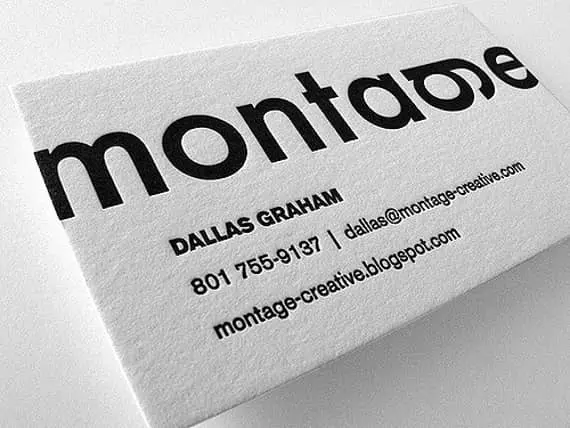
Source: The Mandate Press
Black business cards
Source: Lucidpress
Source: Lucidpress
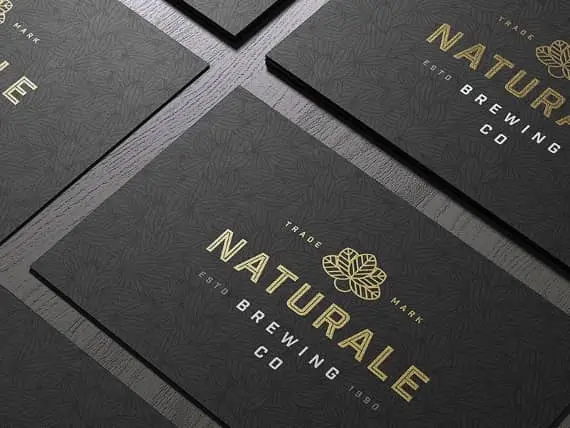
Source: Nathan Riley

Source: Handsome
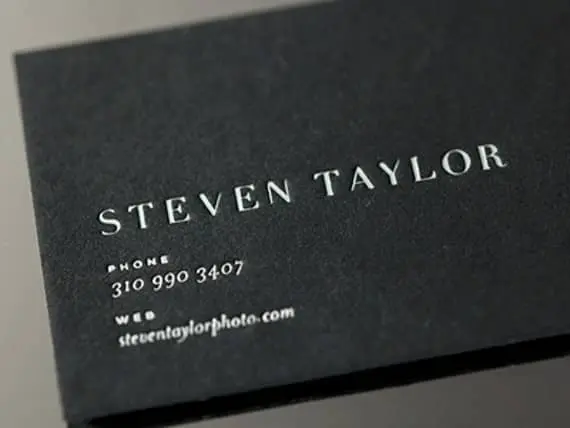
Source: Danny Jones
Double-sided business cards
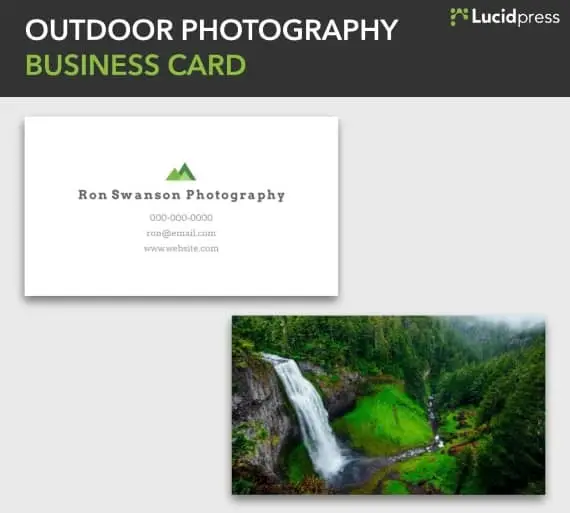
Source: Lucidpress
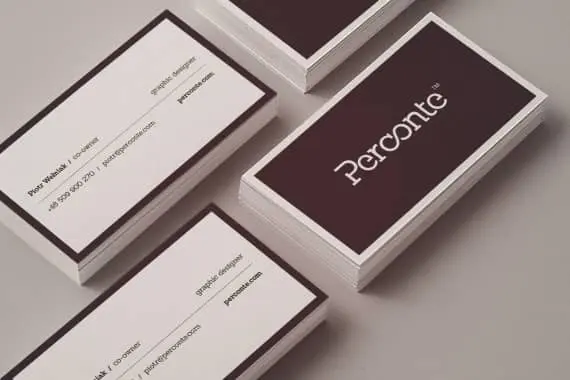
Source: Perconte

Source: Claudia Argueta

Source: Mark Brooks
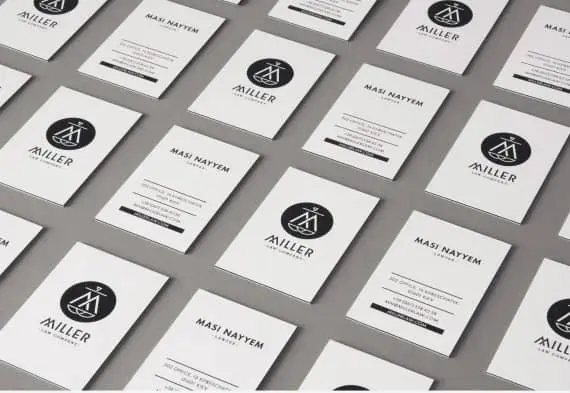
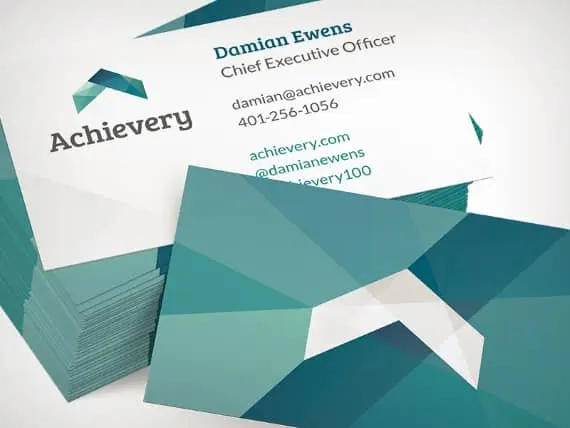
Source: Mike Camera
Vertical business cards
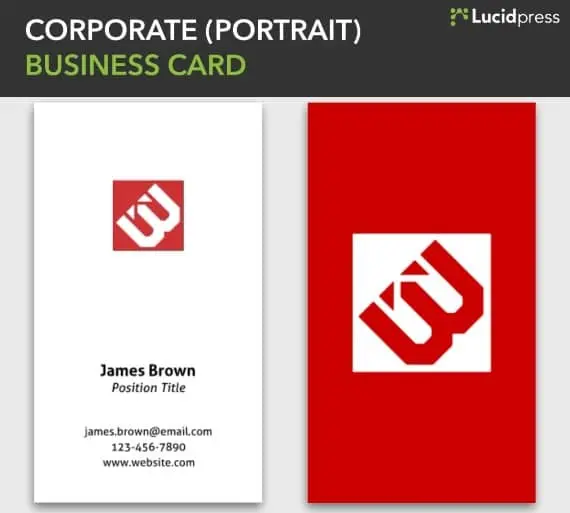
Source: Lucidpress
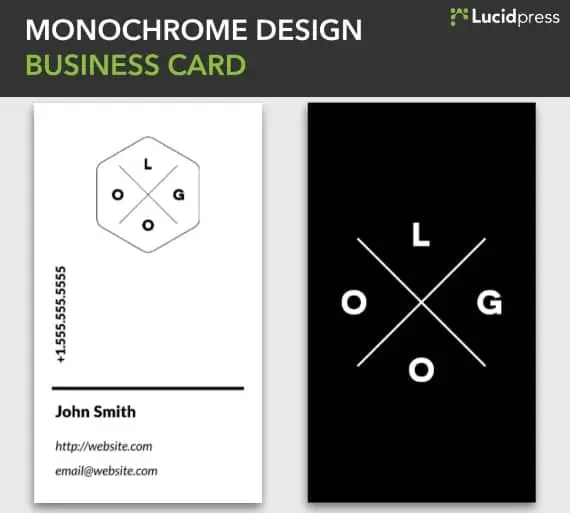
Source: Lucidpress
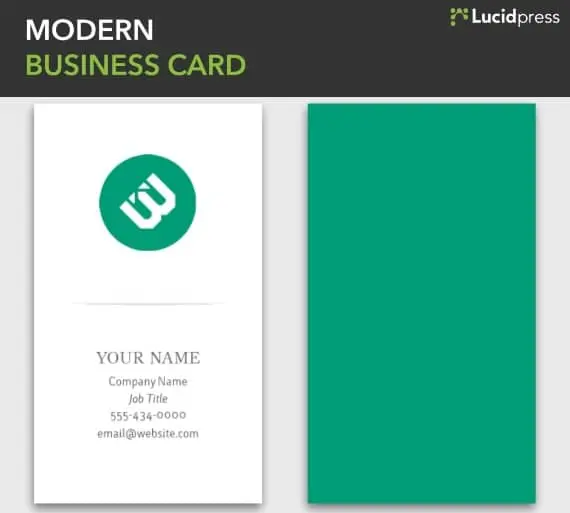
Source: Lucidpress
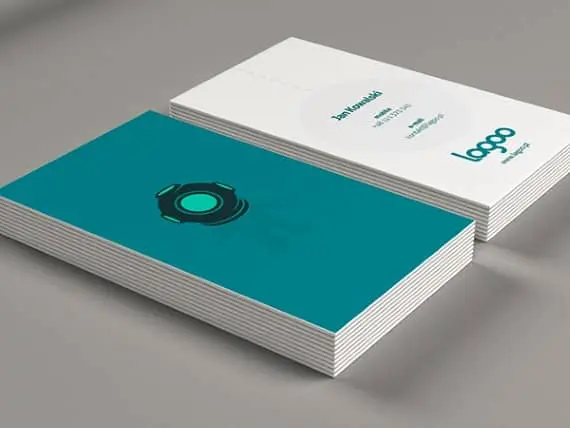
Source: Lagoo

Source: Janne Koivistoinen
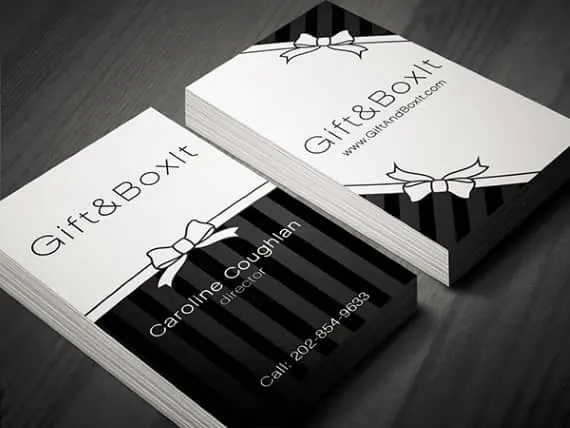
Source: Martina Obertová

Source: Giorgia Smiraglia

Source: Vik Design
Feeling inspired? You can design and order your brand new business cards right here in Lucidpress.
Social media marketing has immense potential for helping you attract brand awareness, website traffic, and even new customers. Even so, many brands remain skeptical of marketing on social media, because they’ve been unable to achieve their goals with it.
Is your brand present on social media? Grab a copy of our free eBook: How to adapt your brand to social media
The underlying issue could lie with any one of a host of decisions responsible for social media success, such as content, timing or campaign implementation. To give your brand the best chance at success, here are 7 social media mistakes to avoid.
1. Paying for poor shortcuts
Many marketers fall prey to the game of vanity numbers—a game that’s hard to recover from once it’s started. Remember: the size of your following doesn’t matter as much as the number of real engagements on your social media pages.
The focus of any social campaign should be to engage and delight your target audience. If an agency promises to quickly increase your page’s likes or follows, it’s likely to rely on underhanded strategies.
Unfortunately, likes purchased in bulk are worthless, because they won’t be from authentic fans and followers who buy from you or positively contribute to your online presence.
Instead: Invest in creating great content and organically engaging your audience instead of trying to buy their interest. One great way to do this is to reach out to the experts in your niche, share content created by them, and build a rapport in the community.

You could use a content curation app to source fresh, organic content that’s related to your niche, and then drive engagement with it. (Full disclosure: I work with DrumUp.)
2. Outsourcing without context
Brands who outsource their social media marketing usually do so because they believe it’s less expensive and time-consuming than building an in-house team. But is it?
You must totally, fully, completely trust the agency you choose to represent you online. Because if you don’t, and your decision backfires, it could be a disastrous mistake.
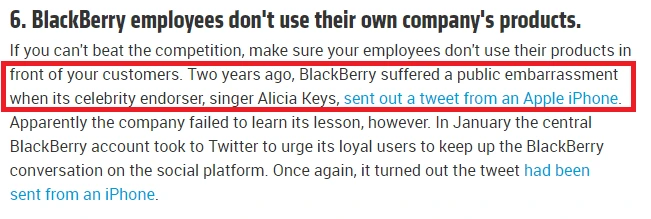
Even when you’re working with a reputable agency that isn’t likely to make such a mistake, there’s always a risk of being misrepresented, failing to capture your brand’s essence, or misunderstanding your expectations.
Instead:
- Communicate your brand’s vision, feel and personality.
- Set firm, clear goals and guidelines.
- Establish an approval system.
- Keep the line open for communication.
3. Being overly self-promotional
Being openly commercial has nearly become a faux pas in today’s online marketplace. Your audience is tired of ads—as the spike in ad-blocking clearly demonstrates. Nobody wants to be sold at anymore. They want to be befriended, entertained and wooed.
Instead, you should curate content and use your social media pages to establish your brand as a source of useful information and entertainment.
For example, Moz both creates and curates SEO-related content, which has made them the ultimate go-to for SEO on Twitter.
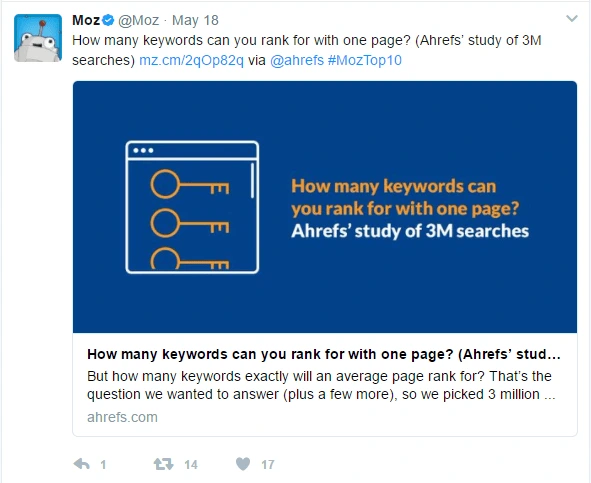
Takeaway: Curate entertaining or informational content that your audience will like. It doesn’t always have to be created by you. Find the balance, and don’t over-share your promotional content.
4. Spamming fans’ feeds
There’s no universal posting frequency that everyone should follow. Actually, it depends on your posts’ reach and impressions. Based on those statistics, you can select your frequency and time intervals for posting.
You can and should share a good blog post more than once. But avoid spamming your fans’ feeds with the same content over and over in a short period of time.
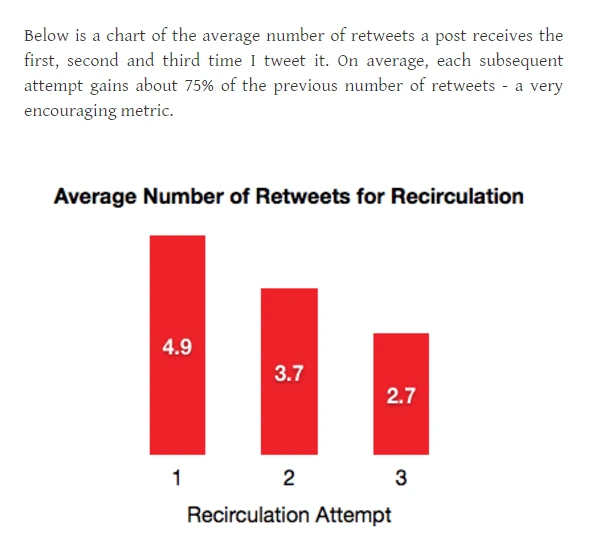
Instead:
- Create variations of a post with different lead-ins, featured images, and points of focus.
- Consider ways to re-purpose your content and share it in different formats.
- Share at different time intervals on different days, so your content reaches a wider audience and has a lower risk of showing up in the same fan’s feed.
5. Ignoring fan feedback
Studies show that 72% of customers expect a response within an hour when they post complaints on brand pages. When they don’t get one, they’re likely to think negatively about the brand.
How you handle negative feedback and the time you take to respond both matter.
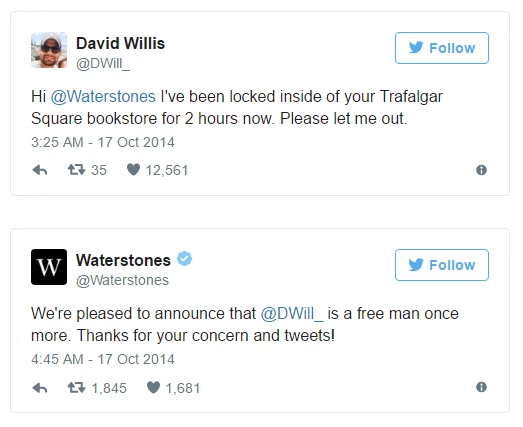
People are very likely to head to social media to post feedback, ask questions and complain, because it’s accessible and easy to do. That’s why many brands invest in full-time social media listeners and monitoring tools to help them maintain their brand’s reputation.
Takeaway: Never ignore fans on social. Acknowledge how they feel, and do your best to diffuse negative situations quickly. There are several social features like emoticons, GIFs and live video streaming that you can use to make followers feel like they’re being heard by other human beings.
6. Operating sans-analytics
Operating without analytics is like speaking without listening. [] Without analytics, there’s no way to know how your content is being received and whether it’s helping you move toward any goals.
Every interaction on social media is feedback that you should consider when reviewing and refining your social media strategy. It’s also wise to track the flow of traffic, so you can learn which social platform is best for your brand.
Instead of flying blind:
- Measure important metrics like referrals, reach, impressions, engagement, leads, conversions, follower growth rate and mentions.
- Review your performance regularly, and take remedial measures to increase traction.
- A/B test your most important posts to optimize conversions.
7. Not being human
Humans are irrational and emotional beings, and this affects our decisions and how we feel about other people, situations, and even brands.
If you aren’t displaying your human side on social, you’re throwing away the ability to build lasting connections with your target audience.
Many brands invest in experienced marketing managers who specialize in building brand personalities and ensuring that they’re expressed through various channels.
Takeaway: Assign your brand a human personality that you can ‘be’ on social media. For instance, Old Spice sounds like a confident man with sophisticated, slightly dry humor.
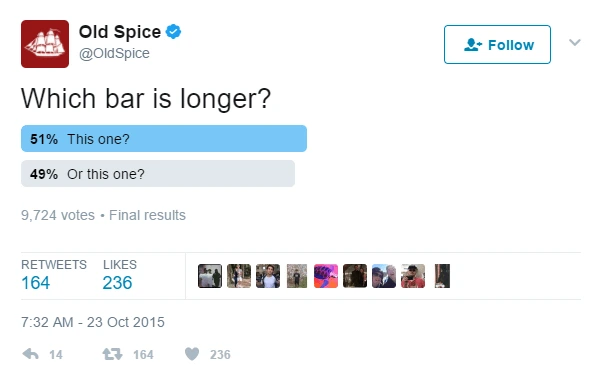
Another great idea is to put the spotlight on team members and customers who make your brand special.
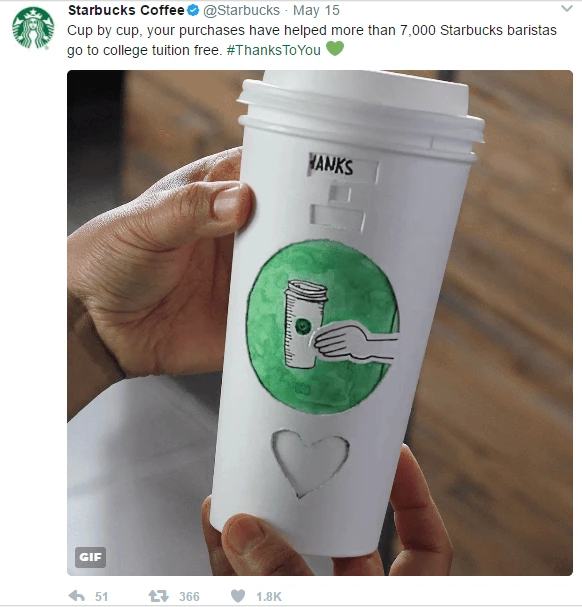
By taking care to avoid these mistakes, you’ll give your brand a leg up in the social media scene. Take a look at your social channels today and seize new opportunities to make an impact.
Ready to drive more leads and engagement with social media? Grab a copy of our free eBook: How to adapt your brand to social media
From Facebook posts by old friends asking you to try products that “really work,” to those email subscriptions you’re sure you never signed up for, people are constantly bombarding you with information from all platforms. Everyone wants your attention, and it’s up to you to determine what makes the cut. Our eyes can only process so much—and our brains can interpret even less.
Related: What is an infographic? A comprehensive guide
This fact is well-known to marketers, who constantly work to create new and exciting content to be consumed by target audiences. The job of marketers is growing increasingly more difficult as the days of simply creating interesting, insightful, witty, easily understood yet informative content are over. On top of everything their positions entailed before the age of social media and email campaigns, marketers now have the additional task of differentiating themselves from everyone else who is trying to do the exact same thing.
So, how is it done? How can one business’s content stand apart from the overabundance of black-and-white text being hurled at consumers across the globe?
The answer lies in visual content—like infographics. We’ve compiled a list of 32 stats and facts that demonstrate the importance of visuals in your marketing messages. These stats can help you disseminate content that is read instead of skipped.
How do we process information?
- 90% of information sent to the brain is visual. (MIT)
- 65% of people are visual learners. (Pearson)
- When people hear information, they’re likely to remember only 10% of that information three days later. However, if a relevant image is paired with that same information, people retained 65% of the information three days later. (Brain Rules)
- 99% of all sensory information is filtered out by the brain almost immediately. This means that only 1% of information actually gets through to the brain. Infographics are in this 1%. (QUE Publishing)
- Visuals with color increase people’s willingness to read a piece of content by 80%. (Saurage Research)
- People following directions with text and illustrations do 323% better than those following directions without illustrations. (Springer)
- Eye-tracking studies show internet readers pay close attention to information-carrying images. In fact, when the images are relevant, readers spend more time looking at the images than they do reading text on the page. (NN Group)
- 81% of people only skim the content they read online. The average user reads 20-28% of words during an average visit. (NN Group)
Why should you use infographics?
- Infographics can increase web traffic by 12%. (Demand Gen Report)
- Posts that include images receive 650% higher engagement than text-only posts. (Webdam)
- 30% of marketers use original graphics, such as infographics, more than any other type of visual content, including videos and GIFs. (Venngage)
- When asked which types of visuals had the highest engagement, 42% of marketers reported that infographics and other original graphics were the most engaging. This was higher than any other form of visual content. (Venngage)
- Content with relevant images gets 94% more views than content without relevant images. (Quick Sprout)
The importance of visual content in social media
- Infographics are liked and shared on social media 3x more than other any other type of content. (NN Group)
- Tweets with images receive 150% more retweets than tweets without images. (Buffer)
- 74% of social media marketers use visual assets in their social media marketing, ahead of blogs (68%) and videos (60%). (Social Media Examiner)
- 37% of marketers say that visual marketing is the most important form of content for their business. (Social Media Examiner)
- Facebook posts with images get over double the engagement than those without images. (BuzzSumo)
- In an analysis of over 1 million articles, BuzzSumo found that articles with an image once every 75 to 100 words received double the social media shares as articles with fewer images. (BuzzSumo)
- On LinkedIn, images generally result in a 98% higher comment rate. (LinkedIn)
- Tweets with images receive 18% more clicks than those without. (Buffer)
- Facebook posts from brands that included images earned 87% of all engagements. (Quintly)
How does this affect marketing?
- Infographics were the B2B content marketing tactic with the biggest increase in use from 2015 to 2016, up from 50% to 58%. (CMI)
- From 2015 to 2016, the use of visual content by marketers increased by 130%. (Venngage)
- 71% of marketers claim to spend less than 5 hours per week making visuals. 11% spend over 15 hours per week, and 18% spend between 5 and 15 hours per week. (Venngage)
- 29% of marketers report that the biggest struggle they face when creating engaging visuals is being able to produce well-designed visuals. (Venngage)
- 36% of marketers predicted that they will spend more than a third of their entire budget on visual content in 2017. (Venngage)
- 53% of marketers stated that 91-100% of the content they published in 2016 contained visuals. (Venngage)
- 65% of senior marketing executives believe that visual assets are core to how their brand story is communicated. (MediaPost)
- 65% of marketers say that a lack of time or staff resources are the biggest challenges to creating effective visual marketing. (Chute)
- 58% of marketers say they are looking to consolidate platforms and processes to increase visual marketing output and effectiveness. (Chute)
- Publishers who use infographics see traffic grow an average of 12% more than those who don’t. (Anson Alex)
The statistics speak for themselves: visual content is essential to capturing and holding the attention of potential readers. As the data shows, however, over 17% of marketers spend more than five hours per week creating visuals in order to brand their business and disseminate information. Five hours per week spent creating infographics is five hours per week not spent improving your business.
So how do you keep up with the stunning visual content of competitors but also spend significantly less time in the creation process? The solution is Lucidpress: a web-based design platform that empowers even the most novice of designers to create impressive visual content. Using our simple drag-and-drop formatting will help you spend less time branding your business and more time building it.
Create striking visual content in minutes with our easy-to-use infographic templates. Get started for free today!
Instagram is the second-most popular social media platform, following Facebook. Currently, this photo-sharing platform has more than 700 million users and gets more than 4.2 million likes on its posts every day.
And since Instagram has opened its floodgates for businesses to advertise on the platform, marketers are jumping at the opportunity to appear in the news feeds of their target customers. And why wouldn’t they? A study conducted at the end of 2016 claimed that Instagram has 20x more engagement than Twitter and 15x more than Facebook.
Related: Free Instagram post templates
However, it’s also true that many businesses are failing to convince Instagram’s proactive and highly engaged user base to tap their advertisements. And it’s not just small brands—big names like Coca-Cola, Victoria’s Secret and McDonald’s also fail to capture Instagram’s full potential.
What mistakes are these brands (and yours) making which prevent them from mastering one of the fastest-growing social media platforms?
Let’s review the common missteps brands make while advertising on Instagram so that you have a checklist of what not to do.
1. You’re not being unique enough
Remember, there are lots of brands on Instagram vying for attention, some of which have similar products and target audiences as yours. Just as you compete with so many brands on the market, you compete for space and share of mind online. So how are you differentiating your brand from other brands with the content you create and share?
2. You have bad timing
When you post on any social media platform, the timing matters a lot. Though Instagram’s algorithm is relevance-based rather than time-based (that is, it generates users’ feeds based on their interests and activity rather than showing all items chronologically), you should still post at times when people check their social media apps the most. This will make it more likely that your content is seen, liked and shared—and the algorithm will amplify its exposure.
3. Your content is not focused enough
Instagram is not the place for crowded infographics or random pictures. Be thoughtful about the ongoing theme and presentation of your posts. Every user scrolling through their feed only stops to look at a post carefully if it catches their eye and speaks to their values. The better your content is focused around a relevant niche, the more chance a user will stop and absorb your post.
4. Your pictures are low-quality
Instagram is a visual platform, and people who use it regularly expect a certain level of aesthetic quality. Make sure your original photos are shot with proper lightning and in high resolution. If you use stock images, make sure they feel authentic. Keep the editing to a minimum so your images don’t look fake.
5. You don’t post frequently enough
Most brands believe that posting once or twice a day should be sufficient. However, according to a Union Metric study, brands that post once an hour enjoy higher engagement rates on all of their content—both posts and advertisements. Turns out that, in this case, more is more.
6. You’re misusing hashtags
It’s vital to understand the significant role that hashtags play on Instagram. Using too many, too few or simply the wrong ones—all of these can prove disadvantageous for your brand. Before using a hashtag, do some research to see what it’s primarily being used for. Aim for a few short hashtags that don’t distract from your message, so new people can find you but your current followers aren’t annoyed.
7. Your business account is private
Yes, it really does happen. There’s no good reason to keep your business account private, because the entire idea is to reach new audiences and gain followers. If you’re worried about privacy, make sure your business account is separate from your personal account. Rather than approving each new follower, open the gates and welcome the masses. You can always block troublemakers when and if they arise.
Summing it all up
With Instagram’s increasing popularity, it’s only going to continue to grow. As a social media platform, it’s intriguingly unique. It’s visual, it grabs undivided attention from its users, and it keeps users hooked with fun new features.
Yes, it requires some investment—but with focused creative campaigns designed specially for the platform, Instagram can bring you more conversions than any other social channel. More Instagram users prefer to shop online than Facebook users, so it’s a potentially lucrative channel to master. And by following these tips, you’ll be well on your way.
A well-constructed digital marketing campaign can offer limitless possibilities for businesses who are open to implementing new, proactive strategies to go along with their most-revered traditional ones. After all, mixing up some old and new campaigns can bring interesting and promising results to data-driven businesses.
Among the most cost-effective ways to build and maintain a connection with your audience is through an email newsletter program. Yes, those recurring emails you’re used to receiving from your favorite brands and personalities can also be a catalyst for your own brand’s long-term success.
Related: How to make a newsletter in 9 steps
It’s easy to set up, too. For example, newsletter software like ActiveTrail’s email marketing automation platform (which offers newsletter templates and a responsive email editor) can be a great complement to the visuals you design in Lucidpress. But in any case, if you’re not yet implementing this strategy, here are 4 reasons to set up your own newsletter program soon.
Stabilize the flow of information
Your website and blog might offer the best content on the internet, but the thing is, most online visitors will still rarely spend more than a few seconds on any webpage. That’s why a proactive support system should be in place to keep people coming back. Remember, a blog often requires people to initiate contact, and as a business, this behavior can translate to inconsistent returns. But if you have an ongoing newsletter campaign, you can conveniently reach out to your customers and drive further engagement. By giving your audience instant access to promotions, new products and other updates, people will have a much easier time understanding what your brand can do for them.
Increase brand awareness
A newsletter can carry a substantial amount of information, making it easier to create awareness around your products and services. By proactively sending out new messages, customers and prospects will come to feel your brand is familiar and will think of it more often. It’s an efficient and consistent way to remind people of your presence, and if your content is timely and compelling, it’ll drive your audience to act.
Connect with new prospects
It’s no secret that people love to window-shop online. Much of the time, people are passively looking for products and services that they want, but they simply don’t have the time, money or right reason to buy now. A newsletter that provides prospective clients with valuable information helps them make favorable decisions when the right time comes. Use your newsletter to prove your expertise and stay in touch with potential customers until they’re ready to strike a deal.
Keep existing customers in the funnel
You lose some and you gain some. But how about gaining more? Companies can never completely eliminate churn, but a thoughtful newsletter campaign can certainly reduce the risk of annoying your recipients. By keeping them in the loop, getting their feedback, and introducing them to your latest offerings, customers will feel like you have something more to offer and that you’re consistently improving your services. The more you stay in touch with customers, the more likely they’ll feel valued and appreciated. []
Are you feeling inspired and optimistic about starting your own newsletter campaign? Don’t wait—roll out a program now and keep the deals coming in, not only from your existing customers, but from the thousands of prospective customers out there.
Here’s more than a dozen free newsletter templates to help you get started.
A good content marketing strategy should explain why a company is making the marketing decisions that it is. Anyone reading should see why content marketing is being used, why certain decisions are being made, and why the company wants the image it’s pursuing.
Unfortunately, since content marketing varies as widely as the brands using it, myths and legends about how to make it work still abound. With 70% of B2B brands planning to use content marketing next year, these myths will continue to spread into a new generation of marketing campaigns. That is, unless we marketers agree to let these myths go the way of Bigfoot and Nessie.
New to content marketing? Start off on the right foot with Lucidpress.
Myth #1: Trending topics will always work out
Let’s go viral! There’s this idea that the best way to market a brand is by latching onto an outrageous topic which will immediately grab the attention of anyone around. (Oh look, a shiny thing!) While interesting topics are undoubtedly fun, they’re not always a surefire win. Marketing topics should always coincide with the company’s message and values. Remember that trending topics rarely remain so, and one can quickly change from being adored to being annoying. Sigh—crowds can be so fickle. But setting smart goals for your content, whether it’s brand awareness or targeted selling, will help you keep the company’s mission as your North Star.
An example of doing this the right way? Our sister brand Lucidchart created this hilarious video about dogs (erm, that is, “doggos”) that is not only timely Internet humor—it also shows off what you can do with the product. In this case, the topic and the brand fit neatly into the middle of the viral Venn diagram, and the video has been a huge success.
Myth #2: Keywords are the most important factor
One particularly pervasive myth is that marketers should trust keyword data above all—even over the intentions of potential customers as shown by their search queries. In order for keywords to work at their best, they must be focused on the customer’s journey. SEO tools will only get you halfway there. []
Use keyword data to inform your content marketing strategy, not determine it outright. Think about why someone would search for a particular keyword—and what questions they have that aren’t being answered by existing search results. Match individual keywords to the different personas your brand targets so you can speak to the audience who most wants to hear what you have to say. All of this should lead to more interesting, relevant content that’s more valuable than simply writing about a keyword.
Note: Another myth surrounding keywords is that using them removes any creativity from writing altogether. Not only is this pretty lazy thinking—it actively undermines content writing as a means of marketing the business. SEO and content marketing should work together to support one another, and neither should become too dominant in your strategy. This leads us to our next myth…
Myth #3: All storytelling, no selling
Content marketing is a form of marketing (shocking, I know) which uses storytelling to draw in prospects and excite them about your brand, product or service. Around half of marketers admit to focusing more on the creative work than on measuring the results—which means they’re missing an opportunity to bring themselves into closer alignment with the needs currently driving their customers. You can tell great stories all day long, but if your audience isn’t being moved down the funnel, it does very little for your brand’s bottom line.
To an extent, content marketing can be considered a form of brand building. People often remember the content of a marketing campaign more easily and affectionately than they do the products and services on offer. This has contributed to the belief that storytelling is more important than selling, when in reality they should be equal. The content marketing should enhance your brand’s offerings—not the other way around. And speaking of brand building…
Myth #4: Content marketing is separate from brand building
We touched on this briefly in the previous section, but there is a pervading myth that brand building and content marketing are separate disciplines. In today’s world, they intersect. Brand building is accomplished through marketing; the specific nature of content marketing makes it even more useful to growing brands.
Brand building and content marketing are best mixed together because they build trust and good rapport between a brand and its followers, while simultaneously helping the brand become more visible and easily recognized. Combining the two results in consistently well-branded content that contributes to a brand’s image, reputation and conversion funnel.
Myth #5: Your content should only be hosted on your website
Content marketing can cover a variety of mediums and senses. However, many brands miss out on exciting possibilities and partnerships by keeping all of their work on their own sites. Podcasting, vlogging and guest blogging open doors to entirely new audiences who might not have interacted with your brand otherwise. You can even look for new channels to help distribute your content. For example, we’ve had success with a Lucidpress publication on Medium because it plugs us into active reading communities who are interested in our niche.
Key takeaway
Content marketing has become a popular branding strategy, but it’s still shrouded in a variety of myths which make it less successful than it should be. Toss these myths by the wayside and use these tips to connect with loyal brand followers and new audiences.
Ready to get started? See how Lucidpress can streamline your content marketing efforts today.
A friend of mine says she could not help but be swayed by what people were saying about the importance of social media for increasing sales. Some people kept rhapsodizing about how they were able to achieve rocket sales by establishing brand recognition and strengthening their brand’s presence in social networking sites.
So this friend opened an account on Facebook, created a blog, squeezed in a post here and there, and sent out newsletters to introduce her product—and generated no significant increase in sales at all. Why?
Related: 7 serious social media mistakes brands still make
The truth about the use of social networking sites
My own research shows that I should not rely on luck to sell my brand—not even when I use social networking sites. I cannot expect mere presence in social networking sites to work magic and automatically land me great sales.
How can I successfully market my brand in social media? How can I increase customer conversion rate?
I looked into case studies and marketing research. I read up on what the technical marketing experts had to say. Here’s what I found.
Put your brand where your target market is
Alex Chris is an author and Digital Marketing Consultant. He is an expert in Internet Marketing and SEO. He says that based on updated surveys, Facebook dominates the social media scene today. A massive 1.79 billion people actively use the site monthly.
Alex says that you have put your brand where your target market is. With 60% of people on the Internet using Facebook, there is no greater tool to promote your brand, find new customers and gain a loyal following.
He suggests that you create an optimized Facebook page, add friends to your personal Facebook page, and get as many “likes” as you can. He suggests putting a “like” box in your website. You have to put this “like” box in a conspicuous, readily accessible spot.
Create relevant content
Alex and a great number of other marketing specialists, say that it is not enough to create social presence. You have to create high-quality content for your followers. If you are able to do this effectively, you have a greater chance of turning your followers into constant website visitors, and eventually to customers.
Connect with your audience before selling your product
Kristen Matthews is a creative digital strategist. As an influencer marketing consultant, she has worked on a variety of case studies with innovative brands.
A Huggies case study highlights the need to create not just any content, but one that emotionally connects to your target market—even before you push your brand.
Speak, listen & respond to your audience
Brittany Berger heads the Content & PR Division of Mention.com. She says that when you send out newsletters as part of your marketing campaign, you speak directly to your target market.
Make your audience feel that you are listening to them. You create positive vibes when you respond as soon as you can to any queries or points that they want to clarify.
Do not be too promotional
When I create posts, I am representing a vision, specific objectives, and explicit principles. I am also creating awareness and recognition of my business brand.
I am not simply selling. I am informing and educating my audience.
If I become too promotional and focus exclusively on trying to sell my brand, people may see my posts as self-serving. I may lose my audience.
Online entrepreneur, writer, and founder of UpFuel.com Chris Guthrie agrees that you have to find the right blend of marketing and educational values. The right mix provides true value for your customers. It will also give you the opportunity to sell your brand.
Cater to your audience
I have a website on social media. I have a responsibility to my followers. I have to come up with content that has to do with my particular niche. I have to create posts that are engaging and useful to my audience.
If I want to maintain a loyal following, I have to go out of my way to share relevant posts in a variety of interesting ways that include written articles, videos, info graphics, images, and charts.
I want my followers to feel that they are important to me. If I send out e-mail, I have to respond to queries as soon as possible.
If I do not think my content through and create posts that do not offer anything substantial, I may end up hurting my business reputation instead of helping spark brand awareness.
In a nutshell: what to do
- To sell a product or service to people, build a strong social presence.
- Elicit interest. Build trust.
- Provide appealing and relevant content.
- Use storytelling effectively.
- Find out your audience needs and wants. Tell your story based on these.
When you are able to do these, you will be able to generate more traffic to your website. You will be able to create a bigger following. And you will be able to enjoy a higher conversion rate.
Ready to drive more leads with social media? Grab a copy of our free eBook: How to adapt your brand to social media
Did you know that, every day, nearly 145 billion emails are exchanged? And what’s more mind-blowing is that 84% of these emails end up in a spam folder. To me, this makes it obvious that many people fail to understand how to send effective email messages.
You might think nobody even notices an email signature, but I’m here to tell you otherwise.
It’s more than just a decoration; an email signature communicates your identity to someone you want to build a professional relationship with but who might know nothing about you.
Related: Advertising do’s and don’ts for beginners
Let’s go over 7 do’s and don’ts that’ll help you send better emails to coworkers, customers and leads.
1. Do find a good layout (for mobile, too)
This is the first and most important step for creating an impressive email. A good email signature should be informative and neat.
What information to include will depend on the brand you’re promoting. Remember that everyone is a fan of simplicity, so keep all information to-the-point.
Everyone has smartphones these days, and the number of people opening emails with their phones is on the rise. Did you know that 48% of the emails delivered every day are opened on phones? That’s something to take note of.
Pay attention to the scale of your design. For smaller screens, you need to optimize the sizes of logos & images, and shorten any long website links & email addresses. If you’re going to use a wide logo, make sure to use a vertical template.
Use dividers to keep the signature organized and maintain a strong hierarchy. Full-bleed dividers will highlight your name and contact info—the most important info in your signature.
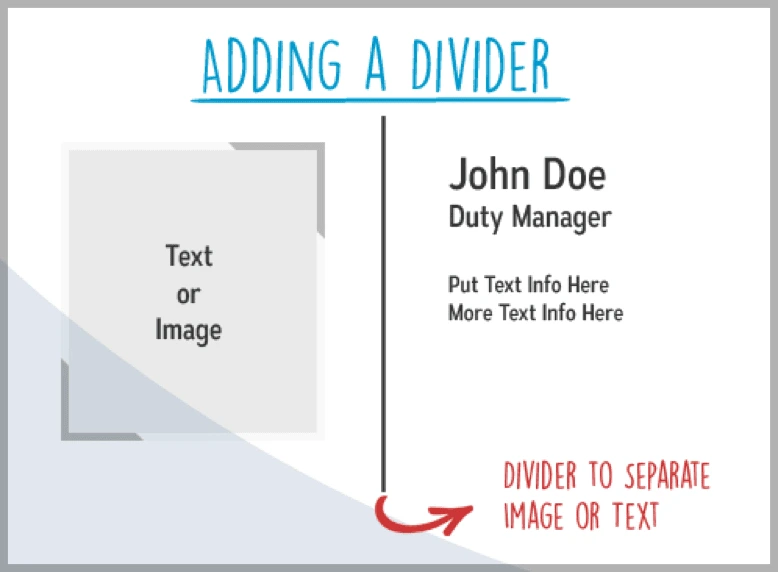
2. Don’t clutter with too much information
There is no point in using an email signature to share your autobiography. If you overstuff your signature with truckloads of links and information, it will be a turn-off for your potential clients. Plus, the chances of anyone opening the never-ending list of URLs are nil.
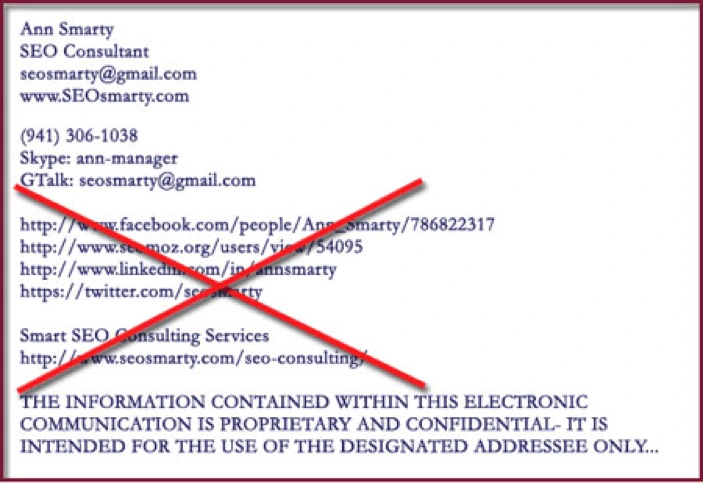
3. Do include blog & social media buttons
Digital marketing is all about making your presence felt on the web, and social media has leveled the playing ground for everyone. If you and your brand have no presence on social media, people are less likely to trust you. That’s modern psychology.
Adding Twitter, Facebook & LinkedIn to your signature will help you generate more traffic, and most importantly, your brand will get noticed.
Including your blogs, podcasts, and webinars in your signature is another clever marketing move. If you keep adding fresh content to your blog and hyperlink it in your emails, the recipients will get easy access to new content and will keep coming back for more.
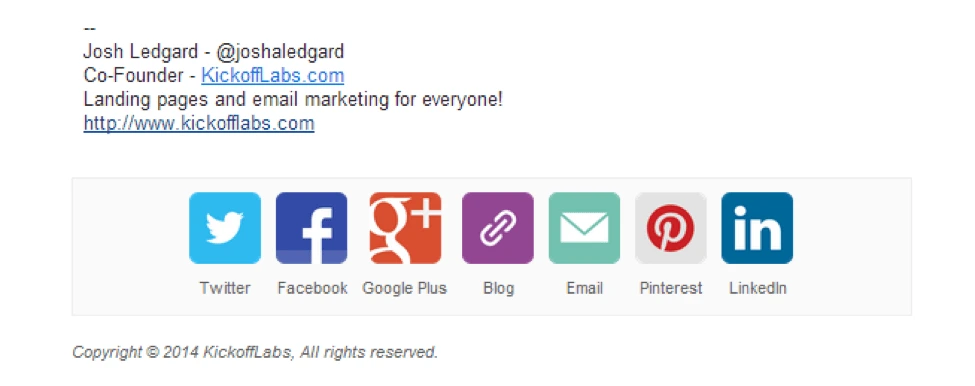
4. Don’t use multiple fonts & colors
Minimalism is in right now. Treat your email signature like a signature, not a medium to show off your graphic design skills.
To avoid making the design overly complicated, limit the number of colors and use just one type of font.
A pro tip is to take inspiration from the colors in your logo. This will help your audience recognize your brand more easily, as we know consistency is key.
Using the same font in both the email and the signature gives it a nice touch of consistency. Choose a font face and size that’s easy to read (e.g. Arial, Calibri, Tahoma, Verdana, Gill Sans, and a few others).
Using different fonts to highlight different texts makes your email signature look like an amateur school project. If you want to get a flexible typeface that can be customized according to your liking, the internet has a plethora of options for you.
5. Don’t use personal quotes
If you’re promoting a professional brand, you must leave the right impression on email recipients. The best way to do this is to only include information related to the brand. Using personal quotes, unless you are a well-recognized celebrity, would appear over-the-top and tacky.
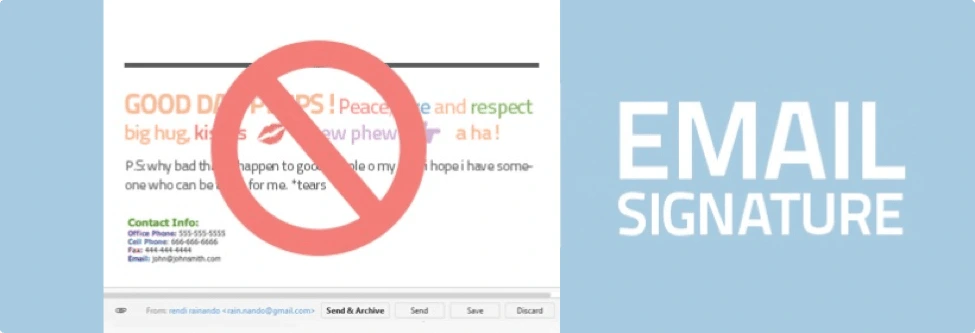
6. Don’t add long disclaimers
Including a long disclaimer in your email signature is a common mistake. Now, you might argue that it’s better to be safe than sorry. Well, I’m afraid I’ll have to pop that bubble. No legal advisor would ever tell you that email disclaimers hold any weight. Its function is strictly limited to annoying people.
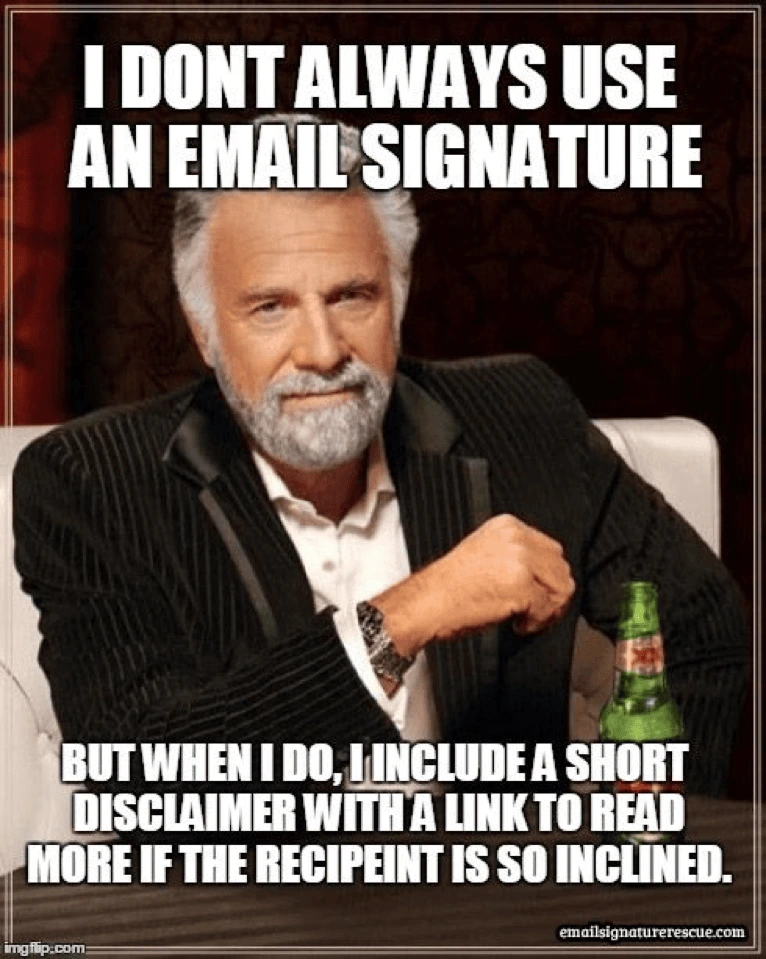
7. Do use a professional headshot
Using a headshot instead of a selfie is another tip for leaving a lasting impact. Try to look professional in the photo: dress formally, keep your hair well-groomed, look directly at the camera, and pose against a neutral background.
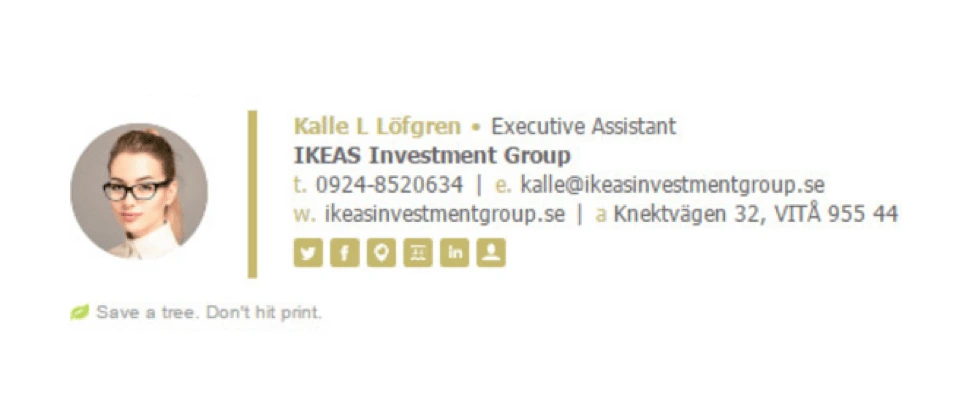
With these tips, you should feel prepared to create a strong email signature that communicates your brand as well as your own professionalism. Update your email signature and start leaving a better impression today.
It’s been more than 10 years since eBooks became a bread-and-butter strategy for generating leads. So why isn’t every business making eBooks today? I’d wager that it’s because they don’t know how easy they are to make.
If you haven’t made a branded eBook before or in a long time, I wanted to share 9 reasons why you should seriously consider creating more eBooks for your business.
But first, let’s get some context.
In the marketing sense, eBooks (or electronic books) are informative, text-based documents presented in a digital format. They most often take the form of a PDF with 10 to 20 pages and resemble highly detailed blog posts.
EBooks burst onto the marketing scene in the early 2000s. Unlike major publishers who converted traditional books into digital formats to increase book sales, marketers had the idea to offer free eBooks in exchange for contact information. A new lead-gen tactic was born.
The secret sauce behind eBooks has everything to do with the marketer offering something of true value to the customer before the sales pitch or call-to-action. It’s like Costco’s buffet of free samples, or a 30-day free trial of Netflix.
In short, consumers crave value. If you want their business and their loyalty, you have to prove your value before they buy. So the question is, out of the panoply of digital marketing tactics, why should you invest your time and resources into eBooks?
Without further ado, here are 9 reasons why you should create more eBooks for your business.
1. Expand your upper-funnel with high-quality leads
EBooks are perfect for increasing the volume and quality of leads. Why? People are more willing to give up their contact info when they get something valuable in return. And if you’ve written it wisely, your eBook will also teach them how your product or service solves their pain point.
2. Increase your credibility
Consumers are constantly comparing you to the competition. Just like a best-selling author, multiple eBooks make you look like the thought leader in your field. And, as you write more eBooks, you’ll be forced to research and think critically, making you even more of an expert.
3. Return on your investment
In relation to the value you get out of them, eBooks are very easy to make—especially if you start with an eBook template. And once they are on your website, they can generate leads forever. Unlike other forms of content marketing like social media and most blog posts, eBooks retain their value long after they’re published.
4. If you have a blog, the hardest part is already over
Figuring out a subject for an eBook can be frustrating, but there’s an easy trick to it. Start with your most popular blog post, then dive deeper and add more detail to it. Or, consolidate a handful of similar blog posts into a comprehensive guide. There are lots of ways to repurpose and update your content for an eBook-reading audience.
5. Give your branding a boost
Most people won’t hesitate to read a 10-page eBook if it’s on a topic they already care about. This interest represents a perfect opportunity for you to give them a 5-minute sermon on your brand doctrine. This might not lead to a purchase straight away, but it plants an acorn of awareness that you can nurture with future marketing efforts.
6. Stand out from the crowd
If you’re a small or medium-sized business, your competitors are probably not writing eBooks, which means you can tap into that audience with first-mover advantages. It’s an open door leading to more market share. Beat them to it.
7. Engage your target audience
You already have their email. An eBook offers the perfect opportunity to start a conversation and get feedback. For example, you could create a survey and write an eBook about your discoveries and insights from the results. You could also interview current customers and quote them in the eBook.
8. Easily measure success
When each eBook is optimized with call-to-action links and has its own landing page, it’s easy to measure the impact on your business. Since content marketing ROI can often be hard to pin down, this can provide a valuable metric of success.
9. Making an eBook is easier than it sounds
If you have a blog and a good design tool, you are well on your way to making an eBook. Since people have short attention spans, err on the side of less text per page and use lots of great imagery to convey your message. Unsplash is a great place to find free images to fill out your pages.
Now that you know why it’s important to create more eBooks, it’s time to get started. Dive into the template selection in Lucidpress to get a head-start on your next lead-generating masterpiece.
Try Lucidpress today to create professional, compelling eBooks for your brand—no expert knowledge required.
New to content marketing? Start off on the right foot with Lucidpress.
Want to super-charge your brand visibility? The best way is through great content.
Now, hear me out. I know you’ve probably heard the old phrase, “Content is king.” It’s a hackneyed aphorism, but it does give us a reason to chat about how brands use content to get ahead—and how you can follow those same practices to earn more visibility for your brand.
How brands use content to get ahead
- Content marketing: Content marketing is creating content specific to the industry you’re in, without directly promoting your own brand. So if you’re a store selling wooden floors, for instance, you could use your expertise to write and publish articles like “7 creative examples of parquet floors.”
* Thought leadership: Also a form of content marketing, thought leadership goes the extra mile. It aims to take a brand representative and position them as an expert and visionary—someone who shapes the industry and whose words are important. Think of thought leadership as a cross between content marketing and public relations.
* Everything else: From press kits and ads (both traditional & digital) to pamphlets, hoardings, brochures, newsletters and email marketing—content is literally in everything.
The owned, earned & paid tripod
Another way of looking at content is through the trifecta of owned, earned and paid media. In a nutshell, owned media is what you put up on your own digital property or website. This is the first destination for the articles & feature content you generate.
Earned media is what happens when people like what you share, then re-share and re-blog it. Think of it as online word of mouth. Remember all those kitten videos that went viral? That’s earned media.
Paid media is fairly straightforward. It’s when you buy ads or pay to promote content. Google Banner Ads are an example. Most social platforms—like Facebook, Twitter & LinkedIn—have tools where you can pay to promote your content and run ads.
Any cohesive content strategy usually has a mix of all three.
3 super-charging content tips
Now that we’ve described the playing field, let’s delve into a couple of playbook ideas on how to use content to boost brand equity.
1. Decide on a strategy
A single piece of content can’t be all things to all people. Decide whether you’re doing content marketing, authoring a thought leadership piece, or writing a press release for distribution. All these pieces of content have their own styles and best practices—and their own goals and metrics for success.
You also have to decide which types of content you’ll be creating for your campaign. There are many possibilities, and you can repurpose ideas across different content types.
2. Have a distribution plan
Content that just sits there in your owned media isn’t much use. It doesn’t boost your search engine rankings, it doesn’t attract more eyeballs, and it doesn’t increase sales. The trick is to turn that static block of words into a flowing river of shares and likes.
Most marketers have a handy funnel that they push their content through. You can start by posting on your own website. Then, the next step is to share on your social pages. Here, you might decide to give it a boost by paying for extra promotion. A day or so later, start submitting to content aggregators like StumbleUpon. Eventually, re-blog on social blogging sites such as Medium.
By following a planned distribution strategy, you’ll have a far better chance of turning your words into traction-grabbing content.
3. Figure out your audience
So you’ve got your strategy in place, and you know whether content marketing or thought leadership, or both, is the way forward. The next step is to figure out the audience you want to tap, and what they might be interested in. If your audience is composed of silver-haired retirees dreaming of Caribbean cruises, chances are they won’t read a blog about buying their first home. So, pick topics that are relevant, timely and valuable for your audience.
Use these techniques as you build your next content marketing plan, and you’ll have a far better chance of resonating with your audience and reaching your content goals. Make sure that everyone who creates content for your brand understands these concepts. Finally, ensure brand consistency with a tool like Lucidpress, which uses smart lockable templates to keep everyone on-brand.
Ready to get started? See how Lucidpress can streamline your content marketing efforts today.
For savvy salespeople, it’s important to know how to craft convincing language. Words are powerful tools. They can evoke strong emotions and spur people towards taking specific actions. If you want to craft compelling messages that influence people to purchase, consider using these tried-and-true trigger words.
Related: 7 do’s and don’ts for your email signature
1. Free
Even with so many advertisements that use the word ‘free’ for things that actually come with a price, people are still attracted to this word because it taps into our overwhelming hunger for more. We envision all the new experiences we can have with the free product, and it starts to feel like a need rather than a desire. The word ‘free’ immediately ignites our imagination with new possibilities.
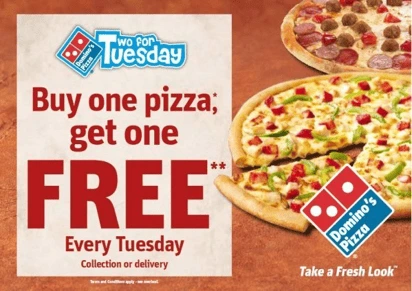
2. Easy
This one is self-explanatory. ‘Easy’ implies convenience, comfort and quickness—although it doesn’t actually guarantee that the service will be any of those things. Most of the time, marketers use this word to describe a simple, uncomplicated process, but the unspoken implications of this word help to sell it even more.

3. Now
The word ‘now’ is often used in a phrase to indicate time, which piques customer interest because people naturally like instant gratification. Think of all the ‘now’ phrases that you’ve seen in calls-to-action and promotions alike: Save Now, 30% off Now, Get Samples Now, etc. Simply indicating that the reward will be immediate makes the offer more enticing.

4. Save
Who doesn’t like saving? The word ‘save’ rings a bell and reminds us of our truest desire: to preserve and expand our resources. We’ve become so invested in this principle that promotions actually convince us to spend before we ‘save.’ It seems counterintuitive, but it still works because we believe that we can save money (or time, or hassle) by spending it first.
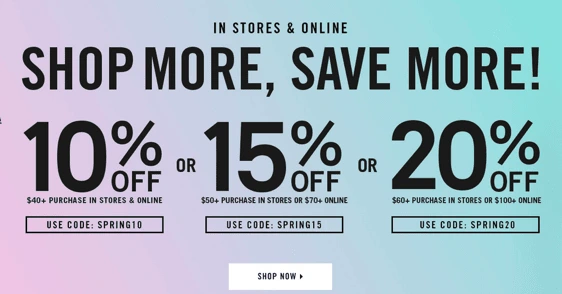
5. Package deal
As we know from the telecom and cable industries, bundling products together is a wise way to drive more sales. Giving your customers the opportunity to purchase package deals speaks to their desire to get more with less money. It’s the ‘bang for your buck’ mentality that drives this marketing phrase forward.
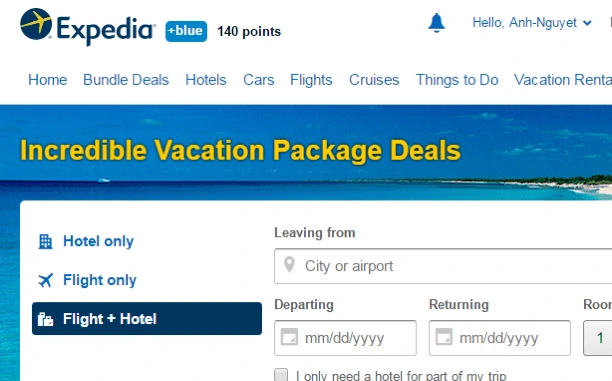
6. Premium
Labeling a product or service as premium might intimidate those who aren’t looking to spend more than they need to, but ‘premium’ works especially well with offers that indicate limited availability and discounted prices, such as Premium Package or Premium Deal. When paired with the right offer, ‘premium’ creates a sense of scarcity that encourages action.

7. You
Addressing a customer directly singles them out from the crowd and creates a sense of conviction. One of the most popular advertisements that exemplifies this word was James Montgomery Flagg’s “I want YOU” poster for WWI recruitment. The Uncle Sam poster is possibly the most famous poster ever due to its iconic illustration and commanding punchline: “I want YOU for U.S. Army.” Using the word ‘you’ is much more persuasive than addressing the general public. Imagine if the poster simply illustrated a cross-armed Uncle Sam with the words, “I want everyone in the U.S. Army.” Since no one is being singled out, there would be much less conviction and the message wouldn’t have the same profound impact.

8. No obligation
Have you ever wondered why service providers always leverage the term “No contracts”? The thought of being forced into a commitment understandably repels customers. No one wants to be trapped by a contract. Therefore, to reduce friction, it’s important to state that a service or product does not come with any strings attached. Give customers the reassurance that they aren’t bound to any hidden obligations, so they can explore your brand without fear.
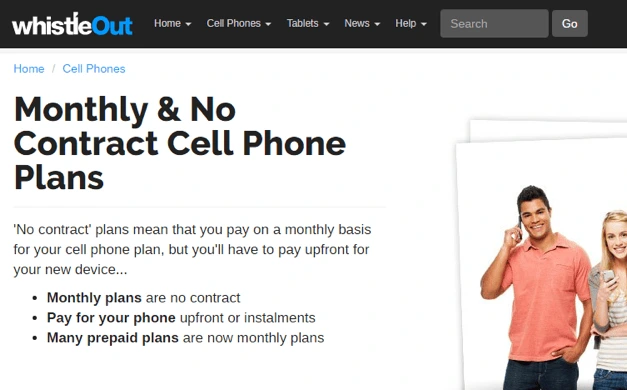
9. New
New Arrivals and New Markdowns sound tempting to the itchy buyer because it taps into the fear of missing out. They want to be the first one in, so they get to see what’s new before anyone else does. They get to be ‘in the know’ and have access to the best items or deals.
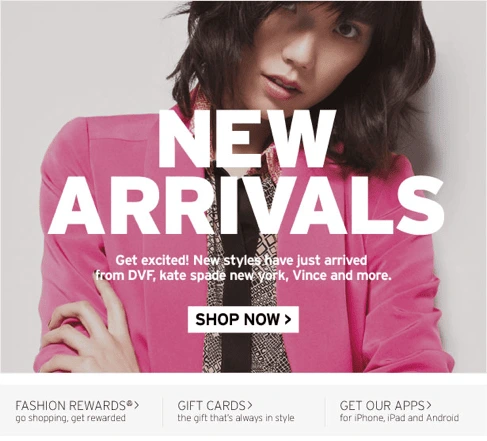
10. Limited
Similar to the word ‘premium,’ the word ‘limited’ creates a sense of scarcity that motivates consumers to make a purchase because the items won’t be there for long. The word ‘limited’ might even be better than ‘premium’ in some instances, because it doesn’t come with the implication that the limited item will be higher in price.
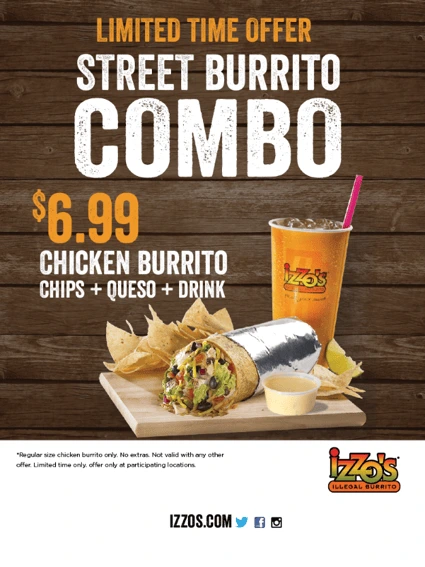
11. Ultimate
‘Ultimate’ often functions as a synonym of ‘best.’ It can also be used to indicate a comprehensive or all-encompassing experience. When a promotion contains the word ‘ultimate,’ there is an unspoken understanding that whatever is on offer must be of great quality. It might not be the first, but it’s the ultimate.
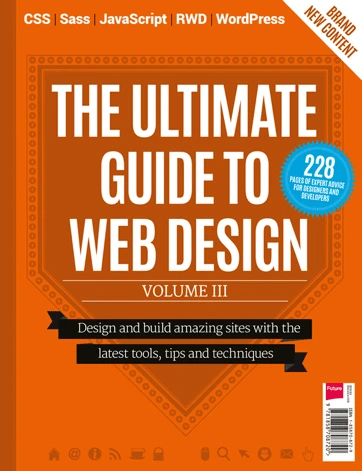
12. Professional
There’s something about the word ‘professional’ that gives an item or service more authority and credibility. It often implies a higher standard. Without being fully aware of it, when we see this word, it brings into our mind what professionalism should look like—and we apply that to the promoted product or service.
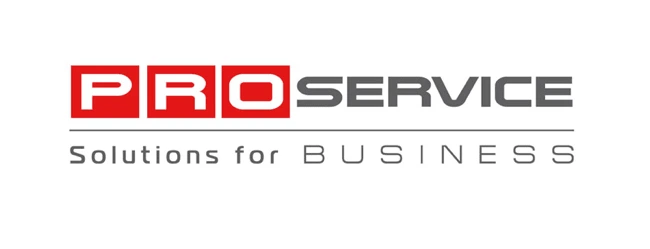
13. Competitive
Labeling a product or service as competitive helps the customer envision how multiple products could be compared to one another—and how the one that’s most ‘competitive’ is the winner. Everyone wants to be on the winning team, and competition drives us to constantly improve. When you say your brand is competitive, you’re making a promise to the customer that you’ll always strive to be the best.

14. Sale
The word ‘sale’ ties back into the idea of saving, because it implies that the consumer can save money by purchasing the sale items now. Sales have worked wonders since they were invented, because they wrap together so many concepts: discounts, limited time, availability. Just be careful not to run ‘sales’ all the time, because customers will get used to it and always expect your prices to be low. Sales should be events that your customers look forward to.
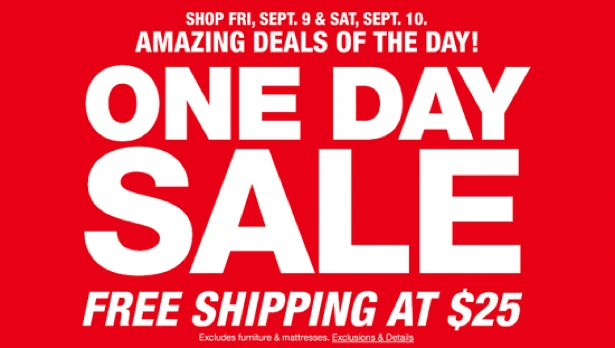
15. Results
‘Results’ plays on our desire for instant gratification. Seeing that the product or service promises fast results or even guaranteed results, we sometimes can’t help but jump at the opportunity. It also helps to have proof of what a product or service can do for us, so we can better envision how it will improve our lives.

You may have seen all of these words used over and over again, yet they still retain their power. This is because our brains have learned to respond to these trigger words through social conditioning. We’re inclined to want more and higher quality at little to no cost, even if it seems unrealistic.
These trigger words might work in drawing customers in, but they won’t contribute to your brand’s longevity if they are only empty promises. To make the most of these words, use them sparingly and only when you can deliver exactly what you promise. That way, you’ll earn customer loyalty and a better reputation.
Choosing the right newsletter design isn’t easy. There’s a seemingly infinite number of designs out there, each with their own strengths and weaknesses. (And in many cases, more weaknesses than strengths.) Finding the right colors, shapes, text formats and image placements can take up a huge amount of time.
But with these professionally designed newsletter templates, all you need to worry about is customizing. The designs are already in place, suggested color palettes chosen, and even some images added (though adding your own is recommended).
Related: How to make a newsletter in 9 steps
Newsletter design tips
There’s a few principles to keep in mind as you concoct your newsletter, even if you start with a pre-existing template. Though, in the end, you’ll have a fantastic-looking newsletter in less time than it will take to find a template from Microsoft Word or Publisher. Your readers will thank you. Also, it’s worth noting that we’ve organized this blog post based on newsletter type — i.e., newsletters for schools, businesses, holidays, digital and more.
Consider the layout type
As in — do you want your newsletter to be: fixed, fluid, responsive or adaptive? To avoid overwhelming you with information (and empowering you to learn on your own terms), we recommend checking out UX Alpaca’s article on layout types.
Grab attention with a header
Let your header do the talking for you. Your header should do one of two things (or both): First, it should draw the reader in. Copy can be witty and sharp, or directly address a pain point you know they have. Either way, you need to grab their attention and endeavor them to keep reading. Without telling them to keep reading. 2.) You need to say something. There’s an approach to copywriting that can be best summarized as “Say it straight, then say it great.” But whatever you do, it has to say something of substance.
Let your body copy do the ‘splainin
Remember: Your header doesn’t have to carry the weight of your newsletter — body copy can come in with the assist. The body copy is where important information should live. How you choose to present that is up to you, but keep in mind that big walls of words can be overwhelming for readers, so we recommend keeping the information as scannable as possible.
Add relevant links where it’s appropriate
The devil is in the details, right? Be sure to include links to webinars, listings, school flyers and more. If you want people to show up, you gotta give them a reason to show up! Or whatever.
Newsletters for schools
Skyline High classroom newsletter template
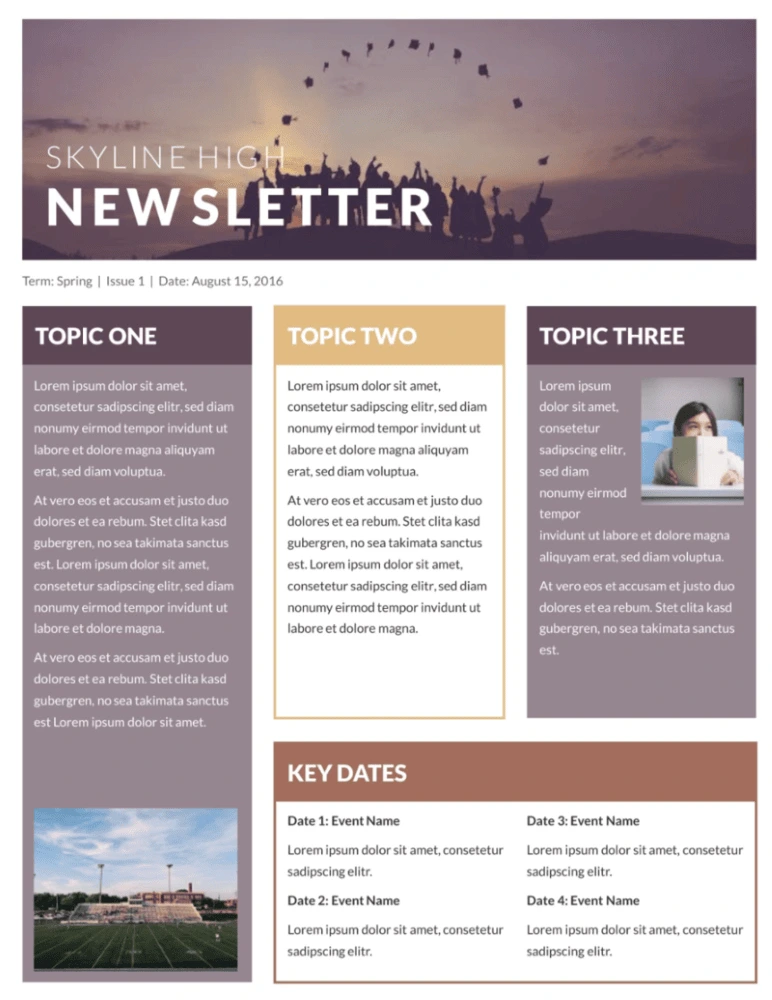
This classroom newsletter template stands out from the rest with muted colors, an inspiring header image, and lots of room to share your message. Whether you’re simply giving updates on what’s happening or sharing important news about conferences, exams or standardized testing, your message will come across loud and clear.
Blossoms school newsletter template

Flowers are perfect for school newsletters: they imply growth, potential, purpose, and they lend a positive, happy feeling to everything. Just add your school’s logo, the content of your newsletter and a few custom images, and you have a newsletter that parents will want to read.
Newsletters for business
City events newsletter template
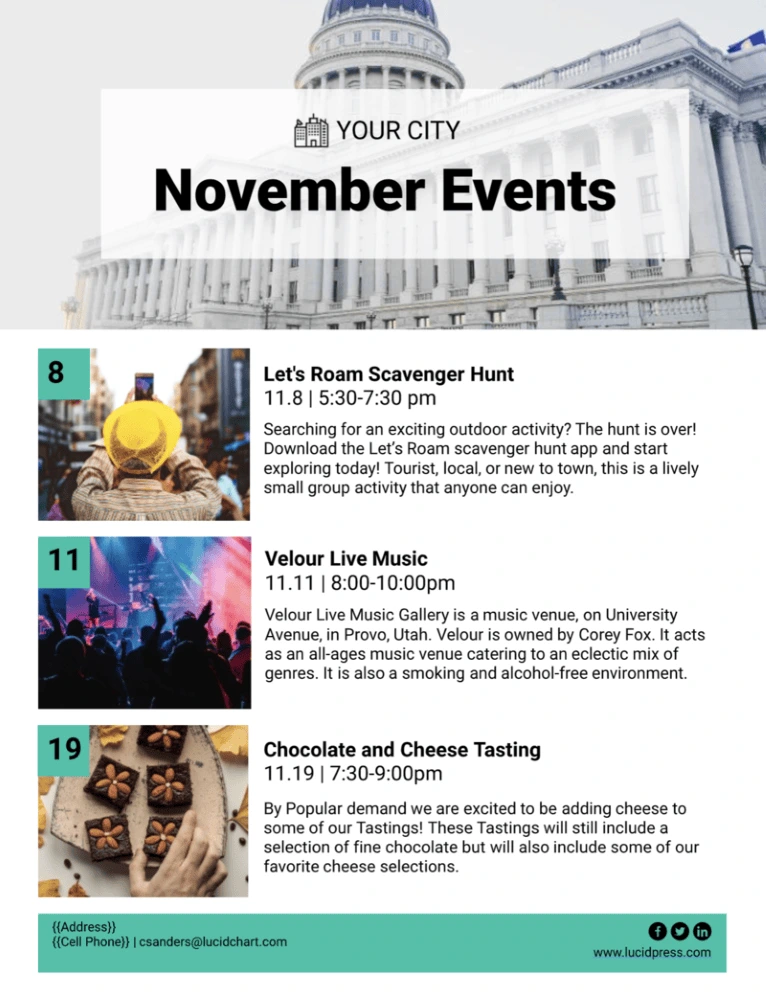
Keep your community apprised of upcoming events — both virtual or in-person — with the city events newsletter template. Insert photos from previous events (as well as your own city hall building or town committee) — or use stock images if you need to — and leverage the ample writing space to communicate with others about changes in local regulations, upcoming town halls and more.
Polaroid real estate newsletter template

Real estate is all about pictures, and this newsletter template captures that feeling perfectly. The iconic rectangular format gives you tons of room to show off your best properties, and choosing a scrollable digital format allows for all the text you need to describe it. Optional blocks of color help your newsletter stand out from the rest, too.
Merge financial business newsletter template

The time of boring business newsletters is over. Modern companies need to grab readers’ attention with bold colors, interesting shapes and arresting images. This financial business newsletter design has all of those ingredients in spades. The newspaper-style columns let you share different stories or ideas, and the header is great for recurring newsletters with featured authors.
Black Widow company newsletter template
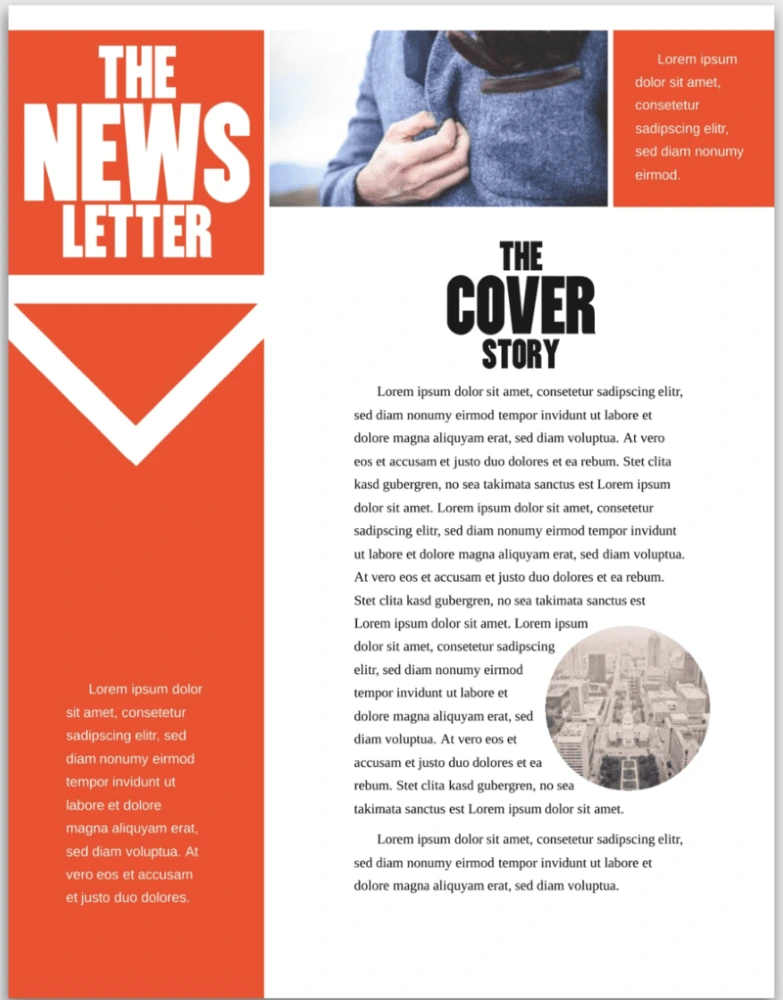
Company newsletters are often bright and airy or monochromatic and, well… boring. But this template finds a balance with bold red accents, striking blocks of black, and plenty of whitespace to make reading easy. Add images to spice things up a bit, and you have yourself a professional — but unique — newsletter template.
Citrus Splash employee newsletter template
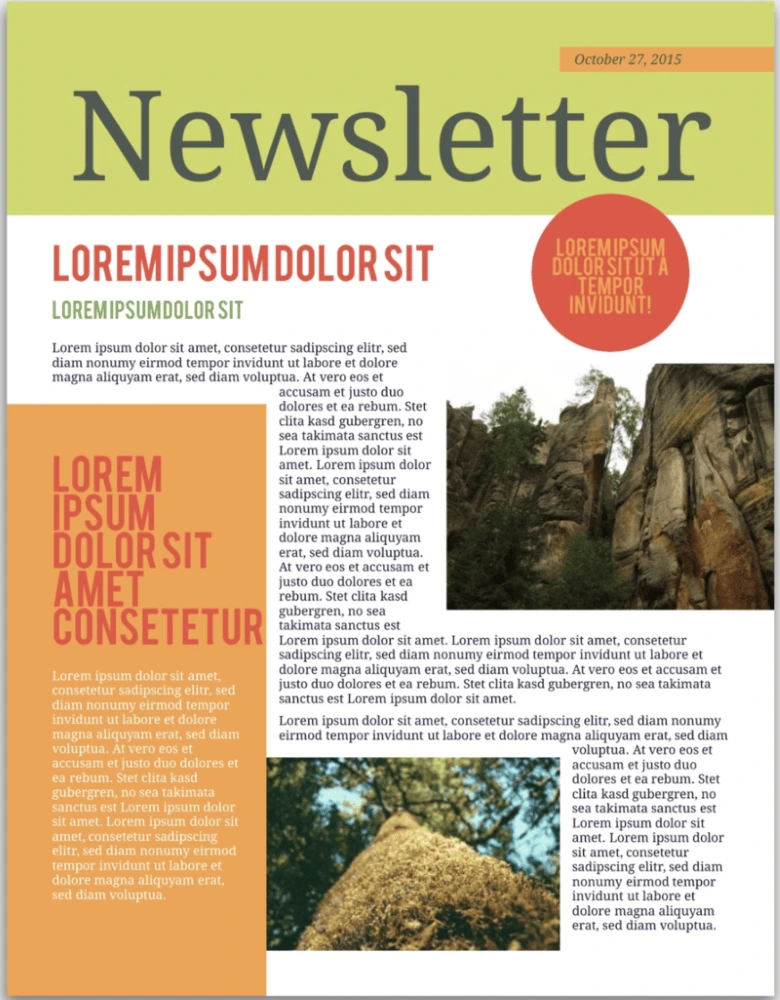
Employee newsletters have a reputation for being rather boring—and that starts with the template. Don’t settle for bland colors and cheesy iconography! This template is full of bright colors that immediately set a positive tone for your newsletter. Whether you’re in a tropical climate or a temperate one, your employees’ days will be brightened by it.
Angles company newsletter template
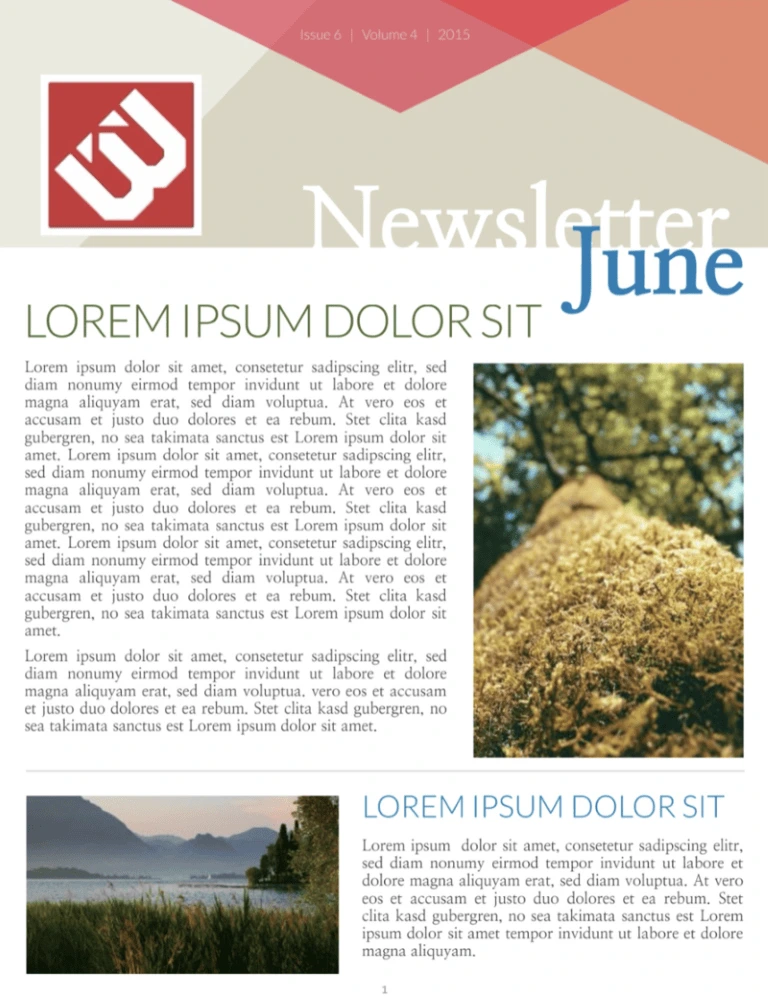
There’s something dynamic about angles in bold colors—and this newsletter template takes full advantage. A combination of bright and calm tones adds even more energy to the template. If your company is pushing forward, the vitality in this template will fit it perfectly. Plenty of room for images and multiple text sections make it as useful as it is engaging.
Bold business newsletter template
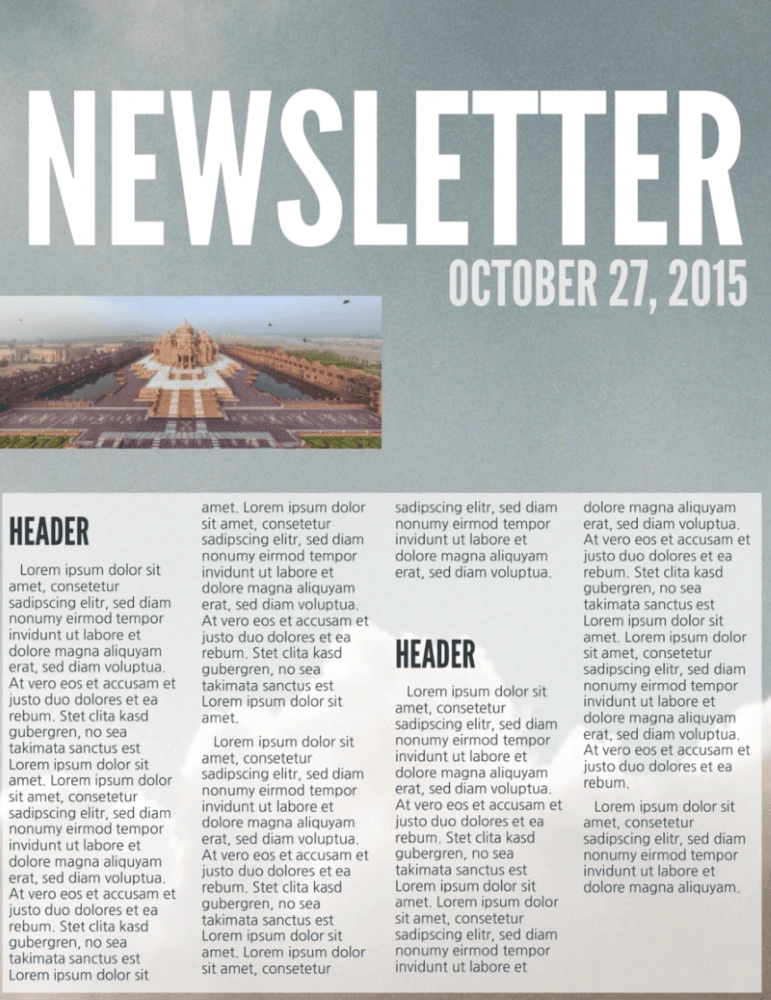
Business newsletters are so often really boring, but with big attention-grabbing text, this template will help you grab your readers’ attention. It’s not all flash, though—there’s plenty of room for the headlines and text you need to share important information with customers, colleagues, shareholders, and anyone else interested in your business.
Corporate business newsletter template
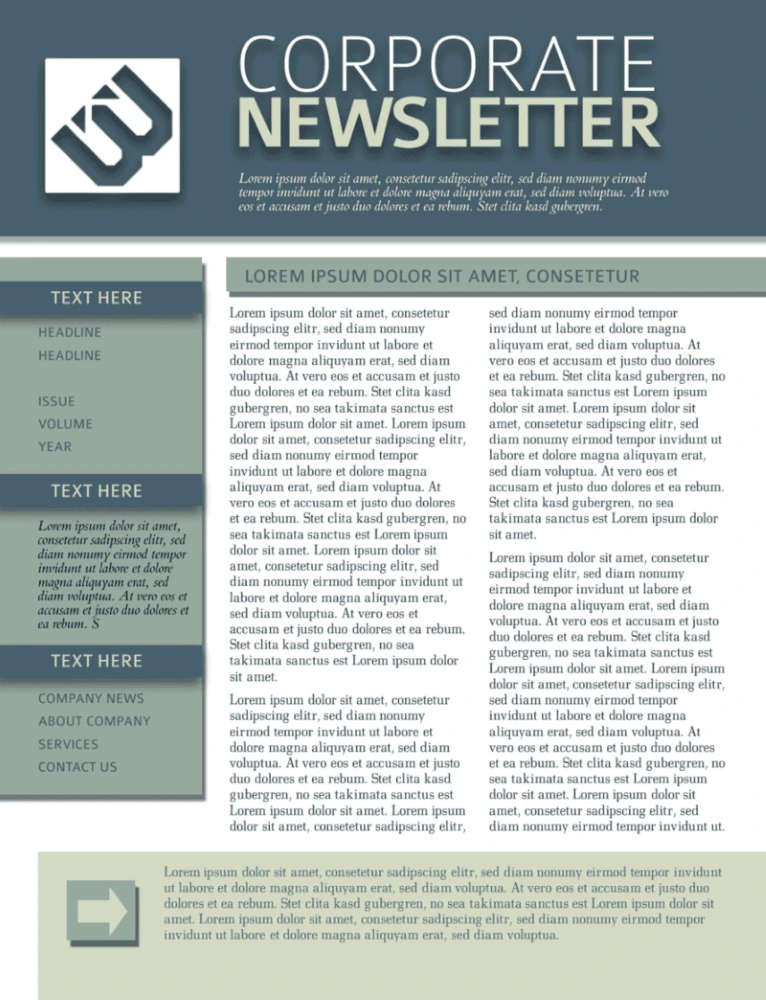
We know that not every company wants lots of bright colors in their newsletter template. But that doesn’t mean it has to be boring. This template uses a cool, muted palette to maintain a professional look. The professional design, room for images, and well-laid-out pages ensure that your newsletter shares information effectively while maintaining the tone you’re looking for.
Holiday newsletters
Holiday Christmas newsletter template
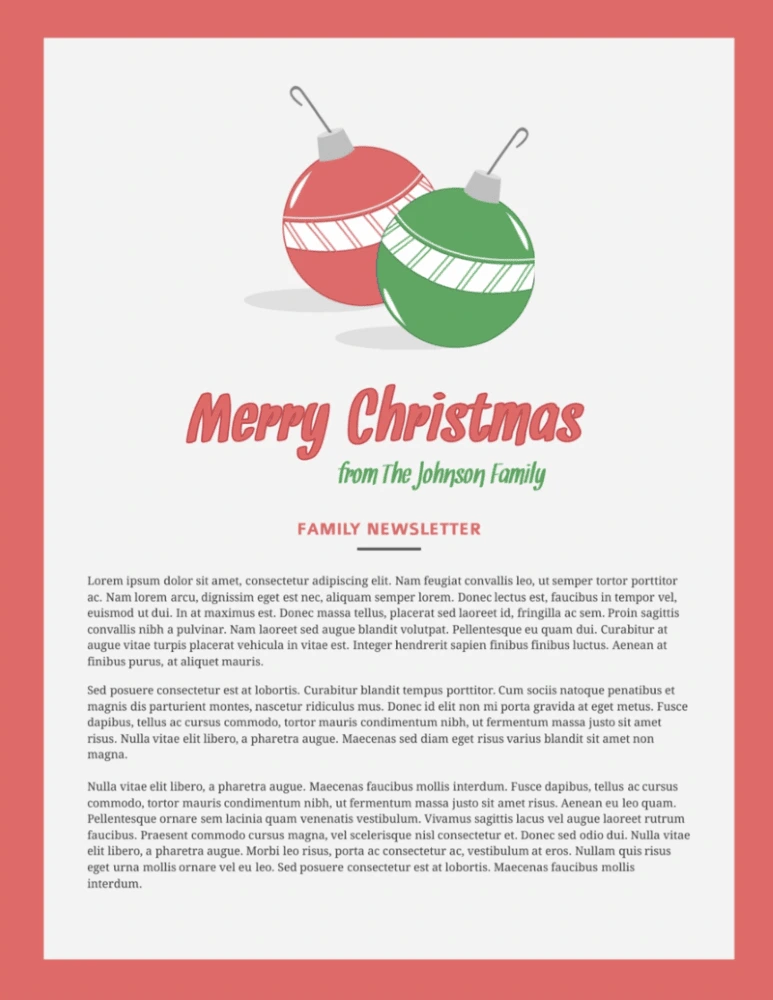
There are tons of Christmas newsletter designs out there, but most of them look the same: full of too many snowflakes, baubles and presents. They’re distracting and, frankly, a bit tacky. This Christmas newsletter keeps things simple with seasonal colors, clean layouts, and just a few ornaments.
Photo Christmas newsletter template

Spread some holiday cheer with the photo Christmas newsletter template. Just pop any of the year’s recent photo sessions (both impromptu and professional) into the layout, and be prepared to warm friends’ and families’ hearts from afar.
Digital and email newsletters
Restaurant email newsletter template
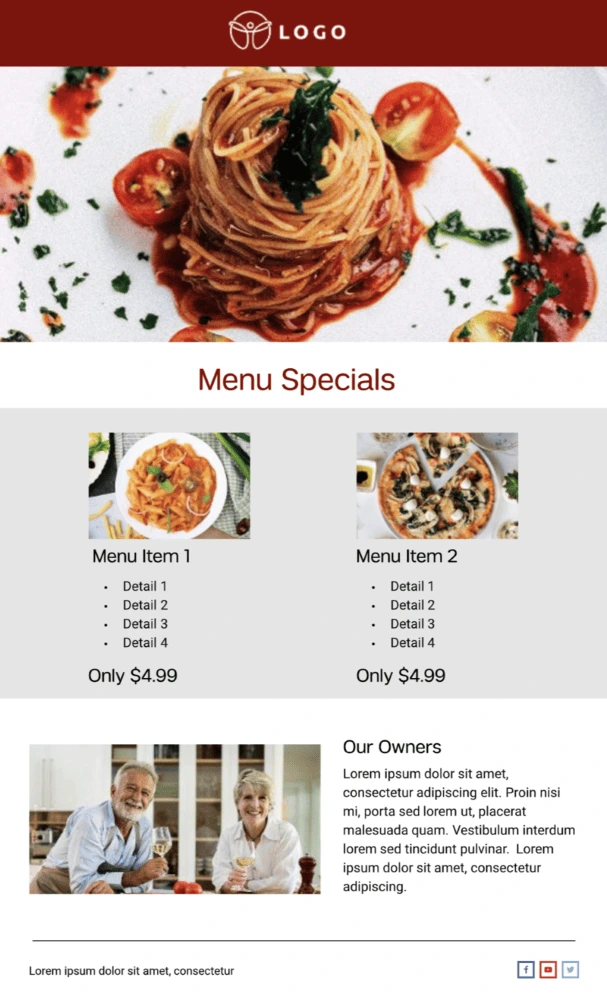
The restaurant email newsletter template is :chef’s kiss: — Highlight your restaurant and the staff that make everything possible with this easy-to-customize template. You can easily communicate any upcoming closures, events or changes in menu. Or you can simply give folks a mouth-watering reason to come back with a coupon or friendly reminder about your hours.
Conference email newsletter template
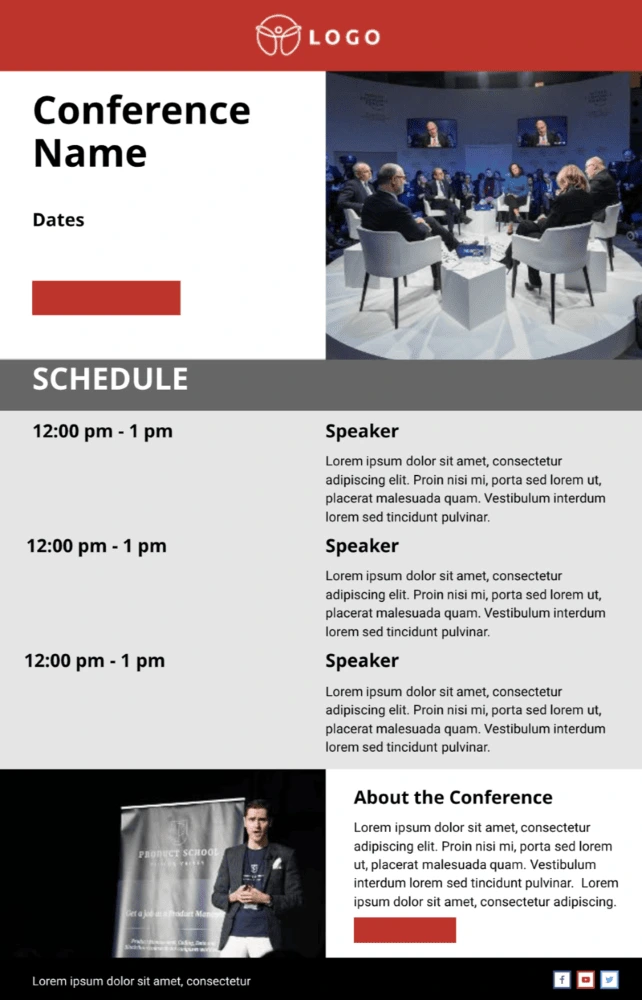
When it comes to attending conferences, attendees need you to get straight to the point — there’s no need for fancy, floral language or walls of text. Give the people what they need with the conference email newsletter template. The simplicity of this newsletter empowers you to cut to the chase, therefore keeping the agenda and end goals clear and concise.
Real estate email newsletter template
Need an easy way to keep clients, brokers and fellow agents up-to-date with the fast-moving market? Look no further than the real estate email newsletter template. Customize the images based on the MLS listing, along with any noteworthy callouts in the copy sections.
Data email newsletter template
Highlight important wins, transformations in ROI or dips in sales performance with the data email newsletter template. Whatever numerical information you need to present, this newsletter helps you compile the information in an orderly and easy-to-digest format. And if you need to send the newsletter out monthly, all you have to do is make a copy of the doc and you’re off to the races!
Business email newsletter template
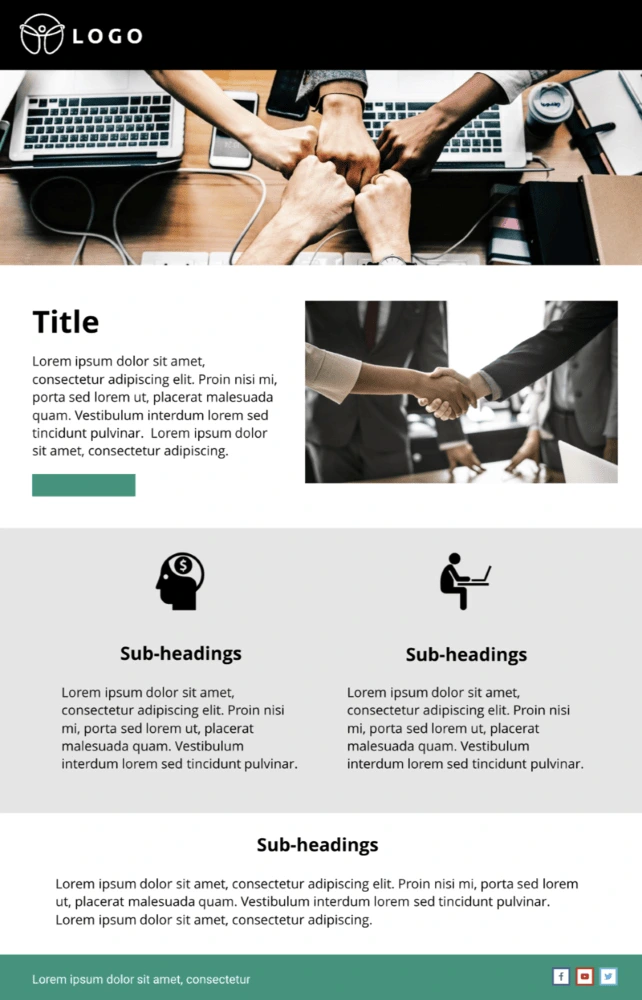
Regardless of what arena or industry you’re in, keep your business top of mind with the business email newsletter template. Whether you’re looking to periodically update board members, customers or even fellow colleagues, this easy-to-customize newsletter template.
Terra Cotta digital newsletter template
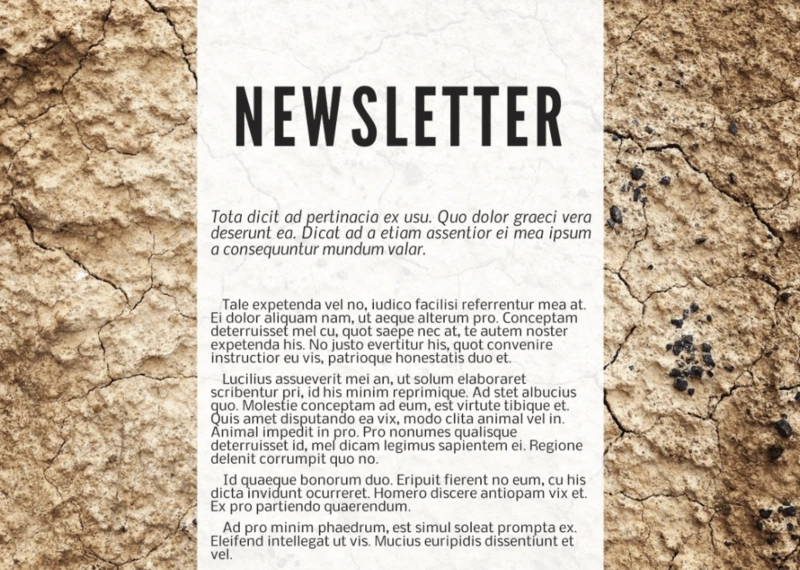
Digital newsletter designs don’t have the same requirements as print ones—they can be more image-based, use different colors, even include scrolling effects. This template allows for a wide variety of designs, all of which capitalize on ample space for powerful images. Combined with clear text and the ability to add your own images and videos, you can share any information you want in a clear, visually appealing package.
Orbital digital newsletter template

This template is all about creating the right feel with a big, powerful image. Whether you use one of our images or upload your own, you’ll be setting the tone for your entire newsletter. It could be inspirational, topical, or just an image that speaks to you. And because this digital template has room for scrolling text, you can include as much information as you want. That makes it one of the most flexible and versatile templates out there.
Textual e-newsletter template
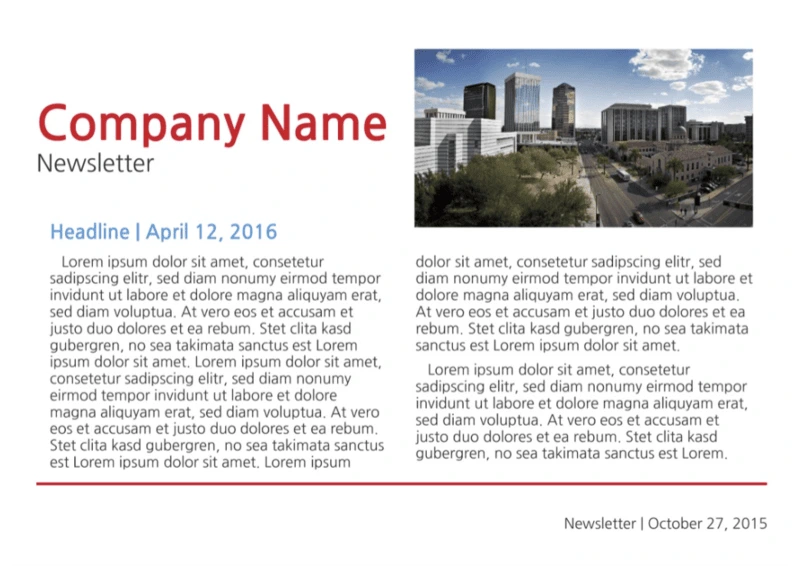
It’s easy to get carried away with images, photos, links, and other distracting things when you’re building an e-newsletter. It’s important to remember that your main goal is to share information in an easy-to-read manner. The clear fonts and white background of this template let you do that without over-complicating things. Sometimes simple really is better.
Be a memorable point of contact
A newsletter is an important point of contact. Whether you’re designing one for a school, a business, another type of organization, or just for your family and friends, you want it to reflect your message. These designs give you a wide variety of looks to do just that
So, what are you waiting for? Find a template that fits the feeling you’re going for, customize it in a few minutes with your own photos and colors, and get your message out there in style.
Ready to wow your audience with beautifully designed newsletters? Lucidpress will help you send the right message.
Creating an ebook—especially for the purpose of generating leads—can be a critical marketing technique for your business. If you’re not a designer, this can be a truly daunting task. After all, not only do you have to create the content, you have to design the layout, choose fonts & color schemes, and tweak orientation.
Fortunately, it’s possible to create a professional and effective ebook, even without expert design skills. This can be done with the help of free ebook templates. Not sure where to begin your search? We’ve compiled five of our finest ebook templates which you can explore below.
Would you rather go straight to the source? Head over to our gallery of free ebook templates to see all your options.
1. Marketeer Business ebook
If you’d like to take a traditional approach, this business ebook template geared toward marketing is your best bet. With a traditional vertical design, and a 10-page pre-made layout, this template can be used to promote your products & services or engage your customers.
There’s no reason your business ebook needs to be boring. In fact, the inclusion of images on each page makes it easy to spice up the content. You can easily use stock images or upload your own. What more, you can test out different fonts & layouts in the easy-to-use Lucidpress editor.
Click on the image to see this template.
2. Boutique Lookbook
For creative businesses—including boutiques and salons—it’s important to bring a unique touch to each piece of content you create. This extends to ebooks, and it can be easily achieved with the Boutique Lookbook.
With a muted color scheme and full-feature image pages, you can use this template to create a lookbook, product catalog or seasonal spread. The vertical design makes it well-suited to any device: smartphones, tablets and e-readers. In addition, the bold black text against the light-colored background makes it easy to read.
Click on the image to see this template.
3. Colorblock Creative ebook
A grid-based layout is perfect for a variety of industries including architecture, photography and consulting. Even better, this modular layout means you can create a truly unique design. You don’t like how the blocks are laid out? No problem—with the Lucidpress editor, you can easily ‘snap’ each block into a new position.
Additionally, the use of elegant font styles, as well as a minimal color scheme, makes this ebook template easy on the eyes. The pops of blue color on each page also add a unique element without cluttering the layout.
Click on the image to see this template.
4. Lead Magnet ebook
Even Lucidpress (a company with its very own talented designers) uses templates to create quick & easy ebooks, one-pagers and more. In fact, this is the very template we use on much of our in-house content.
The gray & green color scheme can be changed to fit any brand. However, be sure to pick contrasting colors to ensure your content is legible to readers. You can even personalize each page; all contain a header & footer with a placeholder for company name, website and phone number.
Click on the image to see this template.
5. Global Photography ebook
A horizontally designed template can be love-it or hate-it for many readers. However, this particular template is great for immersive photography or other media-heavy topics.
You can create beautiful collages and even split your ebook into different sections. With 20 pre-made pages, you have plenty of space to feature your content. And, with the use of white space, you won’t have to worry about cluttering the pages or overstimulating your readers.
Click on the image to see this template.
Using ebooks to promote your business and attract new leads can be incredibly effective. However, the quality of that ebook will play a large role. Fortunately, even non-professionals can create truly stunning designs & layouts.
With the help of Lucidpress’s design software, you can create beautiful templates that rival even InDesign and Photoshop creations. You can then publish or save your ebook as a webpage, PDF, JPG and more. If you’re in need of some more inspiration, be sure to check out more ebook templates & layouts here.
Ready to wow your marketing leads with beautifully designed ebooks? Lucidpress will help your brand send the right message.
Today’s marketers are living in a fascinating world. The landscape that encompasses our what, where, when, how and why sees drastic shifts from day to day. Since over 60% of marketers claim that generating quality traffic and leads is their top challenge, success means getting the right content in front of the right sets of eyes.
Related: 9 ways marketers & designers can collaborate better
Design thinking is a concept that’s been making waves in the marketing world. It refers to an iterative process that aims to intrinsically understand the user, challenge conventions, and redefine the very nature of certain problems to come up with alternative strategies and solutions. If your team is searching for innovative ideas, here are 3 ways to create a marketing culture around design thinking.
1. Build your team to match your vision
Marketing visions can vary quite a bit from brand to brand. Building a team that functions as a single unit can be a significant challenge, especially in a growing company. Marketing teams need to maintain a healthy dynamic where ideas and processes work together to achieve business goals.
Assembling a team with a unified vision all starts in the recruiting process. To create a culture around design thinking, you have to build a modern marketing team. This includes:
- Content creation – Writing blogs, creating videos, infographics, etc.
- Acquisition – Generating traffic, leads and front-end sales.
- Monetization – Turning leads into customers.
In order for these roles to work in harmony, all visions and values need to be aligned.
Fortunately, there are resources to make this task easier. As little as a decade ago, you could only learn so much about a new hire before bringing them onboard. Today, AI-driven tools like Harver automatically match applicant skillsets to job descriptions. You can even run a number of specialized tests for things like situational judgement, professional values, personality traits, and problem-solving capabilities.
Impactful design thinking is only possible when everyone is on the same page. Throughout the long process of building a marketing culture, this needs to be a priority.
2. Use data to think outside the box
Design thinking and “thinking outside the box” are practically synonymous. But, that phrase can mean a number of things. One of the first to come to mind is how controversial people can make bold, unorthodox statements and get nearly every major media outlet in the country into a state of uproar. While this approach can certainly get the masses talking, it’s probably not wise to bank on it.
For a marketing team to break the norm and boost engagement, they must first understand exactly what “the norm” is.
One of best ways to do this is by diving deep into the data they already have on their customers. They can mine this data for underlying insights in customer profiles, conversion patterns and inventory management. For example, an online retailer can use their point-of-sale data to target customers at every point of the sales funnel-be it awareness, interest or decision.
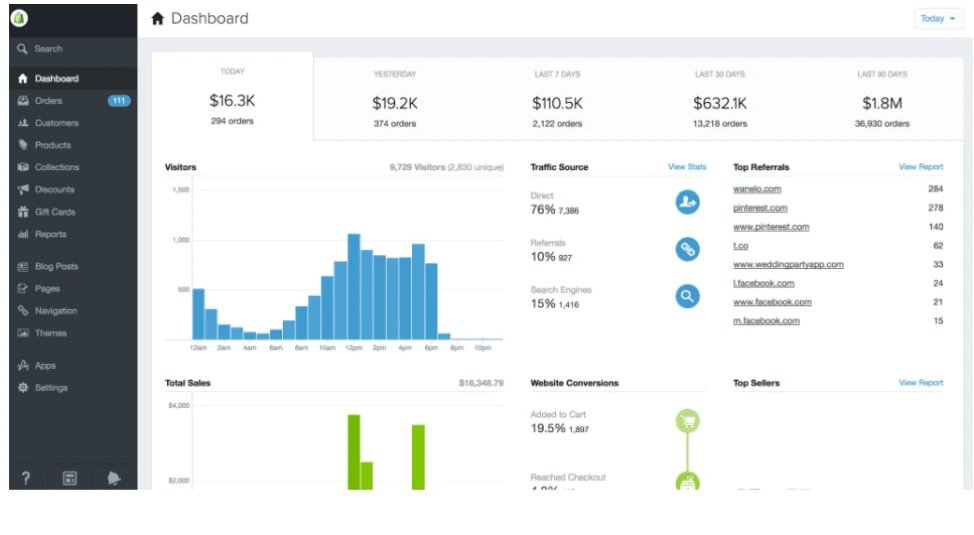
Using this data-backed information is the key to understanding pain points. You can’t find innovative solutions if you don’t understand the common snags in your systems, customer behavior and shopping trends.
Burberry, a luxury fashion brand, once found themselves stuck with a growth rate of merely 2%. With sales numbers not being anywhere close to what they needed to be, a monumental change was in order. After looking at their customer data, it became clear they were not making an impact on younger shoppers.
Knowing the younger generation’s love for social media, the marketing team did a complete overhaul of their strategy to shift the focus to more millennial-friendly messaging. This involved a strong deviation from their core heritage. The marketing team worked to create more personalized and relatable content by investing heavily in a strong social media presence.
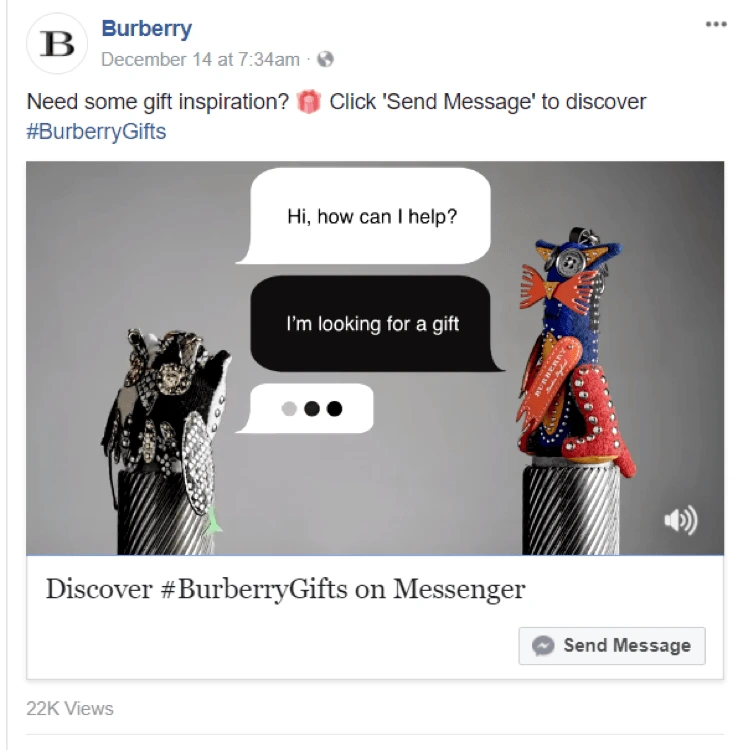
Source: Facebook
The result catapulted Burberry to being one of the most digitally innovative fashion brands around. The insights they used from their customer profiles were a driving force behind this change.
This just goes to show that design thinking in marketing is dependent on keeping the end user in the spotlight.
3. Accept that design thinking is not a linear process
The process of design thinking encompasses five key stages.
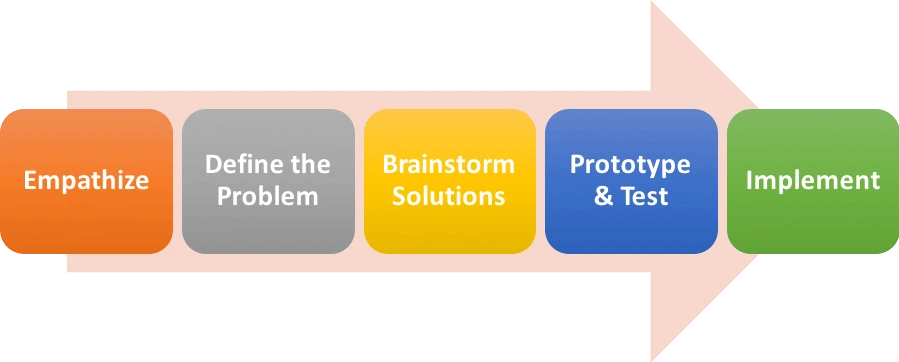
Although it may seem like this process naturally flows from one stage to the next, there’s never a one-size-fits-all formula. Certain stages might need to be conducted simultaneously in order to view the situation from all angles. In many cases, the prototype stage is simply a means to better define the problem.
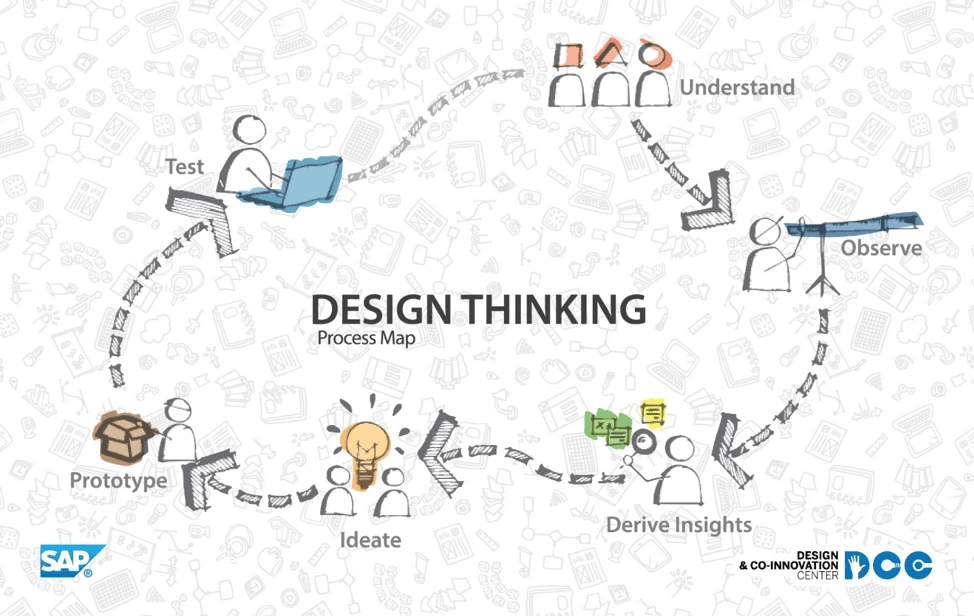
Source: SAP
It’s better to view the process as a loop to continuously inspire solutions that have never been tried before. In essence, it’s about understanding each element that factors into a problem. The objective is to gain an in-depth view of the user, how they function, and how your solution can meet their unmet needs.
For a marketing team to thrive under design thinking, they must come to terms with the fact that the path bridging problems to solutions is rarely a straight shot.
Key takeaway
In many ways, design thinking is the origin of innovation. Today’s overly crowded marketing landscape presents a dire need for brands to build their marketing cultures around these core characteristics. Ultimately, this how both companies and consumers grow.
2017 was the year of digital marketing. Brands of every size depended on digital to raise awareness and win over their customers. As the year ended, digital marketers turned toward the future to strategize new plans and techniques.
Related: How to boost your brand identity with influencer marketing
Digital marketing is big, volatile and constantly evolving. While some experts believe this will be the year of AR and IoT, others see the market’s future as more complex. Let’s look at the top 10 trends currently dominating digital marketing in 2018.
Top digital marketing trends in 2018
1. AI might be the performer of the year
Yes, it’s true that AI is being adopted in nearly every consumer-facing industry today. But have you considered how AI could help your business on the backend? You know about chatbots and Siri, but what about using AI for trend analysis and customer profiling? This year, AI will help brands dig into the data, then reach their target audiences with more precision and effectiveness.
2. 2018 is seeing more video ads
According to recent reports, video marketing is set to capture about 82% of the internet’s traffic by the end of 2019. You can expect to see more video ads on all web platforms, especially social media. What may change is the duration and content of the videos as brands compete to hold viewers’ attention.
3. IoT is being used like never before
2017 saw the emergence of numerous products and applications for IoT, and its scale continues to grow. Together, IoT and data are expected to revolutionize industries like healthcare, education and manufacturing. They’re not only improving the efficiency of these sectors-they’re changing the very way these businesses perform their work.
4. Mobile marketing won’t flinch
After several delays, Google is soon expected to release its mobile-first algorithm. What remains to be seen is how this mobile index will impact the search results. It’ll no longer be enough to have an SEO-optimized site—or even just a “mobile-friendly” site. Google will examine the mobile performance of your website (and all of your competitors’) and rank you accordingly. Regardless of the devices your customers use, mobile compatibility is going to take precedence if you want to retain your search rankings.
5. AR could take the lead over VR
Despite the grand predictions, VR and AR haven’t impressed the general public much in the last two years. However, analysts predict that 2018 will bring major changes to the field of augmented reality. Since Apple has released its ARKit for app development, developers have been testing the limits and publishing some incredible new apps. It’s anyone’s guess as to which ones will catapult AR to the top.
6. Content marketing is going visual
The basis of any form of digital marketing is, essentially, content. However, the nature of content marketing is shifting based on the expectation that content is going mobile. There’s also a trend towards visual content as people have started engaging more with videos, images, data visualization, and infographics.
7. SEO is going mobile
As we already pointed out, simply having an SEO-optimized website might not work wonders for you this year. With Google shifting to the mobile-first algorithm, your SEO’s website auditing checklist is going through a revamp. On top of all the other signals Google likes to see, brands should re-examine their websites and get them optimized for mobile viewing now—rather than waiting to take a hit later.
8. Dark social offers new opportunities
It’s estimated that about 70% of social sharing is classified as “dark social.” This includes links shared on native mobile apps, via email messages, and in chat conversations (like WhatsApp or Slack). Though marketers don’t have perfect visibility into this data, it’s becoming easier to track. Brands are taking advantage of this by targeting audiences with ads, 1:1 messages, and chatbot experiences.
9. Advertising is exploring the blockchain
It’s not just for Bitcoin anymore. Today, the blockchain is offering new ways to track and verify online advertising. Imagine being able to verify each time an ad is consumed and for what duration—and then compensate the consumer for their time and attention. The blockchain can prevent ads from being over-served, ensure that influencers have real followers instead of bots, and verify voting for sponsored contests. Expect blockchain to take on more roles as the technology is adopted.
10. Dedicated apps are on the rise
Dedicated apps offer the benefits of a mobile-optimized website in a more convenient, accessible format. With Google’s app-indexing, brands are investing more in app development and discoverability. Often, these apps provide a better brand experience. Though apps have a long way to go before replacing websites, the love for apps is driving their growth and adoption.
These are some of the top trends driving digital marketing in 2018. As the year unfolds, we’ll see which ones rise to the top… and which ones fall to the wayside.
Here’s the thing: the in-person experience isn’t dead. And furthermore, direct mail marketing isn’t dead. It’s an audacious statement for sure. But like the in-person shopping experience, direct mail marketing is just different. It’s not the norm anymore. But that’s what makes it all the more unique and effective.
That said, there’s no doubting that online marketing has taken the world by storm. Not only is online video consumption reigning supreme over traditional TV viewership, but it seems the world has gone mad for — and forgot about — the value still held in offline marketing.
Direct mail marketing happens to be an excellent example of offline marketing. Think of direct mail marketing as you would letters, postcards and brochures landing right in the mailbox of your ideal customer. That’s pretty spiffy!
What is direct mail? Direct mail is a form of direct marketing where promotional materials are sent to prospective customers in the mail.
Related: Building a local brand—5 essential things to know
Your mailbox — you know, the metal one with your address on it — has a bad reputation. Meanwhile, your email delivers discount codes for your favorite shops and other exciting tidbits of information. But that IRL-mailbox space is filled with bills, junk mail, earwigs and who-knows-what-else, right?
Sometimes, but not always.
While you’re certainly bound to receive bills, junk mail and find the occasional earwig in your mailbox, you can also count on uncovering letters from family members or collateral that’s seemingly custom-fit for your needs. It’s almost as if those ads you’ve been seeing all over social media popped up in your mailbox, which is pretty cool, right? That’s what direct mail marketing has the capacity to do.
So, what can direct mail marketing offer that online marketing can’t?
Direct mail marketing gives customers a tactile, interactive experience that they (perhaps unknowingly) crave and miss when they get a coupon emailed to them or when they are bombarded with an ad on social media.
But direct mail marketing doesn’t stop there — it delivers three other noteworthy factors.
Direct mail marketing is easy to understand
One reason direct mail marketing is more effective is because it’s easier to understand. One study found it takes 21% less cognitive effort to process, meaning your audience (or prospective customer) don’t have to invest time or extra brainpower into your postcard, mailer or any other type of direct mail marketing campaign.
The success of any marketing campaign — whether it be direct mail marketing or an online campaign— is contingent on whether or not it resonates with your customers. Because, if your target audience is finding the content difficult to understand, or if they feel confused or lost at any point in the content journey (or hile reading the collateral), your campaign is unlikely to meet success objectives.
Direct mail marketing feels more memorable
Forgive us for being a tad melancholic, but, there’s something incredibly heartening about receiving a letter or a package in the mail. It feels very human — as if there’s another person on the other end of the care package or neatly tucked behind the envelope. Someone had to go to the effort to writing said letter or find knick knacks to stuff into a box. You remember mail — along with the person who sent it and why they sent it along.
Plus, studies show that millennials who spend more time with a physical ad in hand have a stronger emotional response to the marketing campaign, lending a stronger overall memory of the ad. Who knows, you could be on the list of the next generation’s most-loved advertising campaigns by optimizing your use of direct mail.
Direct mail marketing has stronger response rate
Direct mail has a better response rate than email marketing, with 4.4% of campaigns receiving a response when delivered through the mail, compared to just 0.12% online. []
For example, for content (in a campaign) that’s delivered to 1,000 people, 43 more people will interact with your direct mail than your emails.
As in, you’re missing out if you push your entire marketing budget into email — especially when direct mail can be more cost-effective.
The Do’s and Don’ts of direct mail marketing
Want to stand out from the crowd and make sure you pull off a marketing campaign that drives a high ROI? Here are three tips.
DO proof your stuff
Typos or misspelled names are a surefireway to undermine your authority or make a customer doubt what you have to bring to the table. Proofread your stuff before sending it out. And make sure you get the customer’s name right.
DO have fun — Get creative
Get creative with you direct mail marketing campaigns! Don’t just fire off a boring letter that could get mixed up with a prospective customer’s bills. You want to create something memorable — something that familiar or maybe even something nobody has seen before. Don’t be afraid to throw a proverbial party in their mailbox!
You can do this by sending:
- Foldable origami
- Customized postcard designs
- Interactive letters, where your audience needs to do something to reveal a message
A fantastic example of creative direct mail marketing comes from the team behind World Water Day’s campaign. Their aim was to raise awareness about the event, but they opted to create a direct mail with words that only became visible when soaked in water.
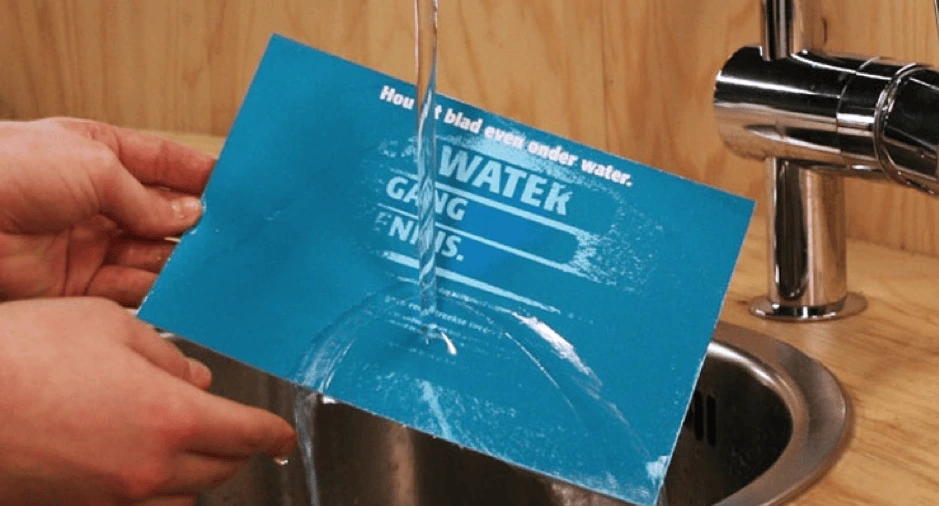
Not only did this direct mail campaign explain World Water Day’s campaign aim creatively, it also became an interactive piece of content. Interactive content has been proven to generate 2x more conversions than the alternative. That’s pretty genius, right?
Lucidpress: Click the image to use the template
Use one of our direct mail templates as inspiration for your own direct mail piece. Switch out colors, fonts and texts to create your direct mail postcard or flyer in seconds.
Browse all direct mail templates



DO emotionally engage customers
The second way to ensure your direct mail marketing campaign is a success is to make your audience feel something — any type of emotion. After all, there’s such a wide range of them. Emotion has been the marketer’s secret weapon for years. Various studies show that people rely on emotions, not just logical information or data, to make buying decisions.
Feelings of anger, disgust, affirmation and fear often top the list of emotions that work well in advertising.
A fantastic example of this comes from the Natural History Museum. In an attempt to educate local people about the danger of animal extinction, they sent an eraser to their audience with a quote about the topic.

Because their audience could see a visual representation of extinction in their daily lives, it made them stop to think about how serious it is… and want to act.
Pick an emotion and drive it home through your next direct mail campaign. You’ll soon see the impact emotion has on marketing—but the victories will be for your own brand.
DO put your own spin on it
For the most part, mailboxes aren’t fun environments. Bills, bank statements and lonely newspapers often clog up the mailbox marketing route. But, you can stand out by making your direct mail marketing campaign a little unique.
A fantastic way to achieve a little uniqueness is through juxtaposition. Can you think of a smart, innovative way to show how powerful your offering is by comparing it to something completely different?
Let’s take this direct mail campaign for example. Created by the theatre team behind a local performance of Macbeth, they wanted people to visit their show. Instead of online marketing, they exploited their direct mail opportunity and found a way to stand out in a mailbox.

You’d probably never compare a Shakespeare play to a fast food joint, right? But that’s part of the reason why it works.
The juxtaposition of both elements makes you take a second take at the direct mail rather than toss it in the trash. This type of content experience (within direct mail marketing) is bound to make an impact on an audience, one who possibly has an interest in both but would never expect them to be paired together.
All in all, direct marketing provides you or your creative team with untold opportunities to lean into the creative, get weird and try new things. Plus direct mail marketing allows you to access new customers or get a feel for a prospective audience who might otherwise pass up your product or services.
DON’T skip doing the proverbial “leg day”
Leg day for direct mailing entails defining your audience and running some tests before you send out the direct mailers. Now, neither task needs to be a heavy lift. Defining your audience can be as simple as knowing who your product is best suited for and tailoring where and what neighborhoods you send the direct mail to based on this information.
Additionally, try sending a few flyers or direct mailers out to a small segment of your target audience. Make sure to include trackable tests, like a QR code or a custom URL (which we’ll touch on more momentarily).
DON’T forget to set goals for the campaign
Consider the following questions. As in, are you looking to drive brand awareness or boost sales of a particular product? Are you looking to assess brand awareness, and if so, how will you measure success or failture? Alternatively, if you want to increase sales, what is the target revenue or fiscal marker for your campaign? Specific goals will give you a benchmark to measure (and brag about) the campaign’s success, and it will help you drive improvement based on the results.
DON’T ignore the importance of a CTA
Simply put: You need a way to measure your goals and attribute which-sales-to-what-campaign-directive. Well, a CTA can help with that. Start by creating a custom URL to include in your direct mailer. This custom URL will empower you to track visits and sales from the website location, allowing you to attribute conversion and ROI to your direct mail campaign.
DON’T spam your customers
Inundating your customers with a lot of direct mail, emails and more is not the best way to get their attention. Sure, you’ll be top of mind, but it’ll be because you’re irritating them — not inspiring them or addressing a pain point. You don’t want to undermine the relationship you’ve worked so hard to build with them, so be mindful of who-you-send-what-where-and-when.
You’ve got mail — Lucidpress mail
If you couldn’t tell already, we’re big fans of direct mail. Now, the exciting part about Lucidpress is that we don’t just empower anyone to create compelling, effective content — we also make it easy to conduct a direct mail marketing campaign.
Choose from any of our direct mail marketing templates to customize and edit. Or, alternatively, if you’re feeling brave, you have the option to design your own. Then, all you’ll need to do is:
- Upload a .CSV file containing the details of people you’d like to target,
- OR use radial search to select a local delivery area.
Once selected, press the proverbial “go” button and use the direct mail marketing integration to send your mail directly within a matter of days. There’s no need to stop at your local post office with oodles of mail, thus, taking the stress out of building a direct mail marketing campaign.
As you can see, direct mail isn’t an old-school marketing technique that should’ve stayed in the 00’s. These tips, along with our new features, could be the combination you need to build a direct marketing campaign that drives excellent results for your business.
Learn more about the direct mail features in Lucidpress, and give it a test drive.
Bonus: Direct mail infographic
Craving more data? Check out this illustrative infographic about direct mail from our friends at Colourfast.

Email marketing is a huge sales driver for e-commerce companies. Social media is also a great tool, but those sites measure their users in the millions while email providers measure theirs in the billions.
According to a study by The Radicati Group, there are approximately 3.8 billion email users worldwide. That’s more than the estimated 2.77 billion from all social media outlets combined, according to Statista in 2017.
Related: 11 things to consider before your next email campaign
Because so many considerations go into a good email marketing campaign, there are plenty of opportunities for things to go wrong. Fortunately, there are tools available that make the heady world of email marketing far less complicated. Here’s a round-up of our 8 favorites—and let’s start with the one closest to home.
1. Lucidpress
When you’re getting started with e-commerce, one of the hardest parts of email marketing is finding a template that works well. Unless you’re particularly artistic, it’s hard to envision a good format that’s both practical and visually appealing. That’s where Lucidpress comes in with a line of free newsletter templates.
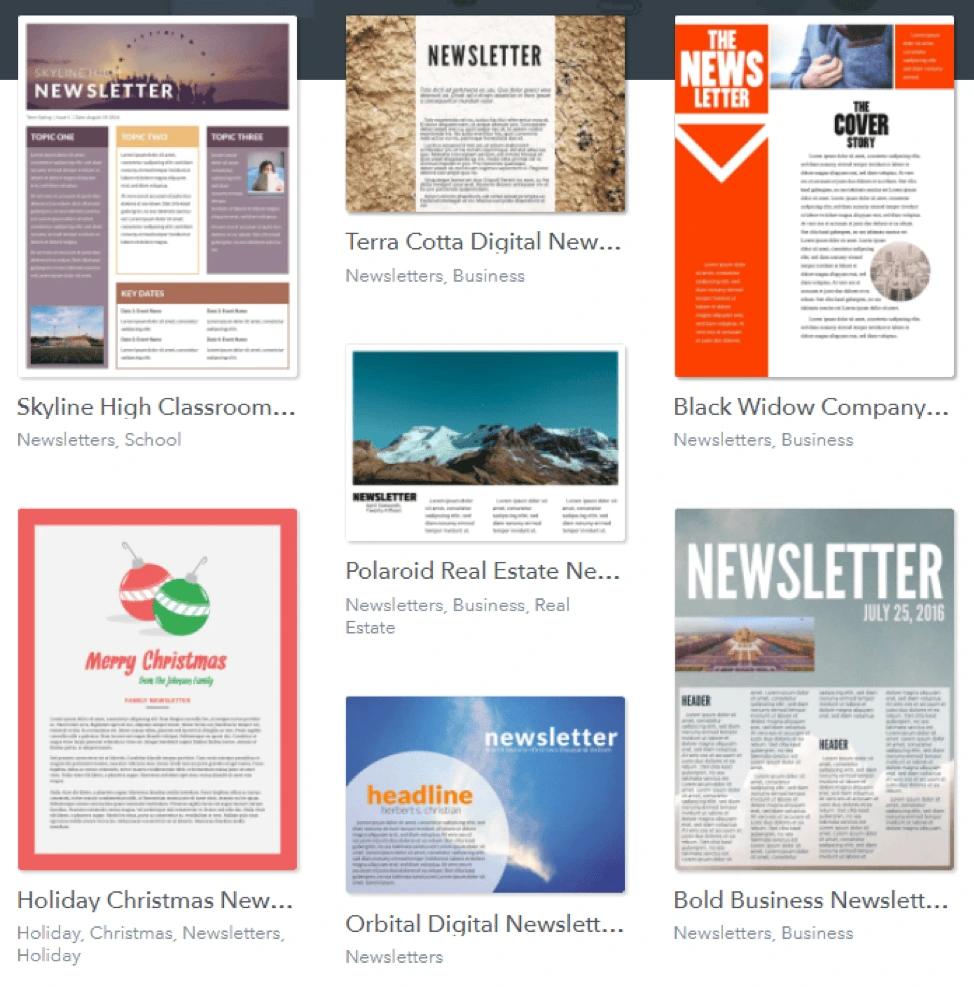
Not only does Lucidpress provide plenty of newsletter ideas for your inspiration, but it takes very little time to get started. Its drag-and-drop design platform is dead easy to use, and you have a variety of options for sharing your newsletter: downloading it, embedding it, or generating its HTML code. And because it’s free, new e-commerce companies can save the time it would take to come up with their own style—and the money they might have spent for the same service.
2. Constant Contact
Constant Contact effectively organizes and personalizes the emails you send out to customers. If you look at their website, you’ll see examples of email messages for welcomes, birthdays and membership anniversaries.
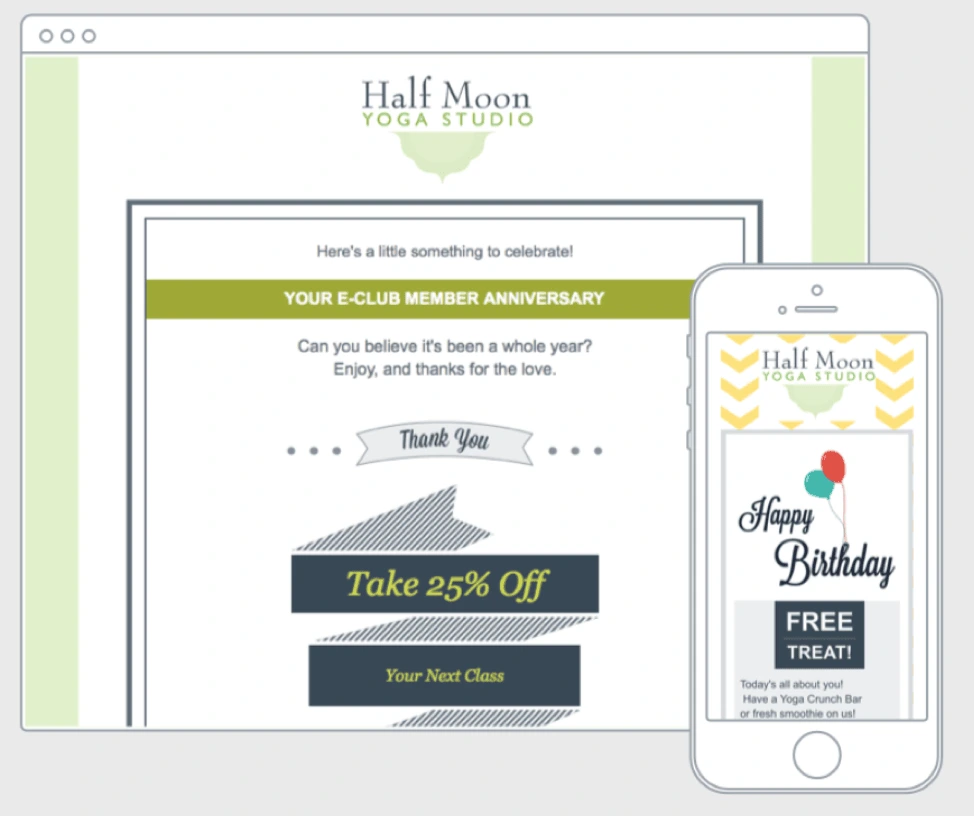
You can track the success of your emails in real time, seeing just how many people are clicking through your links and taking action because of your email.
3. The Hemingway App
Having the right format, fonts and style is crucial to a good email campaign, but in the scramble to get all that right, it’s easy to overlook the actual words that will be in the email. The Hemingway App is there to make sure your writing is concise and easy to understand.
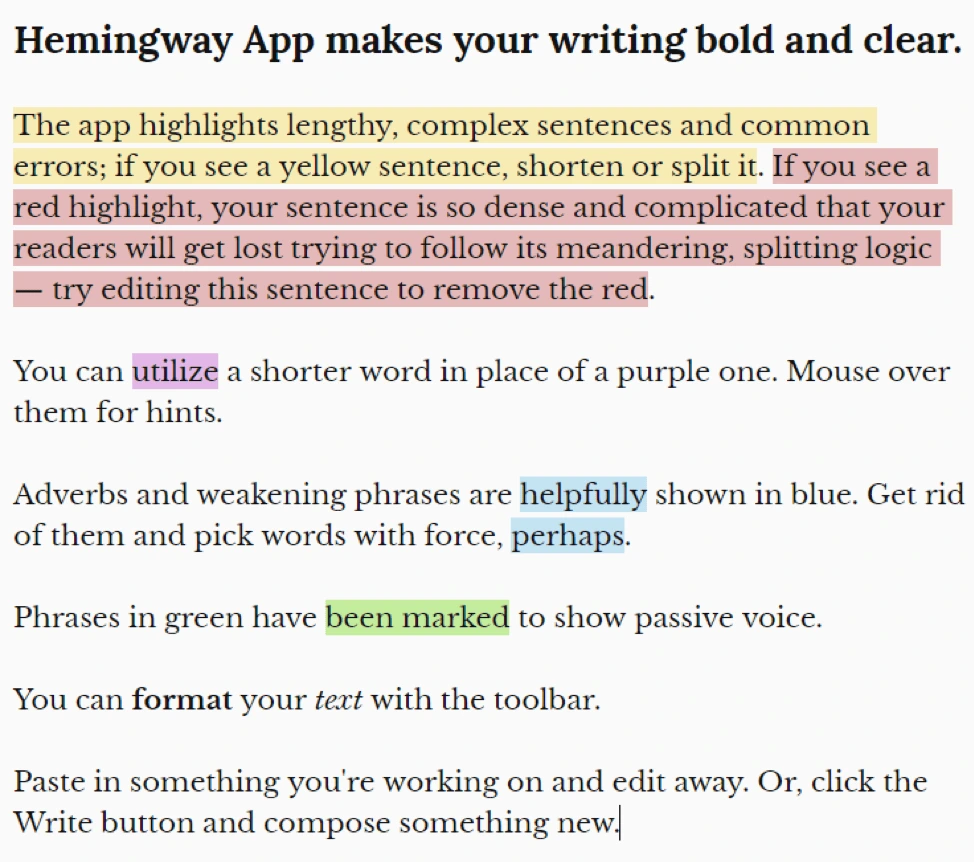
Being clear and concise is not always easy. As a brand marketer, you know your products in and out, including niche vocabulary. And while some customers will appreciate the jargon, others won’t. Instead, they’ll be confused or disengaged when reading your emails. Hemingway helps you write email copy that anyone will easily understand.
4. MailChimp
MailChimp bills itself as the “world’s largest marketing automation platform.” Using it, you can mix and match different aspects to essentially create your own email templates.
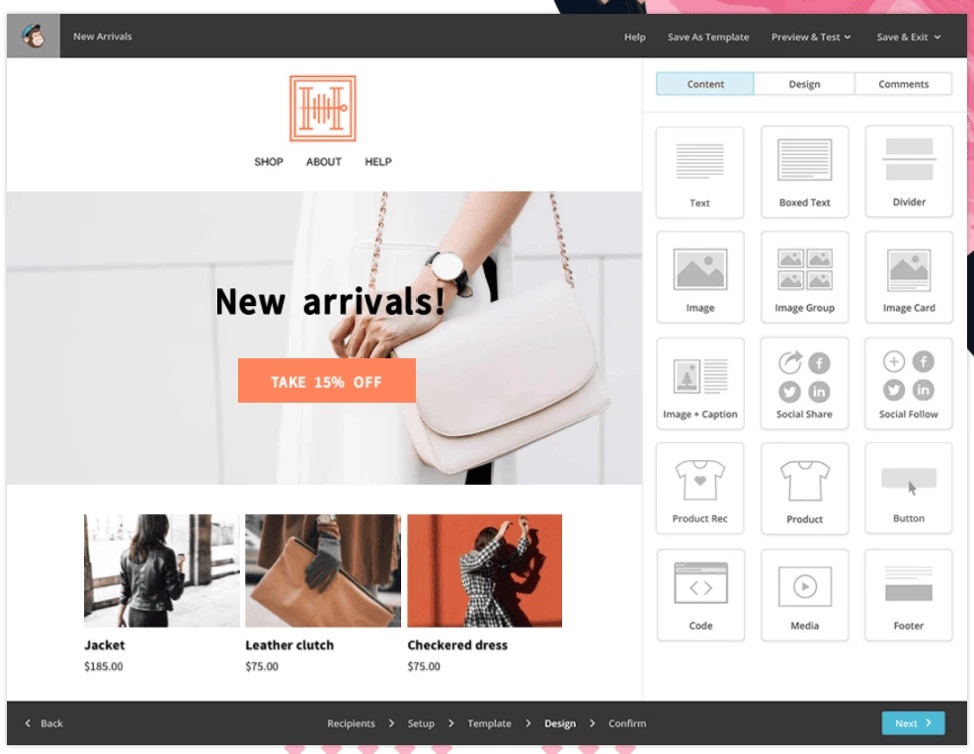
It has more than just templates, though. There are also automation tools that the service uses to “welcome, re-engage and follow up” with customers. Having said that, it’s a fierce competitor to Constant Contact, so you’ll have to compare them both to decide if one is right for you.
5. AWeber
Alongside automated emails and responses, AWeber has a feature that triggers certain emails based on which links subscribers click on. Generally, you’ll trigger emails for everyone, but for some, when they look into the promotions you send out, AWeber can help you automate follow-ups.
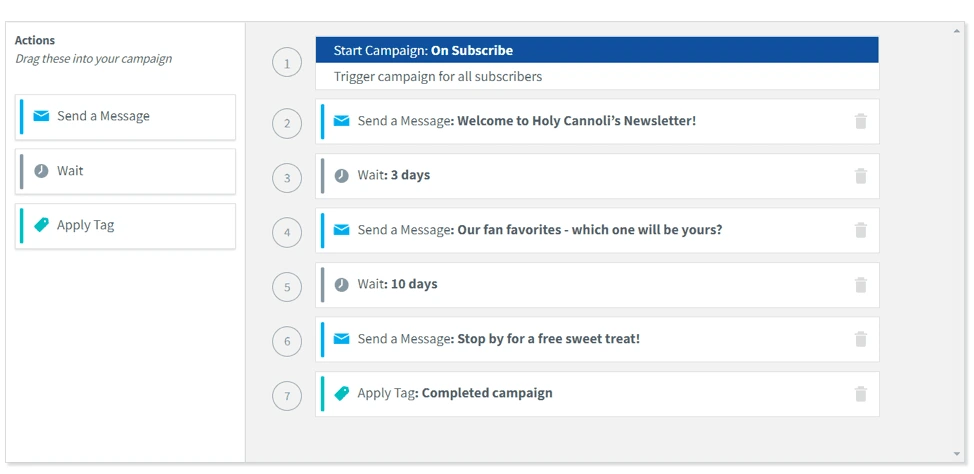
Like many others, personalization is a big priority on this email marketing platform. Putting in people’s actual names (instead of something generic like “Valued Customer”) and tweaking emails to reflect personal preferences are the little extra touches that make these tools worth the money.
6. GetResponse
Automation is a huge time-saver, and that’s where GetResponse puts its focus. To them, automation isn’t just about sending mass emails. There’s a whole world of communication built on how to respond to emails and when to send them.
Every customer is different, and people are more likely to engage with emails at different times. GetResponse can track these things for each person and send them emails at the best time for them.
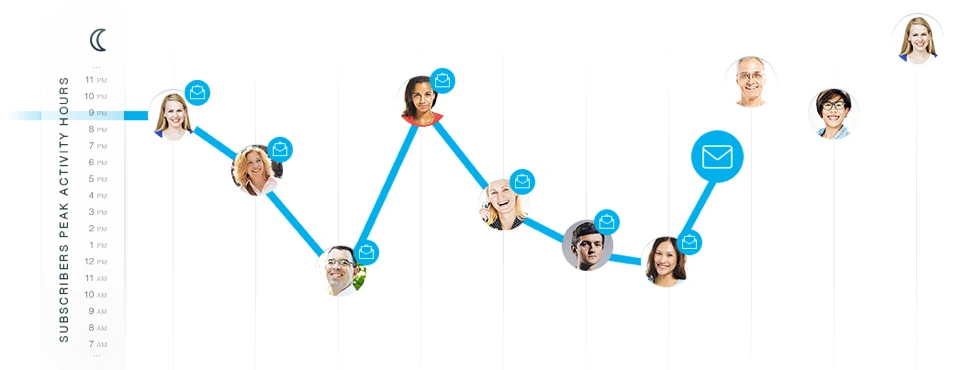
One of the keys to effective marketing is knowing your audience. It’s little details like these that can make a small but notable difference in how well your email campaigns do. If they don’t seem to be working, a simple tweak in timing might make the difference.
7. Answer the Public
This is a unique tool that can help you generate newsletter ideas surrounding your product. Basically, what this website does is show you the kind of questions people ask search engines.
For instance, I typed in “boots” and got this:
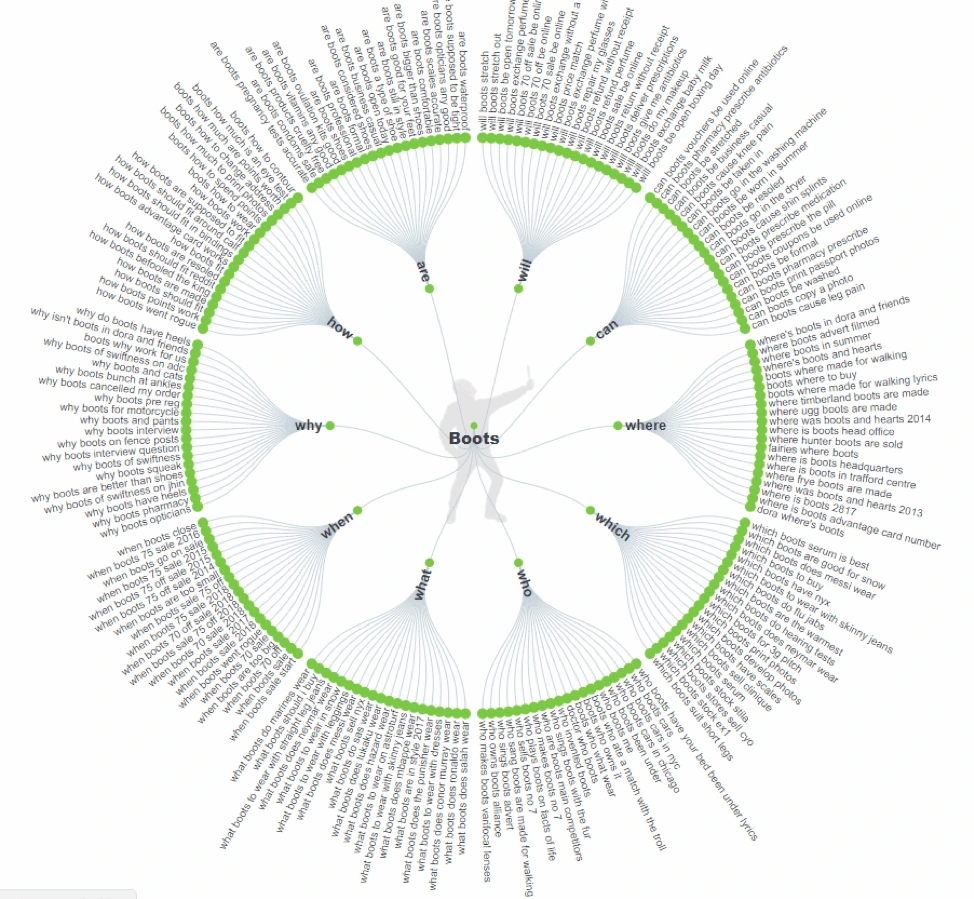
Answer the Public gives you the most popular questions about a topic—things your potential customers might be curious about. One way to use this information is to craft email subject lines that allude to one of these questions, then answer the question inside. This will make them far more likely to click on links and engage with your emails.
8. Litmus
Besides the common email automation features, Litmus offers spam testing. Getting your email caught in a spam filter essentially wastes all the time and effort you spent getting customers to sign up and subscribe, as well as the time and money spent crafting the email itself.
Litmus’ spam testing goes through your email and checks for anything that will trigger spam filters, so your email is ready to send out—as seen in this preview on their website.
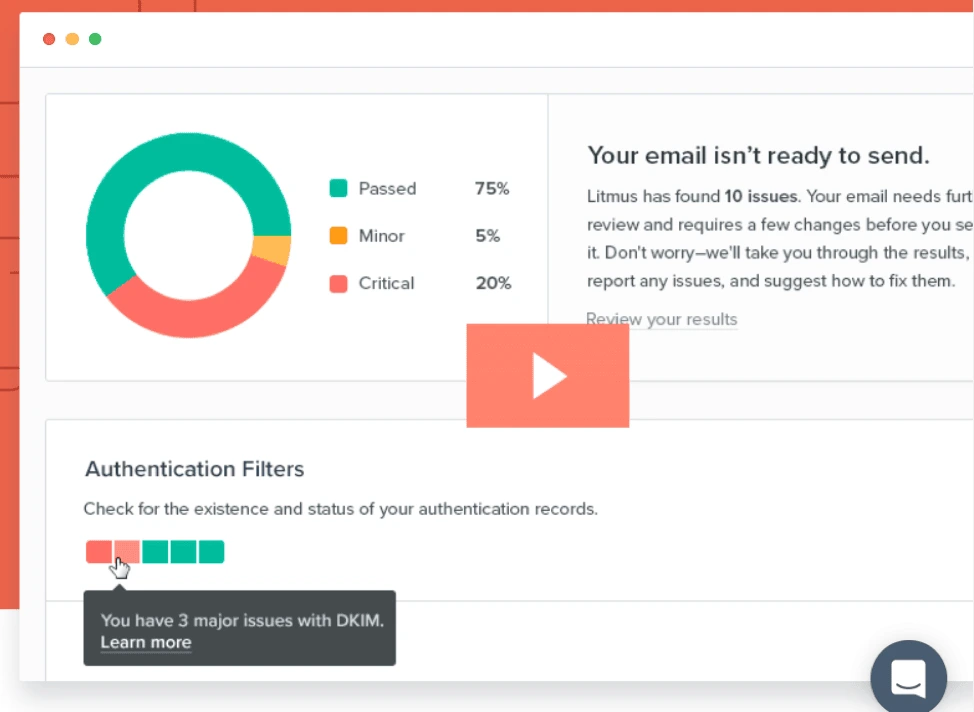
Don’t let your emails get caught on the wrong side of the spam filter. People aren’t going to search through their spam folder to find your newsletters; they’ll likely forget they even subscribed to your content.
Key takeaway
We hope these tools give you guidance on how to effortlessly navigate through the world of email marketing. Email is essential for marketing consistency and commitment, which are some of the most important principles of persuasion marketing.
Ready to wow your audience with beautifully designed newsletters? Lucidpress will help you send the right message.
When you run your own business, you’re responsible for a lot. Aside from keeping the business running smoothly, you’re responsible for producing your product or service, hiring employees, marketing and managing your brand, and doing anything else your business requires.
Related: Direct mail marketing: Does it still work?
Today, let’s focus on the marketing aspect of your business.
In this article, we’ll focus on one type of direct marketing known as direct mail. Specifically, we’ll offer 10 suggestions for how to implement direct mail in innovative and creative ways. To start, let’s take a look at exactly what direct marketing and direct mail is.
What are direct marketing and direct mail?
Direct marketing is an assertive form of promotion in which a company reaches out directly to its target market. The point of these campaigns is to connect with consumers on an individual level, showing that they’re important to the company.
One example of this is telemarketer calls. Some other types of direct marketing:
- Email marketing
- Direct mail marketing
- Direct-response advertising
- Face-to-face selling
- Text marketing
- Distributed leaflets & flyers
Our focus today is direct mail—where advertising content is sent directly to a target market’s mailbox. The content could include letters, postcards, flyers, or anything mailed directly to a home or place of business.
Is direct mail still effective?
When you use direct mail correctly, it can be an extremely helpful tool in your advertising toolbox. You can “speak” directly to your audience and give them detailed information about your brand. In addition, you can easily track the success of a campaign.
However, you must practice care when you’re conducting these campaigns.
If you do this incorrectly, consumers will view the content as “junk mail.” Avoid this by providing consumers with content that is timely, relevant and important to them. You can also provide useful tools—for example, a coupon or promo code for your services.
How to use direct mail creatively
Now that we know what direct mail is and the benefits it can bring you, let’s brainstorm a few ways to use it for your brand. Below, we’ve gathered 10 innovative ways that you can use direct mail for your business.
1. Deliver discounts
One common-sense choice for direct mail marketing is to send out info about discounts and specials. This could mean one of two things. First, you could send out direct mail when you have a sale coming up.
Second, you could send out coupons for your service that are exclusive to your direct mail campaign. This is a good way to measure response and ROI, because you’ll know whenever a customer redeems the discount.
2. Send out samples
In addition to sending out discounts, you can send out samples to your customers. Of course, you should only do this if you have ample budget for the expense. It’s probably not the best tactic to use for your first campaign, but after you’ve gotten a handle on typical response rates.
If you can swing it, samples are a great way to attract new customers who don’t want to pay money to try out your product. In addition, if you have new products, samples are a great way to introduce current customers to your new products.
3. Offer reminders
Reminders are a cheap way to stay top-of-mind. You can send out reminders for upcoming events—for example, a realtor could announce an open house. You could also call attention to grand openings, deadlines or appointments. An example you’re probably already familiar with is receiving a letter from your doctor or dentist about your yearly check-up.
4. Share announcements
You can also use direct mail to deliver company announcements. This keeps your customers up-to-date on new developments such as different hours, new contact info, new products and more.
5. Use QR codes
QR (quick response) codes are a great way to connect your mail campaigns to your digital marketing efforts. They’re simple barcodes that are easy to print on a piece of mail and can be scanned by any smartphone.
One scan, and a QR code can be customized to take your customer anywhere you need. For example, you could design a QR code to take your customers to a specific landing page. Most people are familiar with QR codes these days, so their presence on your mail will be self-explanatory and easy to follow.
6. Add texture
When someone goes through their mail, the last thing you want is for yours to be immediately disregarded or tossed away as junk. One way to combat this is to make your mail more eye-catching than the rest.
There are a few ways to do this, but one of the easiest is to add some texture to your mail. For example, you can use embossed lettering to make it stand out when a customer grabs a handful of letters and newspapers.
7. Pop with 3D mailers
Using texture is a subtle way of differentiating your mail, but there is a more obvious way to set your mail apart. You can send out 3D mailers, such as a box or tube or any other 3D design. These will jump out to customers and spike their curiosity, prompting them to open your mail and take a look rather than just throwing it away.
8. Track personalized URLs
One way to track how well your direct mail is working is to use personalized URLs (PURLs). Like QR codes, they’re a digital extension of your message. PURLs will lead your customers to your website in a way that leaves a trackable footprint. You’ll easily be able to see how many of your customers responded to your direct mail campaign by checking the page’s stats.
9. Try augmented reality
When people think of augmented reality today, they think about games like Pokémon GO. However, augmented reality does have a place outside of entertainment. In fact, you can incorporate the idea of augmented reality into your direct mailing.
Usually, this is done through the use of an app. For example, in 2015, Toys R Us used augmented reality techniques to create a game out of a piece of their direct mail.
10. Wow with video in-print
Finally, there are video in-print techniques. This is a cool idea because it eliminates the middlemen (apps, websites, etc.) by including a video player directly in the mail. Right now, these are a bit pricey—but keep an eye on them for the future.
Key takeaway
When executed creatively, direct mail marketing can provide a huge boost to your promotions and brand awareness. Whether your goal is to be top-of-mind or to drive bottom-funnel sales, you can build a direct marketing campaign to match. By crafting professionally designed mailers, you’ll attract your target audience and reinforce loyalty among your customers.
Learn more about the new direct mail features in Lucidpress, and give it a test drive.
Direct marketing can be extremely effective for businesses focused on serving specific geographic areas. By sending letters, flyers, and other marketing materials straight to prospects’ homes or workplaces, you can generate business in a cost-effective manner.
Related: Direct mail: Does it still work?
Direct marketing (also known as direct response) is an umbrella term that includes email, online display ads, paid search, and direct mail. The common denominators are 1) they target specific people and 2) they ask for some type of action.
The requested action could be anything from giving you a call or redeeming a coupon to scheduling a free consultation or starting a trial membership. The possibilities are limited only by the marketer’s imagination.
In this post, we’ll focus mostly on the time-tested technique of direct mail, which remains very profitable for realtors, gym owners, franchisees, and other businesses focused on serving local communities.
How can you measure your performance?
Let’s discuss the key metrics of direct marketing campaigns. Understanding these is the first step to ensuring that your strategies are always improving.
Direct mail open rate
When most people get their mail for the day, the first thing they do is separate the “junk” pile from the stuff that deserves their attention. Getting our messages into the stuff-to-open pile is the first hurdle direct mailers must clear.
How often does this happen?
Unfortunately, because we aren’t in prospects’ homes or offices with them, this is a difficult metric to track. Paper mail is a different animal than an email campaign, for instance, because email marketing software allows us to track how often our messages are opened and clicked.
It’s unlikely you’ll know what your direct mail open rate is. That said, prospects can’t respond to a message they haven’t read, so we want to do everything we can to increase it. That’s why seasoned marketers test different variations of the same direct mail package. Seemingly subtle details—like the envelope color or the font of your prospect’s address—can make a significant impact.
By sending out two versions of the same marketing message (a process called A/B testing), you can track which version performs best. After enough testing, the winning version becomes the “control,” which you can test against newer variations. This ensures that you’re constantly optimizing your direct mail packages to get opened as much as possible.
Let’s say you’re a realtor looking to build your client base in a new neighborhood. You decide to send out 500 letters introducing yourself and asking for interested recipients to give you a call. Your message is the same in every letter, but the envelopes are different. 250 are white. The other 250 are yellow.
You get 13 calls from the white group, but only 6 from the yellow: a statistically significant result. We don’t know for sure how many people opened the envelopes, but because the response was so much higher with the white group, we can assume it’s the better option moving forward. Next campaign you might test it against another color, like light blue.
Direct mail response rate
The response rate measures how many prospects follow up after seeing your messages.
A response isn’t necessarily the same thing as a sale. It often will be if you’re selling inexpensive impulse items, like a pizza store owner mailing out coupons. In those cases, responding (using the coupon) is the same thing as becoming a customer. But that isn’t always the case with more expensive products (like real estate), when people might respond before they’re ready to buy.
How do you measure this?
The challenge becomes figuring out which prospects responded due to your direct mail as opposed to other marketing channels. Here are just a few strategies you could use to track response rates:
- Call tracking. Assign unique phone numbers to specific direct mail campaigns, so when prospects follow up you can see where they came from.
- Coupon or discount codes. You’ve probably seen these in your own mailbox. Local businesses often create special coupons for direct mail campaigns. When prospects redeem them, it’s easy for the business owner to track their success.
- Exclusive offers. You could create special offers exclusive for direct mail recipients, so you know they couldn’t have discovered them anywhere else.
- Personalized URLs. A tech-savvy way to track responses is to have direct mail recipients follow links to unique landing pages you’ve created for the campaign.
- Just ask. Businesses often ask new customers how they heard about them, collecting responses via informal surveys.
Don’t worry if your response rate seems low. In 2017, the Data & Marketing Association’s Response Rate Report found that the average response rates sent to houses was about 5.1%. The same report revealed that oversized envelopes had the highest response rates, probably because they stand out from the pile.
Imagine you own a hamburger restaurant. You decide to send out coupons to promote your new curly fries. You send out 2,500 coupons, and 175 people end up redeeming them. What’s your response rate?
The formula is simple. All you have to do is divide the responses by the total pieces sent. In our burger example that turns out to be 7%—a great response!
ROI
Direct marketing can be extremely profitable, but there are certainly still costs involved. Everything from accessing mailing lists and databases to printing services, postage and the paper itself—these things add up.
Your marketing budget is limited. Tracking your results will ensure you’re allocating every penny where it’s most effective.
That’s where ROI comes in. This acronym, which stands for “return on investment,” assesses the revenue your campaign brings in relative to its cost. It’s probably the most important metric to pay attention to because you can compare it with the results from other marketing efforts.
Say you’re a gym owner offering a great deal for a new membership. You spend $6,000 on your direct mail campaign, which results in $7,800 of new business. You want to know your ROI.
The formula to calculate ROI is as follows: (revenue – campaign cost) / campaign cost. So, in our example, we get (7800 – 6000) / 6000, a very respectable 30%.
Your turn
Although many small business owners are overlooking direct marketing in 2019, it remains a viable strategy for businesses targeting local areas. You might use email, direct mail, pay-per-click, or all of the above.
Understanding the key metrics will help you see how well your campaigns are paying off. Continuing to track them while you experiment with messaging will ensure they’re as profitable as possible.
Learn more about the direct mail marketing service in Lucidpress, and give it a test drive.
Okay, so you’ve recently made the conscious decision to focus more of your energy on creating content with the hope of collecting more leads.
As an avid devourer of content yourself, you’ve seen a ton of other brands leverage content to generate massive amounts of buzz for their companies.
You’ve heard the success stories and statistics. You know content marketing can drive in 3x as many leads as traditional marketing—and it costs businesses 62% less than traditional methods, too.
Related: 5 myths that devalue your content marketing strategy
So, you decide to give it a shot. You spend hours creating a number of insightful and informative blog posts that you know your target audience will find valuable. You post them on your site, sit back, and wait for the new customers to start rolling in.
But… nothing happens. Those blog posts? Nobody’s reading them. Or—and this might sting even worse—people are reading them, but it hasn’t made a lick of difference to the size of your customer base.
In either case, it can be incredibly disheartening to realize your efforts haven’t paid off as well as you thought they would. On top of that, figuring out where you went wrong can be rather difficult, which may lead you to throw in the towel on your content marketing initiatives before they even get off the ground.
Before you throw your hands up in resignation, though, let’s take a look at some of the most common reasons many content marketing campaigns fall short of their intended goals.
4 content marketing mistakes that may be costing you leads
Before we dive in, let’s admit that the true list of reasons a given content marketing campaign could fail is inexhaustible. Because so much goes into content marketing, Murphy’s Law can rear its ugly head at almost any given time, for many different reasons.
For our purposes, though, we’re going to discuss some of the overarching mistakes and problems that could sabotage your content marketing campaign before you even get started.
Not focusing on your true purpose
Presumably, your goal is to generate more leads (and eventually more sales) by publishing intriguing and informative content for your audience to devour.
But have you really thought about how creating such content will actually lead more people to purchase your product?
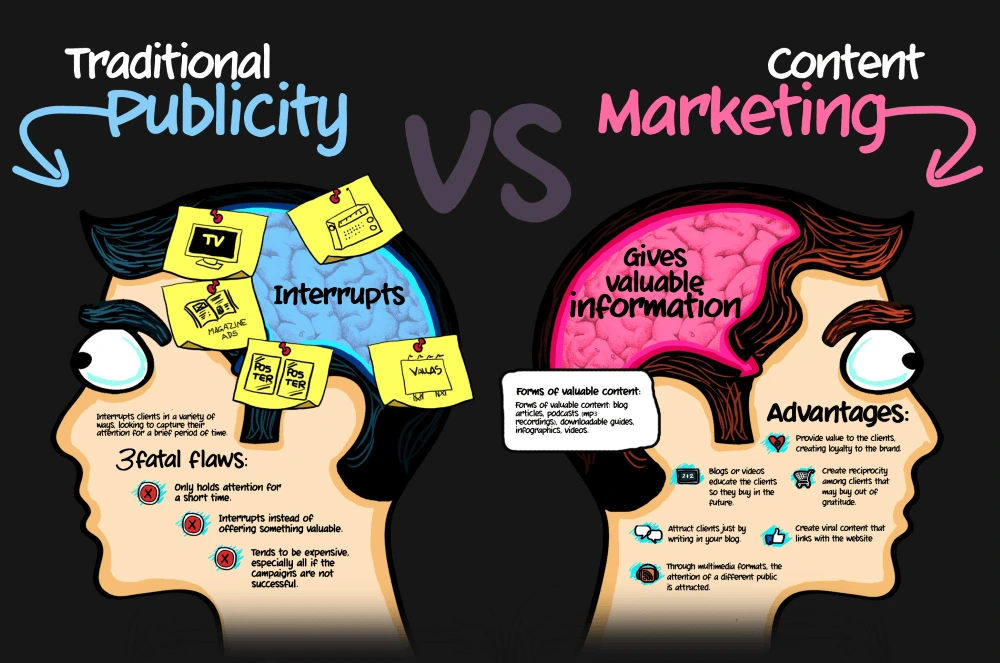
Source: 87 seconds
The only thing worse than seeing no increase in your visitor count is seeing an increase in your visitor count but no increase in your sales numbers.
As you begin creating content, it can be easy to lose sight of the fact that your purpose is to create awesome content that leads your readers toward conversion. It can be easy to slip into a routine of churning out pieces of content that, while interesting and informative, simply don’t do anything to move your readers further along the buyer’s journey.
Solution:
Ask yourself the following question before you begin creating any piece of content:
How will this content benefit my reader and bring them closer to conversion?
It’s essential to keep in mind that content is not your product; it’s part of your marketing plan. [] While the content you create absolutely should provide value to readers, it should also provoke them to take action and engage further with your brand.
For individual pieces of content, you might aim to get your audience to sign up for a mailing list, follow your brand on social media, or share the article they’ve just read. Depending on the context, you might ask them to sign up for a demo of your product. While such calls-to-action are typically found at the end of a piece of content, they can also be placed within the content as appropriate.
Over a longer series of content, your goal is to build your readers’ understanding and curiosity about your brand and the services you provide. As this article from Copyblogger points out, you can use content to create “open loops” in your readers’ minds that essentially keep them wanting more—meaning they’ll look for ways to engage with your brand that ultimately may involve making a purchase.
Always remember that your main goal is to have them come away from your content closer to converting than they were before they read it.
Writing for a mass audience
As the old saying goes:
“If you try to please everyone, you’ll end up pleasing no one.”
Unfortunately, when getting started with your content initiatives, it’s tempting to create content that you believe will appeal to your entire consumer base at once. In doing so, you end up creating content that is either:
- So general that it doesn’t provide value to any individual audience members
- So packed with information that it completely overwhelms your audience
In either case, the result will almost certainly be the same: your potential customers will bounce from your content without taking the action you hoped they would.
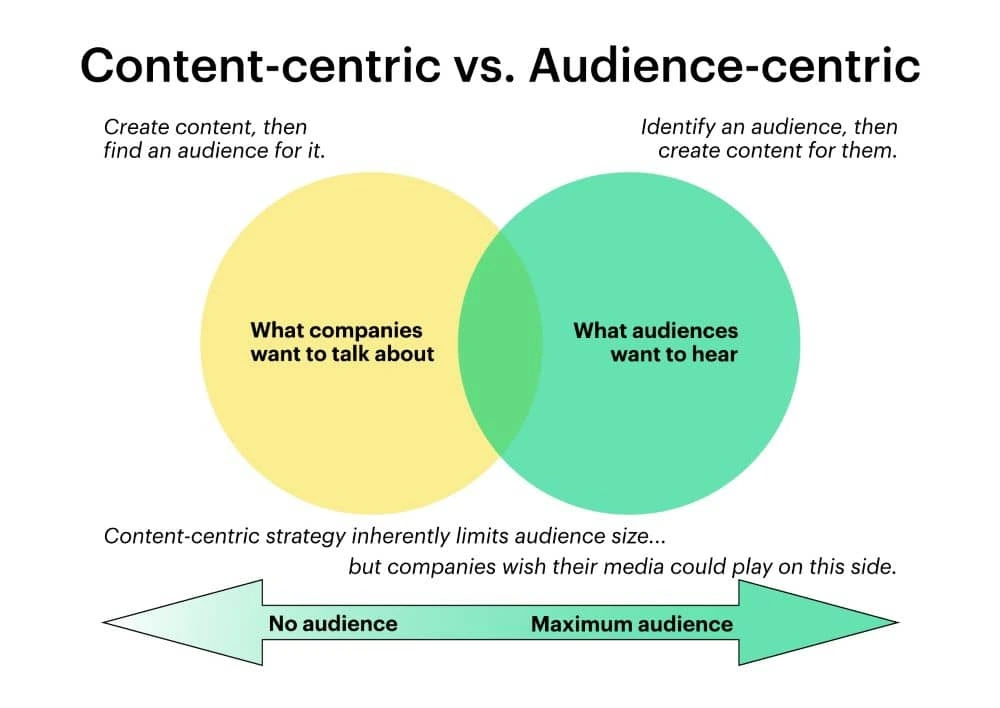
Source: Content Marketing Institute, lovingly recreated in Lucidpress
Solution:
First things first, make sure you’ve developed a variety of personas to target. Find out as much as you can about the people who belong to these segments: their demographic and geographic data, their personality types, and their actions and behaviors as consumers.
Once you’ve defined and developed a number of customer personas, you can begin planning content intended for each of them (rather than using a “one-size-fits-all” approach).
While this means you’ll be creating more pieces of content, you’ll ensure each piece of content will resonate with its intended audience.
You can make sure the right content gets in front of the right person in a few ways:
- Categorizing posts on your blog by topic
- Implementing a search function on your site
- Allowing mailing list subscribers to choose which content they receive in your newsletter
Focusing on one content format
Typically, when most people hear the phrase “content marketing,” they automatically think about blogs.
But there are many, many more types of content out there for you to choose from.
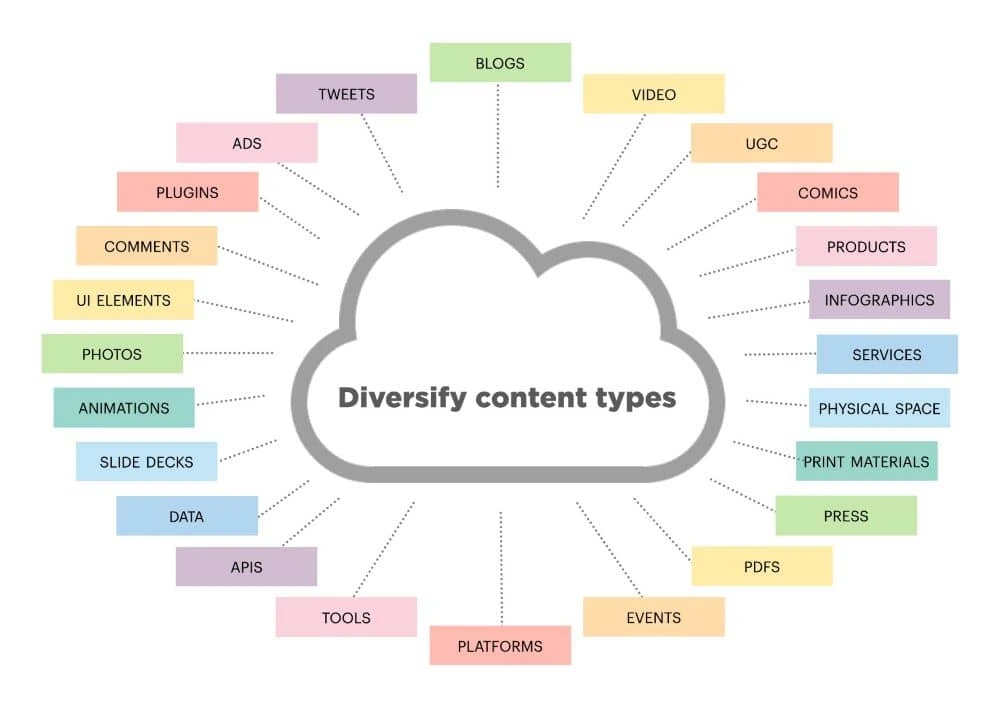
Source: iPullRank, lovingly recreated in Lucidpress
Content marketing is the act of using content to market your brand. With that in mind, the following are just a handful of content types that you can leverage for marketing purposes:
- Podcasts
- Webinars
- Social media posts (see templates)
- eBooks (see templates)
- Infographics (see templates)
Simply put, sticking to one type of content is a good way to bore your audience. No matter how valuable your blog posts may be, your readers will likely get tired of them at some point if you don’t change things up a bit.
Solution:
Your first order of business is to determine which formats will best engage your audience.
Some individuals devour podcasts on a daily basis during their morning commute, while others would rather read an eBook while relaxing on their couch at night. Still others might not have the time to devote to these ventures and would prefer to get quick-hitting information via infographic.
As you do when figuring out what your audience wants to know, it’s also important to determine how they want to receive this information.
Even though you’re going to create content in a variety of formats, that doesn’t mean you need to create completely new content for each. In other words, you can repurpose content you’ve previously created and present it through a different format.
You’ll definitely want to tweak the content so it fits its new platform, but generally speaking, the meat of the content will remain the same. For example, when repurposing a blog post into an infographic, you’d typically include only the hard-hitting facts and statistics mentioned in the article (leaving out the “discussion” parts).
By repurposing your most successful content in a variety of formats, you can give the piece maximum exposure across the customer segment it was intended for.
Not following up (or through)
In the intro, we set up a hypothetical scenario in which a content marketer creates a handful of blog posts, publishes them, then sits back and waits for business to start booming… and it never happens.
A big mistake many marketers make when starting out with content is living by the old adage, “If you build it, they will come.”
It just doesn’t work that way. With over 2 million blog posts being published every day, the chances of new readers just happening upon your content are practically zero.
But, even assuming you do generate some traffic to your new content, you still haven’t succeeded yet, and you can still miss out on major opportunities. Another mistake beginner content marketers make is failing to engage with their audience members after they’ve reeled them in. They also miss out on the opportunity to not only nurture these individuals through the buyer’s journey, but to learn more about their needs.
Solution:
The solution here is two-pronged.
First, focus on promoting your content. There are a number of ways you can do this, including:
- Sharing links via social media, adding relevant hashtags to the post
- Posting links in appropriate online communities, such as Reddit or Quora
- Engaging with influencers and bloggers who write about your industry to see if they’d be interested in sharing your content
Once you’ve gained some visibility and have begun seeing audience members engage with your content, don’t let them go. If they’ve left a comment on your blog, keep the conversation going; if they’ve shared your content on social media, shoot them a quick “thank you”; if they seem to be looking for more information, give it to them!
Technically speaking, once your content has attracted a potential customer, it’s done its duty. But the work you put into this content will be for naught if you don’t follow up with the lead as soon as you possibly can.
Key takeaway
It’s no secret that content marketing can be an effective way to attract highly qualified leads that have a good chance of converting. This is, in large part, why 92% of companies view their content marketing efforts as a business asset.
But if done haphazardly, your content marketing efforts can lead to nothing but wasted time, energy and money.
Before you dive into your next content marketing campaign, keep in mind that the purpose is not just to create amazing content, but to create amazing content that ultimately leads your audience toward conversion.
Learn how Lucidpress can streamline your brand’s content marketing and keep your whole team on the same page.
Direct mail is not dead or in a cryogenic freeze. It has not joined the video cassette or the typewriter as an obsolete relic. Even here in the digital age, implementing a traditional direct mail campaign can still be a highly effective tool in your brand’s marketing toolbox.
Related: Direct mail marketing: Does it still work?
Engaging customers through multiple platforms & channels is the ticket for boosting your response rate. Direct mail is a path to success when it’s personalized to your target audience and driven by a well-executed direct marketing strategy.
So, what can set your direct mail campaign apart? Here are 5 effective practices you can implement to attract customers’ eyes (and dollars) to your business.
Personalize your content
Everyone wants to feel special. Taking an individualized approach with direct mail can create that feeling for customers and potential customers alike. Rather than seeing your mail as junk, they’ll feel like you really know them and understand their needs.
It starts with using a recipient’s name, but it doesn’t end there. Find a way to connect by personalizing the product or service you offer. This can be as simple as adding the address and operating hours for your organization’s nearest location. It could also involve tailoring a specific offer toward products that will be most relevant to them based on observable data.
When you break your target audience into narrower niches, then tailor a personalized offer for each person, it will supercharge your marketing efforts. Your content will have a better chance of resonating with your audience and generating sales down the road.
Add more information
A flyer, brochure or insert can feel more permanent than a tweet or an email. Your audience can see it, handle it and read it. A customer is likely to spend more time with a piece of direct mail than with an email or tweet. It opens the door to provide more information.
Include all the information you need to get customers to make the decision you want. There are a few ways to accomplish this goal:
- Use clear, attractive images that draw the eye.
- Incorporate graphics & text that mesh with your brand and convey the right message about your products or services.
- Include authentic testimonials that show a customer why they should choose you over a competitor.
The most important thing is to keep your focus squarely on the customer’s needs. You want to earn their loyalty, and your direct mail content should aid in reaching that goal. Concentrate your message on how your brand benefits the customer in terms of value, convenience and quality.
Make your call-to-action count
The goal of direct mail is the same as any other marketing channel. You want to convince a customer that doing business with you will improve their life. That’s where a well-designed call-to-action is so essential. It’s the glue that holds everything together.
A call-to-action should be compelling enough to spur a customer to take action. You should make it clear, concise and powerful. Keep it in front of them by including the call-to-action multiple times throughout the piece. In this case, don’t look at the repetition as being annoying. It actually helps a customer remember your offer long after they read the mail.
So, where should you include it? Use sidebars and a postscript that are offset from the main body of content to deliver a repeated call-to-action. Incorporate a consistent voice that ties back into your core brand messaging.
Keep data fresh
Timing is everything with an effective direct mail campaign. You have to send it to the right people in the right places at the right times to get the maximum return on your investment. The best way to put the odds in your favor is to keep your database relevant and up-to-date.
Accurate data helps you correctly identify your target audience and their interests. It also helps you avoid missteps on building out mailing lists. If a lawn care company distributes mailers to the residents of an apartment complex, for example, it’s likely to be a wasted effort because few of those people will need their services. Keeping data up-to-date would help such a company locate neighborhoods filled with homeowners who would love to use their services.
Having correct data will help you understand which stages of life your customers are in and how to best meet their needs. Marketing is most effective when you can offer evidence that your brand fills an identifiable need for your target audience. It sticks with them and keeps your business fresh on their mind.
Integrate with other marketing
Your direct mail strategy should not be stranded on a deserted island among the palm trees and coconuts. Integrate this strategy with your other marketing efforts, so that it’s a part of the same marketing plan. This also means sticking with it once you get started.
Persistence pays off in all forms of marketing. One-and-done approaches won’t work, because you can’t cast a wide enough net to pick up every potential customer. Be prepared to send out multiple mailers to your target audience. Utilize A/B testing to see which content strategies work best, so you can optimize your efforts. It typically takes multiple contacts before direct mail finally spurs a call-to-action.
Align your direct mail campaign with your emails, online ads and social media promotions. Use the same images, graphics, coupon codes and other materials in those digital efforts. It builds synergy and keeps the customers going in the right direction, no matter where, when and how they made initial contact with your brand.
Learn more about the direct mail marketing service in Lucidpress, and give it a test drive.
It’s getting harder to put your marketing messages in front of consumers. Increased digital competition, changing algorithms, and a crowded social media space mean you have to work hard to stand out.
So how are marketers breaking through the clutter? By revitalizing some tried-and-true, pre-digital strategies like direct mail.
Related: Direct mail marketing: Does it still work?
Receiving something in the mail is sure to get people’s attention. These 11 direct mail examples will inspire you to launch your own effective direct mail campaign. We’ve chosen each one because it showcases a particular strategy you can use to generated direct mail ideas for your own marketing pieces.
Bold text

Your central marketing message should be the first thing a recipient sees when they receive your direct mail piece. The Waterfront open house postcard has big, bold text taking up almost half of the design, so the main marketing message gets across right away.
If you design your own piece with bold text, just remember not to go overboard—you can overdo it. Balance the text with complementary images, and leave some space for the design to breathe.
Shaped text

Another great way to get people’s attention is with interesting shapes. This office party invitation from Every Door Direct Mail organizes text into a Christmas tree shape, a surefire hit around the holidays. You can organize text into all sorts of shapes, from beer bottles to flowers. It’s a fun and creative way to add some eye-catching visual interest to your direct mail piece.
Stunning images

While your marketing pitch lives in the text, great images capture attention and evoke emotion. This Parisienne travel postcard gets viewers thinking about travel and romance with a pretty, black-and-white photograph of the Eiffel Tower. It’s good practice to choose an image that complements your brand and your offer, but the primary goal is to make a strong emotional connection.
Macro photography
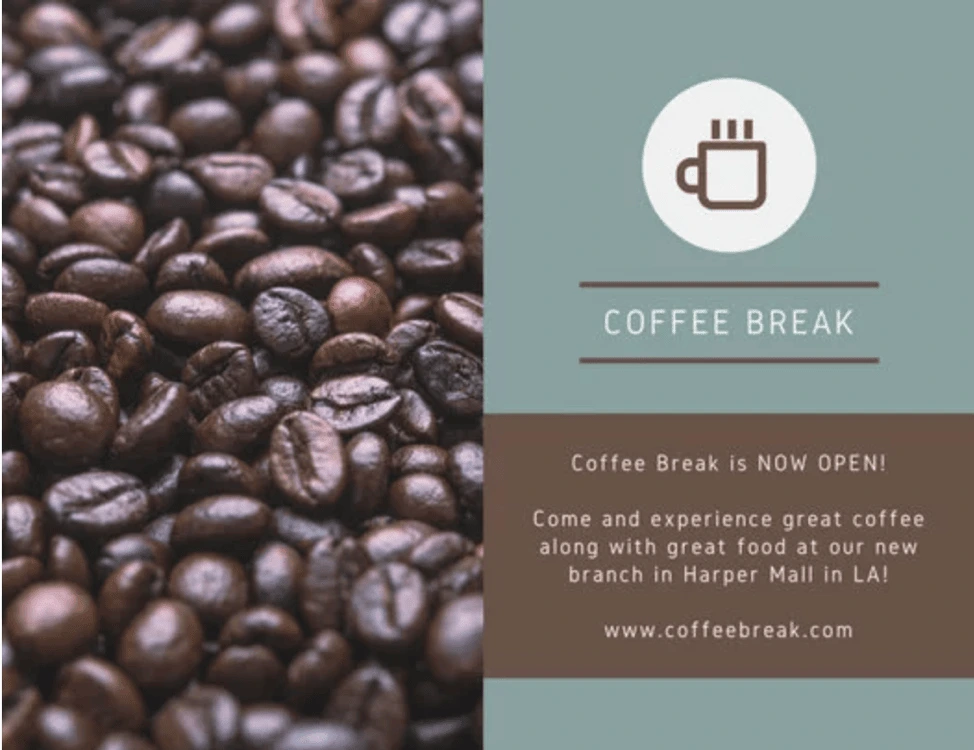
Direct mail pieces have to stand out from the stack of mail that people receive every day. Macro photography is a great way to provide a new perspective on a familiar object—and this direct mail piece from Canva puts this strategy to good use. Rather than a standard cup of coffee, this alluring photo evokes the scent, taste and tactile feel of coffee beans.
Of course, you don’t have to use coffee beans—or any food, for that matter. If there’s an object that represents your brand, product or service, use macro shots to highlight it. If you can use an image that’s personalized to your customers or local area, even better.
Eye-catching colors
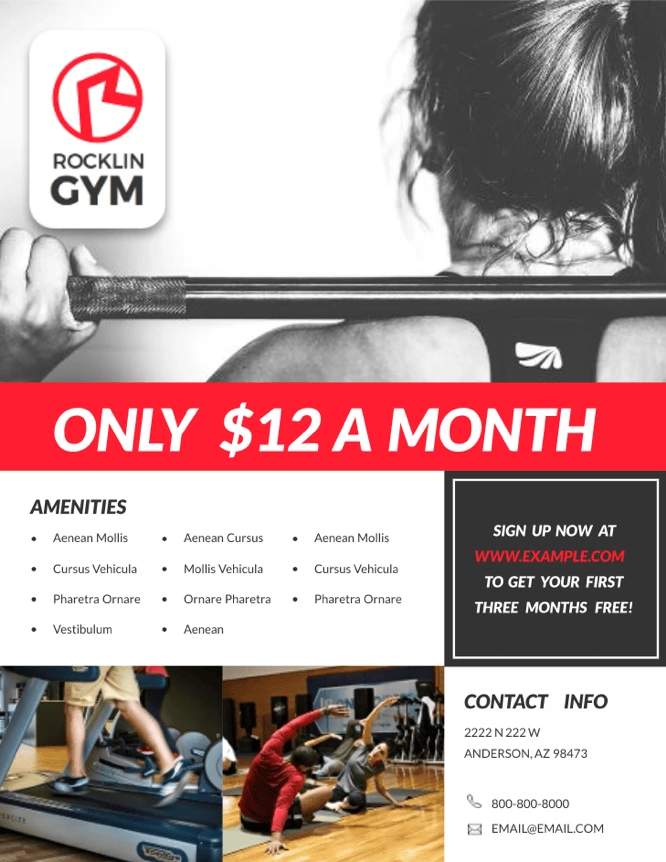
When you look in your mailbox on an average day, what do you see? Probably a sea of white (and off-white) envelopes, most of which look the same. The bright red stripe on this gym fitness flyer immediately stands out and draws attention to the value proposition. Be prudent with your color pops—an overly bright direct mail piece can look tacky and overwhelming. Stick with tasteful highlights like those showcased in this design.
Different shapes

Mailboxes are crammed full of standard envelopes and flyers every day. If your advertising needs to stand out, why not try a different shape? This modern tri-fold brochure will grab people’s attention not only with its color-blocked design, but also with an unusual shape. Folded pieces have a three-dimensional aspect to them, making it more likely to get noticed.
A personalized map
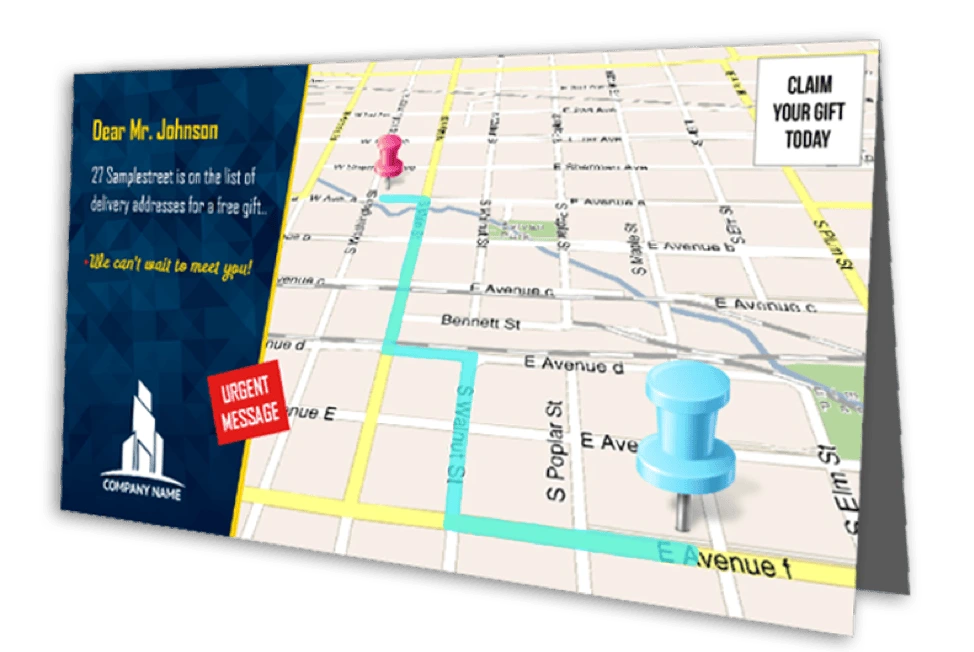
Personalization is a standard digital marketing tactic, but it’s more difficult to achieve in the direct mail space. Maps4Mail solved that by printing customized maps on each piece of mail, showing the recipient exactly where they need to go. The map is intuitive, personalized, and makes it easy for anyone to find your business. This is a great way to show customers you personally value their business as individuals.
If you don’t have the budget for such a granular campaign, you can still try other ways to add a personal touch to your direct mail. For example, you could include something specific to the local area, or you could include your signature.
Unusual materials

Most letters and flyers are printed on the same white paper. That’s not very exciting. If you can find materials or textures that stand out, you’ll have a big advantage over the competition. Heavy or textured paper work nicely, but if you really want to branch out, check this: These postcards from Cards of Wood are (as you would guess) made entirely of wood. Wood you believe it?
3D objects

People are curious creatures, and we’re more likely to open packages that contain objects. If you can get your brand message across with an object, it can serve as a fantastic ad. Amnesty International sent out these pencil chopsticks to encourage people to write to the Chinese government. Thinking outside the box (or should we say inside) can get great results in direct mail because people spend more time with it.
Interactive mailers

Not every brand can afford to design interactive mail pieces—but if you can, there might be no better way to connect with your customer. This piece from BMW had customers cutting a path through a wintery postcard to emphasize the reliability and control of their snow tires. Their combination of an envelope and mailer is great creative thinking.
Gifts
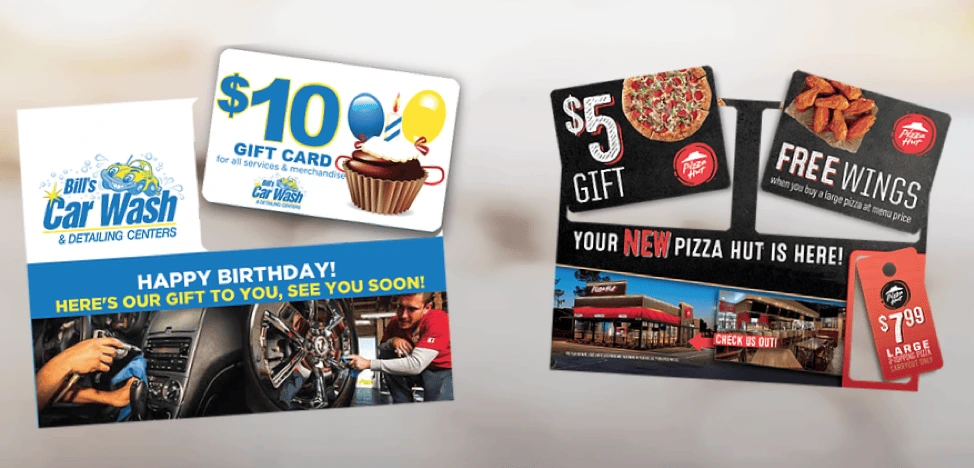
Many direct mail pieces focus on the value brands can provide to their customers—but you’ll have to go further if you want to stand out. A coupon is a good start, but that’s still fairly common. Consider including a punch-out gift card instead. It lets you take advantage of an unusual material (plastic) and give the recipient a gift. A great combination that’s tough to beat.
Key takeaway
People get a lot of mail they didn’t ask for, and different brands will find success with different types of direct mail. The most important thing is to stand out and provide real value to your audience. These examples should get your creative juices flowing and inspire the best direct mail campaign for your own marketing goals.
Ready to create your own direct mail designs in minutes? Check out our direct mail postcard templates.
The rapid rise of digital media—and the simultaneous decline of print media—has been glaringly obvious. Given the clear success of online methods like social media marketing, pay-per-click advertising, and search engine optimization, it’s not surprising to learn that many businesses are increasing digital spends.
Related: Why print will never die—Print vs. digital collateral
In terms of boosting brand awareness, digital is an obvious choice for many marketers. After all, more than three-quarters of Americans shop online. With digital, you can see which content is viewed most, where visitors spend their time, and when conversions have taken place…
…all benefits that we simply don’t see with print advertising.
Yet an important question remains: Is digital everything? Is digital enough to build brand awareness? There are subtle hints in recent studies that point to a surprising conclusion. Rather than going all-in on one or the other, your brand awareness might benefit most from a dual-approach. Let’s set the scene.
Is print media dead?
Remember how excited Amazon was when it launched the Kindle? Well, overall, eBook readers haven’t been anywhere near as successful as initially thought. In fact, eBook reader sales are in decline as readers prefer the look, smell and feel of a real book. The importance of tactile experiences in awareness & engagement is a factor we can’t overlook.
Print media and digital can’t always be described as standalone entities. Consider where digital would be without print. Alive? Sure. Alive and kicking? Probably not. There’s a lot of overlap between the two—QR codes, for example—which leads many to wonder whether a significant portion of digital’s success can be traced right back to print.
Ultimately, it seems that printing services are not as dead as they first appeared. Reports suggest that, while 88% of audiences will view a print ad for 2.8 seconds, only 4% of digital ads are viewed longer than 2 seconds. 35% of digital ads receive no views at all, a wasted opportunity that might be reclaimed with print ads.
Why use print to boost brand awareness?
Well, it comes down to how the brain works. Believe it or not, the brain seems to have a natural preference for printed materials.
Here are three scientific studies that show how effective print can be in boosting brand awareness.
Study #1: The emotional connection
Branding agency Millward Brown found that nothing compares to the emotional connection formed through print media. The agency claims that print leaves a much deeper footprint in the mind due to that personal, emotional bond. The study found that the parietal parts of the brain—responsible for absorbing and storing visual information—were more active in response to print ads than digital ones.
Study #2: Ease & simplicity
Neuromarketing firm True Impact has found that the average person uses 21% more cognitive effort to process digital information than print, suggesting that print materials are quite literally easier to absorb. The report backs its findings by demonstrating that 75% of those exposed to a print ad can successfully recall the brand at a later date, compared to just 44% of people who would could recall the same information after a digital ad.
Study 3: Out-performing across the board
In a study of direct mail conducted on behalf of the U.S. Postal Service, print media was found to out-perform digital materials in nearly every area. Print was the clear winner in terms of review time, stimulation, memory, speed, confidence, desirability and valuation. The only area in which digital performed better was gaining initial audience attention. Print materials can be tailored—personalized direct mail, for example—to combat this issue and come out on top.
Print vs. digital: Which is best?
Digital media has some clear advantages over print media. But looking at the research, it’s obvious that print still has a firm place in the marketing world. That’s why a number of businesses now focus on cross-media advertising, combining both print & digital to effectively and efficiently raise brand awareness.
By combining both methods, brands are able to target a much wider audience. Consider that, while 58% of newspaper subscribers prefer print, 28% say they are digital-oriented. There’s definitely a number of audiences who prefer print, so modern brands should reach out to these audiences, rather than isolate them.
Perhaps the best way to use both print & digital is to consider the unique advantages of both. Through multiple channels, you can reach multiple audiences and deliver your brand’s story. Consider reaching audiences with impressive print media, then create a more personalized experience through real-time, interactive digital media.
Ready to design your own cross-media campaigns? Lucidpress makes it easy to create beautifully branded content in a matter of minutes.
If your real estate business is growing, it’s only a matter of time before you’ll need to reevaluate your marketing strategy. “Growing pains” are definitely real, and your agents will feel the squeeze as you try to scale your marketing efforts for larger audiences.
Related: Should you hire a real estate marketing agency?
When you find yourself at this point, it’s time to automate. Real estate marketing automation software will save agents time and help you reach and nurture leads more effectively. It handles many complex tasks that are either too difficult or time-consuming to do on your own. But like any software, it comes with serious considerations, such as cost and learning curve.
In this post, let’s go over what marketing automation is, how it can help your real estate business, and how to choose the right software for your brand.
What is marketing automation?
Marketing automation is the process of automating certain repetitive marketing tasks. It’s designed to support multiple channels, so your marketing efforts (and your brand) stay consistent across the board. Most marketing automation platforms support websites, emails, and social media.
Marketing automation use cases
Let’s go over a few examples. Here are some of the ways agents can use marketing automation software to work more efficiently.
Reduce cart abandonment. Imagine you sell products on your website. It could be branded merchandise, online courses, or real estate services.
Ideally, when someone adds an item to their cart, they will complete the transaction immediately—but, that’s not always the case. They may have been looking for more information, like shipping prices, before making their decision. Or, maybe they realized they can’t afford to pay today.
Either way, the result is an abandoned cart and lost sales.
Marketing automation software can help you capture this information and add this lead to your database. Then, you can target this lead with a follow-up email that encourages them to return to their cart and finish the sale. You could provide them with a discount, free shipping, or some other enticing offer. This email could be the key to persuading the buyer to complete the sale.
Nurture your blog subscribers. If you’re investing time and resources into content marketing, your goal is to engage an audience who may not be ready to buy today, but they will be in the future. Maintaining an active blog is a popular way to build an engaged audience of subscribers.
So, how do you move these people toward sales?
Real estate marketing automation can help agents set up email campaigns to nurture those blog subscribers. You can even divide your audience into segments and send them relevant, customized content—like local listings. Regular contact will keep your brand top-of-mind, so they think of you first when they need an agent.
Identify leads who are ready to buy. Sometimes, it’s hard to track all the leads in your system and prioritize the ones most ready to buy. You don’t want to miss a sales opportunity while it’s hot, so you decide to prioritize leads who’ve completed certain actions on your website.
But… which activities should you track, and how?
A good marketing automation program will provide reliable data on the actions that demonstrate high interest:
- Landing page visits (such as visiting your pricing page more than once)
- Email opens (like opening a demo email, but not clicking through)
- Lead scoring (assigning a number to a lead based on how many actions they’ve completed)
Based on this information, you can be confident that you’re reaching out to a real estate lead at the right time.
Benefits of marketing automation
Now that you understand what real estate marketing automation is and how it can be used, let’s review the benefits.
Marketing automation software saves time. Creating customized campaigns won’t take as long as it used to. Because your agents don’t have to spend time performing repetitive marketing tasks, they have more time to spend face-to-face with clients—closing more sales.
It makes your advertising more effective. Because marketing automation software uses data to make decisions, you can be more confident that your message is reaching the right people at the right time. From email automation to SMS messaging and mobile push notifications, this software streamlines a variety of marketing techniques, so agents can focus on getting the best results from each.
It makes marketing management easier. Before automation software, agents had to spend hours every week performing repetitive tasks and sifting through the data—introducing many chances for error. Now, a program can manage these things for you, and all you have to do is maintain and optimize your campaigns.
Lead gen best practices
If you’re interested in marketing automation for real estate, you’re probably already generating a fair number of leads. If not, you might want to get your lead generation efforts up and running first, so you can get the most out of your real estate automation software.
In either case, it’s never a bad idea to review lead gen best practices. What makes a good lead generating strategy?
Move leads down the funnel. Remember the classic customer conversion funnel? It describes the journey a buyer makes through the stages of awareness, interest, desire and action. For each stage in this funnel, you should have landing pages and content to match. For example:
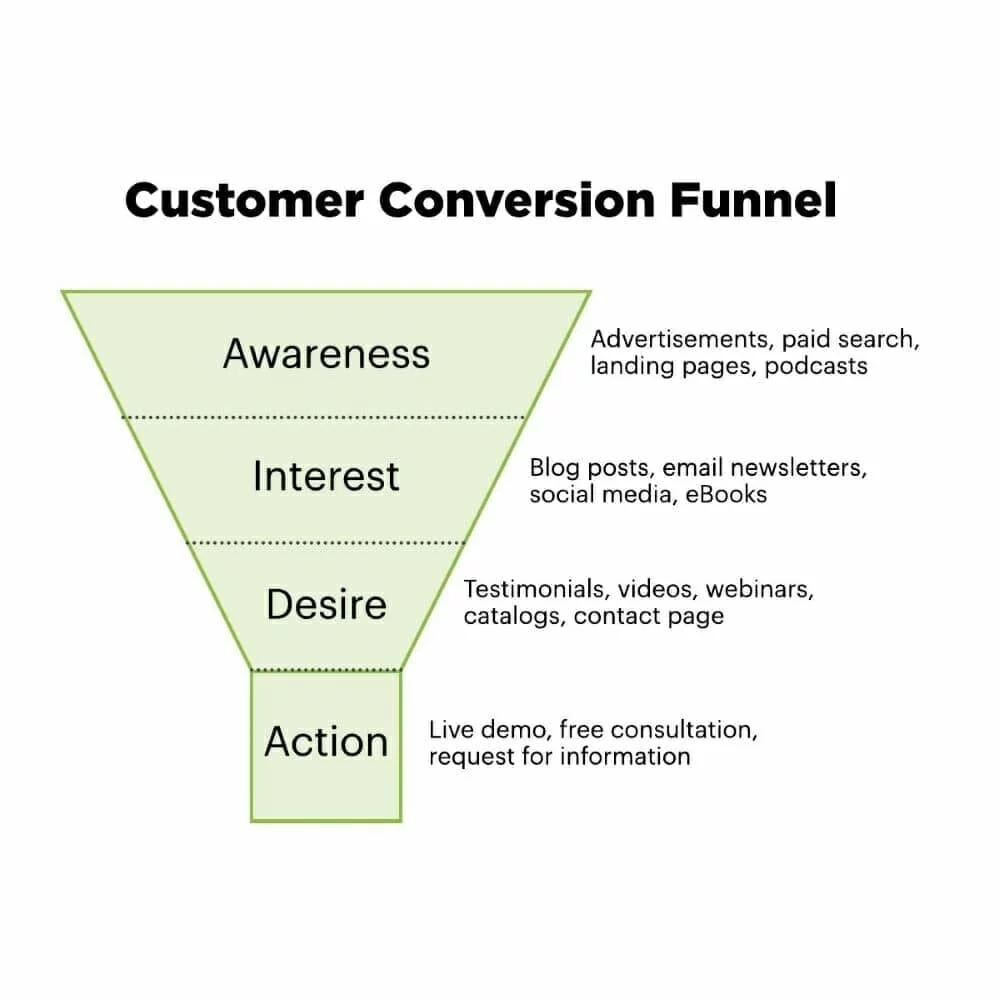
When you have all these pieces in place—and you use clear calls-to-action to connect them—buyers will move seamlessly through the stages with fewer obstacles and objections. Marketing automation software can help you manage and deliver that content, so your leads don’t get lost or go cold.
Build your own email list. If you’re just starting out, it’s tempting to purchase email lists. But when you buy a list of addresses, you’re getting the same tired list that many other agents have used before you. Bottom line—it will never be as effective as the list you build yourself.
Make it easy for people to subscribe to your blog and email newsletters. Put sign-up links on your website, blog and social media channels. Collect email addresses from clients and prospects you interact with, then add them to your email list. Offer incentives to sign up for your email (e.g. coupons, sweepstakes, listings info), and remind people about it both online and offline.
Because this list is targeted and unique to you, you’ll enjoy better open rates, click-through rates, and conversion rates.
Maintain brand consistency. It’s often said that a prospect requires 6 to 8 “touches” from your brand before they become a lead. These touches can come in the form of advertisements, listings, webpages, emails and social media posts—all different channels.
If your brand identity & messaging aren’t consistent, you risk losing and confusing your audience. That’s why brand management is so important. Make sure agents are all using the same brand assets (colors, logos, fonts) and messaging (voice, tone, offers). The consistency will help buyers recognize, remember and trust your brand.
Related: The complete real estate marketing guide
Which software do you need?
To figure out which real estate marketing automation software to use, you have to ask yourself a few questions. The answers will provide a rubric for evaluating all the options out there.
Am I using inbound or outbound marketing? Generally speaking, there are two types of marketing: inbound and outbound.
You can think of outbound as “push marketing,” where you push a message out into the world (e.g. advertisements) in hopes of attracting the right people to your brand. Outbound marketing includes:
- Print & broadcast advertisements
- Direct mail
- Paid social ads
- Paid search & display ads
Conversely, you can think of inbound as “pull marketing,” where you publish and distribute messages (e.g. web content) that interested buyers search for online. Inbound marketing includes:
- Blogging
- Organic social media
- Organic search
- Emails to your list
Which strategy do you use most often? In reality, most real estate brands will use a mixture of both. Outbound marketing is good for building initial brand awareness. Inbound marketing is good for driving qualified leads. Both can contribute to a healthy sales pipeline.
Determining what type of marketing you use the most can help you prioritize which automation software to consider. Some specialize in one or the other, and some cover both.
Which channels do I use (or want to use)? This question dives a little deeper than the last. Rather than thinking in broad categories, get specific about the marketing channels you want to automate.
Different software will specialize in different channels. Make a list of the channels that are “must-haves” and “nice-to-haves.” Your lists could include:
- Website actions
- Social media
- Content publishing
- SMS messaging
- Mobile push notifications
As you can see, the potential of real estate marketing automation goes far beyond email. But, not every agent will need all the bells and whistles. As management, it’s up to you to decide which features are most relevant for your agents. Then you can filter out the software that doesn’t meet your needs—or, perhaps, far exceeds them.
What tools do I need to integrate with? Chances are, you’re already using a slew of programs to manage your business. Marketing automation could replace some of those, but of course, not all. It’s important that your marketing automation software plays nicely with the other tools you’re using.
Linking your marketing automation software to other tools will increase its usefulness. They provide useful data your software can use to make decisions.
Examples of tools you could link to your marketing automation software:
- Salesforce (CRM)
- Microsoft Dynamic (CRM)
- Google Analytics (data)
- Kissmetrics (data)
- Facebook (social)
- LinkedIn (social)
- Eventbrite (events)
There are thousands of examples (just glance at Hubspot’s integrations page to get an idea!). Take a close look at which tools you could replace with marketing automation and which tools you’d need to integrate.
Related: Real estate marketing software that outperforms competitors like Imprev
Important evaluation criteria
It’s not just the software that you’re evaluating—there are other reasons to choose one program over another. Here are a couple of additional considerations.
Implementation and ramp-up. Setting up a new software is not an easy task, especially one as complex as marketing automation software. (Switching from one software to another can be even harder, as we learned here at Lucidpress when we switched from Hubspot to Marketo.)
Make sure you have a plan and a timeline for implementing the new software: importing data, connecting tools, adjusting code, and setting up initial campaigns.
Also think about the ramp-up. Which campaigns are absolutely necessary to get started? Which ones can you hold off or pause while you get up to speed?
There’s also adoption: Who needs to learn and use this software regularly? Make sure you have any training resources you need, and that all agents are on the same page.
Service and support. If something breaks or doesn’t work, who do you call? If you’re comfortable troubleshooting yourself—or if you have an IT person—you might not need additional support from your marketing automation provider.
But if you’re not, it’s worth asking about services and support. What’s included in your subscription? If your agents need more help or training, is there an extra cost associated with that? How responsive is their team? You can include all of these in your evaluation.
Marketing automation comparison chart
Now that you know what marketing automation is and how it could help grow your real estate business, it’s time to start evaluating providers. We’ve chosen a handful of software programs that are popular with real estate brands and compared them below.

View and download this table here.
To find out more about the 7 programs in our chart, visit their websites:
You can use this as inspiration to create your own comparison chart in Lucidpress, Google Docs or Excel. This will help you keep track of the marketing automation software you research, so it’s easier to make your final decision.
Your brand matters. Learn how to protect and elevate your real estate brand in this branding essentials guidebook.
Higher ed is getting social. With such a large audience, from students, prospective students and faculty to alumni and sports fans, the potential for social media in higher education is huge.
Benefits of social media in higher education
Student recruitment
It’s a well-known fact that younger generations use their phones more than older ones. This is where they conduct research on products, services and organizations. Universities can (and should) take advantage of this for recruiting. If universities want to attract students, then they need to have an engaging brand presence online.
Related: How to take charge of your university’s branding
Build your brand
Social media can be a powerful tool for building brand awareness. From highlighting new research to showcasing student projects and achievements, higher ed social teams can play a powerful role in attracting potential students, faculty and donors to the university.
Boost student engagement
Engaged students are more likely to stay enrolled and graduate. They are also more likely to become brand advocates encouraging their friends, family and children to participate with your university in the future. Taking a fun or lighthearted approach with content on Instagram or Tik Tok will resonate with students in a way that official announcements won’t.
Higher ed social media strategies
Establish your brand
Whether your higher ed team has been using social media for a while or is completely new to it, you should make sure that your brand is well-represented on your social media accounts. You never want potential students to come across your profile and wonder if it’s the university’s actual account. It should be obvious. Some things that will help establish your brand on social media are:
- Username/handle: Keep usernames the same across all platforms. This way, students can easily find you on Twitter, Facebook, Instagram and any other platforms you’re on. If you’re concerned about being able to register the same username across all platforms (and don’t want your handle to end up like @Lucid_press0018), here’s a tip. You can create accounts on new social media platforms, even if you don’t want to use them yet. Later on, if you find that your audience is using that platform, you’ll already have the username.
- Images: Just as usernames should be the same across platforms, your profile pictures should be easily identifiable. Along with your profile picture, using similar colors (such as school colors) in your images will further affirm your identity. A tip regarding the images you post: choose one or two photo filters that fit your brand, then only use those filters on any images you post. This creates a uniform look for your content that will be recognizable to your audience.
A great example for establishing your brand on social media is Coca-Cola. All of the Coke accounts feel familiar. Each picture uses a similar filter that’s cohesive with their branding, and you can see red in all of their images.
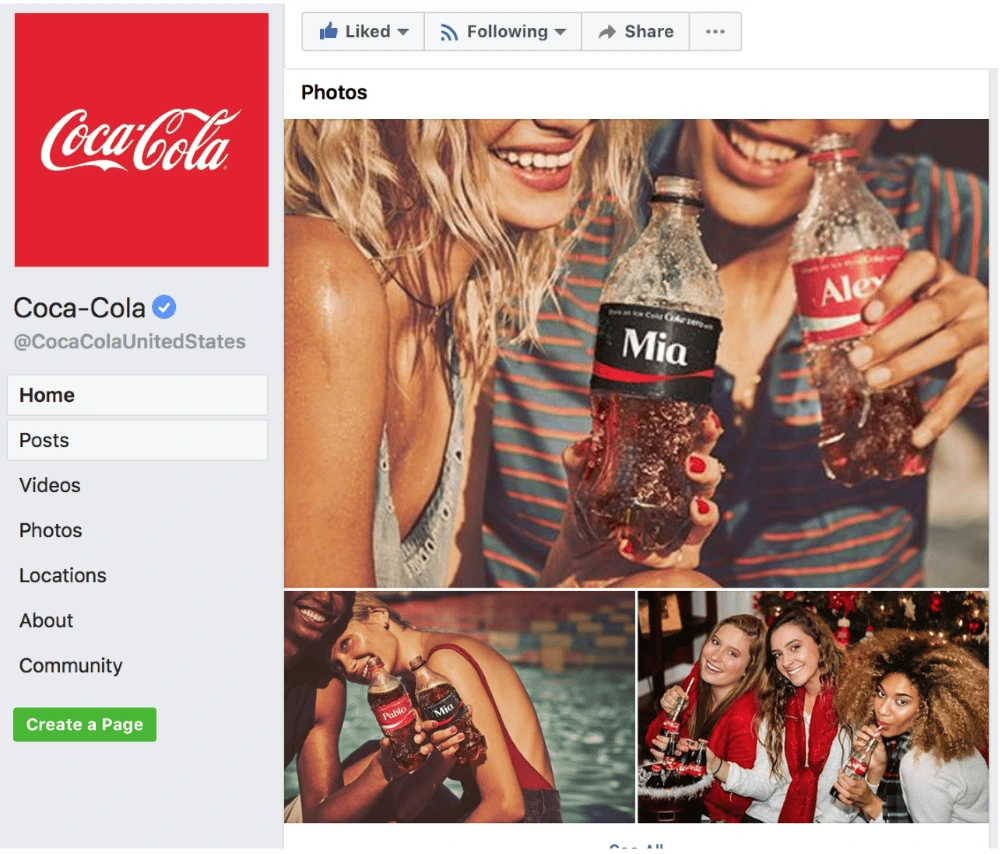
- Bio: Most social media platforms offer a place to include a bio for your university. Don’t waste this space. Bios are an excellent opportunity to show students what’s important to the school. You can even include a link to a page where interested students can learn more about the university (for example, by signing up for a newsletter).

- Tone & voice: Before you start posting, decide what your brand voice will sound like online. Will you be dry and professional? Will you use slang? The same goes for finding the right tone to use in your posts. Will you be happy, neutral, silly, snarky or witty? These decisions will shape your brand as people come to associate that voice with your university.
Speak to your audience
When it comes to social media, go where your audience is. Post content that’s designed for the platform and meaningful to them.
- Use the right networks: Are prospective students using Instagram, Snapchat or Facebook? Find out where your audience is, and start building a presence and community there. Some platforms might seem difficult to use as a university, like Snapchat. This is where you get to be creative and connect with students in innovative ways that no other universities are using.
- Create content specifically for your audience: What do potential students want to know? Share successes your school has experienced, student activities on campus, tips for prepping for college, what to bring to a new dorm room, what research is happening at your university, etc. Find out what your students are curious about, and create content that’ll be interesting and useful to them.
Harvard University’s social media often posts student-related stories that are relatable to other students. By focusing on the students, it shows that they come first at Harvard. Here’s an example of a personal story that was shared on the Harvard Facebook page:

Key takeaways
Social media is no longer a “nice touch” for your higher ed marketing plans; it’s essential to establishing your brand online. Build your profiles with consistent usernames and imagery. Create a guide for staff members that includes the colors, photo filters, logos, tone and voice to use in university-branded social media to maintain consistency.
Finally, make sure that you’re on the right platforms, sharing content that’s engaging for your audience. Use the same voice in comments, personal messages and public posts. Be where your future students are, and give them a reason to notice your university.
Marketing is getting tougher and tougher—there’s no doubting that.
With 41% of brands planning to significantly increase their marketing budgets this year, and customers becoming choosier than ever, you wouldn’t be alone if you’re exploring new techniques to get more out of your marketing cash.
Related: The complete real estate marketing guide
One strategy you should consider is SMS marketing, the process of sending short text messages to your ideal customers in an attempt to engage them with your campaign and get them to convert.
Even though average open rates for SMS messages beat email by a whopping 28%, your real estate company sells homes for a large price—unlike small-ticket items that can be purchased on a lunch break.
So, how can you make text message marketing your biggest driver of website traffic, leads and sales?
Here are the five steps you’ll need to build out your mobile real estate marketing strategy, as well as two brands who are already killing it with their text messages.
1. Determine who you want to contact
Just like any marketing strategy, you’ll need to base your mobile marketing campaign on buyer personas—a clearly defined document that lists details about your ideal customer.
For real estate companies selling student accommodation, that might include:
- People with less than $20,000 to spend
- Between the ages of 18 and 25
- No long-term commitments
- Currently living within 5 miles of the local college
Once you’ve got this to a T, you’re left with a bunch of shared interests. Use this information to find the people you want to target with your text messages.
2. Collect their information
The next step in your real estate text message marketing strategy is to collect the information of the people you’re targeting. You can do this by taking advantage of your other marketing strategies.
For example: why not run a Facebook ad, using the details you defined in your buyer persona, to encourage them to fill in a form? (You might need to offer an incentive to do this, such as a free ebook or a guide to purchasing a new home.)
But once you’ve got their information, don’t push the Send button just yet. You’ll need to have explicit permission from your prospect before sending an email, or you could land a hefty fine—and an unhappy buyer.
3. Choose an SMS marketing platform
While purchasing a new phone to send out your new messages is a great way to get started, it’s wise to invest in an SMS marketing platform from the outset.
That way, you can:
- Track various metrics after you send, including open and response rates
- Send SMS messages in bulk
- Personalize each message you’re sending
- View your strategy online, and share with other staff on your marketing team
Platforms like Text Local, Text Request and Textedly can help with this, just to name a few.
4. Select a text messaging schedule
Gotten to grips with your new software? Awesome! It’s time to make a start on your text messaging schedule.
You’ll want to put some thought into the time of day you’re messaging your potential buyers, and the day of the week they’re being delivered.
Why? Well, because texting your customer at 11pm could frustrate them—they’re likely to be asleep. However, sending an SMS message at 5pm could reach your customer when they’re on their daily commute with time to respond.
Find the perfect schedule by referring back to your buyer personas and filling out a daily routine for them.
Remember: You want to push your messages at times they’re unlikely to be busy—and have time to invest into their search for a new home.
5. Perfect your messages
Before rushing off and sending the first message that comes to your head, take some time to think about what you’re actually sending. You don’t want to send 10 messages only to find a spelling mistake, right?
Use key copywriting principles to make your sales messages as effective as possible, and focus on replicating your ideal customer’s language.
Going back to our example of student accommodation, this example:
“Ready to let your hair down at this years’ Homecoming? Make sure you’ve got somewhere safe to call home. Reply PARTY to find five local student dorms near Stamford from just $200/month.”
…would be much better than:
“With stunning high ceilings and low-interest mortgages, find student accommodation near Stamford to help with your studies. Reply YES to opt-in.”
Why? Because it’s avoiding the overused jargon that would push them away and making your real estate brand feel more relatable.
2 awesome examples of real estate companies using SMS marketing
Ready to make a start on your SMS marketing strategy and see tons of new leads roll in?
Here are two awesome examples of real estate companies nailing their text message marketing strategy to provide inspiration for your own.
1. “Text for more information”
Earlier, we listed collecting your potential buyer’s information as a key part of your SMS marketing strategy.
…But, what if you could collect their information by asking them to hand it over in a way that suits them?
This real estate company used this idea on one of their “for sale” signs, asking potential buyers to text a number for more information on the listing. It’s a fantastic way to personalize the texts you’re sending—and make sure you’re only focusing on people who are actually interested.
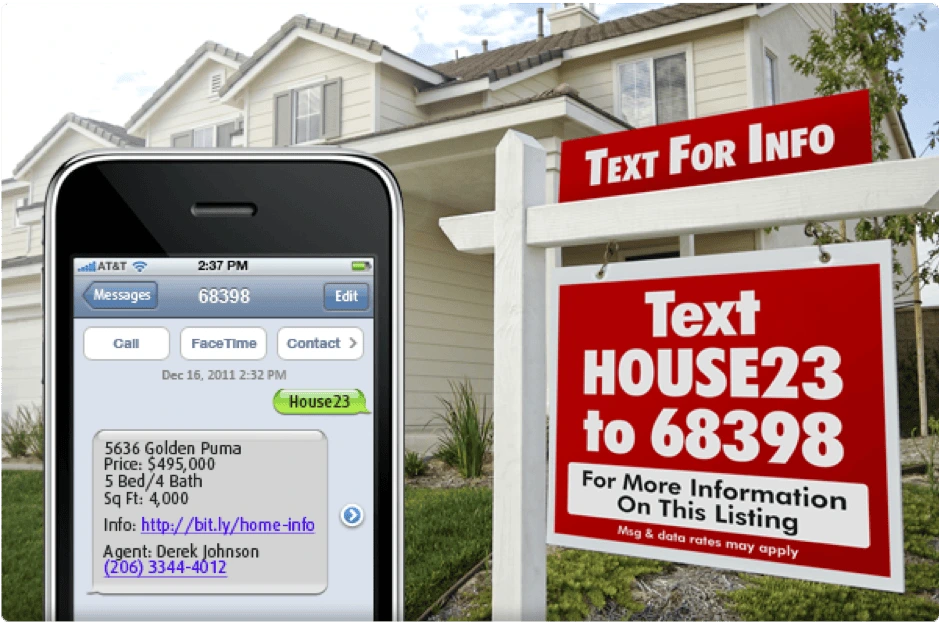
2. Asking for more information
Another fantastic way to engage your potential real estate buyers through text is to ask them for more information, based off the data you’ve already got from them—like this example:
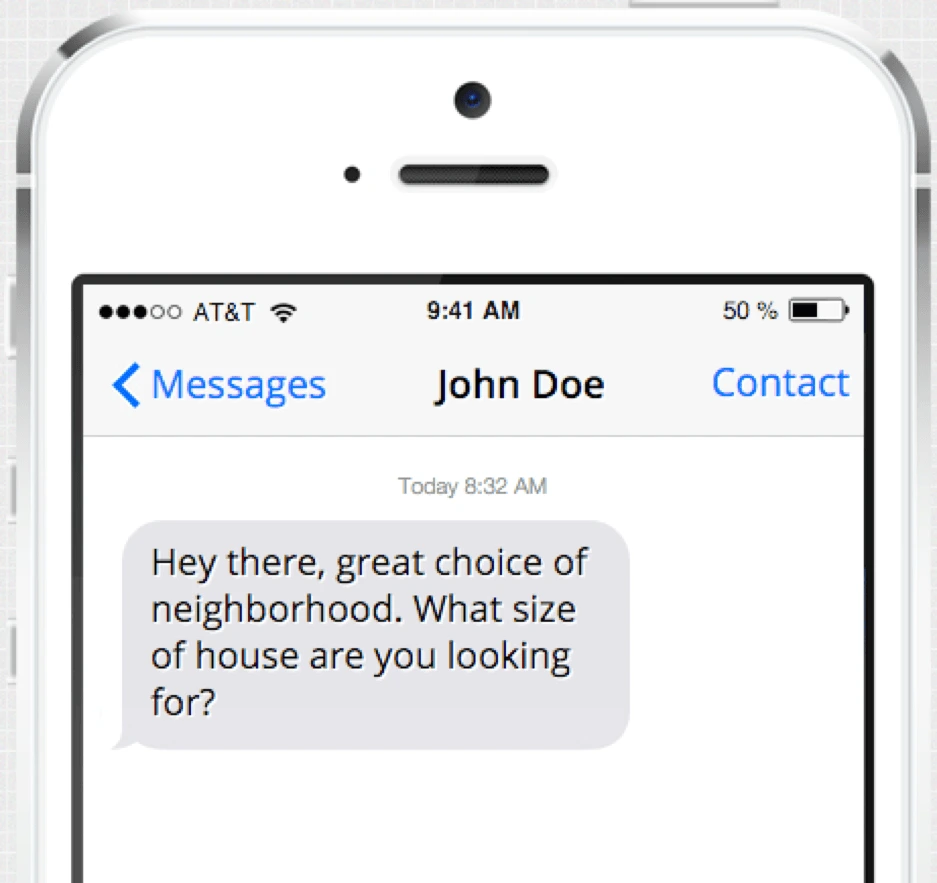
But, why does this work so well?
Well, the prospect doesn’t feel like they’re being contacted by someone out of the blue. They’ve mentioned previous information that’s already been shared (the choice of neighborhood), while asking for more in a way that prompts a response.
Key takeaway
Once you’ve made a dent in SMS marketing for your real estate company, we’re confident you’ll soon see a boost in new inquiries about your properties.
However, don’t forget that it may take some time to see results from your text message marketing strategy. Collecting customer information and perfecting your message can take a while, but don’t give up—you’re almost there.
Your brand matters. Learn how to protect and elevate your real estate brand in this branding essentials guidebook.
Have you spent thousands of dollars on direct mail campaigns with no luck?
You shouldn’t chalk it up to failure just yet. Every great marketing campaign has a solid follow-up campaign behind it.
Sending out three months of direct mail, expecting a deal to happen, and giving up is not creating a business. It’s dabbling.
On average, it takes 12 touches for a deal to happen. However, 44% of people trying to get a deal under contract give up after the first follow-up.
Related: 5 best practices of highly effective direct mail marketing campaigns
I see a lot of real estate investors sending direct mail to find off-market deals. The biggest hurdle most have is that they spend hundreds or even thousands of dollars on a direct mail campaign without obtaining any leads. Then, they send out the same campaign again the following month with the same results.
This is when most people either quit sending direct mail or buy a new list to mail because the old list “wasn’t working.” Not getting any leads from mailing a list doesn’t mean that the list didn’t work—it just means the people you were mailing weren’t ready to sell. Direct mail marketing in real estate is all about timing.
To get a consistent pipeline of deals, you have to implement a great follow-up campaign. This article will walk you through how to set your follow-up strategy.
Following up across multiple channels
The strategy outlined below uses multiple channels to complement your direct mail campaign.
Don’t worry, it’s not going to cost you much more. In fact, it’s going to make those 12 touches a little less burdensome on your budget. Let’s dive in.
Build the right list for direct mail
The first step, of course, is to send out your direct mail. To get rolling with this, start by pulling the list that you’re going to mail.
You can use a list service company like ListSource to purchase a list of people to mail. The types of lists you should be targeting are problematic lists like:
- Probate
- Foreclosure
- Tax-delinquent
- Divorce
- Vacant house
Make sure that you’re filtering out people who have little to no equity. To do this, set your filters to include people with 60-100% equity in their property. This will give you enough breathing room to get the property at a discount.
The other criteria you need to meet is Last Sold Date. We’ve had people call us and say, “I just built this house for retirement three years ago. There’s no way I’m selling it.” Granted, this may not always be the case, but we set our Last Sold Date to 8 years ago or more.
Figure out your farm area
Figure out what your farm area will be starting out. Remember that you have a smaller budget, team, and amount of time as you build momentum. Your farm area will grow as your deal flow grows. Focus on mailing an area that you can comfortably mail consistently every month.
If you work in an office, figure out the radius you want to farm around your home and work. Starting out, we chose a 20-mile radius. The distance isn’t what’s important—it’s how long it takes you to get to the houses within this radius. You don’t want to miss deals because you’re spreading your leads out too far and can’t get to all your appointments quick enough.
We recommend keeping it within 45 minutes. This will give you time to schedule multiple appointments each day as you consistently mail homeowners over time and the lead volume increases.
There’s a cool trick on Free Map Tools that lets you drop a pin, set your desired radius, and get a list of all zip codes within that radius. With this, you can easily pick the zip codes for your farming area around your workplace and home.
Optimize your postcards
What you put on your postcards is up to you, and how postcards perform in each market varies. For our market, plain white postcards with a handwritten font perform the best. (When your prospect has a stack of ten postcards that look like ads and one that looks like a hand-written note, which do you think will stand out more to that person?)
Regardless of the design, make sure you include your company’s name along with your website. The people receiving these postcards will check to see that you’re a credible company before doing business with you. We put Breyer Home Buyers and www.eastatlhomebuyers.com on all our postcards to make it easy to find us online.
If you’re sending direct mail solely to people who are going through a divorce, then you can create a divorce landing page with a URL like www.yourcompany.com/divorce. This gives you the option to retarget visitors using Facebook Ads and Google AdWords. You can do this with any mailing list: tax-delinquent, vacant houses, foreclosures, etc.
Call recipients about your postcard
Your list provider can give you phone numbers for contacts within your farm area. If you keep them in an Excel spreadsheet, you can upload them into a dialer like MOJO. MOJO lets you call hundreds of people in a very condensed timeframe. For our business, we average 71 calls per hour. Of those 71 people, we reach around 30 per hour. We use virtual assistants to call for us, which saves our company significant amounts of money.
To use MOJO, you’ll need a Skype account. MOJO connects to Skype so you can make calls within the U.S. for free, even if you use a virtual assistant.
Remember that when you’re calling prospects to follow up on your direct mail, you should mention your company’s name and that you sent them a postcard. This will jog their memory and make it more likely that they’ll look at the postcard again.
Retarget prospects with Facebook
You can use Facebook and Google Ads to retarget your prospects. Retargeting is cheaper than marketing to cold prospects with these channels. And these prospects have already seen your direct mail, landed on your website, and received a call from you. When they see your ad and click on it, they’re more likely to convert, which provides you with a higher ROI.
The other benefit is that most of us are too busy to immediately respond to marketing. Maybe your prospects were taking their kids out to eat when they drove by the mailbox and got your postcard. Maybe they were waiting on a meeting to start when they looked up your website. Maybe they lost your postcard and couldn’t find you again. Regardless, retargeting helps you pop back up in front of your prospect when they need it most.
Send an SMS blast
There’s no replacing a phone call, but sending a text message is a great way to get in touch with people who don’t like talking on the phone. We use EZ Texting to follow up with people through text. We simply upload an Excel spreadsheet of our contacts, then blast the same message to the entire list.
We usually send out open-ended questions like “Have you sold your property yet?” But, there’s no magic message. The goal is to start a dialogue, so you can make an offer to buy their property.
We’ve gotten several properties under contract without ever speaking to the homeowners on the phone, by doing all the rapport-building and negotiation over text.
Leave voicemails on landlines
Tools like Sly Broadcast let you pre-record a voice message and send it to the phone numbers on your list. It’s important to note that this service only drops voicemails to landlines, not cell phones. Using this in conjunction with the text blast will make sure you’re touching all phone types.
MOJO Dialer also drops voicemails when you’re power-dialing, but the key difference is that you are actually calling someone and will have to speak with them if they answer. With Sly Broadcast, the phones don’t ring, but a voicemail shows up on their answering machine.
Schedule your follow-up campaign
When we’re planning our direct mail campaigns, we schedule the arrival date of those mail pieces—meaning that we know (within one day) when those mail pieces will be delivered. We usually have our mail dropped on Tuesday because our response rates are higher on Tuesday.
Here’s what our follow up campaign looks like:
- Week 1: Direct mail delivered on Tuesday
- Week 1: Begin Google AdWords and Facebook retargeting
- Week 2: Cold call prospects
- Week 3: Text prospects
- Week 4: Voicemail drop
- Week 5: Repeat mailing to the same list
- Week 6: Repeat cold calling to the same list
- Week 7: Repeat texts to the same list
- Week 8: Repeat voicemail drop to the same list
With retargeting, you set it up once and keep it running. We don’t stop the Facebook and AdWords campaigns. Your goal should be to contact each prospect with a phone call, a postcard, a text, and a voicemail drop each month.
Why you should always follow up
Homeowners usually aren’t ready to sell when you first reach out to them. Granted, sometimes we do get lucky and close a deal on the first mailing. But, it usually takes us at least three mailings to get a deal from a campaign.
If you label your direct mail campaign a failure because you haven’t gotten a deal right away, then you risk missing out on future leads and give yourself zero return on your investment.
If you look out over the year and set a goal for 5 deals to get the real estate investing ball rolling, you’ll create a marketing plan to reach that goal. However, if you keep changing your marketing strategy because you haven’t given yourself enough time to make it work, then you’ll never reach it.
Ready to create your own direct mail designs in minutes? Check out our direct mail postcard templates.
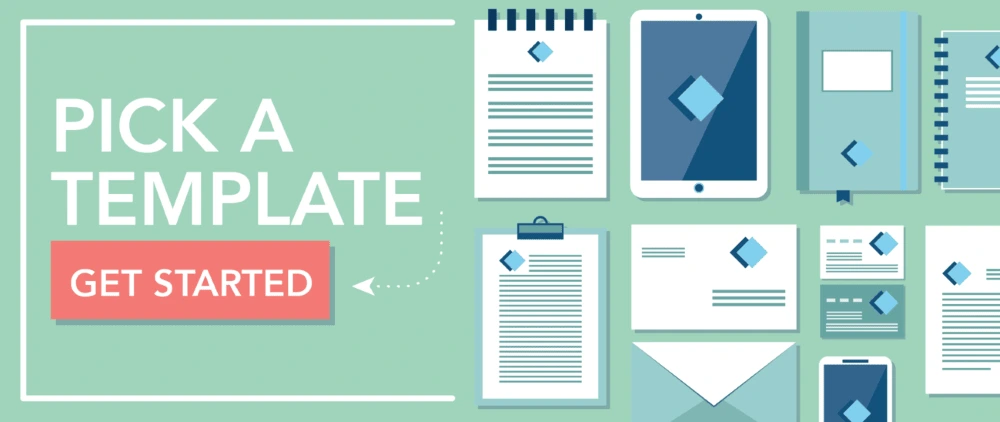
Or, learn more about the new direct mail features in Lucidpress and give it a test drive.
According to Email Marketing Industry Census 2018 by Econsultancy and Adestra, 74% of client-side marketers rate email as an effective marketing channel based on ROI. It’s one of the best ways to reach out to your prospects and generate more conversions.
Related: 11 things to consider before your next email campaign
To use email marketing to its full potential, here are 19 effective best practices to get more responses from your target audience and entice them to take action.
1. Reach out with a purpose
When composing an email, think about what you want to achieve—and from there, decide what information you should include in your message. Going in with vague ideas will most likely lead to confusion and miscommunication, so make sure your emails are always driven by purpose rather than the calendar. Or, put another way: it’s okay to send fewer emails if it means the emails you do send are more impactful.
Each email you send should serve a singular, clear purpose. Asking your audience to do too many things at once will result in them doing nothing at all—an unfortunate side effect of the choice paradox. With one strong call-to-action, you have a much higher chance of persuading your audience to take the next step.
2. Put yourself in their shoes
Step back and take a look at the email you’ve composed. Would you appreciate this email if it arrived in your inbox? Does it offer something informative, entertaining or valuable? If not, you still have work to do.
Here’s an idea: present a problem to the reader and solve it in the email. If you’ve done your homework, you should know your target audience’s desires and pain points. Speaking directly to their experience will be far more compelling than simply advertising your latest sale or blog post.
3. Make it easy for subscribers to contact you
Many times, emails are sent from a “no-reply” address that leaves no way for subscribers to respond. This means you’re missing out on valuable feedback from your readers. Instead, send your emails from an address that accepts replies. It doesn’t have to be yours—consider setting up a shared inbox for an address like marketing@domain.com or blog@domain.com.
Encourage subscribers to get in touch with you, or request a reply through email. However, make sure someone is available to promptly answer them before you implement this.
In all of your emails, include the name of your company along with the physical address, phone number, company website, and links to social media profiles in the footer.
4. Work on your subject lines
Your subject line is like the trailer of a movie. It strongly influences the first impression your subscriber will have of your email. Obviously, you do not get another chance at this. The more interesting the subject line is, the more likely a recipient will open the email. According to research, 33% of people open an email based on the subject line. Use a personalized and compelling subject line that would tempt your readers to find out more.
Short subject lines work best for achieving better open rates. You could even try using emojis to grab your subscribers’ attention. Test your subject lines to see which pulls a better conversion rate and sells more.
Refrain from using buzz words like “You earned” or “Congratulations,” because their overuse leads users to think it might be spam. Be truthful about what you are offering, and let the subject line shine to reveal the real value behind your message
5. Have crisp & engaging email copy
Personalization is an integral part of effective email marketing. Incorporate the principles of personalization to draft relevant, tailor-made emails that match the buyer’s persona and each stage of the buyer’s journey.
For example, if a subscriber has just signed up, it wouldn’t make sense to send them your pricing structure right away. Instead, you can send a welcome email accompanied with a content resource that addresses their probable challenges & pain points—and how you can help resolve them with your product or service.
Avoid technical jargon as much as possible. Rather than describing the features of your product, talk about its benefits. Try to build personal rapport by appealing to the reader’s emotions.
6. Don’t use too much special formatting
Formatting has a remarkable psychological effect on a reader. Use bullet points or numbered lists to organize your content and make it more readable. Refrain from using various fonts and colors—instead, stick to one or two of each. Only use bold, italic or underline to emphasize important words in the copy. The simplicity makes your brand look more professional, and it’s easier to read.
7. Adhere to the brand guidelines
If you want to build a credible brand personality through emails, follow the brand guidelines. In particular, pay attention to the sections on voice & tone. Send frequent emails that are in sync with your personas, business type and industry. Regular email communication will ensure that your brand remains at the top of your subscribers’ minds—but consistency will keep your brand message strong.
8. Create mobile-responsive emails
Responsive emails that function and look great on mobile devices have become almost mandatory. According to a study, 63% of US consumers will delete emails from their inboxes if they don’t open on mobile. Even worse, what if they read your email and want to act on it, but the design prevents them from doing so? Either way, you lose your mobile audience and end up hampering your email response rate. Make sure any outbound links or downloads are accessible via mobile, too. Responsive design will help you reach readers on any browser or device, so your marketing doesn’t go to waste.
9. Use a persuasive CTA
The ultimate goal of a marketing email is to convince subscribers to click on your CTA and take the next action. A strategically placed CTA button with clever copy can make all the difference in your campaign. Experiment with different colors and phrasing. Try action words instead of the standard “Click here.” It’s far more compelling to click a button that says “Download now” or “Get my free sample!”
(And remember: your CTA should be easily tappable on mobile devices, too.)
10. Automate your email marketing
Starting from the time a prospect signs up on your website, and continuing past the time they become a customer, you should trigger-send emails to them according to their interaction with your brand.
When a prospect downloads any resource from your website, you can send them relevant emails to follow up on the content and entice them to respond. Because they’re directly connected to actions a subscriber has taken, these automated emails often have higher open and click-through rates. These emails even give you an opportunity to upsell, cross-sell, re-engage inactive customers, and create a customer loyalty program.
11. Keep it simple
Simplicity and straightforwardness are two key elements of an effective email marketing campaign. Emails shouldn’t be overly cluttered with design elements, but they also shouldn’t be so sparse that they fail to grab attention. Go for a healthy balance between the two and create a comfortable design that pleases the eye. As for the copy, remember that you are talking directly to the reader through this email, so make it conversational but stay professional.
12. Measure performance
We’re in the era of data-driven marketing. You must measure and record the data generated by your email campaigns—not just to see how well you did, but to uncover insights on how to do better. Overall, there are four major elements you should be tracking in an email campaign: opening rate, click-through rate (CTR), bounce rate and response rate. With this data in hand, you can start to measure trends, tweak your strategy, and gain key insights about the reach of your newsletter and how it’s perceived by your audience.
13. Use gorgeous images
Images are a surefire way to make your newsletter more appealing to an audience. The human brain processes visual info much faster than text, and those few extra seconds can make or break the difference between an email that gets read and one that gets deleted. So, choose your images wisely.
Custom graphics in particular offer an opportunity for memorable branding. Follow your style guide to match colors, icons and photography styles. Pay attention to the tone and voice your images convey as well. Stock photos are a fine shortcut, but only if they reinforce the look and feel of your brand. If you’re worried about spending too much time on your images, use a tool like Lucidpress to set up editable templates, then switch out the text and graphics as needed.
14. Try animated content
Animated content is popular with readers, but many brands still haven’t mastered how to use it. If photos are more expressive than text, then videos and GIFs are even more swift at relaying the message. GIFs are also a great way to provide a snippet of a larger video.
You can make the tone of your newsletter lighter by adding GIFs in the body section. Initially, GIFs were almost always used to add humor to content. Nowadays, you can use them in many ways, such as showing how your product or service works. However, there are some drawbacks for animation enthusiasts who are planning to use GIFs in their next email:
- Several versions of Outlook do not support animated content. (Oh, Microsoft.)
- GIFs have larger file sizes, which might slow down the loading speed of your newsletter on older devices.
- If used incorrectly, your brand can come across as insensitive or insincere. Consider asking a few people to read your email before you send it, to make sure your tone comes across as intended.
15. Consider timing
It’s been estimated that most emails are read by people in the evening, the time when they are most free. It may seem counter-intuitive, but sending an email later in the day could result in a higher conversion rate because readers have more time to follow your message.
Since most marketers work during the day, you can use a scheduling tool to do it for you. According to Accelq: “Automation should be integrated into the overall lifecycle, and not a ‘test automation’ silo.” The more you can automate, the less you have to babysit.
16. A/B Test
Any kind of marketing strategy that aims to increase conversion rate should be tested. A/B testing is the easiest (and cheapest) way to check the effectiveness of your strategies.
Testing will help you develop a clear idea of how a campaign is going and how you can improve it in the future. Email marketing campaigns can be hugely successful when you start testing and tweaking any flaws in the interface. You can also validate your hypotheses for things like CTA buttons, images, time of delivery, and landing pages. Here is a comprehensive starters’ guide for A/B testing your emails.
17. Segment your audience
It’s an unfortunate reality: most people who sign up for your newsletter are not going to open it. How do you encourage them to open the email and convince them to convert? Sometimes, you need qualitative data to find out. That’s right: send them an email to find out why they are not opening your emails.
Sound futile? It doesn’t have to be. You can offer incentives and promo codes to lure them in. With the results, you can set up audience segmentation to ensure that various user personas are targeted differently through your email marketing campaign.
If an email survey doesn’t sound like your bag, you can also collect this data via phone calls or personal interactions with your customers. Regardless of how you do it, you need to create targeted, personalized emails for your readers. “One size fits all” doesn’t work anymore. [ ]
18. Build relationships
When someone subscribes to your newsletter, they’re agreeing to an ongoing relationship with you. You need to show that you value them, that you care about their problems and choices. This applies to every part of your email: the graphics, the copy, the offer, the tone. Use your findings to consistently improve your email campaigns and serve your customers better than before. Build a relationship that makes them proud to be your brand’s loyal customer.
19. Proofread and test your emails!
So many people forget (or choose not) to do this, leaving mistakes in their content which make them seem unprofessional. Definitely not a good look for anyone, this can be prevented with a simple process called… proofreading. Simply reading your work goes a long way toward catching any grammar mistakes you have made, which will save you a load of embarrassment. No one wants to discover that they misspelled a word in an email to their entire customer base.
How about another pair of eyes? If you want someone to see it fresh, you can ask someone else to do it. You could even hire an online freelancer to get help from a highly qualified person. Sure, it costs money, but it might be worth the peace of mind to know your emails are top-notch.
Finally, send yourself a test version of your email. See how it looks in different browsers and on different devices, including desktop and mobile. A formatting error which is unnoticeable in Chrome might be egregious on iOS, so it’s better to cover your bases before you hit send.
Key takeaway
Getting more responses to your marketing emails is not an impossible goal. With the right techniques, you can stand out from the competition, create lasting impressions of your brand, and build relationships with your readers through their responses.
Kickstart your next email marketing campaign with our free newsletter templates.
When you send out direct mail to prospects in real estate, it’s inevitable that you’re going to get calls from seemingly unmotivated people. If you’re not drawing motivation from your leads, then your competition will be converting your leads instead of you.
Related: How to follow up your real estate direct mail campaigns
Based on the process I use for my own business, this article will teach you how to answer calls from inbound leads and how to handle appointments.
Follow a call frame
A lot of gurus will provide everyone with a script, but if you’re following a script and the conversation steers away from it, you’re going to sound salesy and unnatural to your leads. You need to have a frame to work with rather than an exact word-for-word script, because the nature of your calls will be dynamic.
We follow a call frame that looks like this:
- Set your time frame.
- Set your agenda.
- Determine your outcome.
This makes your conversations feel more natural, giving you room to implement strategy as the opportunity occurs (instead of trying to bend the conversation to your will).
Set your time frame
Whether someone calls you in response to your direct mail campaign or you’re just returning their call, the prospect has no idea what to expect. Our goal is to inform them, so we put them more at ease.
Of course, sometimes the timing isn’t ideal. What if your prospect was taking a break at work when they called you, and by the time you call back, they’re hiding in their cubicle and whispering to avoid being overheard? You won’t be able to take them through the entire sales process on the call, cutting yourself short.
To avoid being cut off, we always begin the call by letting them know it should only take about 5 to 10 minutes, and we make sure that works for them. Most of the time, it does. On the rare occasion that it doesn’t, we schedule a time to call back when they’re able to talk. We want their full attention—so they aren’t focusing on when they have to get off the phone.
An example of how this introduction might sound:
“This call will take me 5 to 10 minutes to answer all of your questions, ask you some of our own questions about the property, and explain what the process will be moving forward if we decide that this house would be a good fit.”
Set your agenda
Along with setting the time frame, the introduction needs to tell the prospect what will be happening on the call. Remember, they don’t know what to expect. Most likely, they’re on guard.
We set the agenda of the call by acknowledging that they probably have a few questions for us, assuring them that we will answer their questions. We add that we have a few questions for them, and that if we are a good fit for them, we’ll proceed to the next step in the process.
When you set an agenda with your prospect, you’re building credibility and trust. You’re handling the call in a professional manner that sets you apart from your competition—especially when they’re getting handfuls of direct mail saying “We buy houses.” We’ve gone to appointments where homeowners had stacks of direct mail from real estate investors. Going the extra mile to build trust will definitely help you stand out.
Acknowledge their questions
When you mention that you’re aware they probably have questions, you’re giving them permission to ask all the questions they want. After all, selling a house to an investor is a big deal.
People traditionally sell houses through a realtor, which can take months to close. With an investor, it could take only a couple of weeks. There are lots of questions lingering in a seller’s mind, and they deserve to ask and be reassured that this is right for them. Transparency will only help you.
Inform them of the next step
Near the end of the call, we usually know whether or not it makes sense to move forward. This is where you remind them that, if this isn’t a good fit, it’s totally okay to say no. People love being able to say no because it gives them a sense of freedom and comfort in the process. They know that you won’t pressure them if they decide this isn’t the route they want to take. Once you take the pressure off, you can really dig into the motivations of the seller.
“If you’d like to get our best offer on the property, we’d have to come out to see it and verify that the conditions match our repair estimates. The appointment should only take 30 minutes to an hour. We’ll just walk through the property and check out the condition. After that, we can make you an offer, down to the penny. If that works for you, I can schedule the appointment for Monday at 1 p.m. or Tuesday at 9 a.m.”
Determine the outcome
Do you ever find yourself hanging up the phone with an inbound lead, wondering how the phone call went? Determining your outcome on the phone and setting expectations provides clarity on what you need to do next in the process—whether that’s determining it’s a dead lead, dropping them into the follow-up process, or going to an appointment.
So, you’ve determined that the prospect needs your services while on the phone. You’ll want to explain what the process looks like at the appointment. This includes how long it takes, what you’ll do at the property, when they can expect to receive an offer, and what their options are. After explaining this process, set the appointment. Now you and the homeowner have a clear idea what’s going to happen next.
If you determine that your services don’t align with the homeowner’s needs, then explain to them that you don’t want to waste their time and you don’t believe you’re the best solution for them. Always genuinely offer to point them to a service provider who could help them. Offer your network of real estate agents, property managers and contractors to see if you can help them further.
Determine their motivation
The goal of any call with a prospect is to determine their level of motivation. One way to gauge this is to “go negative.” This simply means to pull back from them throughout the conversation.
The analogy goes that, if you chase a dog, they will run away. But, if you run away from a dog, they will chase you. Going negative will help you determine if the person is a legitimate lead, meaning you’ll know whether they have a problem your company can truly solve. Simply put, you just act a little less interested in your prospect to see if it makes sense to do business together.
Examples of going negative:
- “It seems like a great property. I’m not sure why you would want to sell it.”
- “It seems like this property would make a great rental. Have you considered just keeping it and renting it?”
- “It sounds like you’re looking for top-dollar on the property. Have you considered listing it with a realtor? It’ll take a little longer, but you’ll get the most money.”
There are two benefits to using this strategy. One, you’ll flush out all the normal objections a potential seller could have by bringing them up first (prompting them to justify why that won’t work). For example, you might hear something like, “No, I hate working with realtors. I just want to sell it and be done with it.”
Flushing out the objections will clear a path for you. As investors, we have to make lower offers so that we can turn a profit for our business. If you don’t flush out the objections, you will get responses like, “You know what? That’s a little low. I think I’ll just keep it as a rental or list it with a realtor.” After you’ve flushed out these objections, they can’t use them anymore. They just told you they didn’t want to keep it, rent it or list it.
The second benefit is that you determine their motivation. Sometimes, we cover so many objections that sellers just say, “I don’t want to do any of this. I just want to sell it to you guys and be done with it. Give me an offer.” In the seller’s mind, you’ve become their best option.
“Just give me an offer.”
We encounter it daily. People will put on their negotiation mask and demand an offer over the phone. When we started up our business, we’d always try to justify why we need to see the property to verify its condition. It hardly ever worked.
So, we switched up our approach. When someone demands an offer from us right away, we ask, “Would you rather have an offer, or would you rather have our best offer?”
The obvious answer is that they want our best offer. At this point, sellers usually quit hassling us about getting a quick offer. We explain that, to make an intelligent offer, we need to see the property and make a list of repairs needed to get the offer down to the penny. This flushes out people who are simply shopping offers, and it saves your company time and money when you avoid them.
Key takeaway
Now you have a call framework to draw out motivation from your direct mail inbound calls. Don’t get caught up in the nitty-gritty of a script. Instead, focus on getting your prospect’s guard down, setting expectations, going negative to gauge their motivation, and setting an appointment with them.
Want more great tips on how to set up real estate marketing campaigns? Check out our comprehensive real estate marketing guide for ideas & inspiration.
One of the biggest challenges realtors face in today’s market is the planning and implementation of an effective real estate listing marketing plan.
The opportunities and expectations have changed and grown exponentially over the past decade or so, and with so many avenues and moving parts, it’s not easy to nail down a real estate marketing plan and stick to it.
Related: How to build a social media campaign for real estate (with templates)
The benefits of getting it right, however, can be huge, so it’s a challenge that every determined broker or agent needs to overcome.
Components of an effective real estate listing marketing plan
First, as a small or medium-sized real estate agency, you need a listing marketing plan that’s high-impact.
Why? Because you need every dollar to count. You don’t have the budget for this to be solely about brand identity—you need to move real estate listings consistently.
By building an intentional and strategic marketing plan, you’ll increase your chances of getting that tenfold. So, where do you start?
The important thing to understand is that every element that makes up your real estate marketing ecosystem should be connected, usually in more ways than one. That’s how you move your audience through the sales funnel.
To achieve that, you’ll need to start with an overview: a top-level view of how each aspect of your plan links together. A simple diagram will do the trick here, so long as it gives you a clear view of how everything is connected.
Start by creating a goal and measurable objectives for your marketing plan. Think of your goal as your overall vision for the plan. For example, a listing goal could be selling a listing at above market value. Measurable objectives could include having a certain number of attendees at an open house or a certain number of emails or phone calls from a direct mail campaign.
Once you’re goals are in place, it’s easy to identify which marketing strategies and tactics you should focus on in your plan. In your diagram, start with your goals up top. Then link to your objectives and list each strategy under that.
Once you have that, you can begin to look at each element individually to ensure you’re maximizing its effect. More on that shortly.
First, a reminder that this isn’t about throwing out the feelers to see what sticks, only to try the same thing again next year because you’re not sure what really worked.
For everything you do, you’ll need to follow these three critical steps:
- Measure
- Analyze
- Refine
If you’re serious about making this work, you must implement processes for measuring your efforts. Then, once you’ve got the data, sit down with all key decision makers to analyze what’s working. From there, you’ll be able to refine your plan and make improvements for the next phase.
Creative marketing ideas for your listings
Now, let’s look at some of those individual elements of the real estate marketing plan in more detail. And remember, in everything you do, look for ways to connect your activities and move your leads through the sales process.
Door-knock in the local area
To get ahead of the game before your listing gets published, why not canvas the surrounding properties?
Your sellers’ neighbors might know someone who’s looking to move into the area. They may even be interested themselves.
Briefly describe the house or property, or show a flyer if you already have one, then open up a conversation about any potential interest.
Don’t forget to leave them a card in case an idea comes to mind later, and be sure that this card connects them with other elements of your marketing.
Post a “coming soon” photo online
Another way to get a head start with marketing listings is to preview the property online or on social media before the full feature goes out.
Take an appealing, well-lit photo showing off one of the property’s best aspects or features. Post it with a caption that drives curiosity and engagement.
To ensure this element fits within your strategically connected marketing plan, you’ll need to think carefully about when and where you’ll release further information. How will you make sure any early interest is followed up on? Perhaps you could ask your audience to subscribe to a mailing list to be the first to find out more.
Hire a professional photographer
An absolute must, if you want to compete in today’s real estate market, is quality photos. With so much competition for consumers’ time, especially online, publishing quality images is a good tactic for capturing attention.
Invest in professional shots that show your listing in its best light and you’ll stand a far better chance of attracting buyers.
Use as many photos as possible
Similarly, your listings will carry more appeal if you include at least 12 photos. In fact, the more the better. Don’t be afraid to use upwards of 20 or even 30 if you can.
Try to show each room from different angles, as well as the exterior from various viewpoints. You could even include photos of the views from the front and back of the property, as well as capturing the outside spaces.
Do everything you can to help potential buyers visualize themselves in the property.
Use video
Reports from the National Association of Realtors show that 85% of buyers and sellers prefer to work with an agent who offers video, yet only 15% of agents use video when marketing listings.
Get ahead of the curve and take your listings to the next level with video tours and 360-degree images or clips. Not only will this help you stand out and attract more interest online, it’ll help potential buyers feel more familiar with the listing from the start.
Related: How to create stellar videos for real estate listings
Be descriptive and emotive
Take the guesswork out of it and help buyers connect with the property by including detailed, descriptive summaries of your listings.
Look for opportunities to add character and memorable details. Use language that evokes positive memories and emotions.
Most of all, remember that good advertising copy doesn’t just list the features, it sells the benefits. Paint a picture of how good life or business could be for your potential buyer and you’ll be helping them form an emotional connection.
Produce quality marketing materials
Though it might seem like it sometimes, it’s not just the online channels that matter. Direct marketing (that’s flyers, brochures, letters or postcards sent to mailboxes or posted through doors) still has its place. In fact, it can even yield higher results.
But, like with any investment you’ll make in marketing collateral, it’s only worth adding it to your real estate marketing plan if you’re going to do it well.
Choose high-quality paper, use professional photos, and keep your branding consistent across all channels and materials. When it comes to adding a call-to-action, think carefully about what you want the reader to do next. Should they visit the website or call you directly? How will you move them through the sales process?
Related: How to follow up your direct mail campaigns
Feature the listing in your newsletter
When it’s maximum exposure you’re looking for (which is most of the time when you’re marketing listings), you’ll need to take advantage of every channel you have.
Your agency’s newsletter, if it’s been managed well, should be a direct line to your most engaged audience, meaning there are potential buyers on that mailing list waiting to hear from you.
Take advantage by featuring your listing in the next edition and be sure to let all recipients know where they can go to find out more. Remember—a connected marketing strategy is what you’re aiming for here.
Related: 8 tips to get more responses to your email marketing
Send the listing to other agents
Make use of your network to enhance the success of your listing marketing by sending out an email to introduce the property.
Ask your contacts if they have any buyers who might be interested and offer them the same support in return.
It’s through building relationships and partnerships like this that some agents are able to maintain a consistent income.
What if it still doesn’t sell?
When you’ve completed every strategy in your marketing plan and a listing still isn’t selling?
While the seller might expect you to spend more on advertising, you know deep down that it’s the price that needs to change.
Remember this phrase and use it to help explain your position to your clients: “If it’s not compelling, it’s not selling.”
There are typically three types of listings that can be compelling at a higher-than-average market price. These listings are opportunity properties, exclusive properties, and turnkey properties with no competition.
For everything else, the price matters, and if it’s not compelling, it’s not selling.
To soften the blow of a drop in price, make an effort to understand your seller’s point of view. Often their ideas will be based on what they’re hearing in the national media, which you know doesn’t always translate locally.
Break down the data for your clients by showing them the statistics in four different subsections:
- National
- State
- City
- Community
Once they see the difference laid out in front of them, they’ll find it easier to accept your push for a more compelling price.
Once they’re convinced, you can make it compelling, create excitement and then—potentially—you’ll have a bidding war on your hands.
Key takeaway
The key to building an effective real estate marketing plan is to connect the many elements and moving parts. If you can do that well and use those connections to guide potential clients towards your end goal, you’ll see consistent results and a strong ROI.
Want more great tips on how to set up real estate marketing campaigns? Check out our comprehensive real estate marketing guide for ideas & inspiration.
Marketers are getting inventive with their opt-in freebies, offering software, interactive quizzes, and entire video trainings in a bid to grow their email lists and generate interest for their products or services.
But in spite of all these creative possibilities, there’s still one type of lead magnet that hasn’t lost its rustic charm: the PDF download.
Related: Save time with these 5 amazing eBook templates for content marketers
It’s easy to see why. PDF content, such as ebooks & white papers, is cost-effective, easy to produce, and—believe it or not—still converts.
Did you think PDF downloads were dead?
Overthink Group did a study of HubSpot’s most popular lead magnet types in 2017, and eight of the top ten included PDF-type content—whether ebooks, how-to guides, slide presentations or templates.

Aside from ebooks, here are a few other PDF content types that are as popular as ever:
- Cheat sheets
- Checklists
- Case studies
- Industry reports
- Expert interviews
- Resource lists
All of these formats are easy to digest, offering new subscribers the instant gratification they seek. As a bonus, they’re less expensive and time-consuming to produce than a full-blown video course.
Today, on-brand lead magnets are easier to create than ever. With a desktop publishing tool like Lucidpress, you can start with an existing template or create your own using the drag-and-drop editor.
After you’ve created your lead magnet and a landing page to host it, it’s time to get some eyeballs on it. Here are nine ways to do just that.
Tell your audience about your latest free offer
Lead magnets make handy tools for building an email list, but they can also be shared with your existing audience to generate more buzz or segment email subscribers based on their interests. Incorporate your ebook into your full content strategy.
Your existing audience includes your clients or customers, social media followers, and current subscriber base. Ask them to check out your latest resource and to consider sharing it if they find it useful.
Don’t forget to link to your lead magnet in the following places:
- Social profiles
- Pinned tweets on Twitter
- Pinned Page posts on Facebook
- Facebook Page CTA button
- Gravatar profile
- Forum signatures
Feature it throughout your website
Your website can be your best promotional tool. By strategically placing opt-in forms and links to your free offer throughout your site, you can control which type of visitor sees your offer and when.
If you want to get a bit more creative, here are a few more ways you can showcase your lead magnet on your site:
- Link to your landing page from your website’s main navigation (e.g. “Free Stuff”).
- Create an attention-grabbing sidebar graphic and link it to your landing page.
- Announce your lead magnet using a floating notification bar.
- Experiment with slide-ins, welcome gates and lightbox popups.
Certain types of opt-in forms, such as those that obscure the content, can be frustrating for mobile users, so consider displaying a different type of form depending on the device a visitor is using.
Link to it in your email signature
How many emails do you send in a day—or a week?
Your email signature is prime real estate for promoting your latest offer.
Create a professional and eye-catching signature with a link to your landing page and a bit of text enticing your email recipients to click. Using a free email signature generator like WiseStamp, you can easily add a CTA to your sig:

Promote it via your blog
Indirect promotion of your lead magnet via your blog can be a more effective long-term strategy than repetitively plugging your free offer.
The bottom of every post is a logical place to include a call-to-action. For example, you might add a post-footer opt-in form or invite readers to visit your landing page.
You can also link to your freebie within the body of your posts when it makes sense contextually. Use an attention-grabbing callout box or try the subtle (but highly effective) two-step opt-in form, which doesn’t display a form until the user clicks on the link.
Whenever you publish a new post, notify your audience via social media and your email newsletter. You can expand your post’s reach with some additional promotion techniques:
- Share your posts in relevant online communities.
- Answer questions related to your industry on Quora, and include a link back to your article for people who want to learn more.
- Reach out to the other websites linked to in your posts.
- Comment on popular blog posts in your industry, and include a link back to your post when it makes sense to do so.
Link to it in your guest author bio
Guest posting is still one of the best ways to reach new audiences and generate powerful backlinks to your content. In exchange for a well-written article, many websites will let you include a call-to-action and a link to a landing page of your choice.
To help you narrow down which blogs are worth writing for, use free tools like SimilarWeb and Alexa to get estimations of a domain’s traffic, and the MozBar Chrome extension to compare the domain authority of guest post prospects.

If you plan to do a lot of guest posting, it’s worth investing in a keyword research tool to help you choose article topics that 1) are relevant, 2) people are searching for, and 3) the host website has a good shot at ranking for. This will boost the visibility of your guest articles and the quality of referral traffic to your landing page.
Share it in relevant online communities
There’s a group for every professional subject.
Online communities—Facebook and LinkedIn groups, Google+ communities, subreddits, public Slack channels, etc.—offer a place to get support from experts, develop business relationships, and share your latest work.
Instead of trying to be everywhere at once, you can get more mileage by choosing a small handful of high-quality groups and being active in them. Get to know the group culture and participate in the discussion before attempting to drop any links.
In many groups, self-promotion or links are not allowed, although some group admins have a weekly “show-and-tell” day as an exception to this rule.
If group admins seem strict about self-promotion, don’t automatically write it off as a bad group. Often, heavily moderated groups are higher quality—and they tend to relax the rules for members who regularly contribute to the community.
Drive traffic to it with Facebook ads
With Facebook ads, you can generate sign-ups right on Facebook or drive traffic to a page on your website, like Marketo is doing with this ad:

If you’re curious to know the average CPC, CTR and conversion rates for your industry so you can see how your Facebook campaigns stack up, check out this study by WordStream.
Repurpose it
Repackaging your lead magnet into other formats and distributing it across multiple platforms is an economical way to generate more interest and exposure.
For instance, you could share pointers from your ebook in the form of YouTube videos, SlideShares, Medium articles or social media graphics, with a link to the download page.
PDF content can also be repurposed into offline marketing collateral—such as brochures, booklets, newsletters and flyers—and distributed to prospects at networking events and trade shows. (Not to brag here, but Lucidpress can help you transform your digital creations into on-brand print collateral and even send them via direct mail.)
Once you’ve created your first lead magnet and begun to collect subscribers, try creating a few new offers and see what resonates best with your audience. By targeting your lead magnets to specific blog posts or types of website visitors, you can continue to grow conversions while offering individual prospects and customers the best possible experience.
Ready to wow your marketing leads with beautifully designed eBooks? Lucidpress will help your brand send the right message.
When you’re selling properties with a hefty price tag, attracting new customers isn’t the easiest thing in the world—especially since they’re only likely to buy if they’re actively looking for a new home.
Despite the fact that the number of leads generated for real estate companies has increased by 65% since 2016, the conversion rates of those leads are tanking. It’s not as easy to take a prospect from initial meeting to sale completion as it once was.
Related: 8 tips to get more responses to your email marketing
However, there’s one thing you can focus on to change the story: Email marketing. In an industry where high-ticket items are a huge investment, email marketing could be the perfect channel for you. That’s because consumers who purchase through email spend 138% more than those who don’t receive email offers, on average.
That’s right: By diving into the inbox of your potential clients, you’re etching your real estate brand in their mind. Then, when they’re ready to take the next step and purchase a new home, they’ll come to you—rather than the other way around.
If you fancy making that dream a reality, follow this guide to real estate email marketing.
How real estate companies can use email marketing
Are you ready to hit “send” on your emails and fire off a message to everyone who’s contacted your real estate company?
…That might not be the wisest idea.
There’s a whole list of things you need to do before sending an email marketing campaign, and here, we’ll cover a few of the major ones.
1. Collect information on potential customers
You can’t email people who might be interested in your properties if you don’t have their contact details. Sounds obvious, right? However, you don’t want to contribute to the 79% of marketing leads that never convert to sales.
So, start your real estate email marketing campaign by making sure you’re emailing the right people. You could attract potential clients (and convince them to handover their email address) by:
- Creating a free ebook on a relevant topic but asking for their email address in return.
- Asking people who’ve inquired about a property whether they’d be interested in receiving your newsletter.
- Running Facebook ads which ask target customers to fill in a form and receive a brochure via email.
Just take a look at this ebook, created by The Kingdom Real Estate, which helps to collect leads from their website:

Because the free ebook is gated and requires an email address to access, it’s a fantastic way to add warm leads to your email marketing funnel.
But, this step comes with a warning: Always make sure you’ve got permission to contact the person you’re emailing—especially if they’re located in the EU. You don’t want to land yourself a hefty fine for going against GDPR regulations.
2. Create a perfect subject line
When you’re sending an email, the subject line is almost—if not more—important than the email itself. Why? Because 47% of email recipients decide whether to open an email based on the subject line alone.
If you’re not crafting an interesting subject line that piques your audience’s attention, there’s a high chance your email will head straight to their virtual trashcan. Research has found that the best subject line:
- Contains 6 to 8 words (source)
- Includes the recipient’s first name (source)
- Has a sense of urgency (source)
Use these best practices when piecing together the tagline of your real estate email marketing campaigns before hitting send.
3. Write (or share) something valuable often
Think about the last time you opened an email in your inbox. (It doesn’t have to come from a real estate company.)
What made you open it?
Chances are, the message didn’t land in your trashcan because it contained something of value to you. Whether it contained a discount code for your favorite store or a free guide to something you’re struggling with, your customers are the same.
They’ll only open and respond to emails they get value from.
Your real estate business can use this concept by asking yourself, “What value am I providing in this message?” before hitting send on your latest campaign. That could be:
- A message to let them know about a discount on a property they’ve inquired about.
- A discount on realtor fees if they’re looking to sell their current home.
- A solution to one of their pain points.
In short: If you’re not giving value to your subscribers, think twice about sending it. You don’t want to be seen as the annoying company who constantly sends self-promotional messages. That’s only going to lead to an unsubscribe.
4. Analyze what’s working
You’ve built up the courage to hit “send” on your email after working hard to perfect the subject line and email copy. What happens next?
Well, like any new real estate marketing campaign, you’ll need to analyze whether your new strategy is working. It’s the only way to know whether it should play a key role in your marketing plan, going forward.
To do this, head to your email software and analyze key metrics like:
- Open rate. What percentage of people received your message and opened it?
- Click-through rate (CTR). Did many people click the link in your email?
- Response rate. How many people hit the “reply” button and started a conversation off the back of your newsletter?
- Conversion rate. How many people made a purchase as a result of your email?
Your goal here is to find a common denominator across high-performing emails and replicate that moving forward. For example, if the emails with the highest click-through rates contained emojis, build this into your set of email marketing best practices in the future.
Tools for real estate email marketing
Using the right tools will help you be more efficient and effective at your email marketing. To start, you will want to select an email marketing tool that can collect contact information, segment lists and schedule emails. For agents starting out with smaller lists, a service like MailChimp or Constant Contact will provide the basic functionality you need.
In addition to managing your email list, you will need a tool to help you design your emails and generate content for your email campaign. Lucidpress offers an easy-to-use design tool with social media templates, infographic templates and flyer templates to get you started. You can also design the entire email in Lucidpress with one of our email newsletter templates and use our ConstantContact integration to send your emails straight from Lucidpress. Or generate HTML code and paste it into any email provider of your choice.
Bonus: Free real estate email marketing template
Are you ready to put these tips into practice?
If you’re still hesitant, don’t worry. Writing email messages to your potential customers can feel daunting—which is why we’ve created a free email marketing template you can use to push subscribers back to your website.
Simply edit the capitalized text, add your own personal touches, and you’re good to go.
Subject line: ? NAME, here’s a free guide to BLOG POST TOPIC
Message:
Hey NAME,How’s it going?
Here at COMPANY, we’ve been working hard on RECENT ACTIVITY. In fact, we’ve listed X new properties this week! (That’s no easy feat.)
To top it off, we’ve just published a guide to BLOG POST TOPIC.
Including DETAIL #1, DETAIL #2 and DETAIL #3, it covers some of the most common issues we see with home-buyers-to-be.
Click here to give it a read: LINK
If you’ve got any questions, ideas or suggestions for this guide (or anything we talked about in it), drop me a line. I watch my emails like a hawk, and I’ve always got time to chat with you, NAME.
Best,YOUR NAME
Key takeaway
As you can see, email marketing is a fantastic way for real estate companies to generate more leads—and turn those people into paying customers through your email workflows.
By committing to a weekly newsletter or regularly sharing free value with your subscribers, there’s no reason why a few tweaks to your email marketing strategy couldn’t be the best thing you’ve done for your business lately.
(At least not when you’re using our templates.)
Your brand matters. Learn how to protect and elevate your real estate brand in this branding essentials guidebook.
Building out a successful brand doesn’t hinge on offering a great product or service alone. You also need smooth, efficient operations that are consistent from location to location.
The most popular restaurant chains, for example, draw customers in everywhere because food quality and service quality are consistent across the board. People know what they are going to get and there’s comfort in that knowledge.
Related: 7 tips to coordinate local & national franchise marketing
Finding the best franchise management software tailored to the needs of your business is critical to its overall success. It will streamline day-to-day operations and keep everything from distribution to accounting running like a new high-powered engine.
Here’s a look at four examples of franchise management software designed to boost your brand.
Naranga
This versatile cloud and mobile platform is designed to streamline and automate both sales and operations. It’s used by more than 300 brands nationwide, and it handles a wide spectrum of needs for any franchise owner.
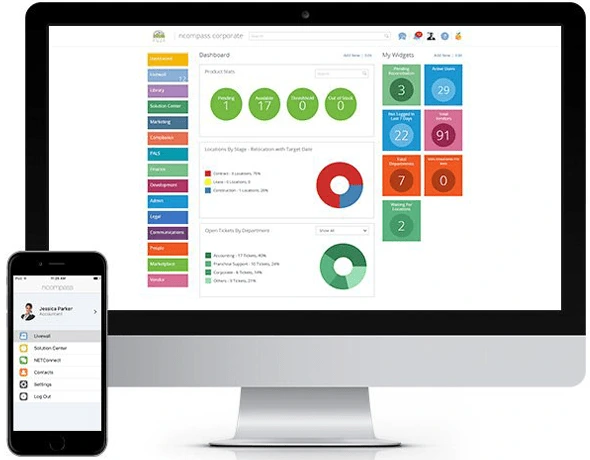
Naranga assists with key functions needed to run day-to-day operations. It can be used to train employees, streamline communications, onboard new franchisees, conduct mobile field audits, organize local marketing efforts, and turn leads into sales. (Phew, what a list!) It features tools like commissions manager to construction tracker to help franchise owners stay on top of daily operations in all franchise locations.
Marketing 360
Advertising is the lifeblood of any brand. You can’t get customers without getting the word out first. Marketing 360 makes marketing so much easier to manage, so you direct your time and money down the avenues that are most effective.
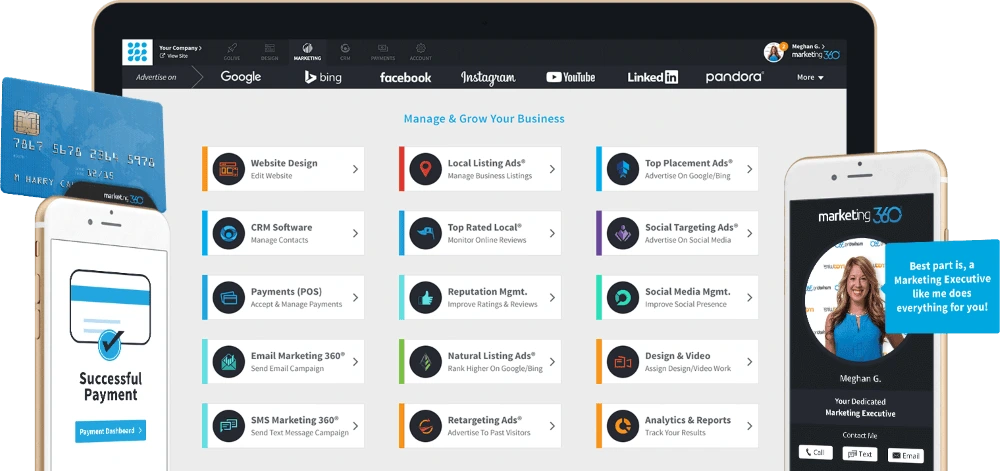
What sets Marketing 360 apart? It makes point-of-sale (POS) marketing a breeze. This platform features tools that track organic search results through keyword volume and ranking, analyze SEO performance for competitors through those same keywords, and segment and target ads to a specific demographic. Users can create branded webpages that include call-to-action buttons. The platform also makes it easy to customize and edit website templates.
Vonigo
This cloud-based platform sets the standard for service-based franchise software. It’s available with a monthly subscription that includes phone support and product tutorials. Vonigo offers an extensive customer management system that makes it easy to build client relationships and track all aspects of that relationship with built-in reporting tools.
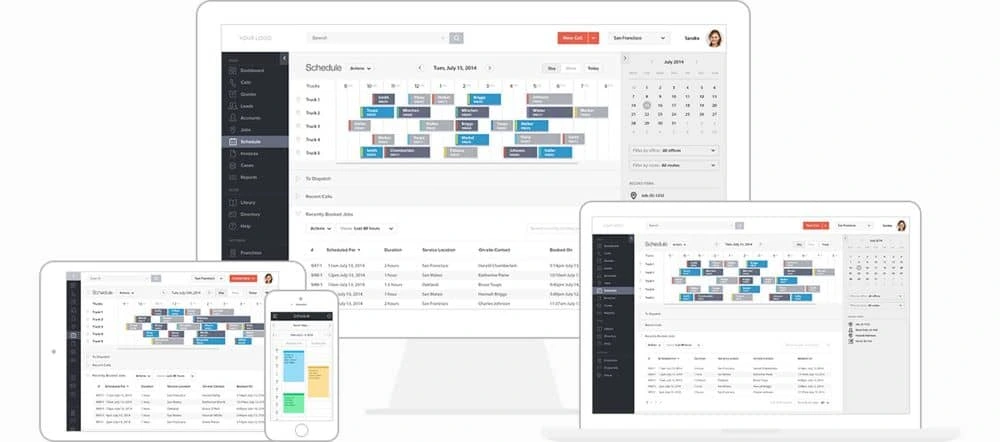
With the platform’s tools, you can create invoices directly from work orders and route online payments to the destination bank account. It also includes automated route sheets for dispatching, a Google Maps interface for appointments, email notifications, and on-screen signature capture. Cloud-based modules from Vonigo handle multiple tasks including CRM, scheduling, online booking, work orders, invoicing, payments and reporting. All of it is accessible from desktop and mobile devices.
Marq
Branding is paramount for franchises. You want a consistent brand message that reflects the quality of the products or services your company offers. If you want to scale your design and keep it consistent, Marq has you covered with web-based, lockable marketing templates.
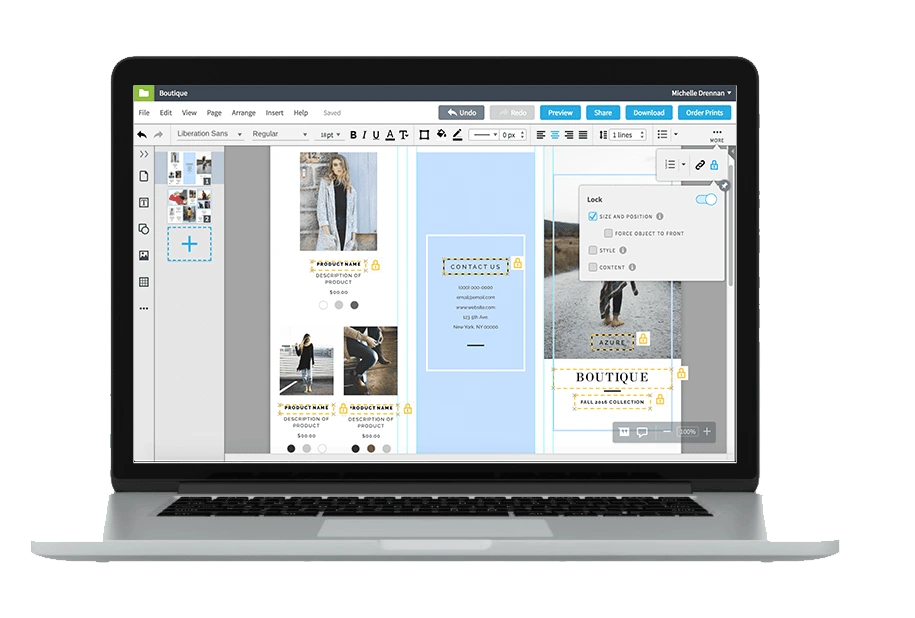
Marketing templates from Marq make it easy to localize your branding. Keep logos, fonts, images & colors all looking smooth, polished and professional. Its drag-and-drop editor makes it easy to combine images and text into eye-catching print and digital marketing materials.
Franchisees can customize and distribute pre-approved templates that prevent off-color or stretched logos. You can create, print and deliver direct mailers to multiple locations simultaneously with the Marq editor. A radial search function makes it easy to target prospects based on age, income, geographic location and other key demographic factors.
Key takeaway
Growing a franchise business is hard work, but it becomes much easier when you have the right tools in your toolbox. Give these four a try to see which one is the best franchise management software for your brand.
Get started with Marq, the brand management platform for franchises. It’s perfect for franchise brands of any size.
Turning your business into a franchise is an exciting process for you and future franchisees. An essential part of creating a franchise is drafting your franchise disclosure documents, often referred to as FDD. These documents help you determine whether your business should be turned into a franchise and how to plan the transformation.
Related: 7 tips to coordinate local & national franchise marketing
The FTC created this document in response to a number of complaints. In years past, salespeople would convince franchisees to invest in a franchise without all the necessary information. This caused many people to lose their investments.
Now, the FTC states that franchisors must give potential franchisees the FDD at least 14 days before any contracts are signed or any money is exchanged, so the franchisee can make an informed decision about their investment.
Franchise disclosure documents have a very specific format, divided into 23 sections that cover all the information a potential franchisee might need to make an informed decision and sign a contract.
FDD sections explained
Below are the 23 sections that are required for a Franchise Disclosure Document and a brief explanation of what each of those sections cover.
1. The franchisor and any parents, predecessors, and affiliates
This section covers the history of your franchise business, any parent company or companies that have come before the current franchise. This is also where you give an overview of your business model, the competition, and an offer to become a franchisee.
2. Business experience
Provide the backgrounds of key directors, officers, managers and employees who have played a large role in the sale and management of the franchise. This section is all about giving an introduction to the key players in the franchise and reviewing their past business experiences.
3. Litigation
In this section, discuss any past or current litigation your franchise has been involved in. This level of transparency is critical for earning your franchisees’ trust and making sure they’re well-informed.
4. Bankruptcy
Here, you discuss any bankruptcy that has occurred within the business. This includes not just bankruptcy that’s occurred within the company, but also to any of the key people involved in the franchise.
5. Initial fees
This is where you outline any of the deposits and fees the franchisee will have to pay in order to gain ownership and start up their own franchise within your business.
6. Other fees
Here, you outline the fees that will continue for as long as they own and operate the franchise. What ongoing royalties or yearly fees will you charge your franchisees for advertising, renewal of their ownership, or transfers? Make sure you provide a complete and accurate list.
7. Estimated initial investment
This section covers any costs the franchisee will incur to get the franchise up and running. This includes advertising, the cost of operations, and any other costs that may arise before the franchisee starts making revenue.
8. Restrictions on sources of products and services
This is where you include any restrictions you have regarding the sources and types of products and services offered through your franchise.
9. Franchisee’s obligations
In this section, you provide a clear reference to all the obligations the franchisee is agreeing to when they sign this contract.
10. Financing
Here, you describe any financing options or programs available through the franchise.
11. Franchisor’s assistance, advertising, computer systems, and training
This section details the obligations you have as a franchisor when you sign a contract with a franchisee. This section tends to be the longest, as it includes any assistance you offer before their business is open, as well as any ongoing assistance. In this section, you also outline any advertising assistance that will be provided for the franchisee.
Include information regarding any franchisee training programs offered through the franchise, as well as the support offered through the computer systems used throughout the business.
12. Territory
This section covers any territory offered to the franchisee and whether the territory will be changed because of this agreement. This section is going to vary greatly between different franchises, as each has its own philosophies regarding territory.
13. Trademarks
Here, you include information regarding your franchise’s trademarks.
14. Patents, copyrights, and proprietary information
Similar to the previous section, this section outlines information regarding the patents, copyrights and other information about how the franchisee can use these copyrighted materials.
15. Obligation to participate in the actual operation of the franchise business
In this section, you explain the personal obligations the franchisee will have in the actual operation of the business. These can vary greatly, so be specific.
16. Restrictions on what the franchisee may sell
This is where you outline any products or services the franchisee cannot offer from their franchise locations. These restrictions will determine what franchisees can or cannot offer at their location.
17. Renewal, termination, transfer, and dispute resolution
This section covers the costs or renewal, termination or transfer for franchisees. This is also where you cover how you and franchisees will handle disputes. These policies are critical to running a smooth franchise operation with as few disruptions as possible.
18. Public figures
If you use public figures (e.g. celebrities or public persons) for advertising or promotions, then state the amount they are paid here.
19. Financial performance representations
This section is where you provide information regarding the financial performance of other franchise units. According to Entrepreneur:
“The typical Item 19 disclosure consists of three types of information: 1) numerical presentations of revenue and/or expense data, 2) notes and explanations outlining the assumptions used in preparing these numerical presentations, and 3) disclaimers that carefully explain the limitations of the usefulness of the data presented.”
20. Outlets and franchisee information
This section lists information about all the other units within the franchise. This includes updated contact information for each unit, such as addresses and phone numbers.
21. Financial statements
This is where you include audited financial statements from the last three years.
22. Contracts
This is where you should put all the contracts the franchisee will be required to sign. Organizing your contracts this way makes it easier to find and reference them later.
23. Receipts
Franchisees are required to sign a receipt stating that they received the FDD. This protects your business and proves to the FTC that you did your due diligence. It will be placed at the end of the FDD.
Key takeaway
Your franchise disclosure documents are vital to maintaining your business’ health and your franchisees’ success. It’s important that you keep this document in order, up-to-date, and written in clear, concise language.
Your brand matters. If you’re ready to build your franchise brand into a consistent, compelling force that drives your business, this guide will show you how to get started.
If you’re among those who think email marketing is too old-school to be effective these days, you’ve got the wrong idea. Email marketing is still a powerful tool that can help your brand shine.
Related: 8 tips to get more responses to your email marketing
What makes email so effective is the fact that it’s a permission-based marketing channel, one that gives you a chance to reach customers in a personal place—their inbox.
When a prospect signs up for your emails, they’re expecting a welcome email that introduces them to the brand. As this is the first email your subscriber will receive after being added to your email marketing list, it’s crucial to do it right.
9 best practices for your welcome email
1. A timely introduction
Your new subscriber wants to know more about your products & services at the time they sign up for your emails. Take advantage of their interest by sending out a welcome email as soon as they sign up. If you miss out on this opportunity, there’s a real possibility that the subscriber will forget about you and lose interest in your brand.
2. Crisp subject lines
All the work you put into crafting an engaging email will be for naught if your email doesn’t get noticed in a crowded inbox. Add an extra zing while crafting the subject line for your welcome email.
To make your email feel more personal, try using personalized subject lines. People are attracted to their own names, so this will lead to higher open rates. Here’s an example from Google:
Subject line: Smiles Davis, Welcome to your Google Home Mini

3. A pleasant greeting
Greet your new subscribers with a warm welcome email that’s personalized to their interests and preferences. Even when you’re sending automated emails, you can write them in a way that feels personable and real—like they’re coming from a human being and not a robot. Consider using an employee’s name and picture, so subscribers can visualize who’s behind the emails they get from you.
4. Guiding them through the next step
Making your customers wait too long isn’t good practice. You’ll have far better results if you intentionally build brand loyalty and guide customers through the purchase process.
For example, if you’re an online cosmetics brand, tell them why they should choose your brand over the many other brands in the market. Give them an overview of your products and how they can browse your app or website to find the cosmetics they want. If there are other actions you want them to take, spell those out as well—like in this example from nDash.
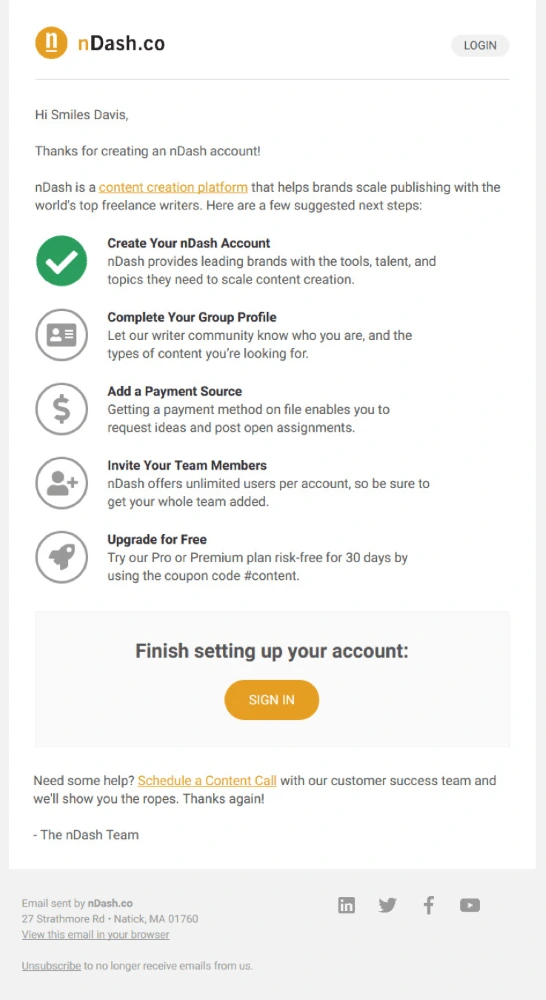
5. Include freebies in your welcome email
This is your chance to win over new subscribers with low-cost goodies. People love free stuff, so this will endear your brand to them right out of the gate. If you can’t afford to give away items for free without a minimum purchase, consider including a discount or promotion instead—such as a percent-off coupon or a buy-one-get-one promo code.
6. Hit two goals with one email
According to email marketing best practices, it’s recommended to include links to your social media profiles in your email. Ask them to like or follow you on the platforms you use most.
This is an especially clever move for e-commerce brands, since they need a strong audience to build their reputation and provide social proof. Even if you’re not an e-commerce brand, you can build buzz and loyalty by directing subscribers to your social channels.
7. Ask to be whitelisted
Being whitelisted can enhance your deliverability rates and make it easier for subscribers to find your emails in the future. It also helps to keep your emails out of the Spam folder. See how Travelocity asks people to whitelist them in the section titled Subscription Information:
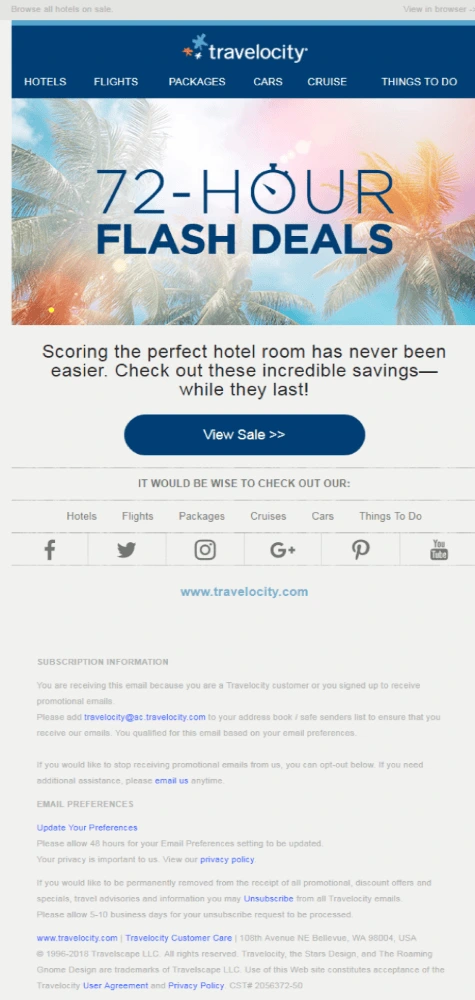
8. Give them a way out
You should always give your customers the option to unsubscribe from your emails at any point. By doing so, you’ll retain genuine subscribers in your list—people who are actually interested in reading your emails. In turn, your engagement metrics will rise, because you’ve eliminated those who aren’t interested in purchasing from you. (Also, unsubscribes are always better than spam complaints.)
9. Include free shipping
For e-commerce brands, one major obstacle your subscribers face while shopping online is high shipping charges.
Ease that friction and encourage first-time buyers by offering free shipping on their first order. Try mentioning it in your welcome email to delight your new subscribers. Creating a happy customer at the onset goes a long way toward building loyalty for your brand.
Mantras to keep your welcome emails engaging
- Pin your top content
Play your cards right with a welcome email that features your best content and gets them excited about your brand for the long haul.
- Avoid no-reply
Do not send your emails with a no-reply email address. It feels impersonal, and it’s important to assure your subscribers that you’re listening to them. They should know there’s a person behind the email ready to hear their problems and feedback.
- Make it compelling
Make your email compelling with content. Welcome emails should catch the subscriber’s attention from the moment they open it. If you’re struggling, try adding a dash of fun or humor to your email. Include interactive elements like GIFs, accordions, cinemagraphs or videos to make it more visually appealing.
- Build anticipation
Create a sense of anticipation with your welcome email. Don’t spill all the beans right at the beginning. Each email should leave the subscriber waiting for the next one. Find a way to highlight your best content and maintain curiosity in your subscriber’s mind so they look forward to hearing from you.
- Try a welcome email series
Instead of just sending one email for the sake of formality, consider sending 2-3 welcome emails as a series to initiate your subscribers. In a welcome series, you can introduce and explain different pieces of your business and entice subscribers to purchase from you.
- Write accessible emails
With one billion people in the world living with some form of disability, it’s incredibly valuable to write accessible emails that can be understood by everyone who receives them. Think about all the ways people might interact with your content—for example, different devices and browsers. How does your email sound when it’s read out loud to a blind audience? What does your plain text email look like? When your message is more inclusive, you have a wider audience to nurture.
Key takeaway
Welcome emails are an excellent opportunity to introduce subscribers to your brand, encourage purchases, and lay the foundation for loyalty down the road. Make sure you include all these essential elements in your welcome emails to set your brand up for success.
Kickstart your next email marketing campaign with our free newsletter templates.
Today, over half of the world (4.89 billion people) use social media. A pretty staggering number, right? What’s more, a typical social media user spends an average of 151 minutes per day scrolling through their feeds. Given all of this, it’s easy to understand why most brands are active on social media today. There’s a huge opportunity to grow your brand awareness here, especially if you follow the right strategy.
So how can you cut through the noise and make sure your brand stands out to the right audience? Let’s go over a few tips that will help you get the most brand awareness out of our social media efforts.
Choosing the right platforms
Right now, there are over 120 social media platforms out there. Thankfully, your brand doesn’t need to be on all of them to have an impact. Remember the phrase, “more isn’t always better”? That’s a good mantra to keep in mind when you’re choosing the platforms you want to be active on.
With so many options, it’s okay to be picky here. To help you get started, consider the strengths and weaknesses of each platform, along with the demographics of its user base and how easy (or difficult) it will be to get your content in their feeds.
Of course, just because one platform is popular doesn’t mean it will necessarily be a good fit for your brand. For instance, if you’re an HR consulting firm targeting c-suite teams, your content might be more suited to LinkedIn than TikTok – despite it being the fastest growing platform out there right now.
One last note here: While we think it’s important to be somewhat picky here, try not to put all of your social media eggs into one basket. As platforms grow and change, they may no longer be suitable for your brand. For example, you don’t have to look very far to see plenty of brands that either paused advertising or left X a.k.a Twitter entirely after controversial changes to the app and its leadership.
Creating a brand persona
Brand recognition = brand awareness. There’s nothing that builds brand recognition faster than a unique, memorable brand persona. Think of this as the voice and POV of your brand. What – or who – does your brand sound like?
Nailing your brand’s personality is one of the most important parts of building a rock solid social media strategy. Knowing your target audience inside and out can help – after all, it’s much easier to develop a brand persona that will resonate if you know the kind of people you’re looking to reach.
But what if you have multiple audiences? No need to fret. You’ll just want to develop a more flexible brand voice that can speak to your different audience segments. For example, you may showcase more of your brand’s fun, humorous side on TikTok, while your LinkedIn presence may be more focused on product updates, internal news, and informative content.
Publishing authentic, consistent content
If you want to thrive in today’s over-saturated market, your brand needs to be consistently producing high-quality, engaging content.
You can start by focusing on topics closely related to your particular niche. For example, if you own a plant shop, you can share information on various plant species, as well as helpful tips and tricks on how to take care of them.
Pre-measured templates are an easy way to start building on-brand content at scale. At Marq, we’ve got a library full of social media templates to get you started.
Lastly, a note on consistency. You can post the most amazing content, but if you’re only posting a few times a year, you’re not going to be able to build the kind of brand awareness that a more active account can. If you’re irregular or inconsistent with your social media branding efforts, your audience might forget about you. (Plus, your absence and lack of posts might even make them think you’ve forgotten about them, too!)
If you can’t post consistently on a regular basis, try using scheduling tools. Schedule your posts at peak times when your followers are most active. This will give your content the best chance to gain visibility and momentum.
Building brand awareness through audience engagement
If you look at successful brands on social media, the vast majority of them interact regularly with their audience. They start conversations, ask questions, and interact with their fans in many of the same ways you might interact with a friend.
Intentionally engaging with your audience can have an incredible impact – not only driving brand awareness but helping people build an emotional connection with your brand.
Here are just a few methods for drumming up engagement on your socials:
- Host giveaways or promotions with branded hashtags
- Sprinkle in user generated content into your social calendar – and encourage your followers to tag you in their own photos for a chance to be featured
- Partner with local or micro-influencers to build a sense of community around your brand
- Respond to audience comments, questions, and concerns to create trust
Key takeaway
It’s not enough to simply have a social media presence anymore. Any brand can publish content, but those that truly go above and beyond have the chance to cultivate a level of brand awareness that rivals the world’s leading companies.
Want to streamline your social media content creation? Check out our template library and start designing on-brand today!
Over the last decade, marketing has undergone a variety of changes. The purchase funnel is more complex than ever before, and marketers have more information at their fingertips.
Marketing is smarter now—it pulls data from different sources and uses modern technology to reach new customers and keep existing ones. It’s possible to predict where the next trend will lead, which helps with planning out marketing campaigns for the months ahead.
Related: 25 branding stats & facts that will change your life
Out of top-performing companies, 65% have a written content marketing plan. Before you focus on any specific marketing trend, you should write out your goals for the year and how you plan to reach them.
Major goals include increasing sales, adding more customers, retaining current clients or expanding brand recognition. Once you have a specific goal in mind, consider the following trends as potential ways to reach it.
1. Intelligent marketing attribution
Artificial intelligence (AI) helps marketers and brands determine where their impressions, sales and leads come from more easily than trying to analyze data manually. Since most data is already in the cloud, AI simply takes that data, does a few computations and comes up with algorithms showing what works from a marketing standpoint and what needs adjusting.
Use AI and recognize patterns from different data sources so you can predict upcoming changes. For example, say your inventory records show that every November, sales of blue sweaters pick up, and you’ve sold out of blue sweaters the last seven years in a row. Now you know you should probably order more blue sweaters before November.
Marketing and sales will intricately tie into one another, so marketers know which inventory to push, and salespeople know what inventory they need more of. The seamlessness of a system that tracks marketing efforts, results and sales means more effective marketing—and more revenue.
2. Increasing voice search
About 13% of all U.S. homes owned a smart speaker in 2017, and experts predict that number will reach 55% by 2022. An increasing need for voice search will drive marketing towards offering voice-friendly search functions and thinking about the way people naturally speak.
What questions does a person ask when hunting for a specific product?
With conversational AI, marketers have an opportunity to send out targeted messages faster than in the past. AI can analyze the voice search conducted around a subject and help you craft descriptions and website information to match those long-tail keyword phrases.
Expect voice search to impact brand voice as it becomes more prominent, even on social media and e-commerce sites. Marketers should be aware of the key phrases people are using for voice search, so marketing campaigns align closely with those phrases.
3. A/B testing with AI
A/B testing is a powerful tool for marketers. It empowers them to quickly see how changing one element of an ad campaign or landing page impacts their conversions. As AI adoption increases, brands no longer need their own data science departments. Instead, they can call on a huge pool of information stored in the public cloud.
In the past, A/B testing meant trying out changes on one element at a time and waiting several weeks before getting the results. In 2019, expect A/B testing to become lightning-fast as tests are streamlined. You’ll be able to find out how multiple variants work with just a few clicks of the mouse. The result is a visually pleasing design that attracts users.
Marketers will become savvier about which types of AI to use for which projects, saving time and money for their companies and making the analysis more accurate than ever before.
4. Automated workflows
Adding automated workflows saves time and effort because it gives marketers the freedom to focus on tasks that can’t be automated. [] For example, you could create a workflow that pairs phone calls and emails. If you make a phone call and get the person’s voicemail, an email is triggered along with your voicemail message. If you spent time discussing a specific aspect of your brand with a lead, then you can trigger a different email.
Personalization is still possible, even with automatic triggers. Simply add the person’s name and change a few details based on your conversation. For most brands, though, the same conversations happen over and over, and the same emails go out after those conversations. Automated workflows keep you from repeating the same work multiple times.
5. Experiential content
In the past, e-commerce stores have presented simple, straightforward descriptions and images. However, as augmented reality (AR) enters every area of life, expect websites to become more of an immersive experience.
Online retailers create content that engages the user and creates an experience. One example might be a local real estate brand. Rather than simply throwing up a few photos and a description of the property, they’ll give you an interactive 360-degree walkthrough, where you choose which room to go into next and which angle to view the room from.
Storytelling and user experience will be more critical than ever before.
6. Relevant and interesting videos
Video is no longer optional when it comes to marketing. The trend for a while has been heading towards more video-viewing, but recent studies show that about 73% of Americans engage with YouTube. Across all social media platforms, video-viewing is on the rise. What does this mean for marketers in 2019? It means video is a necessity when it comes to creating a marketing campaign.
However, consumers are also savvier than ever before, so throwing up just any old video isn’t going to work. You need short, to-the-point and entertaining videos if you’d like the attention of your target audience.
Key takeaway
Effective marketing includes planning for a digital presence, but your efforts should also take into account changes in technology and how people interact with brands online.
In addition to the behavior of customers, you must also consider any Google algorithm changes and where your target audience hangs out online.
The savviest marketers never stop learning about trends in the marketplace and aren’t afraid of trying new techniques to stand out and grab attention.
You’ve answered a request for proposal (RFP), attended a couple of pitches, and now you’ve landed that new client you worked so hard to convert. Congratulations! …Now what?
For any agency (and client), a new relationship can be a daunting prospect—especially when you’re in the early stages. But with a solid client onboarding process in place to kick-off your first campaign, you can easily bring them up-to-speed with your typical engagement.
Related: How to write a creative brief (with examples)
So, what exactly should your onboarding process look like?
In this post, we’ll show you a simple 8-step client onboarding checklist to help you kick things off on a positive note—and make sure every new campaign starts on the right foot.
Let’s dive in.
What is client onboarding, anyway?
Client onboarding is the process of welcoming a new client onboard to your agency.
Whether you’re selling a service like graphic design or marketing, or a product like a software subscription, onboarding is essential for ensuring the relationship runs smoothly from the beginning.
Think about it: You’re unlikely to be impressed with an agency if they don’t have a streamlined way to get your first campaign rolling, right?
Your clients feel the same way. They want an easy, stress-free way to start working together—not one that takes six weeks of back-and-forth before your agency begins delivering the work they’re paying for.
A solid onboarding process is an important part of your client retention strategy, too.
Selling other services and making additional revenue from existing clients is much easier than attracting new clients. In fact, according to Lobster Marketing, there can be an up-to-70% chance of selling to an existing customer, compared with as little as 5% for a new prospect.

Source: Lobster Marketing
Get your client onboarding process right, and you’ll improve the chances of having a long-term relationship with them.
However, get it wrong and you run the risk of losing the client before you have the chance to impress them with your work—leading to higher churn, and of course, lost potential revenue.
A successful client onboarding checklist
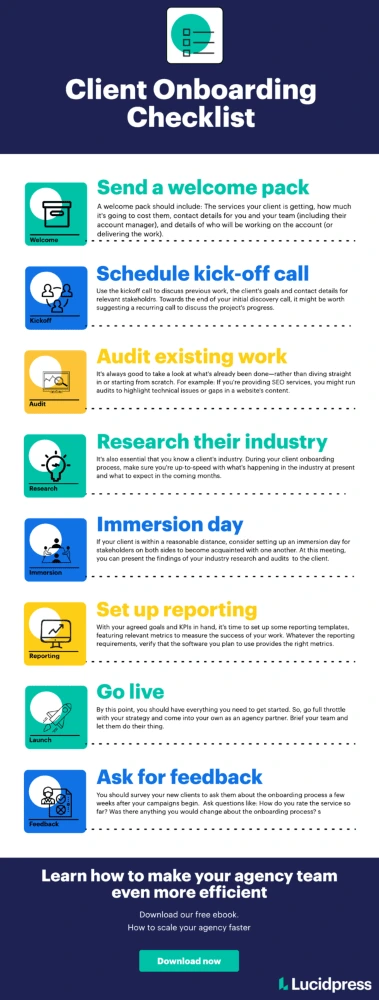
Now, you understand the importance of offering a great service to retain your clients, and you know that it starts from the very first day of working with a new customer. But how do you ensure the onboarding process goes smoothly?
Here are eight things you’ll need to do when bringing a new client onboard.
1. Send a welcome pack and questionnaire
Your client onboarding process starts as soon as they’ve signed your contract. So, send out a welcome pack and questionnaire to bring them fully up-to-speed with your way of working, and answer any questions they might have before your agency starts delivering the work.
A welcome pack should include:
- The services your client is getting
- How much it’s going to cost them
- Contact details for you and your team (including their account manager)
- Details of who will be working on the account (or delivering the work)
You might also wish to include some timescales and turnaround times for the services provided. This helps to set boundaries and confirms expectations between the two parties.
Send a questionnaire at the same time, which asks key questions that are relevant to the work you’ll be delivering. Some of the things you might need to know include:
- Their target audience, customer or demographic
- Their budgets for the year
- Who they consider to be their main competitors
- Any upcoming development roadmaps or business campaigns
The questionnaire responses can help you tailor your offering to meet the client’s needs—and make sure you’re focusing on things they’re expecting results from.
2. Schedule a discovery kick-off call
A kickoff call is a great way to get some one-on-one time with your new client.
Whether you’re picking up the phone or planning a Zoom meeting, use your discovery call to go through the client’s questionnaire responses and learn more about why they’ve chosen to use your services.
The kickoff call can also be a great opportunity to discuss:
- Previous work, and any issues that occurred. (This might include asking what a previous agency did and whether there was anything the client didn’t like, so you can avoid similar roadblocks.)
- Your client’s goals and any KPIs you’ll use to report on your activity.
- Access to your client’s website, content management system, and Google Analytics or Ads accounts to prevent permissions from slowing down your first campaign.
- Contact details for relevant stakeholders on the client side, so you can get in touch with the right person at the right time.
Towards the end of your initial discovery call, it might be worth suggesting a recurring call—perhaps on a weekly or fortnightly basis—to discuss the project’s progress.
This is especially important in the onboarding stage, as you and the client get to know each other better. You want to prove you’re reputable, trustworthy and doing a good job, right?
3. Audit their existing activity
We know the feeling of being so excited to work with a new client that you’re itching to get started. But whether you’re delivering marketing or design services, it’s always good to take a look at what’s already been done—rather than diving straight in or starting from scratch.
You can get some great ideas on how to boost results, and identify potential strengths or weaknesses, just by doing just a little digging.
For example: If you’re providing SEO services, you might run audits to highlight technical issues or gaps in a website’s content.
If you’re delivering a social media campaign, however, browse their Twitter profile to see whether they’ve already got the foundations of a strong presence and just need a little tweaking to see an influx of results.
It’s a fantastic way to tailor your strategy to each client and search for low-hanging fruit that could deliver short-term results.
4. Research their industry
Sure, it helps to understand the products or services your client sells. But, it’s also essential that you know a client’s industry.
During your client onboarding process, make sure you’re up-to-speed with what’s happening in the industry at present and what to expect in the coming months.
Not only can this help you predict and plan around potential issues, you’ll also know what you’re competing with—and the tactics you’ll need to use to make their company stand out.
You can research a client’s industry by:
- Using social listening tools (such as Mention) to understand trending topics.
- Searching the topic in Buzzsumo and identifying industry influencers who may be helpful as part of a marketing campaign.
- Investigating what their competitors are doing with their SEO, content marketing and PPC activity using Ahrefs.
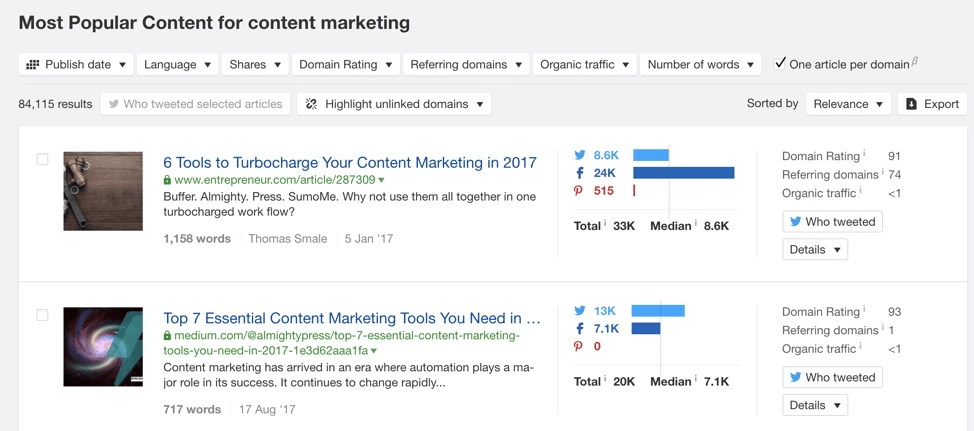
Source: Ahrefs
Prove to them you’re committed and eager to learn more about their industry—particularly if you haven’t worked with similar clients before.
5. Hold an immersion day
Granted, online calls are good if your client is on the other side of the world—but nothing can beat face-to-face meetings for getting to know people.
If your client is within a reasonable distance, consider setting up an immersion day for stakeholders on both sides to become acquainted with one another.
Take members of your team who will be working on the account. This will help them to get a feel for your client and their business—and more importantly, the boundaries your proposed strategy needs to fall within.
At this meeting, you can present the findings of your industry research and audits, as well as discuss next steps with the client. You could even take along some examples of your agency’s previous work or campaigns to show the client—especially if you’re unsure whether they’ll agree to out-of-the-box marketing ideas.
The immersion day is also a fantastic opportunity to get hold of essential documents you might need to deliver your work. This could include brand documentation such as:
- Buyer personas
- Brand guidelines
- House copywriting style guides
- Tone-of-voice documents
Remember: You’re trying to make a good impression. Don’t be afraid to go the extra mile if you’re hosting. Make it comfortable for your new client and reaffirm in their mind that they’ve chosen the best agency.
6. Set up reporting templates & tools
Following your discovery call and immersion meeting, you should now have a good idea of what your client wants to achieve.
With your agreed goals and KPIs in hand, it’s time to set up some reporting templates, featuring relevant metrics to measure the success of your work.
Let’s say you’re providing paid media services, for example. If your client’s goal is to reduce media spend and boost revenue, you’ll want to look at metrics like cost-per-click, revenue and ROI, and find a software that can report on all three.
For an SEO client, on the other hand, you’ll likely be monitoring keyword rankings and organic search traffic—which requires totally different software.
Whatever the reporting requirements, verify that the software you plan to use provides the right metrics, and that your in-house templates (where you’ll provide data from the software) are suitable for the client and tailored to their needs.
7. Go live!
Now that the majority of your client onboarding checklist has been checked off, let’s move on to the exciting part: launching your first campaign.
By this point, you should have everything you need to get started. So, go full throttle with your strategy and come into your own as an agency partner. Brief your team and let them do their thing.
During these first few weeks, make a conscious effort to double-check any deliverables to ensure they’re on point. Regular follow-up calls are a great way to keep everything on track and make sure everyone is on the same page.
Communication is key. You want to make a good impression early on, so it’s essential that you get it right—and that you’re open to feedback if the client has any suggestions.
8. Ask for feedback
After the initial onboarding stage has passed and you’re delivering work for the client, it can be tempting to focus only on the future. But, it’s important to take stock for a moment.
You should survey your new clients to ask them about the onboarding process a few weeks after your campaigns begin. It doesn’t have to be a long survey—remember, your client is probably ultra-busy.
But, you can ask some key questions to identify your strengths and areas for improvement, such as:
- How do you rate the service so far?
- Was there anything you would change about the onboarding process?
- Would you recommend our services or products?
Sending out a simple survey is a great opportunity for you to get feedback on your practices and adapt your onboarding plan for future clients to make it even more seamless next time.
Add a reminder to your client onboarding to-do list to make sure you don’t forget to ask for feedback. It’s likely that your current clients can suggest improvements to your onboarding process, which could help you convert new leads. Don’t shrug it off.
Key takeaway
Winning a new client is an exciting thing—and it should always be celebrated. But, you don’t want all the hard work that went into getting them onboard to be wasted.
A streamlined and sensible approach to onboarding new clients will help you deliver a great service, and it delight your customers at a crucial stage of your working relationship. Put these guidelines into practice to see the difference it makes first-hand.
Looking for ways to make your team even more efficient and grow your agency brand? Check out our free ebook: How to scale your agency faster
Last week I received a letter in my mailbox for the first time in a long time. It’s been ages since someone (even a company) sent me physical mail rather than going the easier route with email.
It really felt good to have something that I can touch and feel with my own hands.
Related: 11 best direct mail pieces to inspire your next campaign
Sometimes, the dull and boring side of advanced technology makes us realize we’ve come a long way. There was a time when people used to get a lot of mail in their mailboxes, especially in the form of promotional material.
Gradually, companies left that behind and considered it defunct. But in reality, direct mail is still a great way to engage with one’s audience.
Why? Because in our modern age, it provides a personal touch that email can never replicate. Data published by the Data & Marketing Association in 2016 showed that the response rate of direct mail increased 43% year-over-year. This is a huge leap from previous years.
Companies should know that it’s short-sighted to completely do away with direct mail. It’s still an effective and useful tool. To drive home the point, here are eleven reasons why every brand should (re-)consider direct mail.
1. You can achieve a higher ROI
Most companies set up online ads hoping to see better ROI because of the huge number of internet users.
But, direct mail can drive even better impact: a median ROI of 29% compared to online display at 16%.
When someone receives physical mail, it carries more weight (and not just literally). Customers are more likely to respond to communication that feels personal, and direct mail makes it easier to send that message.
2. Direct mail pairs well with digital marketing
If you want to build your own brand online or enhance the reputation of your company, digital marketing is usually the best place to start.
For many brands, this includes publishing SEO-optimized content and setting up Facebook ads. It usually doesn’t include direct mail… but maybe it should.
Direct mail can help you bridge the gap between the digital world and the real one. You can reach potential customers who might otherwise never hear about you—and you don’t always have to sacrifice data to do it.
For example, a digital marketing agency in our own state (Utah) included a scannable code on the back of one direct mail piece. They could track engagement with that code just like they would any other online campaign. They also included a Twitter hashtag that people could use to interact with the campaign. These techniques help to tie everything together, so their team got a holistic look at their campaign’s performance.
3. You can hold direct mail
This might seem obvious, but humans are sensory creatures. An email lives on your digital gadgets, where you’ll never be able to touch it. People can actually touch and feel the direct mail that a company sends to them, and because of that, it leaves a stronger impact.
This is especially valid for pieces that provide real-world value, like a free sample or discount coupon. Customers are more likely to remember and redeem those promotions than the ones they’re inundated with via email.
4. Attention, please!
When people check their mail, they take and go through everything they’ve received. It’s almost guaranteed that they will look at each and every piece, even if it’s only for a moment. Then they have to decide what to do with each piece—deciding which ones are worth saving and which ones are okay to throw away.
Conversely, when someone’s checking their email, they’re often engaged in other behaviors and environments that divide their attention. For example, they could be multi-tasking at work or watching TV on the couch. Since direct mail deals with fewer distractions, it benefits from better attention spans.
5. You can track direct mail
There are plenty of email & direct marketing tools to track the progress of your email campaigns. What about direct mail? Yes, it’s true that the process isn’t fully automated in the same way—but you can make them easier to track.
For example, you can designate a phone number or email address solely for the target audience of your direct mail campaigns. You can also create specialized landing pages with unique URLs. This will greatly improve the quality of your data and the accuracy of your success metrics.
6. All ages welcome
Any time you opt for a particular marketing strategy, it’s vital to understand which age groups that strategy serves.
In the case of email marketing campaigns or online advertisements, seniors are often left out because they adopt technology later than the younger generations. If seniors are a key demographic for you, you’re probably leaving money on the table.
Instead, consider reaching that audience with direct mail. And don’t assume seniors are the only ones—other audiences could benefit, too. Take a look at your audience and think about whether direct mail could extend your reach.
7. When others zig, you zag
Since digital marketing has so thoroughly transformed the landscape, many companies have quit using direct mail altogether. Just because fewer people are using it, however, doesn’t mean it’s an obsolete tool.
In fact, there’s a little bit of irony at play here: Your brand can stand out by reincorporating direct mail as part of your campaign. The high ROI speaks for its validity, and you can get the best of both worlds by adding physical mail to your digital campaign.
8. Direct mail can help you target specific audiences
We’re used to seeing the targeting capabilities of various social media platforms. But, did you know that direct mail can also target specific audiences?
For example, the USPS website has a tool called Every Door Direct Mail, which lets you send mail to addresses within a selected geographic area. This is the same system Lucidpress uses to send direct mail postcards from our platform to the local areas you want to target.
It’s not only about location, though. Address databases often contain other details you can use to target an audience: age, income, marital status & more. With these, you have granular control over who to send your direct mail to.
9. You can raise brand awareness
Are you trying to raise awareness of your brand? If you’re willing to build a campaign around that goal, direct mail can be a very effective way to achieve it.
As always, brand consistency is key, so keep your direct mail pieces consistent with overall branding.
You can earn extra points by including a coupon or another special offer, increasing the likelihood that your recipient will keep it around. The more times they view your direct mail piece, the more familiar your brand will feel to them.
10. Direct mail tickles the senses
Quick: name the five senses. Now, name the senses you can activate with a digital marketing campaign. Suddenly, your options are a lot more limited.
Sensory experience is a huge part of getting a response from an audience. If you’re only marketing online, you’re limiting yourself to sight and sound.
With direct mail, you can activate more senses like smell, taste and touch. (For example, think about those perfume ads you used to find in magazines.)
The more senses you can trigger, the more likely your customer will be moved by your message.
11. You can let your creative juices flow
In digital marketing, where best practices and A/B testing determine all, have you noticed that most company websites look… pretty similar?
Refreshingly, direct mail is a channel that brands can experiment with to create something new and innovative.
In fact, the more your mail stands out, the better. Take a look at some of the fun, creative ideas in this Pinterest board of direct mail marketing ideas:

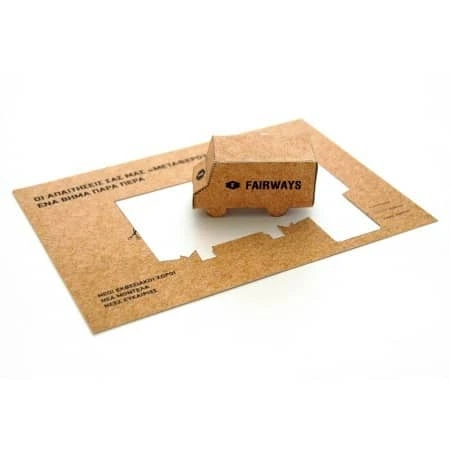
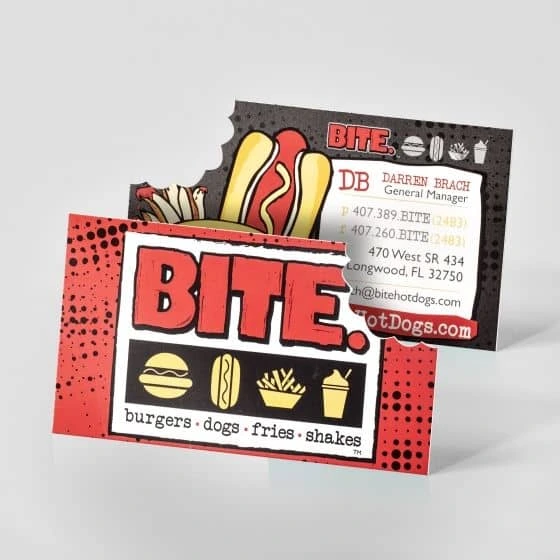
Key takeaway
Cutting direct mail from your marketing strategy because you assume it’s dead is misguided. Direct mail is still alive and well, and there are strong reasons to include it in a well-rounded campaign.
From higher ROI to stronger impact, brands are still reaping the benefits of direct mail today—and so can you. Bring these eleven reasons to your team the next time you’re planning a marketing campaign. They might just be surprised at the results.
Ready to build your own campaigns in minutes? Learn more about the direct mail features in Lucidpress, and give it a test drive.
Interactive marketing is a customer-oriented approach to marketing that engages the user and requires their participation. The most popular forms of interactive marketing content are polls, surveys, quizzes and games. This type of content can help you drive awareness, engage your audience, generate high-converting leads, convert to sales, or nurture brand loyalty.
Let’s take a look at the four types of interactive content that are most likely to bring you results.
Polls & surveys
Polls and surveys are probably the simplest and oldest form of interactive marketing. They’re a great way to get in touch with your audience, but despite their simplicity, you can use them in several different ways to help you build a genuine connection with your followers.
The easiest and most straightforward way to use polls and surveys is to ask your audience or customers for opinions about your product, service or content.
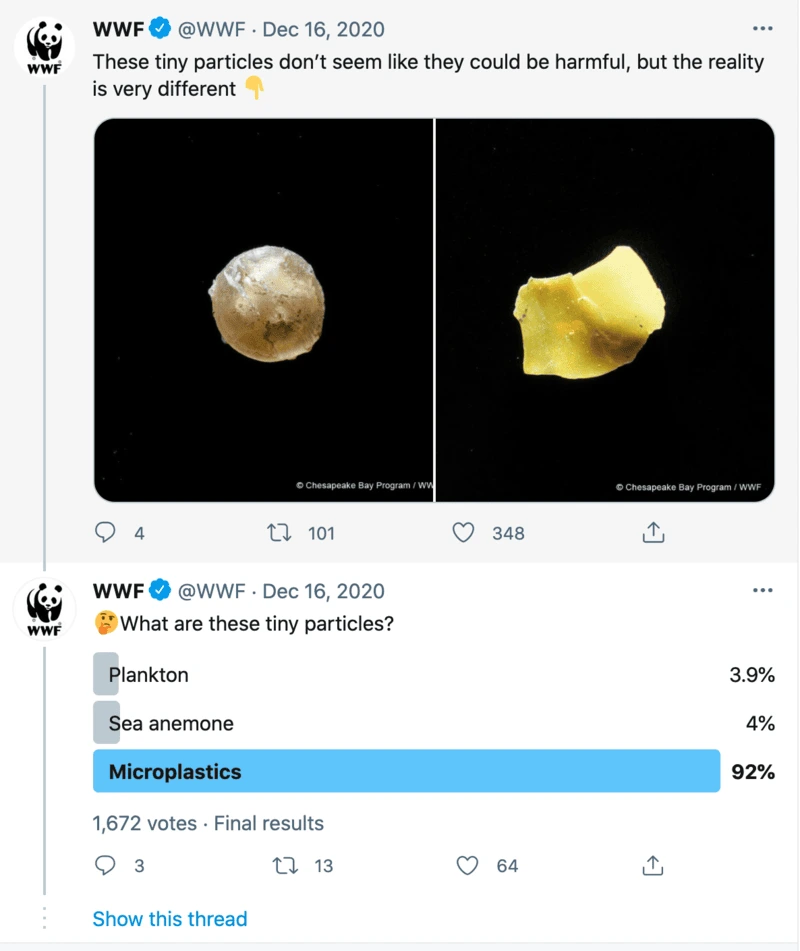
Source: Twitter
For example, many content creators run regular polls to inform their content creation strategy.
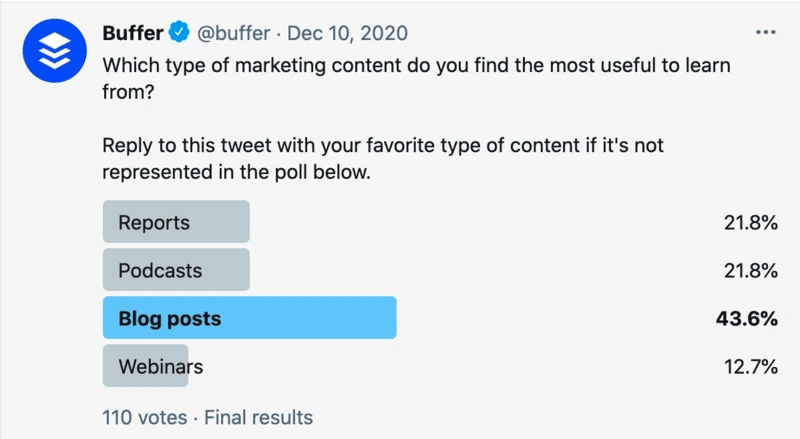
Source: Twitter
While many marketers use polls as part of their content creation process, it doesn’t have to be the only way to engage with your audience or customers.
You can use polls to obtain relevant statistics from your industry and later turn them into a valuable source of unique content that will boost your authority in the business field.
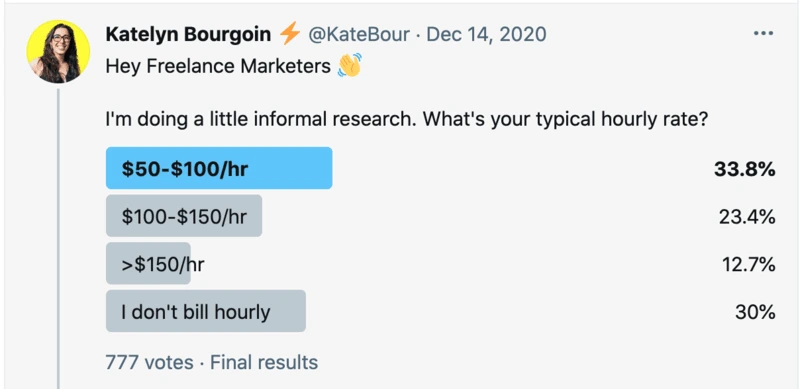
Source: Twitter
Of course, polls don’t have to be all work and no play — if your brand relies on aligning with your customer’s lifestyle, values and interests, you can always use entertaining content to nurture friendly relationships.
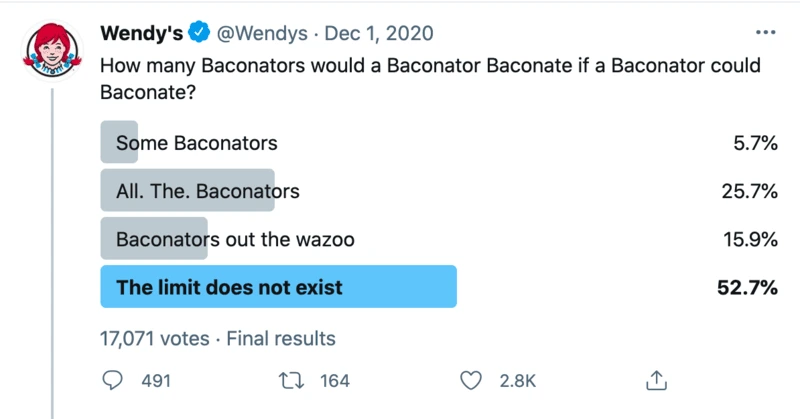
Source: Twitter
If you have any doubts on whether polls draw engagement, you can see the number of votes, likes and retweets in each screenshot. Even though the likes and retweets are often low, the number of people who voted in the polls is much higher, showing that polls really do engage your followers.
Incorporating polls in your content marketing strategy is pretty much a breeze — polls are a regular feature on both Facebook and Twitter, and it only takes a few clicks to create them.
Contests
Another well-known marketing strategy that still delivers amazing results is the gamification of various contests and challenges.
In terms of content marketing, challenges and photo/video contests are a great way to gather user-generated content that can later be used or repurposed for brand development.
Unless you’ve been living under a rock, you probably remember the famous ALS “Ice Bucket” challenge that managed to raise awareness about a rare neuron disease, engage 17 million participants, and collect $115 million in donations that led to a breakthrough in determining the cause of ALS.

Actors Henry Cavill & Amy Adams do the ALS challenge. Source: YouTube
The ALS awareness campaign challenged people to dump a bucket of ice over their head (or have another person do it to them). Then, participants nominated the next participant — the only way to opt-out of getting showered with ice was to donate money to the ALS Association.
Similarly, you can challenge your audience to a little photo or video contest with a unique hashtag on social media in exchange for a fitting reward. Of course, whatever the topic of the contest is, it has to align with your brand values and product. There’s not much point in organizing a photo challenge depicting the wonders of nature if you’re selling used car parts — but there are plenty of other challenges that would fit splendidly.
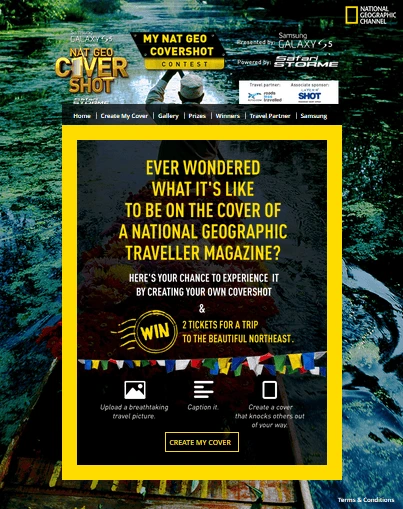
Source: National Geographic
In the end, your contest should neither be too easy nor too difficult. You want people to put some time into connecting with you in exchange for a prize or benefit that seems attainable and worthy of the work it requires. You don’t want to frustrate people or make them feel cheated.
A good challenge will bring out people’s natural curiosity and competitive spirit. The better you are at that, the greater your chances of going viral. If your contest is engaging, people will be eager to share it.
Quizzes
You’ve probably procrastinated by doing dozens of absurd quizzes with titles like “Tell us your favorite One Direction member and we’ll tell you which garlic bread you are.” Apart from being addictive and fun, quizzes can also be a great way to boost your content marketing and sell more. How?
Quizzes have high completion and click-to-conversion rates. They satisfy our need for introspection, self-confirmation, recognition and belonging — making them super clickable, convincing and shareable (qualities you definitely want in your marketing content).
For example, you can capture people’s attention by running a quiz on your website or social media, promising they’ll discover something about themselves (ideally, something relevant to your brand). The results they get can direct them towards a landing page or collect their email address in exchange.
But, don’t think that quizzes are only good for retailers and entertainment websites. This type of interactive content is also a great way to reach out to business clients. By identifying the unique challenges of your B2B buyers, you can create quizzes that offer them practical, customized solutions in the form of quiz results.
Interactive websites
Interactive websites engage and inspire your potential customers to explore content in a way regular blog posts don’t. Take, for example, this piece of sponsored content in The Washington Post.
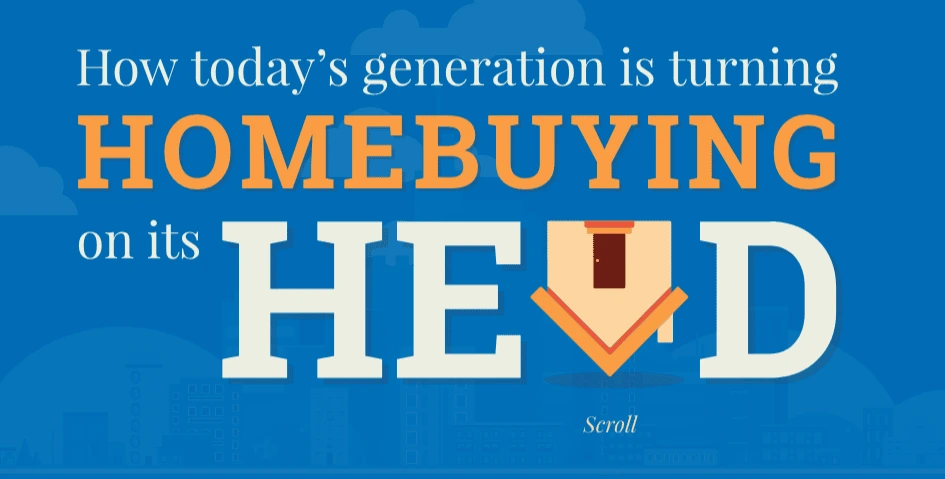
Source: The Washington Post
The National Association of Realtors published an article with the goal of reaching their target market of first-time homebuyers. As the younger generation is more cautious and skeptical about purchasing real estate, realtor marketers knew they had to step up their game.

Source: The Washington Post
And the article itself does feel like a game, constantly requiring the reader’s attention and interaction. (For example, there’s an interactive infographic.) Content sections are intertwined with relevant survey questions about personal experiences, opinions and expectations.
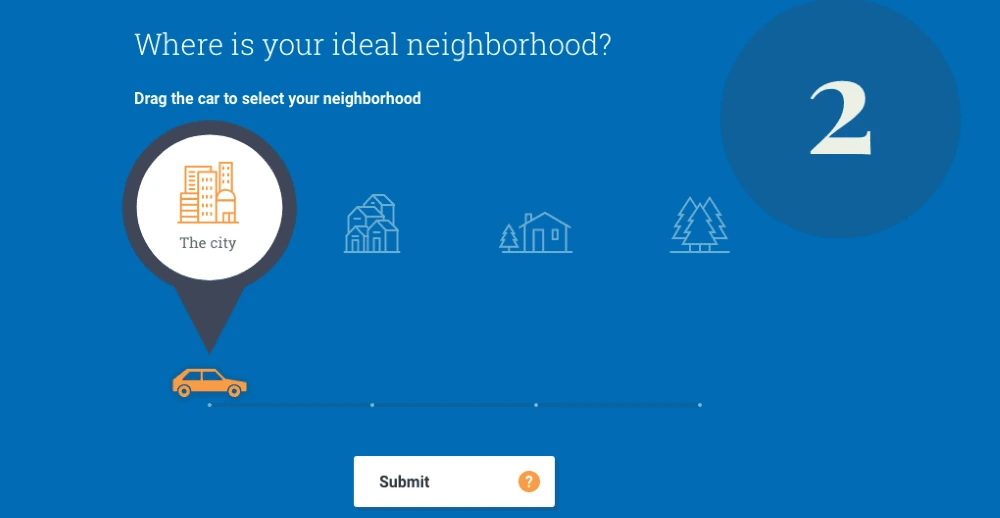
Source: The Washington Post
Apart from reaching a skeptical audience with content that responds to their common complaints and questions, the survey was also a way to help realtors gather data about their ideal customer.
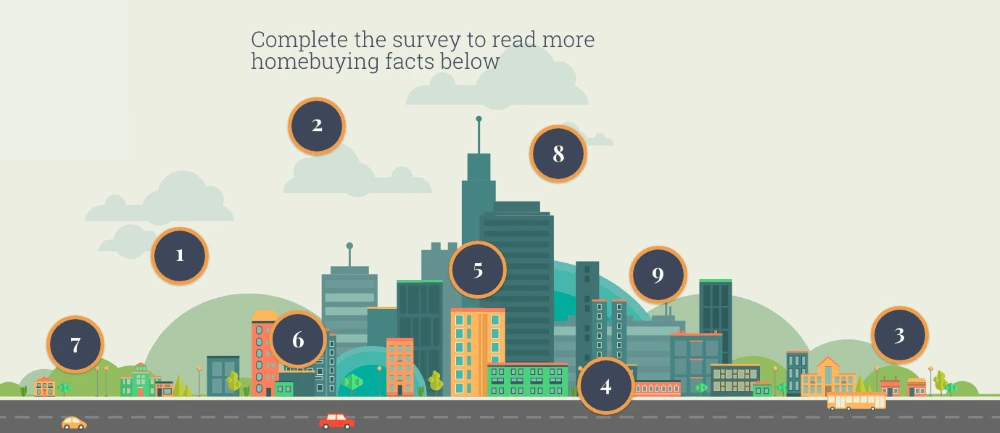
Source: The Washington Post
While interactive websites require extra work and time in development, that investment pays off. Try it on yourself — even if you’re not a first-time home buyer, did you feel compelled to check out the article anyway? Exactly. A great interactive website encourages visitors to explore, click and read(!) your content.
Key takeaway
As the digital sphere grows more personalized, interactive content is becoming the norm. Software developers are keeping up, providing marketers with tools that turn interactive content creation from a daunting task into a 10-minute routine.
If you decide to dedicate more time and resources to this type of content marketing, keep in mind the reward: more pageviews and more conversions. Why not give it a try?
When it comes to reaching your customers, one channel simply doesn’t cut it anymore. Consumers are researching brands through search, mobile, email, social media, in-store and a lot more, so it’s necessary for you to build an omnichannel marketing strategy that engages them across all platforms.
What is omnichannel marketing?
Omnichannel marketing is an extension of multichannel marketing. While multichannel marketing focuses on distributing content across various print and digital channels, omnichannel marketing focuses on creating a cohesive experience as a visitor moves from one channel to the next.
Benefits of omnichannel marketing
Not convinced? Here are more reasons to incorporate omnichannel marketing, both online and off, in your marketing plan.
1. Repetition reinforces your brand message
Imagine this:
A consumer sees an ad for your product on Facebook. She clicks it to visit your site but doesn’t make a purchase. She signs up for your emails while she’s there and clicks to follow your brand on Instagram.
In a few days, she gets an email inviting her to save 20% if she signs up for your text messages, so she does. Once she gets that offer via text, she makes her first purchase.
As you can see, the path to a sale isn’t always a straight line. If it had been, this person would have made a purchase at the first point of contact when she saw your ad. But, it took a few different messages on multiple channels to convince her to buy from you.
Being where your customers are online means you drive your marketing message home.
2. Creative consistency is key
You can’t simply plaster your message across a dozen marketing channels; you also have to be consistent in what you communicate. That means your brand logo and tone of voice need to be the same everywhere so that consumers recognize your brand and can let that message seep in.
There is one caveat: You don’t want to give identical offers or promotions on all marketing channels—it dilutes their effectiveness. You need to give people a reason to sign up for your emails, subscribe to text messages and follow you on social media, so make each offer exclusive to that channel.
3. All channels should lead back to your website
If you worry about confusing people with so many marketing channels, keep in mind your end goal: driving traffic back to your website so you can make a sale if you sell online. Your social media updates should include a link to the product that you’re promoting. Your emails should contain one link and one call-to-action each so that customers know exactly what you want them to do. Online ads should link back to your site.
The great thing about omnichannel marketing is that it’s so easily tracked, both online and off. You can look at your website analytics to see which channels sent traffic to your site and step up your investment on those channels or pull back from ones that aren’t getting results.
Offline, you can measure redemption of text message offers or coupons you post on coupon sites by using unique offer codes that you track through your point-of-sale system.
When you know what’s driving traffic and sales, you can tweak your marketing plan to give even better results with channels and types of offers that are appealing to your customers.
4. It’s great for new businesses
Omnichannel marketing isn’t just for well-established retail brands with giant marketing budgets. If you’re a new business, spreading the love across marketing channels can establish a foothold for your brand identity.
You may even get to know your customers better as you pay attention to how they respond to your messages on different marketing channels. Let’s say you start using Instagram to market your product, which is geared toward baby boomers. You might quickly learn that not many boomers use Instagram, and branded content targeting this demographic on Facebook gets you much better engagement.
5. You can reach different customer segments
You may market to different types of customers, who more than likely have different habits when it comes to interacting with brands online. The more channels you use to reach these disparate groups, the more successful you will be.
You can reach Gen Z through mobile and Gen X through social media at the same time. You can help boomers find you with print or online ads. You can appeal to moms, teens and outdoor types… all through slightly different marketing strategies that don’t exclude the others.
The more granular you are in marketing directly to a slice of a customer segment, the more successful you will be, because they feel like you are speaking directly to them with your message.
6. You get instant results
A few years ago, when print coupons were more popular, it would take you months to know whether a coupon campaign was successful or not. The same went for print advertising or TV spots.
But now, digital marketing has revolutionized the way we launch, modify and analyze marketing campaigns. You can see the results of your efforts in real time. If, after a few days, your social media ad isn’t moving the needle, you can easily modify the copy or the offer to see if you can improve results.
Mobile coupons are great for instant analysis, too. Your mobile marketing dashboard will inform you how many redemptions a given offer has had. You can use that data to decide whether you want to offer something similar in the future or test out a different offer.
The instantaneous benefit applies to connecting with customers in real time, too. If someone has a question about your brand, they can ask it on your Facebook page’s Messenger. You (or your handy chatbot) can answer the question immediately, delighting the customer with your prompt response.
7. You can build loyalty
One of the best ways to boost your business is by creating a loyalty program that encourages customers to shop with you more to earn points they can use on free products or get personalized discounts.
Omnichannel marketing works well with loyalty programs: Shoppers can sign up in seconds at the point-of-sale using their mobile wallet, get offers via push notifications or email, and check their balance online or on their phones.
Key takeaway
Marketing has certainly changed over the years. The key is rolling with those changes and diversifying where you try to connect with your audience. With so many wonderful channels to do so, you can customize your approach to maximize results.
Want to learn more about the power of consistent brand marketing? Download our free 32-page report, chock full of stats & great insights.
What’s the one gift everyone likes to receive? It’s cash.
Seriously, have you ever seen a person trying to return a cash gift or leaving it on a shelf to collect dust? I have never. For some gift-givers, however, cash is too simple and impersonal, so they go for the next best thing: gift cards.
Related: Why brand equity is important & how to measure it
Today, nearly all major retailers offer gift cards, and consumers love them. Stats show that people spend over $130 billion on gift cards per year, which is roughly 0.5% of the entire retail market.
Needless to say, retailers love gift cards, too. They’re easy to implement (especially if you’re an online seller), and besides increasing revenue and ensuring cash flow, gift cards also help with customer acquisition and loyalty.
But the question is, does offering gift cards affect brand equity? In other words, how do consumers, in general, perceive businesses that offer gift cards?
And finally, after all is said and done, should you offer gift cards in your store? (Here’s a hint: gift cards come with some risks but also great rewards for building a brand.)
Risk: Unused gift cards can make your brand look bad
Here’s the thing.
Even though gift cards are one of the most-wanted gifts people look forward to receiving on holidays & birthdays, nearly one-third of consumers never use the gift cards they’ve received.
That’s where your brand equity could suffer.
Stats show that out of $130 billion spent on gift cards, approximately $1 billion is lost in unredeemed gift cards. The gift card & credit card marketplace CardHub even found that between 2008 and 2014, consumers had lost over $44 billion in the form of unused credits.
A study by Dan Horne analyzed the impact of unredeemed gift cards on businesses, and it concluded that too many unused gift cards can harm the brand’s image. When gift cards are left unredeemed, the company basically gets money for nothing. “Consumers feel that retailers have taken advantage of them,” the author concludes.
Besides the people who forget about their gift cards, there’s another group: those who try to get rid of an unwanted gift by reselling it online. The problem is, the more often your brand’s gift cards are sold off online—via social media or on platforms specifically created for reselling—the less valuable they’re perceived to be.
Think about it.
The fact that many people are trying to get rid of your store’s gift card makes the products you sell look unwanted. Besides, the more users selling gift cards from the same brand, the lower resale price they offer. That may lower consumers’ perceived value of your products, and your business may start to find it difficult to sell them for the full price.
Rewards: Increased brand awareness, trustworthiness & reliability
Despite the challenges gift cards may pose for your brand, they’re still a great marketing & branding tool.
First of all, gift cards increase brand awareness.
“Imagine a gift card as a tiny billboard advertisement for your company inside the wallets of your customers. Every time they open up their wallets to pay for something, they see your brand on their gift card,” explains Ruby Camara, Chief Customer Officer of SixthContinent.
By offering gift cards or certificates in elegant custom packaging, you can boost your brand’s perceived value. Perhaps even more importantly, it helps your gift-buying customers look as though they’ve put more thought & consideration into choosing the gift.
“Gift cards may be small in size, but these mini-billboards come with very large branding opportunities,” concludes Dana Lambert, Associate Creative Director for The Motion Agency.
Secondly, gift cards can boost your brand’s trustworthiness.
Let me explain.
Having your gift cards placed in stores next to big players like Apple & Starbucks makes your business look like one of the big players, too. That’s a great way for lesser-known brands not only to attract more eyes but also to improve their trustworthiness.
Now, if selling your gift cards in stores is not an option for your business, offering digital gift cards might do.
According to Canadian POS, “Stores that sell gift cards are representative of the upper echelon of retailers.” That is, adding gift cards to your product catalog causes shoppers to perceive your brand more seriously. “This is most likely due to the fact that all major retailers offer gift cards,” Canadian POS assumes.
SixthContinent, a platform that offers gift cards for brands of all sizes in one place, believes that it’s beneficial for small companies to be placed next to big brands. “That increases the visibility and, eventually, the sales of that company as well,” they observed.
Finally, gift cards increase customer loyalty.
And loyal customers make your company look reliable.
When shoppers keep returning to the same retailer for more, it shows other potential customers (and the general public) that this company is doing something right.
When it comes to gift cards, studies show that it’s an effective way to build a loyal customer base. It’s been found that referred customers—including those who’ve discovered a brand through a gift card received from a friend—are likely to become loyal return customers as well.
By giving gift cards to friends and family, we show that we trust a brand enough to recommend it to people we care about. We put those mini-billboards into friends’ wallets, and that way, we make sure they keep thinking of the brand. That’s the perfect recipe for building brand loyalty.
Key takeaway
Gift cards offer great possibilities for improving brand equity—on the condition they’re actually redeemed. Companies that see gift cards only as an additional revenue source and hope to make extra money “for nothing” will lose the game in the long-term.
Ready to design your own branded gift certificates? Hop over to our free template gallery and get started!
Have you ever worried that your brand messaging is a bit… generic? Does your copy sound flat and uninteresting? Do customers feel like your brand is speaking at them, not to them?
These are questions many brands grapple with on a daily basis. Some focus so much on pleasing everyone that they end up pleasing no one. Either way, the results are a tired brand and conversion rates that hit new troughs every week.
Related: How to create a voice for your brand
As any seasoned copywriter will tell you, it’s much easier to convince a single person to choose your brand than to convince a large group. By personalizing your campaigns, you add intimacy, authenticity and trust—vital ingredients for improving conversion rates.
To personalize effectively, however, you first need to understand who your buyers are. The best way to do that is to create buyer personas.
In this guide, I’ll show you why buyer personas matter for B2C brands and how to make them.
Buyer personas: Not just for B2B marketing
What does your ideal customer look like? What websites do they frequent the most? What are their likes and dislikes?
A buyer persona helps you answer these questions and more. Think of it as a fictional portrait of a specific customer that helps you understand their mindset and create better targeted campaigns.
What is a buyer persona?A buyer persona is a fictional portrait of a specific customer that helps you understand their mindset and create better targeted campaigns.[]
This specific customer doesn’t actually exist. Rather, they represent an entire consumer group. If your brand targets men aged 25-35, for instance, your buyer persona might focus on a 28-year-old single male who works in finance and enjoys playing video games.
Essentially, you create buyer personas so you can create campaigns that are more relevant and personalized. Instead of speaking to everyone’s concerns, you can tailor your messaging to address the concerns of a specific group.
This sample persona from the Buyer Persona Institute should give you a good idea of what we mean:
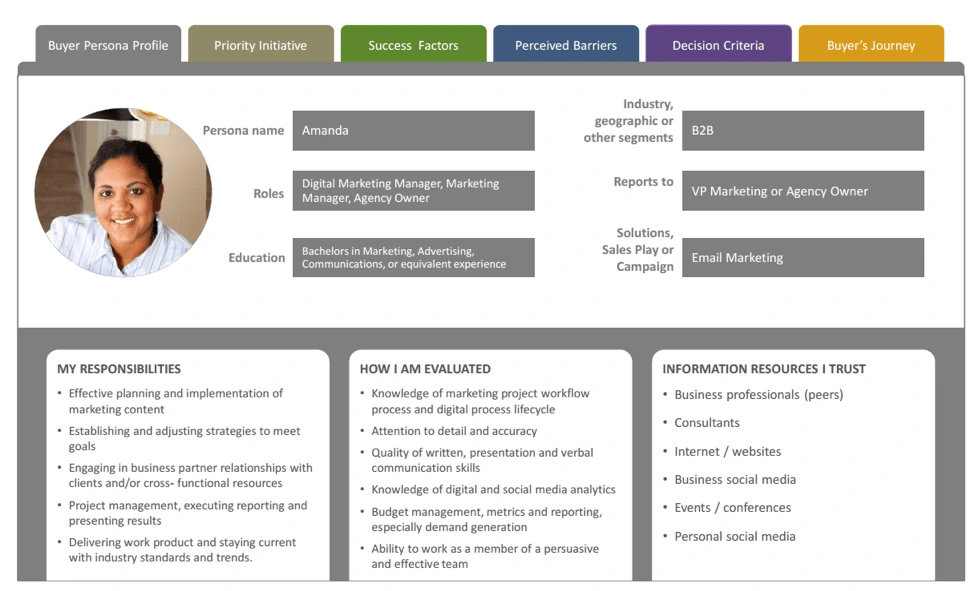
Your buyer personas should target customers who:
- want to buy your products, i.e. have clearly expressed a need and desire to buy from you.
- would buy your products, i.e. are a good fit based on their demographics & psychographics but need to be educated about the product first.
How many buyer personas you’ll have is up to you. A new startup with a single product might have just one buyer persona. A huge corporation like Microsoft might have dozens—even hundreds!—of personas.
How better buyer personas impact conversion rates
Have you ever landed on a website and felt that it spoke just to you? That it mirrored the values you believe in and addressed the exact problem you hoped to solve?
This likely wasn’t an accident; it was probably the result of meticulous buyer persona research.
While there are many ways to improve conversion rates—storytelling, design choices and website speed, to name a few—much of it eventually boils down to the same thing: the clarity of your messaging. When you can identify your customers’ deepest desires and address them directly, you won’t suffer from low conversion rates (and you won’t have to depend on design hacks to save you).
Take Apple’s MacBook Air landing page as an example.
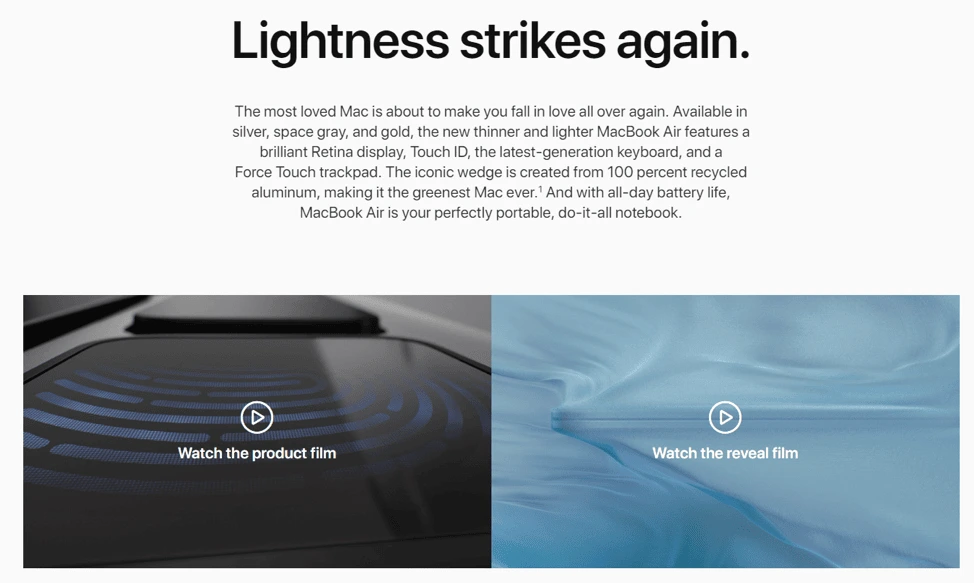
Right away, the copy addresses all the things MacBook Air customers care about:
- Low weight (“Lightness strikes again”)
- New features, especially Retina display
- Environmentally friendly design (“recycled aluminum”)
- Portability and battery life
The repeated use of “again” calls out to current MacBook users, using a bit of nostalgia to entice them to upgrade.
Without a detailed buyer persona, it would’ve been difficult for Apple’s copywriters to know which features to highlight and which to ignore.
This is the true value buyer personas bring to conversion rate optimization. By changing your copy to focus on the things your target audience cares about, you can achieve significantly better conversion rates.
Moreover, accurate personas help you understand your customers’ preferences, from the language & writing style to the visual elements.
If you have detailed buyer personas, you can create personalized landing pages (which convert better) and offer better recommendations to customers.
The question now is: How exactly do you go about creating these buyer personas? I’ll share some ideas below.
Gathering the information
A strong buyer persona is based on data & insight from market research. This first-hand information reveals demographic & psychographic information about your customers.
There are a variety of strategies you can use to collect this information, and here are a few examples.
1. Run surveys
Hosting surveys is a good way to gather information right from the source.
You can either run a survey on your existing customer base or place a pop-up survey on your website for visitors to participate in.
Make sure that you have a large-enough sample size for the data to be accurate. Don’t over-rely on survey results—self-reported data tends to be biased.
You can use software such as Qualtrics, SurveyMonkey or Qualaroo to help you create a survey.
Additionally, consider reaching out to your customer support & sales teams for insight, since they interact with customers on a daily basis.
2. Use your competitors’ data
If you don’t have a large customer base or heavy traffic on your site, you can look to your closest competition.
For example, you might use Google Alerts to know each time your competitor is mentioned online and analyze the source.
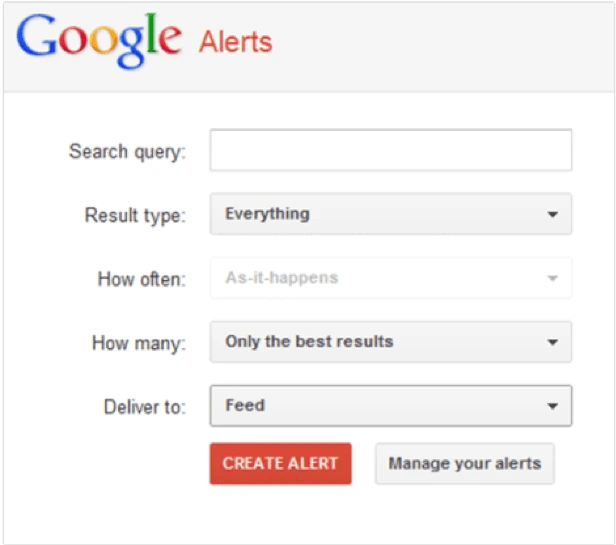
When any mentions pop up, ask yourself:
- Who is writing about my competitor?
- Which other topics, products and issues do they write about?
- What are the demographics of the audience leaving comments or sharing the article?
You can also visit your competitors’ Facebook, Instagram & Twitter pages to see how people interact with their brand (and what those people are like). Pay particular attention to their geographic location, ages and shared interests.
This kind of research is often subjective, but it can still give you a good indication of your competitors’ audiences.
3. Hang out where your customers are
Put yourself in the shoes of your ideal customer.
Hang out where they do and listen to what’s being said. It’s a direct way to discover insights about the language they use and the challenges they face.
You can also read through comments on blogs, hang out on forums, or even attend in-person trade shows and events.
For example, if you’re an athletic shoe brand, you might use Reddit’s search feature to find questions potential customers are asking about running shoes. This can help you zoom in on the problems these customers face and how to address them in your messaging.

Bring your buyer persona to life
Now that you’ve gathered the data, it’s time to make sense of it and bring your ideal customer to life.
Buyer personas are open-ended in terms of what you can or can’t include in them. Virtually anything that helps you understand the customer better is fair game. This includes everything from the customer’s (fictional) background & education to their favorite movies & brands.
Since you’re targeting B2C customers, you can let go of some B2B buyer persona conventions such as including the customer’s title & job duties.
That said, there are a few things every buyer persona should have:
- Name. Give your ideal customer a name to humanize them and make them easier to reference. This can be a first name or a full name; the choice is yours.
- Demographic information. Include basic demographic information about the customer, including their age, location and gender.
- Education level. The complexity of your copy and the features you choose to highlight will often depend on how educated your customers are.
- Background. Create a background story for the buyer. If they already know about your brand, explain how they came to find you.
- Psychographic information. What does the customer like? What do they dislike? Psychographic data can reveal a great deal about your customers, so pay special attention to this section.
- Motivations & values. What motivates your ideal customer? What do they want—from life, from work and from your brand? If you’re a value-based brand, what values will you highlight to appeal to them?
- Picture. Although it’s optional, putting a face to the buyer makes it much easier to visualize them and relate to their problems.
Bring it all together into a single Lucidpress document. You can keep it text-heavy or use a visual design—it’s up to you. For reference, check out this sample buyer persona:

Source: Shopify
Key takeaways
Creating buyer personas helps you speak directly to your customers.
By knowing the traits, values and priorities of your customers, you can craft personalized messaging that feels more relevant to them. The results are highly targeted campaigns with higher conversion rates.
Try it yourself by gathering data on your customers and summarizing it in a well-designed Lucidpress document.
Brand management isn’t for the fainthearted. Even companies with well-documented brand-building strategies struggle to keep up with an ever-evolving list of marketing channels used to communicate with clients.
One of the core strengths of Lucidpress is that our platform helps you build a cohesive brand across your entire organization. Admins create templates and lock down the important brand elements. Users can customize templates but can’t change any elements locked into place to maintain brand unity.
Related: How to ensure brand compliance
The digital files marketing teams create with Lucidpress (or any other graphic design software) are commonly called marketing assets. The term immediately brings to mind the many software packages commonly referred to as digital asset management (DAM) or media asset management (MAM) systems.
Today we’re going to take a closer look at these systems and how they relate to brand management, including the benefits of keeping tabs on all that marketing content.
What DAM is and why it matters
Digital asset management is the process of organizing and making digital files available across an organization, managing them, and tracking their usage.
The term is often confused with marketing asset management, but digital asset management can cover files from other departments as well. Even though accounting may have ownership of a specific file — like a vendor setup form — managers from other departments might need to access the form or provide it to other parties.
Unlike the office environment of 20 years ago, paper is no longer the way people primarily communicate. Digital asset management is the online equivalent of an office filing cabinet.
Why does it matter?
DAM often involves a cross-functional team assembled from different departments including IT, marketing and operations.
When looking at DAM software options, most emphasize file management and organization for marketing departments. However, files can be shared across an entire organization, within single departments, or even with outside vendors & contractors.
Keeping content in order was originally handled by the marketing department. But as enterprise IT needs grew, so did the need for technical specialists to step in and help with DAM.
Very large companies often hire digital asset managers to handle this task for the entire company. Digital asset management is also gaining ground in the MarTech community.
There are some drawbacks to traditional DAM systems, including version control and poor customer experience. Since these systems run the gamut from very simple tools to complex custom builds, we’ve created a buyer’s guide to help you understand how these systems work.
Because Lucidpress is a branding platform, we take brand protection and file management very seriously. Our software can serve as a very simple DAM or integrate with more complex solutions, depending on the size and needs of a particular business.
Digital asset management (DAM) vs. marketing/media asset management (MAM)
We’ve touched on the fact that digital asset management and media/marketing asset management are different.
If you try to search for a DAM system that only handles files from accounting, you probably won’t find one. This is because, in most enterprise companies, the marketing (and sales) department produces the largest amount of digital assets.
That being said, the definition of digital asset management as a business practice differs tremendously from the definition of DAM software.
Additionally, marketing asset management and media asset management are often used interchangeably, even though they have different meanings.
Let’s clear up the confusion here with a few definitions:
- Digital asset management: the business practice of organizing and making digital files available across an organization, managing them, and tracking their usage.
- Digital asset management software: systems used primarily to organize branding materials, including logos, fonts, photos and documents.
- Marketing asset management: the business practice of creating and managing a library of branded materials including logos, photos, sales collateral, audio and video assets.
- Media asset management software: systems used primarily to organize audio & video branding materials, such as radio spots, commercials and videos for social media.
Understand the difference now? It can be confusing when you spot all of these in the wild, but these definitions are something you can refer back to if needed.
Marketing asset management use cases
According to CampaignDrive, there are four generic use cases for marketing asset management that are typically handled by DAM software:
- Content creation. This is where Lucidpress excels and most DAMs fall short. Some DAMs assist with content creation, but marketing content usually requires graphic design or other programs built for professional creation.
- Version control. Most DAMs are focused on content storage, which means you only have access to the current version of any particular file. However, some do allow you to view file history, publish to the final channel and focus on version control.
- Print & offline marketing. Although companies often operate with a digital-first mentality, certain industries like e-commerce and local business services often need to invest in print marketing as well. DAMs really shine here, as print designers can pull logos, previously printed pieces, and other brand elements as needed.
- Local marketing. Enterprise companies with local branches (such as franchises and restaurants) have a greater need for customization & control, as marketing teams in the field might not always have or use correctly branded assets. A few DAM systems support “distributed DAM” or local marketing automation (LMA) to help with this.
Types of files typically included in marketing asset management
Your marketing department often handles many different file types, depending on the channels and campaigns it manages. Given how many there are, it’d be impractical to list every file type supported by a particular DAM or MAM system.
Instead, let’s paint this with a broad brush. Generally speaking, MAM systems are mostly used for audio & video file management. DAM systems are mostly used for file types that aren’t as large or complex, like documents & graphics.
That’s not to say you can’t use a DAM system to store videos. But, a MAM system is better built to support them, from the interface to search capabilities to storage capacity. It might seem like a small distinction now, but those factors become more important as your library grows.
Marketing asset management ROI: Who benefits from marketing asset management?
For enterprise companies, the marketing department directly benefits from having a formal system in place. It saves time for designers who are looking for branded templates and the latest version of your logo and other marketing materials. Brand managers save time, too, because final quality checks will be faster and easier.
Another practical benefit: Properly organized files with good version control will save you money & embarrassment by preventing incorrectly branded print & digital ad campaigns.
Another benefit of marketing asset management is that it improves the relationship with IT. Many art departments and in-house creative studios already work side-by-side with dedicated IT employees, and having a formal system to manage files can help both sides stay on the same page.
Overloaded servers, multiple versions of the same file, and other problems create real headaches for companies trying to manage computer networks and hard drive space. Marketing asset management helps alleviate that, especially if the company has a dedicated digital asset manager.
Employee productivity is another benefit of marketing asset management, since creatives spend less time looking for files and more time fulfilling creative requests.
Key takeaway
Marketing asset management is a fairly new concept, but it’s already distinguishing itself from digital asset management in a few key ways. Understanding whether your brand would benefit from DAM, MAM, or a combination of both will make it easier to build the right system for your business.
Learn more about digital asset management in our comprehensive buyer’s guide.
Our world has become a digital one. You see its digital fingerprints in virtually every aspect of 21st-century life. We stream movies & shows on smartphones, store photos & documents in the cloud, and create apps to cover a wide spectrum of activities. These digital assets are everywhere.
Related: What is marketing asset management?
For a company, a digital asset creates or augments its brand identity. Understanding the role that a digital asset plays in your success is crucial when you’re managing or marketing a brand.
Identifying a digital asset
What is a digital asset in simple terms? At a basic level, a digital asset is content that’s stored digitally and holds value to the company who uses it.
This creates a broad spectrum of items that can be considered a digital asset. Photos, videos, images, slideshows, graphics, PDFs, spreadsheets, audio files, and even plain text documents all fall under the digital asset umbrella. For example, an .SVG file of your brand logo is a digital asset. So is the template for company letterhead. Advances in technology mean that what is considered a digital asset is always evolving.
For your company, digital assets are going to include everything related to your brand messaging, products offered, and services rendered. If you have digital content that is uniquely identifiable and provides value to your company, it’s considered a digital asset.
Benefits of a digital asset
Companies count on digital assets to serve a couple of distinct purposes. Such assets help build brand awareness. They can also influence a consumer’s purchasing behavior. When used effectively, digital assets can help brands do a better job of engaging consumers and earning their business by offering personalized, relevant content that fits their needs.
Think about it. Would you sell baby clothes & toys to a single person without any children? No. You would target parents with your products. Tailoring digital assets to fit the needs of your target audience sets successful brands apart from brands that fail.
What makes digital content so important? The rise of social media has put a premium on visual content. When you check out platforms like Instagram, Facebook, Twitter and Pinterest, you’ll notice a flood of visual posts featuring photos, short videos and GIFs designed to draw attention. These assets help brands connect with an audience via multiple channels and form the foundation of your brand identity.
How should you manage digital assets?
Making a good first impression and a lasting impression are both equally important in business. You want to manage digital files properly so you can always put your best foot forward in marketing and in communications, with vendors and customers alike.
Before the digital age, managing brand assets meant keeping file cabinets stuffed with all sorts of materials around the office. It could easily get cumbersome and hard to track. Today, digital asset management (DAM) software takes the place of the file cabinet. It makes it easier to store, edit, share and protect your content. Employees can play an active, collaborative role in modifying and sharing documents, images and other digital media while remaining true to your company’s brand voice.
DAM software exists for the purpose of making all digital assets identifiable, searchable and discoverable. It incorporates metadata into the process, which is data — such as keywords or phrases — used to describe a particular digital asset. This makes it easier for your company to build a consistent and strong brand voice across all marketing channels.
Take a holistic approach to digital assets
As a solitary tool, DAM software will not be completely effective in keeping your brand voice loud, strong and memorable. Think of it in terms of owning a car. Getting an occasional oil change isn’t the only thing you do to keep the engine running. You need to fill up other fluids, replace air filters, and do diagnostic checks to extend the life of your car.
Managing digital assets operates on a similar principle. You need to incorporate DAM software into a larger toolbox you use to create and share content. DAM software can be fully integrated to aid other functions such as web content management or digital advertising platforms. It can also be specialized to focus on a narrower channel like media production or brand management.
DAM software does come up short in key areas. It has no version control, no enforced brand guidelines, and no locked templates. The end result is chaos in systems where there should be order in building & maintaining a strong brand voice.
Lucidpress can pick up where DAM software leaves off. It lets you design templates with the latest logos, colors & other assets that align with your brand. You can update brand assets seamlessly and finally get old logos out of circulation. With our brand templating platform, you can create everything from newsletters to social media ads through cloud-based software and a user-friendly interface that promotes real-time collaboration.
Learn more about digital asset management in our comprehensive buyer’s guide.
Do you remember the dark days before cloud storage and internet searches? I know I do.
Today, if you have a question or need to know something right now, I’ll bet you do the same thing we all do… Google it. Gone are the days of the Dewey Decimal system and library searches that limit you to the knowledge in books they have onsite. Gone (thank goodness) are the days of inserting floppy disk after floppy disk (despite your best labeling efforts), madly trying to find that one photo you need for an ad or that flyer your team created last year that you to repurpose for a last-minute client meeting.
Related: Image management—What it is & why it matters
If you’re a young millennial or younger, you’re likely shaking your head no. You’ve grown up with the internet and all of its magical powers of information filing and seeking. But before Google became synonymous with finding things on the ‘net — and storing them for you via Google Drive (or Dropbox or Microsoft OneDrive) — finding your files and sharing them sometimes felt like the hero’s quest for the grail.
Of course, this didn’t solve every file management problem. It’s one thing to have a system for storing your own collection of files and media — but what happens when you add more people to the equation? Predictably, it becomes much more complex. That’s the situation many companies and marketing teams find themselves in as they start to grow and build up their multimedia assets.
What is media asset management?
Details, please. A media asset management (or MAM) system provides a single warehouse for storing and managing video and multimedia files.
Think of it like your own private ‘Google’ that you can adopt for your media storage, brand integrity, usage analytics and team collaboration needs, helping you and your team easily find, edit, share and centrally store all of your media assets and projects so that the most recent versions are accessible to anyone (to whom you grant access), anytime, anywhere.
Yes, content is king. But asset management is most definitely queen.
The right media asset management software empowers you to build a strong, consistent brand and maintain its consistency across all types of marketing collateral. Most users are impressed by how intuitive, flexible, logical, and easy the software is to use. It’s a cost-effective approach that has proven very successful for the world’s most powerful brands in managing their digital assets.
Why it’s so important
So why is media asset management so important? If your organization is still depending on internal folder structures and email to manage content, it’s likely costing the company money.
This is money in lost time, inefficiencies, recreating the wheel over and over, emails back-and-forth between team members, and reduced production or ability to take on new work. It may also be causing the company less tangible side-effects like employee stress, breakdowns in brand compliance, loss of version control, and loose file security.
So much media, too little management. Much like the saying “With great power comes great responsibility,” today most of us have more media than we know how to (properly) manage. And it’s costing us big time. According to PR Newswire, inefficient knowledge sharing costs large businesses $47 million per year.
According to the Panopto Workplace Knowledge and Productivity Report, “U.S. knowledge workers waste 5.3 hours every week either waiting for vital information from their colleagues or working to recreate existing institutional knowledge. That wasted time translates into delayed projects, missed opportunities, frustration among employees, and significant impact on the bottom line.”
Talk money to me. That’s one solid reason to switch your content management to a MAM system or brand templating platform. But what is the full ROI of media asset management?
Based on impact to the bottom line alone, it’s crucial for every brand to manage their assets properly, using media asset management software (or digital asset management software – but we’ll get to that later).
Have you ever had to find a flyer your team made sometime last year right now to impress a new client with samples of your work, with little regard for the 40,000 files in your internal folder structure? Or put a few grey hairs on your head trying to work with multiple players across your organization to storyboard, produce, animate, and record voiceover for a video highlighting a new product?
If so, I’ll bet this took hours or weeks. With a MAM system, you can reduce this to minutes and days. Imagine the time (and sanity) saved by gaining hours of your life back for other tasks — not to mention the money…
MAM: What marketing managers, CMOs, and digital asset managers need to know. The leadership and tools you provide your team, and the instructions they follow, produce the future you create.
Next-generation media requires new ways to manage it. Lucidpress is revolutionizing modern media asset management that keeps companies in control of their content, regardless of industry, size, or the number of people on your team. Learn more >>>
Use cases for media asset management
A MAM system gives you and your team greater control with your media, digital assets, and content over how you:
- Share: Produce content without inevitable delays typical of folder structures or lack of capacity or any technological blockers that you’ve experienced in your non-MAM system before. Quick to deploy, a MAM system will simplify your workflow significantly.
- Edit: Efficiency is the name of the game. Whether you’re working with a team of two or 20, they can update content, video, and digital assets from anywhere they have an internet connection.
- Distribute: Imagine this: your team is facing a big project that requires input from eight team members in four different offices. Overhaul the way they search and find content and collaborate so they can focus on creating more content with fewer resources (and hours).
- Manage: Revolutionize the way you team manages things like video creation, editing, and distribution, making the process much more seamless and efficient. Your team can store digital assets, including templates, and you can even lock them or decide what parts of an asset members can access or edit. You’re in charge every step of the way.
- Archive: Knowledge transfer and loss is a real thing that’s hindering too many businesses. Manage the ongoing preservation of your company’s most important legacies with a system that automates the storage and retrieval of your brand assets.
- Process: Allows your team to not only create a searchable catalog of your historical digital assets, but also to implement automated workflow for distribution and archive. After giving up an internal-folder-structure-and-email process, you’ll never understand how you lived without a MAM system.
- Security: Ensure that the material stored is secure and available to the wider community. With media asset management software, no matter how much content you generate, you stay in control of what gets stored, who sees it, and how.
The difference between MAM and DAM
I’m listening. So, what is the difference between media asset management (MAM) and digital asset management (DAM), you ask? The answer isn’t always clear.
First, the similarities: Both MAM and DAM relate to content management and are used to store, organize, and retrieve digital assets that must instantly accessible. You can think of them much like Pinterest and many other social networks and consumer sites, including Instagram, Canva, and Flickr that people use to store digital files. The goals are the same, while some of the features differ.
And the differences? In the past, DAMs wouldn’t typically manage rich media assets like audio and video (you needed a MAM for that), but that is quickly changing. With these changes, often the terms MAM and DAM are used interchangeably. The systems share similar features and there is a lot of crossover.
However, there is still a fine line between the two. DAM software takes the control, flexibility, portability, and access also found in MAM systems, and adds reporting to it – the ability to track and measure digital asset engagement across an organization and its potential reach.
In general, a DAM asset is defined as the media content and its metadata. The metadata can simply include the name, author, or creation date of a file, or track more complex information like extracted speech converted to text from a stored video, or the rights and fees around image use. Here is a page that explains the benefits of DAM nicely.
Which is better (DAM or MAM)? It depends. If you’re looking for audio or video storage and close integration with editing applications, MAM may be the way to go. Conversely, if you’re managing thousands or more assets of different types for many different users within your organization and want to allow different permissions for many of them and need to use analytics from metadata to tailor your content and reach your target audience, a DAM is a better bet.
Features to look for:
You want a straightforward solution to easily manage all of your content, videos, assets and graphics. You’ll also want to make sure the system is expandable later, as your company and your team grows, and provides enterprise-level functionality.
It goes without saying that you want a platform that allows easy migration from your current system while preserving your existing content archives without downtime or the need to restore media during migration.
Here are some must-have features to look for in a MAM or DAM platform:
- User-friendly interface
- Content rights management
- Asset organization
- User permissions and personal portals
- Search functionality
- Workflow management and integrations
- Analytics
The best asset management platforms have even more features to help your team manage your brand assets properly. With the Lucidpress brand templating platform, you can:
- Allow version control
- Enforce brand guidelines
- Lock templates so that only certain users can alter content
- Embed video files directly into your documents
Who benefits from media asset management?
The short answer: everyone. The longer answer: every member of your team, from management to marketing to design to sales.
The proof is in the profit, and I don’t mean only the cash-money bottom line (though, as we’ve learned above, it definitely helps that, too). I’m talking about the importance of building a strong, consistent brand through employee and team efficiencies, stress reduction, data security, knowledge capture and preservation, and brand asset management.
The tools you use are just as important as the work you put into creating the content. Better outcomes. (Less swearing.) Sometimes the hardest work of all is figuring out how to make it easy.
A brand templating platform like Lucidpress is a great way to help marketing teams stay on brand and generate all the marketing content you need. In fact, Lucidpress can be an excellent partner or replacement for DAM software.
Key takeaway
If you’re doing it right, your brand assets are audience-ready. You have instant access to the most up-to-date files to deliver the right content and target your customer in the most effective way. And that should make any content marketer’s job easier.
No matter which MAM option you choose or currently use, by integrating Lucidpress with your stack, you can easily and quickly design on-brand content, then store and share those assets with your employees.
With so much competition for a customer’s attention and loyalty, creating a positive customer experience has become a top priority for brands and businesses. Great customer experiences can ultimately lead to business growth, but some businesses struggle to accomplish a well-curated experience for their consumers.
Taking the time to track and benchmark customer experience metrics can make a huge difference in your quest to improve customer experience. A great starting point is measuring customer experience metrics, including Net Promoter Score (NPS), customer satisfaction (CSAT), customer effort score (CES), customer churn rate and visitor intent.
We’ll show you how to measure customer experience — and whether you use one or all of these metrics, just remember they’re simply scores to help you track and monitor improvements. What’s most important is taking what you learn from any one of these metrics and improving your customers’ experiences with your brand.
Net Promoter Score (NPS)
A Net Promoter Score (NPS) is used to gauge your customers’ overall satisfaction with your brand. When calculated, it can reveal the percentage of customers who may or may not recommend your services to family, friends, etc. An NPS can easily be measured through a customer survey that flat out asks, “How likely are you to recommend [your brand/business] to a friend or colleague?” Through a rating scale of 1-10, you can calculate your NPS by subtracting Detractors from Promoters:
- Detractors are anyone who scores your brand from 0 to 6. This means they are generally dissatisfied with their customer experience and could potentially impact brand perception negatively through word of mouth.
- Promoters are anyone who scores your brand from 9 to 10. They’ve had a positive customer experience, feel loyal to your business and will most likely promote your brand or product/services.
- Anyone in between these two is considered a Passive; those who score from 7 to 8. They’re satisfied but not so loyal they can’t be pulled away by competitors.
By measuring your NPS, you can assess the overall loyalty of your customers. Measuring the NPS is one of the most common customer experience metrics as it’s quick to complete, easy to understand and can give a look into the big picture of customer loyalty.
Customer satisfaction (CSAT)
Another metric used to gauge the overall customer experience is customer satisfaction (CSAT). CSAT can be measured as the average satisfaction score your customers use to rate a specific experience they’ve had with your brand. This can include anything from returning a product to getting an answer from customer support. To measure this, you can send automated surveys to customers asking them to rate their level of satisfaction during this interaction from “not satisfied at all” to “very satisfied.”
Customer satisfaction is essential to growing your business in this digital age where our economy runs on split-second decision making by consumers. To make this metric most effective for your business, try to get a CSAT score within 30 minutes of a customer’s interaction. Getting a here-and-now reaction to your product or service can really help in calculating your CSAT. Be sure to use follow-up questions that dig further into their experience so you can identify pain points and highlight where improvement is needed in the customer experience.
Customer effort score (CES)
A third metric for improving customer experience is calculating your customer effort score (CES). This score helps you determine the effort required by your customers to accomplish a task such as finding the product they’re looking for or receiving a response from a support request.
You can calculate this score with a similar post-interaction survey like the CSAT and asking customers to rate a specific statement. Be sure to curate these statements based on specific interactions. For example, if it’s following a customer support interaction, you could ask, “How much effort did you personally have to put forth to resolve your issue?” Your scale can range from “very low” to “very high.” On the other hand, if you’re gauging how easy it was for them to find a specific product they were searching for, you may use the statement “The company made it easy for me to find the product I was looking for,” and have a scale ranging from “strongly disagree” to “strongly agree.”
One of the biggest reasons customers choose to interact digitally is the ease and lack of effort it requires of consumers. Customers don’t want to work to get something they’re looking for — this is why more and more companies offer online chat support rather than forcing customers to call or go to a physical location for help. In this digital era, your customers will prioritize products and services that don’t demand too much effort.
Note too, the more effortless the customer experience, the higher the satisfaction. This can lead to high-value, loyal customers. And although CES is a more recent metric, it can provide actionable data to help you change pain points quickly in the customer experience journey.
Customer churn rate
Along with the above customer experience metrics, customer churn rate is a great measuring tool. The customer churn rate is the rate at which customers abandon a brand, service or product. This can include customers who don’t make repeat purchases or cancel recurring services that are subscription-based. To calculate your churn rate, divide the total number of customers lost by the total number of active customers for any given period.
If you’re not a subscription-based business, you’ll need to clearly define what constitutes a churn event for your company. For example, if you know most of your customers tend to make repeat purchases within 90 days, then mark any customer who doesn’t do so within this 90-day period as churned. If you are subscription-based, simply divide the number of customers who cancel a service by those you retain. Other ways you can measure this are as follows:
- Calculate overall customer churn during different time frames such as monthly, quarterly or annually.
- Measure churn during specific stages of the customer journey.
- Calculate customer churn based on specific customer cohorts at different time periods. This could include the churn rates of a customer cohort that signed up for a specific promotion.
- Segment churn by customer type and subscription plan.
Visitor intent
Our final customer experience metric is visitor intent. Visitor intent measures why consumers are coming to your page or website. By measuring this, you can discover what users want when they first land on your page and specific problems customers are looking to solve. This metric can also help you gain insight into audience needs along with providing an opportunity to create more relevant products, services, content or even landing pages.
Overall, there are two types of visitor intent: informational or transactional. Users are coming to your page either in search of information or they’re specifically looking to buy something. You can measure visitor intent through website analytics by reaping data around the terms that attract users to your page, which pages they visit and how long they stay on the pages.
Along with this, you can also ask customers directly by creating pop-up questionnaires, customer polls or online surveys. Use targeted questions that are both multiple-choice and open so you can understand the “why” behind their actions.
Give your customer experience program the metrics it needs to generate support across the company and grow your business. The stats show both the consequences and rewards can be high.
Transform your employees into the driving force behind good customer experience.
Webinars don’t have to be a slide presentation snoozefest. In fact, they’re a great option for creating cost-effective content and harnessing the sales leads of your dreams. Hosting a webinar is fairly simple… it’s getting people to come that you’ll have to spend more time on.
We’ll tell you how to host a webinar and rustle up attendees — and we’ll give you tips for creating an engaging experience that’s good for business and fun for your guests.
Benefits of hosting webinars
As long as you’ve got a dynamic speaker and an interesting topic, there are few drawbacks to hosting a webinar.
You have access to a bigger audience
- Theoretically, you could ask people from all around the globe to attend! A webinar is a great opportunity to expand your audience — there are no travel constraints, and concerns about cost and time are almost nil. The low-commitment aspect of a webinar will draw people in like flies to honey.
It’s waaay cheaper than hosting an event IRL
- Without the cost of renting a space, putting up your guest speakers and coordinating a large event, you can instead put funds toward advertising your webinar and getting a healthy list of attendees.
You’ll generate high-quality leads
- Your attendees are basically a bundle of qualified leads. The people who come to your webinar are already at least somewhat interested in your area of expertise, and you’ll capture all their info when they register for the event. Bam! A nice, tidy list of leads to pass along to the sales team.
You can reuse the content
- Once you’ve got a solid webinar under your belt, you can repurpose it in all sorts of ways. Chop it up into choice tidbits and use the video clips in a blog, LinkedIn ads, your next email campaign… anywhere you need an extra boost of expert content.
10 tips for creating and hosting a successful webinar
Here are our top ten tips on how to host a webinar — including the little touches that will keep things on the right track.
1. Choose a platform
You’ll ideally want to pick a webinar platform that you feel comfortable navigating. There are a lot of options out there and they all offer similar features: poll and chat functions, data on attendee engagement and the ability to record. It will probably come down to price and the user interface you like best to help you decide. We like Demio, GoToWebinar and the ubiquitous Zoom.
2. Set the date
Pick a day and time that will work the best for the most people. Make sure you choose a time that’s doable for both the East and West Coast. Something like Friday at 3:00 p.m. EST would work well since that happens at noon or a little later for the rest of the country.
3. Get the word out
Drumming up a good number of attendees is where you’ll put in a lot of work. You need to effectively market your webinar and get people interested. First things first, you’ll want a landing page for the event with information about the topic and speakers, as well as your registration form.
Put together an email drip campaign to send out to prospects and start promoting the event on your social media channels. You’ll want to start marketing at least three weeks before your webinar, but a couple months in advance is ideal.
4. Polish your presentation
You’ll want to spend extra time making sure the visuals for your webinar presentation are on point. Without live, face-to-face interaction, you won’t be able to read the room and get a feel for how your audience is responding. Your best bet is putting together a presentation that you know will keep your guests focused and interested.
The easiest way to put together an eye-catching presentation is to find a perfect webinar template that’s polished and represents your brand well. We’ve got loads of customizable presentation templates that you can tailor with your brand’s logo, colors, fonts, etc.
5. Keep your audience engaged
You don’t want your presenter to just drone on endlessly. Break up the webinar with polls and interactive Q&A sessions. Most webinar platforms come with built-in tools for polls, questions and chat, so your audience can engage with the content or “raise a hand” and ask a question.
You can also create a hashtag for your event so people can discuss their insights during and after the webinar on platforms like Twitter and LinkedIn.
6. Do a dress rehearsal
With big events, you don’t want to be flying by the seat of your pants. Run through the webinar a couple days beforehand so you have enough time to fix any issues that pop up. Make sure your video platform is running smoothly, check that a test attendee can see and hear you clearly, confirm that any transitions between slides or speakers go as planned, and so on.
7. Record it
Make sure you record your webinar! This is what you’ll repurpose into future content. You can go in after the live recording and edit out any glitches or remarks that won’t be needed for a rebroadcast. You can also send out the recording to all the participants, so they can refer back to it in the future.
8. Use a mic
Get a wired headset mic for each one of your presenters. Yes, they look geeky, but it will ensure that everyone can hear clearly. Poor quality audio makes it hard to concentrate and is just plain annoying.
(And please, for the love, make sure all presenters mute their computer notifications while they’re on so listeners aren’t assailed with pings and dings throughout the event.)
9. Have someone there for tech support
The last thing you want to be doing while hosting a webinar is worrying about tech issues. Have a designated tech person on hand who’s ready to handle any problems.
10. Send out a survey after
Send a survey to participants shortly after the event and solicit their feedback. Getting input from your attendees will help you know what went well and where you can improve for your next go-round.
With the right preparation, webinars can be a breeze to plan and a boon for your business.
For help with creating a beautiful, on-brand webinar, don’t miss our free webinar templates.
You can’t really have a webinar without an audience. And in order to get an audience, you need to employ proper marketing tactics — like an effective webinar email sequence. And in order to do that quickly, efficiently and at a relatively low cost, you could probably benefit from using a webinar email template.
Sounds pretty simple, right? Right! But, first things first.
Webinars for the new normal
Simply put: webinars level the playing field.
Those who attend webinars stand to benefit from unobstructed access to field experts and information that they may not have access to otherwise. On the other hand, those who host webinars gain insight into prospective customers or qualified leads.
Though, ultimately, during times like these where our new normal largely entails remote agendas and telecommunications, webinars empower attendees and hosts to connect, learn and keep moving forward.
So, all that said, hosts need to do a little more legwork than simply hosting a webinar. In other words, you need to create an email nurture campaign like you would for any other project.
So, what can you expect to learn or read about during this article? A few things, namely:
- What to include in a webinar invitation email, along with examples of a webinar announcement template.
- What to include in the webinar post-registration email, along with an example of a webinar post-registration email template.
- What to include in the webinar follow-up email, along with an example of a webinar follow-up email template.
A few webinar email template tips and tricks
Before we get the ball rolling, let’s tackle some “need to know” pieces of information.
First, make sure your webinar slides are completed or in the very least in an approved rough draft form. Having a hard time getting the creative juices flowing? No worries, we’ve got you covered with our helpful article about how to create an effective webinar slide.
Ready to take things to the next level and write your emails? Great! Be sure to consider and include the following tidbits when crafting up your campaign:
- The What — Also known as your webinar title.
- The When — The time and date that your webinar is slated to occur. Be sure to include the time zone and whether or not the webinar will start exactly at a certain time. Just remember you might have some stragglers popping in at the last minute!
- The Who — Your attendees need to know who is speaking at this webinar, of course! And don’t forget to include a note about your host or sponsors.
- The Where and How — Here’s your opportunity to include a registration link or what have you. This also includes CTAs and other buttons or links, too.
- The Why — Make sure it’s clear to attendees why they should attend this webinar and what they stand to gain and learn.
- The Little Details — To reduce errant queries or emails, relay to attendees whether or not there are any required skills (needed to attend the event), speaker or host biographies, and whether or not there will be time for a Q&A at the end of the event.
Also, whatever you do, don’t forget to include a subject line!
Now, onto the next section.
How to create a great webinar invitation email
How often do you get to make a second-first-impression? Kind of never. So, as you craft up your webinar invitation or announcement emails, remember to:
Keep it concise
Use whatever salutation you prefer, but remember to keep it simple, sender! Ultimately, you want your webinar invitation email to be concise, inviting and approachable.
Include helpful pieces of information
So, we just told you to keep your invitation email concise, but you don’t want to be too concise because then you could leave your audience hanging. Be sure to include relevant tidbits of information about the webinar, like the ones we mentioned in the tricks and tips section above. By not including this information, you run the risk of having low registrations or not having any at all.
Provide extra context about your presenters
Now’s the time to introduce your webinar presenters and speakers. You’ll want to include bios, headshots and so forth. Doing so can help sway participants who might be on the fence about signing up.
Make it a little flashy
You don’t want to go too crazy, but you do want to give your webinar invite email a little pizazz. Components like gifs, eye-catching images or videos can add a little bit of flash without going totally off the rails. You can easily use our webinar invite template to get started. You can even put your own custom twist on the template and send it off to your marketing team to fill in the blanks — without having to stress about anyone going hog wild with fonts or images.
Leverage frequently asked questions
No matter how hard you try, you’re going to encounter opposition from prospective webinar attendees. So, do yourself a favor by addressing the skeptics with frequently asked questions. Not only does this help build rapport, but it nurtures a sense of relatability.
Use CTA buttons
Use CTAs to balance the copy and visual content. We recommend including one at the top (or middle) and at the very bottom of the email. And remember — stick to on-brand colors and fonts, otherwise you might visually confuse your reader!
Webinar invitation email template example
Get the word out with our webinar invitation template.

How to create a memorable post-registration email
Once someone registers for the webinar, the next step is to send out a post-registration email. This helps keep the chain of communication open and helps to ensure that the participant follows through and attends the webinar.
It’s worth noting that you should send a few invitation reminder emails out — such as the day before and day of the webinar. Remember you want to drive attendance, so you can, in turn, increase your chances of attaining qualified leads.
Confirm registration
Above all else, you want to make sure that you confirm their registration for the webinar. The Internet can be an unpredictable black hole and sometimes things fall through the cracks. Don’t let your participants think your webinar and their registration was one of them.
Ask a rhetorical question
You don’t want to create a false sense of insecurity or urgency, but you do want to remind the participant that they have something important to learn and gain by attending your webinar. Not only that but it also effectively sets you up to introduce your product after the webinar in your follow-up email.
Include links
For example, you can include links that allow the participant to add the event to their calendar, invite a friend or cancel just in case something comes up that prevents them from attending.
Post-registration email template example
Keep communication flowing with our post-registration email template.

How to create an excellent webinar follow-up email
Before you send out your webinar follow-up email, we suggest creating different recipient segments based on job titles or industries. This will help you custom-fit your follow-up email messaging based on your audience’s needs and ensure your email resonates with them — instead of falling flat.
Offer your appreciation
First and foremost, remember to thank your webinar attendees for taking the time out of their day to listen in. After all, everyone likes to feel appreciated!
Address their pain point
Webinars often wind up being a great source for MQLs. So without being too pushy or going overboard with a sales pitch, try gently addressing the pain point that your webinar sought to solve. From there, you can introduce your product or service and how it helps to clear up or abate the issue.
Provide a “replay” link
A replay link keeps your webinar top of mind for attendees — and should a registrant miss the webinar altogether, it ensures your presenter’s messages and information still reach your target audiences.
Webinar follow-up template example
Make your attendees feel valued and appreciated with a little help from our webinar follow-up template.
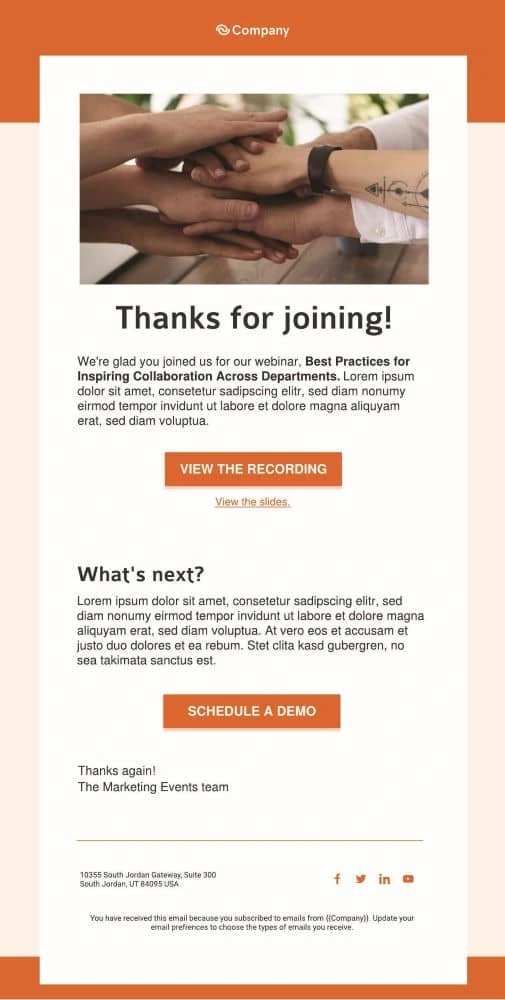
Let the good times roll
At the end of the day, webinars are extremely effective marketing and educational tools. However, keep in mind that most webinars have a 46% attendance rate, so no matter what you want to ensure that your webinar emails are on-point, on-brand and consistent. Unsure how to create a solid email sequence without succumbing to the Doomed Wall of Text? We got you — check out any of our free email newsletter templates to get started.
Also, if you have your own webinar email tips, we’d love to hear about them! So feel free to share ‘em with us.
For help with creating a beautiful, on-brand webinar, don’t miss our free webinar templates.
Every business worries about customer experience, but B2B businesses face a much harder challenge than B2C companies when it comes to interpreting CX. Consumer-oriented customer experience has decades of research behind it, while B2B CX is still getting its footing. Applying B2C measurements to your B2B business won’t get you clear results — you’ll need a strategy that’s designed specifically for the complexities of B2B.
The challenges of B2B customer experience
B2B customer experience ratings are significantly lower than B2C ratings — less than 50% satisfaction compared to 65%-85% for B2C. And it’s not surprising. Retail businesses have only one person on the other end of a transaction, but B2B customers are a whole lot more complicated.
In a business-to-business deal, you’re involved with any number of stakeholders, teams and personalities to account for. There’s a much greater distance between you and your end user. Plus, B2B services are often complex — a single product can have various facets. To put it simply: the customer journey is a lot more complicated. Untangling the web of customer touchpoints for your particular business can be a formidable task.
Pair that with business expectations rising to meet consumer expectations for quick and seamless interactions, and you could find yourself in a tight corner.
Strategies for improving B2B CX
Here are a few specific strategies for measuring and improving the B2B experience for your customers.
Map every customer
To get a better understanding of your customers’ experience, you first need to map all of your customers. This means the people who are actually purchasing your product as well as their supervisors, the end users and any third parties involved in the customer journey. And you’ll need to do this for each persona. It’s going to get complicated, but the more insight you have into your customers, the better you’ll be able to tailor your CX strategies.
Create tracks to improve journey mapping
Once you’ve mapped each customer in each persona, you can start to create tracks, which means building a hierarchy of customer journeys and divvying them up between more and less complicated journeys. This will help you know where to focus your efforts (and how much effort it’s going to require).
Tracks can be separated into categories like a complex journey, a standard journey and a simple journey, but figure out a set of tracks that makes the most sense for your business.
Work closely with channel partners
When you have channel partners, your customer journey is even more complicated. It’s important to remember that channel partners are just another branch of your business and to treat them with the same attention you do the rest of your company. Focus on maintaining excellent relationships with your partners and providing them with the same level of training that internal departments get.
You may even consider investing in a partner relationship management (PRM) solution to facilitate an open, beneficial relationship and customer success across the board.
Democratize content creation for a fluid content experience
Good content connects the dots between your brand, your product and the customer experience — and a consistent content experience will go a long way in keeping B2B customers happy.
Democratizing access to content production, or making sure everyone at your company can create on-brand content, will ensure your customers are regularly getting content that resonates with them. It’s a clear way to improve your CX while also bolstering marketing efforts for future prospects.
Metrics that matter in B2B CX
You’ll need at least a handful of different measurements to get a good sense of your customer experience. Since there are so many steps in the B2B customer journey, it only makes sense that you need multiple metrics to get the full picture.
Net Promoter Score (NPS) is widely used to measure customer experience for B2C companies, and it can be useful for B2B experience too, with a few adjustments. You need to use a larger sample size (at least 1,100 scores) to get an accurate measure, and looking at the average score will give you more insight than dividing scores into promoter, passive and detractor. B2B scoring just isn’t as straightforward as B2C.
OSAT (overall satisfaction) and CES (customer effort score) ratings can help round out NPS scores and give you insight into certain aspects of your customer experience.
Tracking importance will also help you further narrow the usefulness of CX metric scores. Importance looks at how useful your product or service is to a business right now (absolute importance) and how useful it will be in the future (importance trajectory).
B2B International cites six pillars to measure for an understanding of the true quality of your company’s CX.
- Commitment: How dedicated your company is to the customer experience.
- Fulfillment: How quickly you follow through on what customers really need.
- Seamlessness: How easy it is to buy and use your product.
- Responsiveness: How quickly you react to and resolve problems.
- Proactivity: How often you get ahead of problems before they start.
- Evolution: Your efforts to make your CX better.
Looking at your customer experience from as many angles as you can will help you identify what needs to be improved so you can put a plan in motion.
Examples of B2B CX done right
If you’d like some real-life examples of nicely done B2B CX to get your wheels turning, take a look at what IBM and Salesforce are doing.
- IBM consistently ranks as one of the top valued B2B brands in the world. Among a host of CX initiatives, the company employs customer success experts to help clients optimize their IBM Cloud accounts. Going above and beyond in customer support has proved to be a smart strategy for the technology giant.
- Salesforce offers one-on-one time with experts via adoption services, advisory services and success plans to keep customers happy. And the company is even a thought leader in the CX field, penning loads of content about how to improve customer experience — a great example of a fluid content experience.
Customer experience is inarguably one of the most important elements of your business. And while B2B CX can be complicated to measure, you’ll reap what you sow here — so don’t hesitate to get down to it and tailor a CX strategy for your company.
Learn more about the customer experience and how each of your employees can make a difference in our free ebook.
According to the results of a survey conducted by the Chronicle of Higher Education, 55% of private colleges and 44% of public colleges didn’t meet their enrollment goals in 2017. Was your college one of them?
With the looming threat of student debt and a decreasing belief in the importance of going to college, marketing is becoming a crucial factor for institutions who want to boost their numbers.
Related: How to take charge of your university’s branding
And it’s not just about attracting prospective students, either. Engaging your current students is essential if you want to build a strong brand with a positive reputation.
In this post, we’ll tackle the key tactics you need to employ as part of your overall marketing strategy. We’ll also look at some of the hottest trends in higher education marketing today.
Higher education marketing strategies
When it comes to strategies for education marketing, things move quickly.
With a young, digitally minded demographic and the continual emergence of new tech and trends, education marketers must work hard to stay ahead of the curve.
These four tactics will help you tighten up your marketing plan and push it forward.
1. Think mobile-first
Today’s college students live with a mobile-first mindset, using their smartphones as the primary device for carrying out a range of activities.
A recent study from the Interactive Advertising Bureau (IAB) titled Generation Z & Young Millennials: Mobile First on Campus found that 55% of students have acted after seeing a relevant ad on their mobile phone.
For education institutions, this means mobile-first advertising should be a focus in their enrollment marketing plan.
Keys to success for mobile-first higher education marketing:
- Keep the creative work simple and design primarily for the small screen.
- Choose the apps that students use most on mobile—such as Snapchat, YouTube, Instagram & Spotify.
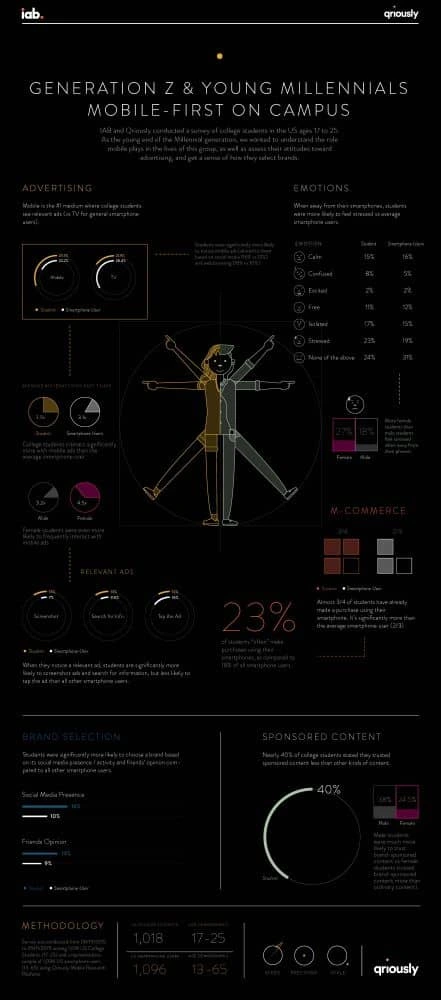
Source: IAB
2. Choose the right social media platforms
That first point nicely brings us to thinking about platform choice in general.
As much as it’s crucial to pick the right channels for digital marketing, it’s also important to think strategically about every platform you’re putting energy into.
A 2019 article from Business Insider reported that Gen Zers between 13-21 used Instagram, YouTube and Snapchat more than any other social media platforms.
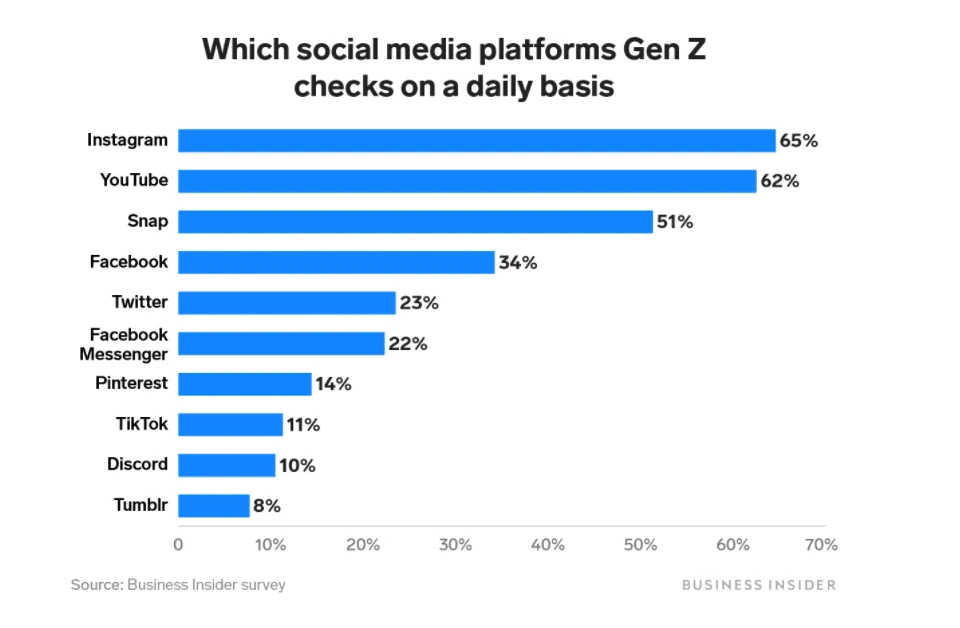
How to leverage the right platforms for successful higher education marketing:
- Pay attention to the numbers and direct most of your energy where young people spend their time online.
- Be creative with your approach, and look for smart ways to integrate new tech (more on this in the “key trends” section below).
- Wondering what to post about? Student and faculty spotlights, alumni updates, photos of campus and event announcements are a great place to start. Creating hashtags for your school, departments and clubs can help increase engagement as well.
3. Build a consistent university brand
Your brand is more than just a logo and a set of colors. It’s the impression you generate from every interaction you have.
As Jeff Bezos, the CEO of Amazon put it: “Your brand is what people say about you when you’re not in the room.”
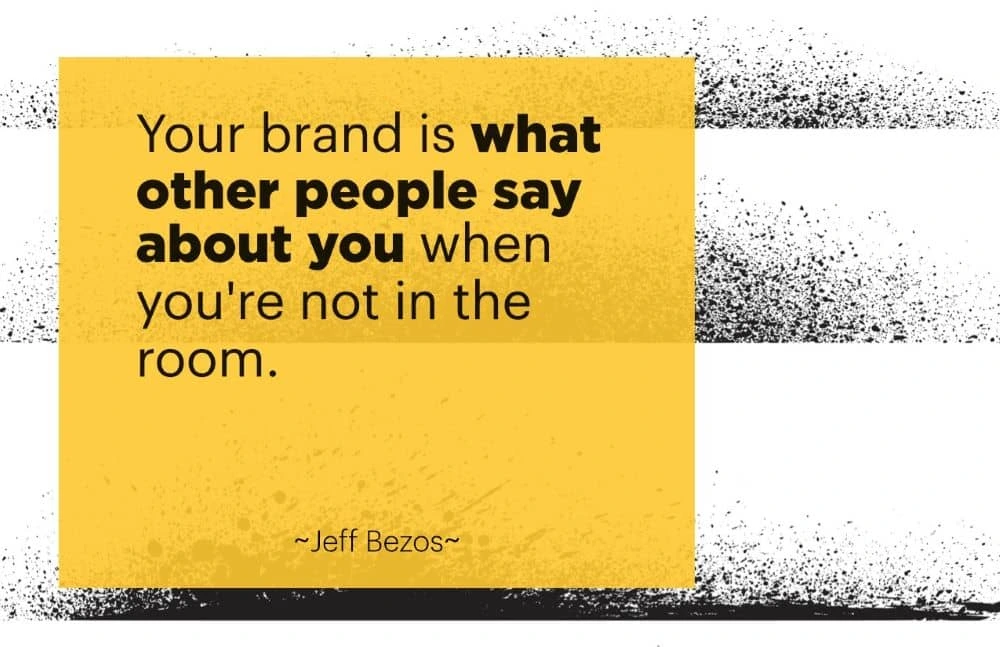
Source: Lucidpress
Brand consistency, then, means maintaining control over the way you’re viewed. It should be a central focus in today’s digital landscape, where the number of channels and touchpoints is continually growing.
If you want a recognizable and trustworthy brand, uniformity is essential.
Tips for building a consistent higher education brand:
- Think beyond the visual aspects and consider messaging and tone of voice, too. How does your content make people feel? How would you describe your brand’s personality?
- Take advantage of a brand templating platform like Lucidpress. Users can easily access and edit branded templates all in one place, and your marketing team will have much more control to lock down brand elements before access is shared.
4. Answer key questions
Using the institution’s website, blogs and emails to answer key questions from prospective students is a tactic that should feature prominently in every enrollment marketing plan.
Research from mStoner found that, contrary to what education professionals believe, most teen college prospects (64%) prefer to consume college website content through text and articles.
Rather than answering the most obvious questions, think outside the box and dive deeper into exploring what’s on your prospects’ minds.
What are they typing into Google? What are they asking their friends? What information are they looking for when they visit your site?
Targeting long-tail keywords in the form of specific, beyond-the-obvious questions will help you increase your search rankings. For example, rather than “student accommodation Chicago,” target search phrases like “what’s it like to live in Chicago as a student” or “where is the best area for students in Chicago.”
How to effectively answer key questions in writing:
- Know the audience you’re speaking to and direct the content to them. Use the type of language they’d use, and make sure any references or explanations are relevant and appropriate.
- Keep it brief and concise, and make sure it’s easy to read and scan through by using clear formatting such as subheadings, bullet points and numbering.
5. Centralize your marketing
With departments spread out all over campus, it can be hard to know what marketing tactics everyone’s using and what’s been effective or not. A centralized marketing department will let you track spending, various campaigns and their results.
With a centralized approach, you’ll be able to align KPIs, standardize your marketing and in turn, standardize your brand. Scheduling regular syncs with each department will help all stakeholders stay in the loop with your school’s central marketing goals.
6. Optimize email campaigns
Marketing automation tools can help you optimize email and reach more prospective students. Email automation platforms will let you personalize messages and send emails at the right time, when they’re most likely to be read. Plus these tools will make sure your emails aren’t routed to the spam folder.
You can also do A/B testing to see which messages your audience responds to better. With A/B testing you can narrow your focus and continue to sharpen your brand’s voice and messaging to appeal to different student groups.
Key higher education marketing trends
Now that we’ve talked effective strategies and overall approach, let’s look at some of the hottest trends you could incorporate into your next campaign.
1. Micro-influencers
Influencer marketing has taken the world by storm, and it’s expected to continue growing over the coming years. An industry already worth $2 billion in 2017, predictions say it could be worth between $5-10 billion in 2020.
But, it’s not all big numbers and big money.
Micro-influencers are on the rise, and while they won’t have the same reach as celebrities or big social media stars, they do have highly targeted and engaged audiences.

Source: Pulse Advertising
In practice:
To incorporate influencers into your next higher education digital marketing strategy, look for socially savvy and well-connected students in your community.
How can you create a win-win situation where they’ll talk positively about their experiences attending—or working in partnership with—your institution?
2. User-generated content
To reach a demographic who yearns for connection and places a high importance on authenticity, social proof is paramount.
More than ever, young consumers look to their peers or influencers in the online world before making decisions.
And when you consider that they spend up to 11 hours per day on social media, it’s clear that’s where you need to be showing up.
In practice:
By encouraging students to share real-life experiences under a common hashtag, you can generate a go-to online community that will increase awareness and engagement.
Beyond that, enable online reviews and share positive data, feedback and authentic stories on social media.
3. Augmented reality
Augmented reality makes real-world experiences interactive, and it’s expected that higher education institutions will begin to adopt it more over the coming year.
A good starting point for some might be Snapchat GeoFilters.
Almost 90% of Snapchat users say they enjoy GeoFilters. A spin on a regular filter (which is a design you can overlay onto a photo you take in the app), GeoFilters are only available in certain locations.
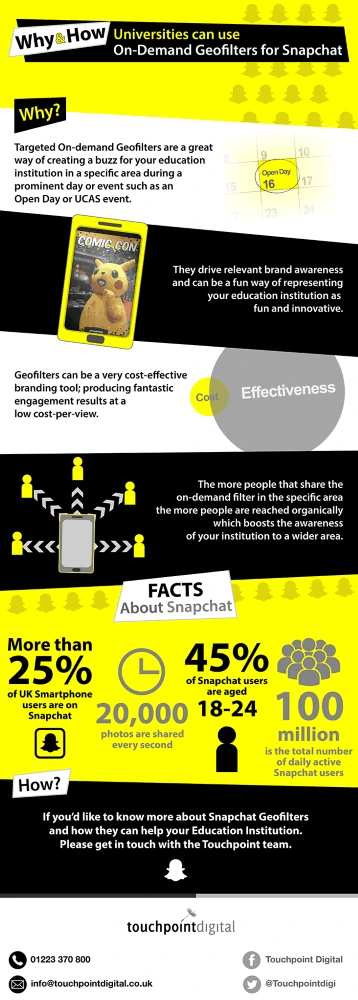
Source: Touchpoint Digital
In practice:
Beyond Snapchat, interactive campus tours, maps & brochures can have a big impact.
Contractors working for The University of Washington built a mobile app that allowed users to explore the new $105-million computer science building before it was built.
The Savannah College of Art and Design boldly embraced virtual reality (VR) back in 2015, sending out Google Cardboard headsets that let 30,000 accepted students explore campuses virtually.
It moved on to augmented reality (AR) next, adding interactive features to a course catalog. The institution has seen a 26% increase in admissions applications after introducing VR and AR recruitment tools.
4. Livestreaming
Livestreaming is being broadly touted as the big must-have for marketers in all industries today. No longer a novelty, it’s changed the face of marketing and the way brands and consumers interact.
When you take a look at the numbers, it’s not hard to see why.
According to Dartmouth, 86% of colleges and universities have a presence on YouTube. That makes sense when you consider that 71% of teens’ typical entertainment consumption is streaming, and one-third is viewed on apps from a mobile device.
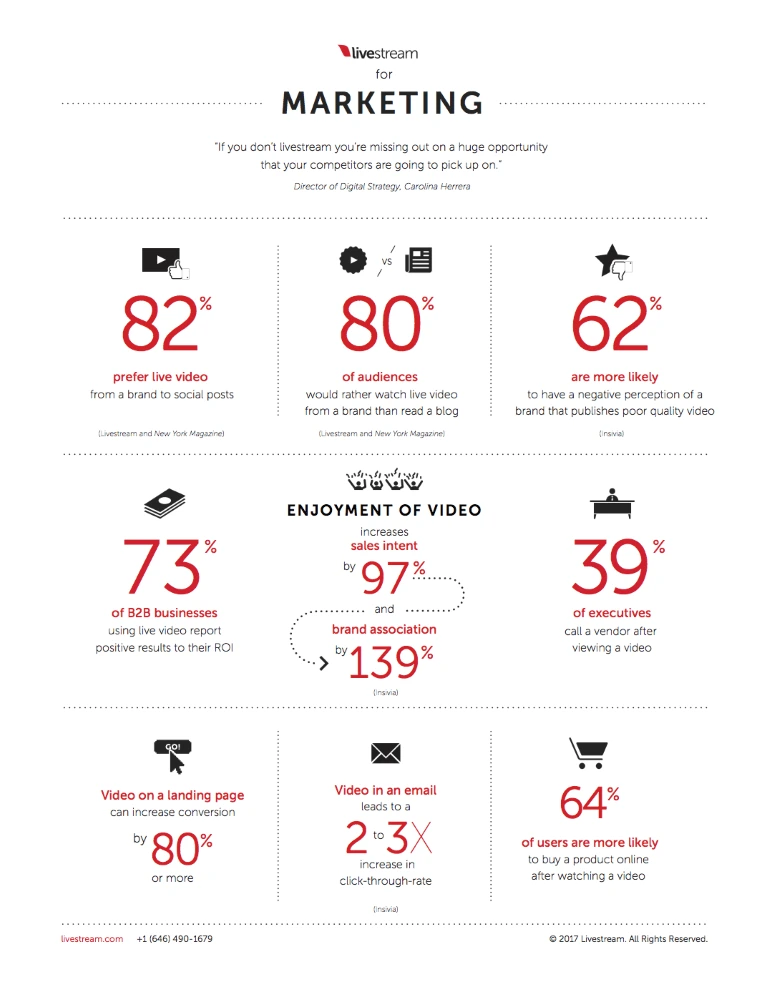
Source: Livestream.com
In practice:
The most common and beneficial use of livestreaming is to broadcast events.
Education institutions can set up livestreams—broadcast either by themselves or by an influencer—to showcase events held throughout the year.
Real-world example
In terms of real-life examples, Western Colorado University struggled to manage their marketing properly for quite some time. It wasn’t until they implemented brand templating software that they were able to keep their brand consistent and save their creative team loads of marketing time.
Sometimes reading the stories of other universities can help shed more light on your own situation. Read Western Colorado’s full case study and see if your creative team has had any of the same struggles.
Key takeaways
In summary, you’ll need to incorporate the following tactics into your digital marketing strategy if you want to hit your enrollment goals:
- Think mobile-first
- Choose the right platforms
- Build a consistent brand
- Answer key questions
To push forward with creative and innovative marketing, the following trends are key:
- Micro-influencers
- User-generated content
- Augmented reality
- Livestreaming
What’s the next big move you’ll make to drive an increase in awareness, enrollment numbers and engagement?
How can higher ed marketing teams build a strong, consistent brand across campus? This downloadable guide will show you how to templatize design at your school.
When it comes to marketing, every team has its challenges. Amongst non-profit organizations, however, those challenges can be vast.
Bound to a tight budget, small teams and few resources to draw from, it may seem near impossible to create a successful marketing strategy to help your organization grow. For some, it may not be clear why a marketing strategy is necessary — you’re not working for profit, so why market at all?
Marketing is more than just getting sales and boosting the bottom line; marketing creates valuable, memorable experiences that positively impact people for the long-term and, therefore, impact your business.
You may not be looking to use your marketing goals to pull in revenue, but the right strategies will still work to bring in traffic (think new supporters or donors), funds and awareness to your mission.
We’ve created a quick how-to for creating a non-profit marketing strategy. By following these steps, you can grow your organization’s impact, and they won’t break the bank.
6 steps to creating a non-profit marketing strategy
1. Set marketing goals
Before you can do anything else, you need to set your marketing goals. These goals should focus on transforming your organization’s mission and objectives into actionable items.
For example, if one of your objectives is to bring clean water to rural areas of a particular country, you should brainstorm three to five marketing ideas for advancing that objective.
One way you could use marketing to advance that objective is to post on social media about your organization and the people you are helping or by sending a weekly newsletter highlighting specific families or individuals impacted by your work.
Once you’ve brainstormed, you should turn these ideas into goals. These goals should be measurable, with specific steps to help accomplish your overall objective.
To provide another example, you could state that one of your goals will be to see a 20% boost in traffic to your social media channels by posting X amount of times a week or month and by interacting with X amount of people on those platforms.
2. Create personas
A big part of marketing is understanding your audience, and one of the best ways to do this is to create personas of your donors, volunteers and recipients.
It’s essential to define and understand each of these audiences because your marketing goals and strategies will differ based on which group you are addressing. For example, an email to a donor will have a different message than an email asking for volunteers.
3. Complete research on fundraising psychology
Being successful as a marketer includes having a basic understanding of human sociology and general psychology — when you know why people behave the way they do, you can start to create content they will identify with and respond to positively.
It will do wonders for you to complete research on fundraising psychology, just like researching consumer psychology aids for-profit businesses. This research can help you understand why more people donate when a campaign is closer to reaching its goal or why some people are more inclined to helping an individual than a larger group.
4. Craft messaging
The next step for creating a non-profit marketing strategy is to craft your messaging. This step is similar to creating a jingle or slogan for any business.
You need to craft a key message that includes all the information your audiences need to hear, remember and hopefully share about your organization. You need to do this ahead of time, as it will help you keep your organization aligned. It will also simplify your marketing while keeping your different audiences organized.
5. Identify strategies and tactics
Although you may want to head straight for this step, setting up your personas and identifying actionable goals will make this step far easier and more successful. At this point, you’ve answered the who, what and how of your key messages and audiences.
Now, you will identify which channels you are going to use. These can include social media, email marketing, events, blogs, etc. Once you decide which channels you plan to use, you will work up the strategies and tactics you plan to use on these channels (we’ll dive more into strategy specifics in the next section).
6. Measure results
It would be silly to implement any marketing strategy without a plan of measuring its success or failure. Doing this step will help you iron out any kinks and further solidify your non-profit marketing strategy. Regular analysis will help you figure out what is working and what isn’t.
Non-profit marketing strategies
The following are the best non-profit marketing strategies that will help you grow your organization’s impact.
Focus on relationships
According to Emily Logan, a longtime activist — as well as a non-profit growth and advocacy strategist — focusing on relationships is one of the most important things a non-profit can do long before asking for anything.
The emotional connection you make between your cause and potential donors can have a more significant impact on your organization than anything else.
It’s not easy for people to part with their hard-earned money and according to VaynerMedia CEO Gary Vaynerchuk, “you can’t just expect someone to donate to your cause without bringing value to them first . . . it’s an open, transparent conversation and dialogue. You need to respect your target audience.”
Capitalize on current events and social trends
One great non-profit marketing strategy is to capitalize on current events and social trends.
Do you know what ALS is? You probably at least recognize the disease simply because of the ice bucket challenge that went viral years ago to help raise awareness of the illness and the search for a cure. The ice bucket challenge became a huge social media trend that everyone was participating in, from grandparents to celebrities. Current events and social trends can be one of the most accessible strategies to utilize when coming up with content marketing ideas.
Work with social media influencers
In tandem with social trends, you should start working with social media influencers.
“Influencer” is in their title for a reason, some of the biggest names have millions of followers, and you better believe that if Jane from Carlsbad tells all the middle-aged moms to go buy this nifty kitchen gadget now, they’re going to do it. People trust individual influencers, and if you can win over a couple who will be able to spread your message, you can make a significant impact.
But, you don’t have to take our word for it. Per studies conducted by TapInfluence, “influencer marketing content delivers 11X higher ROI than traditional forms of digital marketing,” and “influencer content on social media earns more than 8X the engagement rate of brand-direct content.”
Not sure where or how to engage with influencers? Start by looking for micro-influencers in your local community or within your network and then go for the big dogs.
Incorporate video in content marketing
Videos are a huge part of content marketing today, and it would be a massive loss if you didn’t utilize it in your non-profit marketing strategy.
In 2017, HubSpot research found that most people will skim written or audio content, but (more noteworthy) these people were “more likely to pay attention to video content.” You’ve probably already seen other non-profits using this tactic. One great example is Charity: Water’s video — This is Pipeline.
Be sure to follow best practices with video — they don’t need to be lengthy segments to be successful. Also, video also can be produced quite easily without breaking the bank. Apps like Adobe Creative Cloud are affordable ways for a non-profit to create and edit great video content.
Find ways to automate email and text marketing
Email and text marketing can be powerful tools to have in your toolbox. When people join your email or text lists, it’s an indication of their investment — as in they care about your cause and want to support you.
So, this likely means they’re receptive to seeing messages from you in their inboxes. To help you save time, start automating these messages. According to HubSpot research, Boomers and Gen-Xers prefer email or video content, so if they’re in one of your audience groups, you need to use email as a tactic.
Follow up after donations
It may feel small, but having someone follow up after donations can take your message a step further with donors.
It shows you care about them — remember you’re trying to build relationships — more than just their donation. According to research from Software Advice, 60% of donors want information about impact stories, and 46% of donors prefer a personalized letter.
Build trust with consistent branding
Consistent branding is a smart practice for any organization, profit, or not.
In a case study between Lucidpress and MHA, MHA’s Community Marketing Specialist knew they needed a solution to help unify independent messaging. MHA provides care, accommodation and support services for more than 16,000 seniors throughout Britain.
By using Lucidpress’s branding templates, they were able to streamline their messages and work seamlessly with their local homes, getting more done in less time. Having consistent, easy-to-use branding templates can save you a lot of time in the long run. Templates are easy to use for everyone within your organization and can be completely customizable.
Build your non-profit and your brand
By following these content marketing strategies of building relationships, capitalizing on social trends, working with influencers, incorporating video content, automating email, following up after donations and building trust through consistent brand, you will be able to grow your organization’s impact and start to see real results.
Just as MHA found help with Lucidpress’s customizable templates, other non-profits are also finding help with Lucidpress. To learn more, check out how YMCA was able to keep their brand consistent across every location with Lucidpress’s lockable templates.
Financial institutions face their fair share of challenges when it comes to growing and retaining a happy, loyal customer base. People have any number of choices of where to bank, and to consumers it can feel like there’s not much difference between banks and other companies offering financial services. Plus, financial institutions all comply with the same government regulations, which can make it seem like most banking services are all the same.
When it comes down to it, this is what will really set your bank apart from the next: the seamlessness with which customers can interact with your services and the quality of service offered — i.e., the customer experience.
Why customer experience is so important for banking
Competition in the industry is fierce. It’s estimated that tech companies will swallow up 40% of the $1.35 trillion in financial services revenue from banks. Tech giants like Google, Amazon and Apple already have a huge base of loyal customers and they’re transitioning their success to financial services. A survey from Bain shows that consumers from the US and UK trust PayPal and Amazon nearly as much as they trust banks.
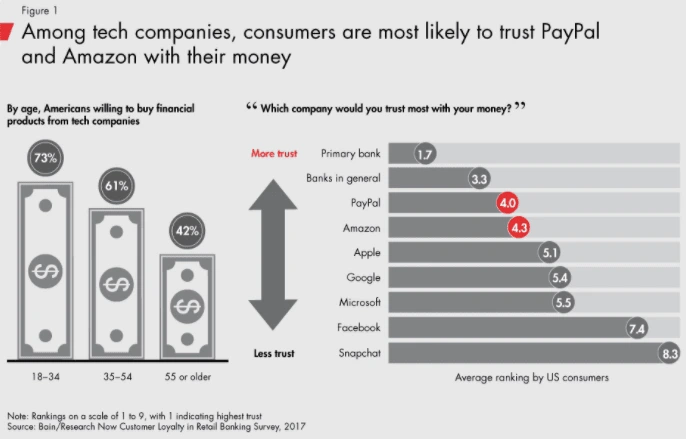
(Source: Bain & Company)
These companies are highly skilled at providing a level of fast, easy service that’s hard for regular banks to match. Tech companies have been honing their customer experience skills for years, and now they can apply it to financial services. Banks are being held to those standards and it’s getting tougher and tougher to keep up. You’re not only competing with the myriad of other banks — now you’re competing with tech giants too.
That’s why focusing on CX and providing a superior banking experience is so crucial for financial institutions, big or small. CX is often one of the few ways you can differentiate yourself from competitors. Even if your product can’t quite compete with other companies, offering a seamless and supportive experience can keep customers happy and coming back.
8 ways to improve CX in banking
Improving the customer experience will take persistence and a multipronged approach. Here are eight things you can focus on to improve customer experience in banking.
1. Look at it from the customer’s point of view
This probably seems obvious, but it can’t be overstated. Often what companies think they need to do to improve customer experience is quite different from what their own customers would actually like to see improved.
Instead of looking internally to better your CX, dig in to your customers’ opinions. This can take a few different forms, the best one being talking directly to customers.
- Consider setting up a customer advisory board. A CAB will give you consistent access to a set of voices that can provide the external insight you need.
- Regularly employ customer surveys after various transactions to get a sense of how seamless (or not) each transaction or service is.
- Map your customer journeys. Financial institutions will have a lot of different customer journeys to account for, but give each one the time it deserves. Walking the path that your customers take is the only way to really understand their pain points.
2. Get the C-suite to commit
In order to find success with your CX initiatives, you’ll need full buy-in from the higher-ups. Improving customer experience at your financial institution will likely lead to big changes in your current system, products and processes. Without support from senior leaders, it will be hard to see true change in your organization.
Make sure leadership is involved in CX improvement plans from the very beginning. When your executives participate, lead by example and show that it’s a priority, the rest of your organization will start to embrace the new changes.
3. Establish a dedicated CX team
Rather than having one simple plan to improve CX, you’ll need a variety of strategies that involve people from all departments of your bank. Pull together a team of stakeholders from across your business to help manage customer experience improvement.
You’ll need their insight into their specialties, and they’ll operate as the point person for CX efforts in their department. A diverse team can bridge the gap between the different services your bank offers as well as silos that can arise from having multiple locations, possibly spread across the country. Depending on the scale of your customer experience initiatives, it may even make sense for your bank to bring in a dedicated CX role to head up this team.
4. Offer unique services
While this is arguably one of the more difficult aspects of providing an exceptional customer experience, having a product or service that truly sets you apart from competitors can be invaluable.
Look to leaders in the industry for ideas on innovative digital services. Bank of America attracts customers with access to its free virtual financial assistant, Erica, that helps people with everything from checking credit scores to bill payment reminders. Spanish bank BBVA’s app offers Bconomy, which helps customers track their finances and work toward a savings goal.
All banks have apps, but going above and beyond the basics to identify tools that really help people will make for a meaningful customer experience. Evaluate how your bank can address customers’ financial health holistically, rather than focusing on a single service at a time.
5. Balance digital and human service
While it is true that consumers now expect effortless digital services from their bank, you can’t rule out the importance of having humans readily available for customer support. You’ll need to find the right balance of the two.
Balance your digital initiatives with a strong commitment to personal customer service. People love to do things online, but if they hit a snag or have a complex problem and there’s no phone number where they can easily reach someone for help, it makes your organization seem untrustworthy. Being able to quickly get through to a friendly, helpful representative will be a huge boost to your customers’ banking experience.
6. Scale your efforts
One of the hardest parts of customer experience is getting your entire organization — every location — to deliver on new CX efforts in a consistent, sustainable way. Being able to successfully scale your customer experience is key for the health of your bank.
With your dedicated CX team, you’ll want to create a plan of attack for business-wide adoption. Look at which initiatives are doing well in which departments and analyze how you can apply or translate those successes to other departments. Learning from specific failures and successes, you can begin to apply changes to larger parts of your organization until the bank as a whole is compliant with updated customer experience standards.
7. Keep your brand consistent
Brand consistency bolsters CX efforts by guaranteeing your customers are always interacting with a familiar company. When your brand always looks and sounds the same — e.g., your design, voice, tone and messaging is consistent — your customers know what to expect. They’ll be comfortable with your brand, and you’ll see brand loyalty from them in return.
Brand templating will help keep your brand consistent across departments and locations. Making customizable design templates available to your company will ensure that each branch stays on-brand and uses approved logos, colors, assets, etc. It also cuts down on off-brand and one-off creations that don’t reflect your organization’s brand style. Templates can range from flyers and brochures to social media posts, emails, presentations and more.
Presenting a unified front to your customers will both bolster CX efforts and help strengthen your brand.
8. Follow up
Customer experience is something you’ll have to continually revisit. What customers want and expect from a financial institution will evolve over time. And once you improve one thing, something else will pop up that could be better too — that’s just the nature of business. Plus, CX improvement often isn’t a straightforward, linear process. There’s going to be trial and error, and you’ll need to keep at it to find the right solutions for your bank.
Just like you set goals and OKRs for each quarter and year, you’ll want to do the same for customer experience. Make CX a focus in all of your strategy plans and hold people accountable in the same way you do for financial goals.
Dedication to leveling-up your customer experience will pay off in happy customers who are more likely to stick with your bank and recommend your services to friends. For more tips on improving CX and creating personalized experiences for your customers, check out our free guide How to avoid CX failure and empower your team to become your greatest CX asset.
Channel partners are a critical source of revenue for tech companies — but if businesses took a hard look at the experience potential customers have when working with a channel sales partner compared to an internal sales rep, those two experiences would be anything but consistent.
In fact, more than half of SE leaders aren’t confident in the delivery of brand consistency across channels during the sales process. This inconsistency comes from gaps between resources across content, technology, and training between businesses and their channel sales partners. Because of this, companies and organizations are beginning to invest more in their partner enablement plans, which has proven to provide 40% annual revenue growth for businesses.
What is partner enablement?
What exactly does this mean for your business and just what is partner enablement? Partner enablement (also referred to as channel enablement) is the practice of ensuring your partners can independently initiate and complete the sales process while also effectively implementing and supporting the customer solution. With so many different channel partners, it’s important to provide resources, templates, training and technology so there’s consistency for your brand.
Challenges of partner sales
As mentioned above, one challenge businesses experience with their partners and sales is that most enterprises provide more resources to direct sellers than channel partner companies. This can be detrimental to your partnerships, especially if your partners feel like you’re wasting their time or resources.
Another big challenge of partner sales is that indirect sellers find it 1.3x to 1.6x harder than direct sellers to get prospects to make a next meeting. Most partners tend to find they have a harder time advancing the sales cycle than a direct seller. This challenge can stem from those gaps in resources mentioned before. These gaps can also stem from the fact that most sales employees are more thoroughly trained than partner reps — companies tend to provide sales employees with the necessary software, templates and devices needed to grow and succeed.
Strategies of partner enablement program
To create a successful channel partner program, you need to have some solid strategies in place. Check out the best strategies below:
Get feedback from your current channel partners
Because you most likely work with partners of all different shapes and sizes, it will be difficult to appeal to them all. Talking to your partners will help you create better services and products, while also finding out how you can help them succeed. Do they need training videos? Would they benefit from incentives or award programs to up sales? Don’t guess.
Provide training
Training will help increase the skill of your partners, helping them become more productive and expanding. You can provide training in several different ways including sessions during office hours where partners can ask technical questions, or a more formal training session like webinars, certifications, or traditional seminars. If you do provide online training, note that research shows you’ll be most successful with videos of 6 minutes or less.
Another way to provide training is to try gamification. If you’ve ever had to do online or technical certification training, you know that it can be boring. Turning training into a game with a ladder of certifications can make training more appealing.
Give recognition
Our need for recognition is universal. A great example of the success of this concept is Microsoft’s Partner of the Year Awards. You can start with a simple MVP award and promote in webinars, training videos or even on your website. Offering recognition like this is an easy way to engage partners and help them connect with your brand.
Sales enablement content
Providing sales enablement content has been proven to boost conversion rates. Companies that deploy sales enablement platforms to their partners are up to 2.3x more effective at achieving their sales goals. By offering sales enablement content you are guaranteeing that all of your channels provide a cohesive brand experience. And as we mentioned earlier, sales enablement content can lead to 40% higher revenue growth. With this content, be sure to provide branded templates that channel partners can quickly find and customize.
Brand templates can help your teams maintain brand consistency along with easy asset storage and access. Our channel management software can help you build a library of content that not only your employees can access but also your partners. With lockable templates you can guarantee that your content and brand will appear consistent throughout all channels while enabling channel partners to customize content for their prospects. A lack of cohesiveness is detrimental to brands today, and Lucidpress makes it easier to keep teams, partners and vendors all on the same page.
As you start to create a channel partner enablement plan, don’t forget to focus on consistency, which will ultimately help your brand expand. For more insight on brand consistency, check out our guide on how to achieve consistent storytelling across sales.
The long tentacles of coronavirus have touched every aspect of our lives, and especially so for the mortgage industry. It’s not clear where the housing market is going to end up, but right now things are busy.
For consumers, there’s the allure of rock-bottom interest rates, while many people are also facing new, stricter standards for loans. And others are apprehensive about making any moves, literally and figuratively, when the economy is so volatile.
It’s predicted that mortgage lending will reach a 14-year high in 2020. With the surge in refinances, you may find yourself busier than ever. So this is good news… right? We’ll take our silver linings where we can get them.
Amidst the hustle and all the uncertainty, you may be looking for ways to reassure clients, build business, set yourself apart, and work efficiently so you can handle what lies ahead. We’ve thrown together our best tips and ideas for mortgage marketing to help you navigate that new normal.
Behind every loan officer, there is a strategy
Keep these four things in mind as you polish your mortgage marketing strategies.
Be human
Buying a house is enough to make anyone anxious… combined with the stress and unknowns of the current world climate, you’ve got a recipe for, well… even more stress. Doing your best to be as real as possible (aka “human”) can make your clients feel a little better about navigating the mortgage market during what feels like the apocalypse.
Research shows that over 75% of people expect a business to understand their needs and situation. Show potential clients that you can empathize with their worries by simplifying the mortgage process as much as possible. Review your marketing materials and see where you can decode or simplify the language.
But what does being human mean in the context of marketing? You may be wondering, “Aren’t I already human?” Good question. Being human simply means, speaking plainly and communicating with clients in the same way they communicate with you. It means not sounding like a marketer or loan officer. For example, instead of focusing solely on numbers and low interest rates, translate that to what it means for the client. Maybe “Save X% on your monthly payment,” becomes, “Now you can put $X more in your savings account or toward a new car.”
Ideally, all of your communication —everything from the way your company messages itself to how loan officers speak with clients — should be presented in a way that’s accessible, compassionate and personable.
Leverage your visual content experience
Make sure you’re paying attention to your appearance, so to speak. Unfortunately, people do notice the inconsistencies that pop up across your website, social media and printed materials. A study from Salesforce noted that 75% of consumers have come to expect consistency from businesses and brands “with 73% likely to switch brands if they don’t get it. Customer loyalty — and attrition — is determined by every experience. Predictive, anticipatory service is increasingly the norm.”
With large brokerages like Rocket Mortgage becoming more familiar to consumers (and making the market all the more competitive), smaller operations need to throw some resources into branding and customer experience. Maintaining a consistent brand, in both design and voice, can reassure clients of your quality and trustworthiness, which helps your organization stand out in a crowd.
Evaluate where brand inconsistencies are stemming from. Do you need to update your brand style guide? Are brand assets easily available to everyone? Are brokers creating off-brand content? Consider solutions like design templates for brokers that have branded elements already in place. Empowering everyone at your organization to make their own, on-brand content can cut down on the noise and inconsistencies you’re seeing across marketing channels.
Get cozy with digital marketing
Putting together a solid digital marketing plan is key for generating new leads. And social media will offer the most bang for your buck.
We recommend building a solid content plan for LinkedIn — this is where you’ll find real estate agents, brokerages and builders that you can connect with to grow your business. Facebook can also be a great platform for reaching homebuyers — but LinkedIn is the best place to expand your circle and show other people in the industry what your business is about.
Social media is designed for building community, and it’s an ideal place to connect with new people. Taking small steps like reposting listings from agents you’d like in your network and commenting on content that’s interesting to you can help your business grow a healthy following.
Have you helped anyone land their dream home lately? Posting about client success stories makes for feel-good content that people like to see in their feed. Keep the content you post diverse and engaging with a smattering of home-buying tips, mortgage knowledge, property listings, industry news, and anything else that piques your interest.
Automate where you can
Staying on top of digital marketing is no small task — especially if you haven’t got a team to help. Automation could be your best friend, and luckily, there’s not much you can’t automate these days.
- Email — Emails can be easily automated, and it would be a great time to do, say, an email drip campaign about refinancing. Over the course of a few emails you could talk about the benefits of refinancing right now and what the process entails from start to finish. Look into a tool like Mailchimp, which is designed to help smaller businesses automate email campaigns and reach customers without doing much heavy lifting.
- Social media — You can also set up your social media posts to be automated by a tool like Buffer. Automation platforms like this will post content for you based on a schedule you set, and they even have tools that analyze how your content is performing. Good analytics can be helpful if you feel like you’re not getting enough engagement or want to tweak your social strategy.
- Content creation — Certain design platforms (like Lucidpress ?) also offer data automation, which can be invaluable for customized marketing campaigns. Data automation lets you connect to spreadsheets or even your MLS — then you can quickly upload a bunch of information to marketing materials as needed. This is an easy way to create custom collateral for your clients that won’t cost you any extra time or energy.
Take a look at your current marketing campaigns and see what you can automate. Automation will free up your time so you can focus on more pressing things or even brainstorming your next big marketing venture.
However you decide to implement mortgage marketing ideas for the new normal, be sure that your strategies support any long-term goals you might have for your company. Conduct an audit of your existing business continuity plan to see where any of these ideas fit in. Alternatively, it couldn’t hurt to create a new business continuity plan if yours might be a bit outdated. And, if you want to do a deeper dive on how you can strengthen your brand, check out our free ebook on brand consistency and how it impacts your ROI.
Advertising is more than just a brand function—it’s a valuable skill. Not all people have the talent, timing and savvy to speak to people in a way that influences their lifestyle. Fortunately, the knack for advertising and marketing can be learned.
There are many different forms of advertising that brands can use to reach their target markets. However, not all forms of advertising will have the same impact. Technology trends have shifted the game. Today, brand managers can drive tremendous impact by prioritizing social media.
But before you get into the specifics of social media marketing, you must first learn the basics of advertising. Here are some advertising do’s and don’ts for beginners.
The do’s: Helpful advertising tips to help you connect with an audience
Get to know your target customers
Many companies only have a big-picture view of the target market they want to reach. While this is a good starting point, it pays to refine your understanding of prospective customers. What is the age bracket of the people you want to reach? Are your prospects still studying, seeking career opportunities, employed or retired? What types of entertainment do they usually spend their time and money on? These aspects are vital if you want to make an impact that will truly resonate with your desired audience.
By knowing what makes your customers tick, you have leverage to connect with them and understand how to best fulfill their needs.
Strive to have a consistent voice & message
While it’s true you can have an impact by being unpredictable, you build up a stronger following by being consistent. By having a singular purpose and consistent voice, you increase brand recognition and loyalty. Stick to the vision and mission of your business, and soon, people will recognize your brand across every advertising channel you use.
Be accessible & proactive
People are more likely to trust a brand if they’re confident they can reach you whenever they need to. No wonder nearly every business has social media profiles now. Through sites like Facebook, Twitter and Pinterest, you have a direct line to your customers.
The question is: will people hear back from your company when they tag, message or tweet you?
If you’re strapped for resources, hire a virtual assistant to help your brand stay accessible and proactive not just on social media but also through email and comments on your blog or website.
The don’ts: Pitfalls your brand should avoid
Failing to craft a call-to-action
Share this message if you agree. Email this tip to a friend. Tap ‘like’ if you enjoyed this video. These are just a few of the calls-to-action that social media users have grown familiar with, and that’s because they work. Each communication you share with your audience should be geared towards building your relationship and, ultimately, moving them down the conversion funnel. At the end of any ad campaign, make sure your audience knows what to do next.
Jumping on every advertising fad that comes along
Many advertising gimmicks have come and gone, but how many of these have really helped the brands who tried them? Just because a tool, fad or practice is creating some noise doesn’t mean you should immediately jump in. When a new trendy tactic tempts you, scrutinize how it will genuinely reach your customers and build your brand. This goes back to the principle of knowing your target audience better. If you truly know what makes them tick, you won’t be jumping on every bandwagon that rolls by. Just the ones that matter.
Making an impact isn’t exclusively for big brands. Keep in mind these advertising dos and don’ts for beginners, and you will soon carve out your own niche.
How to use PPC to amplify your brand
As you know, effective branding amplifies brand awareness and recognition. It builds trust. It helps generate new customers. Best of all, it increases sales and revenue.
But, did you know that even the briefest exposure to a brand can affect a customer’s behavior? It’s true. You have the opportunity to shape customers’ opinions of your brand in every interaction—even if that interaction only lasts a couple of seconds, like a pay-per-click ad.
Why branding is important
To set the scene, let’s take a look at why branding matters in the first place.
Researchers at Duke University determined how powerful brands can be. In one of their tests, a group of university students was exposed to the Apple logo. It was flashed so quickly that respondents weren’t even aware they were exposed to it. Another group was exposed to the IBM logo in the same manner.
Both groups were asked to list down all of the possible uses for a brick. Here’s where it gets fascinating: Participants who had a brief glimpse of the Apple logo were found to be more creative when compared to the IBM group.
Here’s another one. Researchers wanted to know how brands affect respondents’ honesty. In the next experiment, two separate groups were exposed to the Disney and E! logos, respectively. They found that participants who saw the Disney logo behaved more honestly compared to those who saw the E! logo.
What does this tell marketers? Brands are deeply influential. For established brands (like Apple and Disney), it could mean investing more in product placement and other methods of exposure. For growing brands, it means paying attention to every touchpoint, no matter how brief.
For example, your PPC campaigns.
How to use pay-per-click to enhance your brand
Known as PPC, pay-per-click campaigns are a great way to amplify your product or service. But, when done deliberately, PPC can also help you amplify your brand message. Here are a few techniques you can use to optimize your PPC campaigns for brand awareness.
Optimizing your ad’s exposure
- Use location targeting
Personalization refers to the process of adjusting content to match customers’ needs and preferences. More brands are putting extra effort into their personalization efforts, and chances are, your brand is already implementing a similar strategy. But, have you considered adding some personalization to your PPC ad copy?
For instance, you can customize ad copy and sitelinks based on your customers’ geographical locations. Let’s say you’re trying to make an ad for New York shoppers. In the ad, you can place sitelinks like the address of your store or products that are popular in New York. (Don’t forget to add call and location extensions—they shorten the conversion cycle.)
Divide target audience into groups you want to personalize. Next, create ads based on those groups’ preferences. Since the ads are location-based, consumers from other parts of the country or the world will not see the same content as those from New York. It’s an easy way to make your ad appear more relevant to the user.
- Select specific sitelinks
Which sitelinks do you often use in your ads? What you choose to promote can either benefit your campaign or hurt it. If you plan on advertising to a specific audience, don’t give them a general sitelink that isn’t relevant or interesting to them.
For example, Clinique organizes their ads according to the different stages of the buying cycle. This way, each ad caters to more specific needs.
Clinique used “Shop Makeup” on their ad for customers who only intend to buy makeup. They added “New Arrivals” for visitors who might be interested in more products. For prospective buyers, the brand offered a “Top Selling Skincare” sitelink, making it easier for visitors to evaluate their products. They then offered a discount on first purchases to sweeten the deal.
Building trust in your brand
Most of the time, PPC marketers create ads that are designed for conversion. But, what about visitors who aren’t ready to buy? What about consumers who want to know more about the brand before supporting it? Content marketing is great at building trust—and PPC campaigns are fantastic at delivering that content to target audiences.
- Use long-tail keywords
The long-tail keywords you use in your content marketing can also be used in your PPC campaigns. You can promote high-value content by using them as ads that match consumers’ search queries.
For instance, if you have makeup tutorials, you can create ads for queries like “how to apply foundation.” L’Oréal is one brand that practices this.
Googling “how to apply foundation” leads to a L’Oréal ad with the same keyword phrase. By providing content that consumers need, the company builds a reputation as an expert in the field. Consequently, they gain the consumers’ trust, which will lead to conversions down the road.
- Keep track of your reputation
Customers seek out the pros and cons of different brands before supporting them. Though your efforts to gain their trust are strong, a few negative remarks could be enough to drive them away.
So, what can you do about it?
Through your PPC campaigns, you can protect and maintain your brand’s reputation. By keeping track of search query reports (SQR), you can identify a rise in negative trends. You can then share this information with the marketing team and devise a strategy to deal with negative reviews and comments.
Key takeaway
PPC is a great platform for brand-building. Not only does it empower you to shape your brand’s story, it exposes large audiences to your message on-demand. [] Take advantage of this powerful medium and show the world what your brand is made of.
5 design bottlenecks in PPC advertising & how to prevent them
If you’re like most PPC advertisers, you’d rather not touch Adobe Photoshop with a ten-foot pole. There is a good chance that slaving away in Google AdWords or figuring out multi-touch attribution models sounds like more fun. But graphic design? No way.
In my younger PPC days when search campaigns were my only concern, I was the same way. I never expected that designing a marketing graphic would be an appropriate use of my time. That’s why we hire graphic designers, right?
Related: 4 ways to increase conversions with visual content
But PPC is much more than standard text ads showing up on a search engine results page. There are paid-social ads on Facebook and LinkedIn, display campaigns, native, remarketing, landing page creative, banner templates, etc. The list goes on.
But here’s the kicker: they all require graphic design assets.
And when your graphic designer is too busy to get the job done, you’re on your own. I know. That’s a scary thought. You might be thinking about how your next ad campaign should have launched yesterday… but first you need to hack your way through Photoshop?
There is a better way.
Here are 5 design bottlenecks that eat up a PPC manager’s time and how they can be avoided.
1. Getting a designer to make after-the-fact tweaks
Whether you outsource your graphic design or have in-house help, accessing a designer’s busy schedule is a struggle. But imagine that your designer just delivered a long-awaited piece of creative for a new Facebook ad campaign. You upload the content and launch the campaign. A week later however, ad fatigue sets in. Engagement and ROI are dropping fast. Since you’ve seen this before, you know what needs to be done—a simple tweak to the copy contained within the image. But when you ask the designer to make the change, you are asked to wait three weeks!
Solution: This sort of design bottleneck should not happen, but it does. You can prevent this by asking your designer to provide you with templates. With a templatized Facebook ad, you can use a simple graphic design software like Lucidpress to make the necessary tweaks. This will protect the integrity of the creative, while providing you with flexibility and independence. It is crucial for PPC advertisers to make tweaks frequently and quickly—whether it’s for your next A/B test or a fatigued paid-social ad. Making these tweaks should take minutes, not weeks.
2. Seeking approval at creative review for edits to a landing page
Nothing is more frustrating than sitting through a creative review while crossing your fingers that the creative director approves the concept for new hero images on your landing pages. Even worse, you may have to wait a week for the next meeting to roll around. Either way, your campaign’s launch date is probably getting pushed back.
Solution: First, work with your team to establish brand guidelines and a library of pre-approved images and copy. Sticking to these may grant you permission to skip creative review altogether. If that fails and you must still attend creative review, try petitioning your management team to hold the review process after the change has been A/B tested. If you’re not A/B testing every step of the PPC process, start now. Hard data will give you a strong voice at creative review. Lastly, plan ahead for projects that will require creative approval.
3. Endlessly searching for images to use on display campaigns
What should you do when your display campaign needs a refreshed set of images, but you’re not satisfied with Google’s display ad-builder? You may find yourself struggling to navigate the design team’s cluttered Dropbox folder. Or even worse, you might resort to copying & pasting from Google Images.
Solution: Recommend a Digital Asset Management software to your marketing team. There are several affordable options out there for DAM software. The goal is to quickly store, organize, retrieve and deploy your digital assets from a central location.
4. Your designer never has time for your projects and you don’t know Photoshop.
This is the obvious one. And yet so many PPC marketers do nothing about it.
Solution: There are cloud-based design tools for almost every situation, no matter your design experience. Need to make heavy edits to a photo? Try Pixlr. For infographics, check out Visme. Want to add pretty text to your marketing graphics? Lucidpress was built to do just that, and much more.
In recent years, graphic design has been democratized. For anything less than a complicated design project, you shouldn’t need a degree or expensive software. []
5. Cracking down on an affiliate or channel partner using rogue content
Have you ever had a VP or director ask why they stumbled onto one of your display ads and saw misspelled words or blurry images? I have. First, you panic. Then you search for the source and discover that it was actually one of your affiliates! Now you must spend valuable time working with the partner to correct the mistake.
Solution: This calls for a combination of some solutions listed above. Start with templatizing your partners’ ad campaigns. Then, provide them with the brand style guide and access to the appropriate folders in your Digital Asset Management tool.
Lastly, use these tools to empower your partners. Rather than just giving them constraints, teach them the principles that your marketing approach is founded upon. (Use your brand guidelines to accomplish this in a time-effective manner.) Because you hired these affiliates to provide additional volume to your marketing, consider crafting them into thought partners. Have them A/B test the newer, riskier ideas that you don’t have time for. In short, be proactive instead of reactive.
To conclude, design bottlenecks eat up the time that should belong to you and your designers. With the right tools and strategies, you can avoid these bottlenecks. Your designers will love you, and you can focus on making more money.
IWant It Now GIF from Iwantit GIFshttps://tenor.com/embed.js
Welcome to a gluttonous world of instant gratification, one-day shipping, streaming on demand and fast fashion. Thanks to technology, we want what we want right now, and we can usually get it that fast.
Product development is no different. The quicker we can get a new product to market, the faster we can entice buyers and make that money. Speed to market, a clunky phrase that is just what it sounds like, means how fast you can get your product or service on the market — from inception to an actual, purchasable good.
With so much innovation and competition in the marketplace today, being the first to debut a new product or feature has its advantages. Namely, increased revenue. If you can get a product to market before your competitors and you’re the only person offering it, you’ll be snapping up a much larger percentage of consumers.
So, the faster your speed to market, the more successful your company is. Let’s get cracking.
7 ways to improve speed to market
While you want to move fast, you don’t want to cut corners. Here’s what you need to do to get a quality product on the market quickly.
1. Create a solid strategy
The first step of embarking on any new product launch is to preplan the hell out of it. You want to have a plan in place that’s been carefully thought out and thoroughly vetted by your key stakeholders. It also needs to be feasible and reasonable — double-check that it’s actually possible to get everything done in the time allotted.
This will require having a deep understanding of each team’s and contributor’s process, so make sure you’re talking to everyone involved and communicating like an important deadline depends on it.
2. Embrace cross-functional communication
Improving speed to market won’t happen in a silo. You’re going to need a lot of clear, cross-team communication. Good communication — period — is pretty much the name of the game for any successful team effort. Get everyone in the habit of updating each other regularly, whether this looks like scheduled weekly syncs or daily updates in Slack each morning.
It’s easy to get hyper-focused on your own product development tasks and your own team. Encouraging different teams and different roles to communicate more openly will help everyone take a bird’s eye view and work toward your end goal.
3. Hire the best project manager you can afford
These people are worth their weight in gold. A good project manager will keep everyone informed and make cross-functional communication feel easy. They’ll schedule your meetings, take notes, set deadlines and follow up to make sure people are completing things when they say they will. They’ll keep you on budget, on track and on time.
The best project managers will even keep things upbeat and boost morale. When you find a good project manager, hold them close and never let them go.
4. Sniff out the bottlenecks
Once product development is underway, you can start to take a look at the processes you’ve put in place. What’s working well? What’s not? Identify where work is slowing down, so you can figure out how to correct it.
Many teams use a retrospective meeting every two or four weeks to talk about successes and failures in their work process. Schedule something similar at a cadence that makes sense for your speed-to-market plan. This will provide a place to get into the nitty-gritty of your process, make adjustments as needed and eliminate bottlenecks.
5. Consider outsourcing — or don’t
When you’re trying to accelerate your speed to market, it can be tempting to outsource some parts of your process. Outsourcing will save on labor and it can often cut costs. On the other hand, you won’t have the same control as you do with things kept in house, and contracting with another company can lengthen timelines with all the back-and-forth communication that’s needed.
Weigh your options beforehand. Do your internal teams have the capability to produce everything themselves? Do they need training? Consider the cost and time required for outsourcing versus doing things on site.
6. Stay on message
When you’ve got a new and exciting project, it’s only natural to want to make it the best it can possibly be. But when you’re on a serious deadline, you can’t get distracted by extras. Make sure that everything you’re planning for your new product is absolutely essential. Improving speed to market is a time to focus only on have-to-haves rather than nice-to-haves.
7. Set weekly goals
With longer projects like launching a new product, it’s easy to get lost in the enormousness of what lies ahead. Your team needs bite-size milestones they can hit each week to keep them anchored.
Break the project up into smaller and smaller segments until everyone has tasks they can reasonably accomplish each week. This will keep people motivated and give you a clear idea of where you’re at in your trajectory.
How to develop greater go-to-market agility
So you’ve got this great new product — now you need to create a foolproof sales plan. You want the right sales strategy so you can reach the people you need to and lure them in with your shiny, new offer.
When you’re working on your go-to-market strategy, the first thing you want to ask is if your sales team can get the content they want when they need it. For your sales reps to move quickly, they need to have access to the sales collateral that will help them appeal to leads.
Next, take a look at whether this sales content can be customized for the customer. Content that’s been customized to be industry- or role-specific for your prospect is much more persuasive and effective than something that’s been watered down to speak to a broad audience.
How can you improve sales acceleration and make sure your sales team has access to customized content?
- Create a centralized content hub where everyone can quickly get what they need. Organize it in a way that’s easy to navigate for your sales team.
- Supply your content hub with customizable pieces of collateral so anyone can go in, grab a piece of content and personalize it for their prospect.
A system like this will ensure that your sales reps never have to wait for materials they need. Sales enablement collateral often comes into play near the end of the sales cycle, meaning your reps need to be able to move quickly — they don’t have time to wait. If they can make their own content right when they need it, your go-to-market agility (and by extension, speed to market) is that much better.
But how exactly do you come up with easily customizable content? That’s where templates come in. Create a few standard templates with customizable elements that can be adapted as messaging and market circumstances change. Templatized content means your sales reps will never go without a convincing piece of material, and you’ll be looking at that many more successful deals.
Equip your sales team with the right content
Preparing your sales reps to move fast is the final stage of a solid speed-to-market strategy. And effective sales content will help your team do what they’re best at. It just so happens that we have an entire guide about creating a sales enablement program using customized content. Check it out if you want to learn more: How to achieve consistent storytelling across your sales org.
Measuring marketing effectiveness and performance are the keys to your brand’s success. As tempting as it might be to chalk up the effectiveness of your marketing campaigns to pure luck — bookended by witty headlines, captivating CTAs, strong visuals and magnetic content — you don’t want to do that.
Why?
Well, to start, measuring marketing performance tells you a good deal about the health of your brand — not measuring does the opposite.
Second, it puts unnecessary pressure on you and your team to magically market instead of nurturing a consistent, memorable brand experience.
And third, it also makes it incredibly difficult to internally self-market and get sales reps, channel partners and others to use the content you create.
Marketing is only as effective as the measurements you take and make. And the longer you hold off on measuring marketing effectiveness, the longer it will take you to get beyond the “Huh, Well That’s a Good Idea” phase and step into the “Well-Oiled Marketing Machine” segment of your brand potential.
So, if you’ve been using the “I-Don’t-Know-What-Exactly-I-Should-Measure-So-I’m-Just-Not-Going-To-Do-It” excuse, well, then this blog post is for you. Also, for what it’s worth, it’s totally okay if you didn’t know what exactly was worth measuring, because, one simply can not know everything.
Marketing effectiveness: Metrics you want to track
Measuring marketing performance is quite straightforward. To help you get the ball rolling, we’ve compiled a list of metrics you want to track and keep in mind as you concoct strategies, create content and more.
Marketing contribution to revenue — Can you tie your marketing team’s efforts to company revenue? To measure this, create and track key performance indicators, also known as KPIs. KPIs are a great way to manage your team, priorities and new projects. And more importantly, they provide insight into your team’s contributions.
Marketing contribution to pipeline — Can you tie your marketing team’s efforts to current leads or pipeline activity? Or are your leads trapped in Marketing Strategy Pipeline Purgatory, unable to move down the funnel? Be sure to track and evaluate funnel effectiveness, as well as lead growth and acceleration, as a means of identifying marketing health.
Customer lifetime value (CLV) — Do you know your customer lifetime value (also known as CLV)? As in, do you know how much net profit you can expect to gain from your customers? Your customer lifetime value provides solid insight into whether or not your marketing strategies are effective — and furthermore, it’s directly connected to your current customer experience. You can’t have a positive CLV without good customer experiences.
Unfamiliar with the term? Customer lifetime value is the net profit your company earns from a customer. To calculate CLV, take the average, annual profit contribution per customer and multiply it by the average years customers buy from you. Then, from this number, subtract your customer acquisition costs. And there you have your CLV.
If you’re not sure how to calculate your customer acquisition costs (CAC), don’t stress. Start reading the next section… ready, set — now!
Customer acquisition cost (CAC) — Do you know how much your customers cost you? Meaning, do you know how much it takes to get customers to purchase a product or service? Compiling the calculations is pretty simple. Take the total marketing spend on customer acquisition (also known as MCC) and divide it by total customers acquired (CA). The result is your customer acquisition cost.
ROI of creative services — Realistically speaking, do you know your current ROI of creative services? We’re talking about an ROI specifically on the content you and your team produce for sales reps, channel partners and so forth. Connecting the ROI of client creative services helps improve other ROI metrics and also strengthens marketing contribution to the pipeline (e.g., close rates, pipeline acceleration and so forth).
If you’re not sure, ask yourself and your team:
- How many folks (i.e., sales reps, channel partners, etc.,) use your internal design or creative services team?
- How much of your content is actually used by these people?
If your gut tells you that your ROI is pretty small, you’re not alone. Most organizations face similar challenges. For example:
- Most teams struggle with content adoption — 80% of companies feel like cross-functional team collaboration is ad hoc or non-existent.
- Creative time and energy is going to waste — 65% of content goes completely unused by sales reps.
To avoid the two statistics mentioned above, we suggest measuring marketing effectiveness through traditional brand equity measurements. Additionally, your organization could stand to benefit from periodic internal surveys or a brand templating tool.
Market share — How much of your market do you control? The numerical result of this is what you’d call “market share.” To calculate your market share, take the total amount of your company revenue during a specific time period, and then divide that by the industry revenue from the same time period.
Evaluating your current market share empowers you to see how you stack up against competitors and helps you leverage your unique selling points in emerging or even current markets. From there, your market share insights can be used throughout content creation and can be customized per target audience vertical.
Metrics that influence your market share are as follows:
- Brand awareness — Your brand is how people recognize you. To that end, are you telling a consistent brand story across all platforms? Keep in mind, in order to be recognizable, you need to be consistent across every touchpoint and on every piece of content that’s created. Rogue content or off-brand collateral hurts your image, reputation and conversion rate.
- Market appeal — You don’t have to be the most innovative in order to maintain market appeal. You do, however, need to be prepared to shift gears or update your appeal when needed. As fetch as it is to be unconventional and alternative, it’s worth staying in-step with the rest of your industry to prevent your brand from being perceived as outdated and irrelevant.
- Customer engagement and retention — Whether or not you show up and engage with your customers says a lot about your business. So, yes, your customers want you to engage with them. But, no, they may or may not want you to hit them over the head with a bazillion emails a day.
- Delightful content — This is a chicken and/or the egg scenario: you can’t really have one without the other. For the chicken — does your content delight your customers? Do they interact with it and enjoy it? It’s a yes or no question, really. And the egg — do you have enough resources in place to scale content creation? Furthermore, are you empowering your reps and channel partners to create personalized content?
Measuring marketing effectiveness for the long-term
It’s worth noting that while you can track these metrics all day, you need to maintain a holistic perspective on your marketing strategy. Should your numbers or measurements be low, take the time to evaluate your content and customer experience. Consistency between touchpoints and brand storytelling is a critical component in evaluating your brand health and marketing effectiveness. For many companies, achieving consistency is a struggle. If you find your organization is having difficulty iterating a consistent content story or is falling victim to rogue content, we’d recommend reading our ebook (The extra 1%: Delivering a memorable content experience) to learn more about scaling production relative to your customers’ expectations.
Not too long ago, frozen yogurt shops were popping up all over the place. You could create a delectable dessert that was perfect for your tastes because, well, it was created just for you.
Imagine this same approach but in marketing form.
That’s pretty much the idea behind content personalization: the practice of tailoring a user experience to each customer or client. Content personalization creates a unique experience for your clients that can’t be replicated anywhere else.
This type of personalization is important to you because it can equate to keeping customers on your site longer and driving improvement in conversion rates and revenue.
Growth of content personalization
Thirty years ago, our access to content and information hit the acceleration button. On average, you could expect to see about 2,000 ads per day. Today, that number is closer to 10,000, and it’s only increasing due to the growth of content personalization.
The internet allowed the business world to create and publish content for a broad audience that had been inaccessible up until this point. By 2010, the world hit content overload, with over 152 million active blogs. To stand out from the noise, businesses have adopted content personalization as a way to entice viewers to engage with their content.
Benefits of content personalization
Content personalization is valuable. And must be part of your content strategy. The numbers speak for themselves.
- 55% of marketers say personalization increases visitor engagement
- 55% also say personalization improves the customer experience
- 51% say personalization increases conversion rates
Principles of a cohesive, personalized content experience
With the growth of content personalization, the world has become inundated with personalized ads. It’s now expected by customers and clients to see personalized content. Because of this, you need to look at content as a critical part of the customer experience and not just a marketing activity. To do so, you should follow these three principles of the personalized content experience.
Consistency
Your messaging and branding should be consistent at every point in the customer journey. And becomes even more important when developing a personalized content journey. Doing so can be challenging to accomplish, especially as more than just your marketers may be producing content for your brand. In a study of marketers and brand managers, Lucidpress found that consistently presented brands are three to four times more likely to have brand visibility. As you start moving forward with better, more personalized content for your audience, check out Lucidpress’s content marketing platform. It can help your marketers plan and create content while keeping it all in one place.
Scalability
Along with consistency, it’s important to make content accessible by creating a central source of truth and providing tools that non-designers can use to quickly personalize content while staying on-message. A great way to achieve scalability is to create templates of brand media that everyone within your organization can access. Templatizing your brand media provides brand control while enabling everyone to personalize content. This principle can also cut out mundane requests for your design team.
Redefine personalization
Now that you have resources in place, it’s time to redefine your idea of personalization. Personalized content is agile and genuinely reflects your customers. By redefining personalized content, you can start creating content that is so personalized that someone who isn’t a member of that audience doesn’t have the context to get the joke. It will provide extra delight to your desired customer and filter out those who aren’t your targeted audience. To achieve this you must first collect the data you need to understand your customers, distribute that information across your organization and then make personalization easy by creating content that is built to be dynamic.
Examples of content personalization
Accomplishing personalized content can be done in several different ways and across many different platforms, from individually tailored emails to product recommendations. Here are a few examples of things you can do to personalize your content.
Hubspot
Social media is an easy way to gain insight into what your customers are looking for, their pain points, and more. Hubspot leverages this plethora of available information and transforms it into personalized content that addresses customer issues and needs. From there, Hubspot applies the content strategically based on the prospect’s location in the customer journey, which creates more reliable leads and elevates the overall customer experience.
TLDR: From the horse’s mouth — use customer feedback and various other insights to personalize content production.
Slack
Content personalization also involves understanding your various channels. Slack provides a product that makes it easier for teams to collaborate, chat, share files, etc. They have a heavy social media presence, hitting the main platforms, plus a podcast and several blogs. Slack uses every one of these channels to connect with their customers. By being present on each of these channels, they can strengthen their brand identity, build trust and credibility, and start conversations with prospective clients. Because they’re on various channels with different content for each, they can reach a wider audience. Like Slack, you can also use social media to get inside info on your customers and provide even more personalized content.
TLDR: Get social — use social media to build trust and communicate with customers in a digital, yet personalized setting.
Shutterfly
Content personalization can be applied within the product as well. Shutterfly is an app and website that allows you to create photo books, calendars and more with your personal photos. When using their app, Shutterfly can access your photos and then identify pictures with faces in them and place them on items you can purchase from within the app. If you sell products that are already personalized, it can help to show your customers what they may look like before buying them, or even show them what they can do with your product.
TLDR: Lead by example — give your customers reason to see themselves [in your product] by showcasing their peers using it.
Today’s marketers have countless opportunities to create personalized content experiences. And as we mentioned earlier in the article, your customers have come to expect this, too. For many organizations, creating content personalization can feel trivial and overwhelming. But as you start to create better content and forge lasting customer relationships, be sure to check yourself and read our guide on how to deliver the extra 1% and provide customers with a memorable content experience.
Most companies strive for market penetration as soon as they enter a new market to launch a new product. The hope is to enter the market swiftly and capture a sizable market share.
What is market penetration? In simple terms, it’s planning how to grow your business in an already thriving market where similar products exist. When you enter an already established market, you need to have strong implementation and execution strategies in order to get the upper hand against your competitors. This is where market penetration strategies come into play.
Market penetration strategies carry a low amount of risk and are ideal tactics for business growth, especially for startups that are low on cash or can’t invest in riskier growth strategies. Entering an established market is a safe bet as it already guarantees a need for products in your industry.
Before you can start considering which strategy to move forward with, it’s important to note that market penetration can be looked at as a metric or an activity.
Market penetration as a metric
Market penetration as a metric assesses how much of a product is being sold in relation to the total estimated market for that product. This metric is expressed as a percentage. When market penetration is viewed as a metric, it can also be called the market penetration rate.
See the simple calculation below that you can follow to get the market penetration rate:
Market penetration rate = (number of customers ÷ target market size) x 100
This can be calculated if you know your total addressable market (TAM), which is the total amount of money you can make selling your product or service. Sometimes calculating your market size can be tricky, especially depending on the nature of your product. Plus, your potential customer base could be global and your target audience may be “everyone.” The more particular you can be with your ideal audience demographics, the easier it will be for you to calculate.
To know whether or not your product or business is doing well once you’ve calculated your market penetration rate, consider this — the average rate for market penetration for a consumer product should be around 2% to 6%, whereas a business product can range anywhere from 10% to 40%. If you’re able to hone your product to where you can capture around 10% of the TAM in your industry, you’ll be doing quite well.
Apple offers a good example of successful market penetration. Within the smartphone industry, the iPhone has a market penetration rate of 19.2%, whereas smaller brands like Huawei have 10.2%.
Market penetration as an activity
As an activity, market penetration is the process of going to market with a product (in an existing market where current or similar products already exist) and taking market share from competing companies. This can also be known as market penetration strategy.
Market penetration as an activity first stemmed from the Ansoff Matrix. The Ansoff Matrix was developed in 1957 by Igor Ansoff and is used to help companies plan their strategies for future growth. It’s a 2×2 matrix that represents four different business growth strategies including market penetration, product development strategy, market development strategy and diversification strategy.
Market Penetration Strategies
There are several different ways you can approach market penetration and different strategies to apply in order to achieve success. We’ll highlight five strategies below.
1. Improving marketing effectiveness
This may feel like a “no duh” approach, but updating your content and analyzing its effectiveness can go a long way in market penetration. Consider these three ways to improve your marketing effectiveness: content adoption, content effectiveness or content customization.
Content adoption rate
How much of your content is actually being used? If your marketing team is churning out content that is rarely used by the rest of your business, it could be because that content is ineffective (see below for more about that) or because the content is too difficult to find or use. By adopting brand templating, your marketing team can organize templated content in one location that stakeholders can quickly find and customize to their needs.
Content effectiveness
If you’re looking to improve your marketing effectiveness, you need to ensure that your content is on brand and on message so you don’t lose customers to irrelevant or low quality content. Brand education, brand consistency controls and regular feedback from customers and stakeholders on which content is most effective is critical to stand out in a saturated market.
Content customization
Empowering everyone in your organization to customize content is a powerful way to improve content effectiveness. Provide your staff with tools like templates that they can adapt and personalize based on customer and industry insights.
2. Increasing brand awareness
Similar to improving marketing effectiveness, another good market penetration strategy is to increase brand awareness. You can do so through several different ways including branded packaging, upping your presence on social media, working with influencers or leaning into your brand story and personality.
No matter which approach you take with increasing your brand awareness, you have to be consistent with your brand across all platforms and channels. With a consistent brand voice and aesthetic, potential customers can get to know your brand and recognize it easily.
3. Enabling multiple distribution channels
In today’s digital world, it’s no longer enough to simply sell through your personal website or in a brick and mortar shop. You need to post your content on multiple channels, as well as sell your product or service through different distribution channels as part of your market penetration strategy. That can include internal sales, channel sales partners, digital channels, franchises or strategic alliances.
If you’re looking at acquisition, know that by buying a company within your industry, you can practically buy the customer base and the market share along with it. Or, you can buy the competition and shut them down. This business plan may not be accessible for small startups, but may be feasible for more established companies.
If you can’t buy out your competitors, then making a strategic alliance as channel partners with similar companies will help you to capture their audience while also widening your market. Remember to put brand guidelines in place to keep your messaging consistent — it will ultimately make your channel partners’ lives easier too.
Creating a business franchise can also be a well-planned market strategy helping you to stand out among competitors. Franchising can be a cost-effective way to quickly get you into a market, because you won’t be footing the cost for every location. In franchising, franchisees use the brand and open their own location, while the franchisor gets royalties from the profits.
To help with brand consistency across franchises, create a brand manual that will detail things like your brand’s voice and tone, outline a general code of conduct, and include best practices templates. These templates will ensure that franchisees won’t stray from correct branding. Using templates like those provided by Lucidpress will help you create and customize templates so your franchises won’t have to create content from scratch. You can also use a content marketing platform to create, manage, distribute and organize all of your content in one place.
4. Changing pricing
Another effective market penetration strategy is through lowering or raising your prices. In fact, it’s one of the most widely used tactics. Lowering the price of a product with the intent of increasing sales is considered a price adjustment tactic. After analyzing your competitors’ prices, offering lower prices or an openly discounted price (that will be raised later on) can help swing business your way. If you do take this approach, be careful, as overdoing it can lead to the opposite effect that you’re hoping for.
5. Updating or launching products
Small adjustments to your product or service can make a big difference in your market penetration strategy. Reaching out to customers or clients through surveys or researching competitors can help you understand what your audience is looking for along with what they’re saying about your current products. By listening to your customers you can pinpoint essential functions or features that they want. If done correctly, you could end up giving your market something they need but can’t find with any other company.
Whether you choose any one of these tactics to help your business grow, it’s important to note that market penetration won’t affect your overall marketing strategy for your business. Rather, it will bring solid growth potential and increase revenue. However, each of these strategies will require strong implementation and execution in order to compete and grow alongside your competitors. So be ready to stick to your guns and don’t give up too soon.
Want to create a more memorable, consistent brand? Check out our free ebook — The extra 1%: Delivering a memorable content experience.
The best storytellers know that a good story is more than telling romanticized tales about a life lived. Good storytelling knits together polarity — people, spaces, emotions, conflict and impact — and transforms it into something visible and tangible. While there is a time and a space for waxing poetic, truly compelling storytelling is defined by authenticity and the sum of many parts.
Furthermore, let’s be honest: Try as we might, we can’t all be like Walt Disney. Sometimes we simply can’t feign magic when it’s not there, or perhaps the nature of our work prevents it. Alternatively, we have to practice active listening and cobble together stories from there — because your audience is people too.
To help dispel the myth that we can or must all be like Walt Disney (someday when we grow up), we reached out to the best storytellers we know and asked them to tell us their secret storytelling recipe. Naturally, they delivered.
So without further ado, we’re bringing the TLDR, best-of-the-best storytelling tips to you, so hopefully, you can take something from them and apply it to your stories.
Storytellers featured in this article
- Hanna Reichel — Outdoor industry Brand Strategist, Vermont based
- Jon Carter — Campaign Director for Utah Rivers Council
- Leidy Wagener — Corporate and Foundation Relations Manager at Montana Food Bank Network
- Matt Halpin — Copywriter at Black Rifle Coffee Company
- Natalie Ipson — Media Relations Manager with BYU
How to create compelling stories
Some stories come to life quicker or easier than others. However, regardless of the speed with which you create stories, our blog post participants recommended the following initial tips to nurture an evocative storytelling experience:
Nurture a human connection
“We look for the human element in every piece. Every person has different experiences, but we can connect so quickly through shared emotions. Heartache, love, failure and triumph all feel the same regardless of the circumstances that cause those feelings.”
Natalie Ipson
Remember to center the storyteller’s voice, not your own
“I think that good storytelling from a nonprofit, or even journalistic, standpoint has to be unselfish. When crafting a client story, you are merely a conduit to someone’s story, giving them a voice and platform to be heard. When presenting an organization’s story, you are offering someone an opportunity to support something they are passionate about and believe in. While it certainly doesn’t hurt if you are also passionate about and believe in that work, YOU as an individual aren’t a part of that relationship except as a conveyor of information.”
Leidy Wagener
Leverage technicalities and data when it works
“Everything I write comes back to two questions: How can I most effectively resonate with our customers, and how can I best embody our company mission? We can track the former through analytics. We use all the fancy metrics like click-through rate, ROAS for paid media and so forth. On a technical level, I know what keywords tend to convert better than others when describing our coffee, or which value propositions to use when targeting a higher funnel audience. And I know which CTAs will lead to the most sales. It’s mad science.”
Matt Halpin
Validate passion through messaging
“Especially on the product side, we normally come to stories with a lot of passion, and I do believe that this is an important component of the story: We care. It’s our legacy. Our innovations show that. But passion needs to be validated through straightforward messaging (there’s room for clever, too); it’s easy to forget that not everyone lives and breathes this stuff. I’ve found that one of the most effective ways to demonstrate this is by articulating Problem — Solved.”
Hanna Reichel
The storytelling production process
Jumpstarting the storytelling process can be trying, but our storytellers brought to life their go-to approaches to the storytelling production process without fail. We’ve inverted these suggestions to be reflected as questions for you, the reader, to leverage as an internal checklist as you create stories yourself.
Do I know my audience?
“Every piece of content I create starts with first understanding who my audience is and what that audience needs and wants from me. It’s Communication 101 (so basic!), but so many of us often skip right past that step.”
Natalie Ipson
Do I understand my audience’s triggers or stressors? What can I share that relieves that stress?
People consume content because they want to obtain something. This “something” can be educational, informative, or offer reinforcement for what they already know. Understanding the so-called turning point that pushed your audience into the content consumption phase of their experience is critical. In other words, good storytellers comprehend people’s stressors or triggers, and these folks know how to share information that offers relief or a solution.
What does my audience care about, and am I connected with that passion?
Intersectionality is a critical concept when exploring what your audience cares about and is passionate about. Because for every general group of people, there will be smaller subsets of audiences who experience impact differently. By knowing what your audience cares about (or is impacted by), you can create stories that reflect that passion. Be wary of falling victim to disingenuous gestures or stories — i.e., avoid performative activism, allyship, or storytelling to get content out there.
What is the medium or format I’ll be telling the story from?
“The format in which a story’s told is critical to how you structure your story. A 30-minute speech means you might have a 5-minute intro, 15 minutes for the core content, 5 minutes for a conclusion, and 5 minutes for Q&A. Suppose you are writing a letter to the editor for a newspaper. In that case, you may only have 300 words to tell a story, meaning you are likely limited to focus on just one theme, for a general audience, who you are trying to sway with emotion rather than facts. Facts require lengthy data points. Emotive content requires relatable and experiential content.”
Jon Carter
Do I have a conscious audience, and does my audience care about the story? Why or why not?
“I got the chance to participate in a brand overhaul — we realized that on top of needing a new look and feel, we had to build a conscious audience. We didn’t lack a following, but it wasn’t cohesive or aligned along a particular plotline. This [the overhaul] was cathartic: it was almost as if the audience motivated us to build the product — and the story resonated with our heritage and our audience’s ethos. They inspired us as much as we inspired them. I think being open to what the audience has to teach you is a critical part of storytelling.”
Hanna Reichel
Have I answered key questions? Do I need to explain the basics?
Avoid making assumptions about what your audience knows or doesn’t know. Complicated issues, or uncomplicated ones, can take time to understand, and everyone processes information differently. Guide people through the story with kindness, compassion and attention to detail. Unpack whether or not you need to approach the subject or story from different perspectives or angles. Knowing your audience will help with this part of the storytelling process.
Have I created a “before” and “after” for the story?
“What distinguishes good brands is their ability to deliver common-sense solutions to common problems. So with my product development and marketing teams, I always ask them to do the “Before” and “After” to distill what the design impetus was and what they were able to resolve through innovation. Often this looks like a bulleted list, and honestly, that’s the scaffolding for a good story. The narrative comes alive with human touchpoints: testimonials, personal anecdotes, etc.”
Hanna Reichel
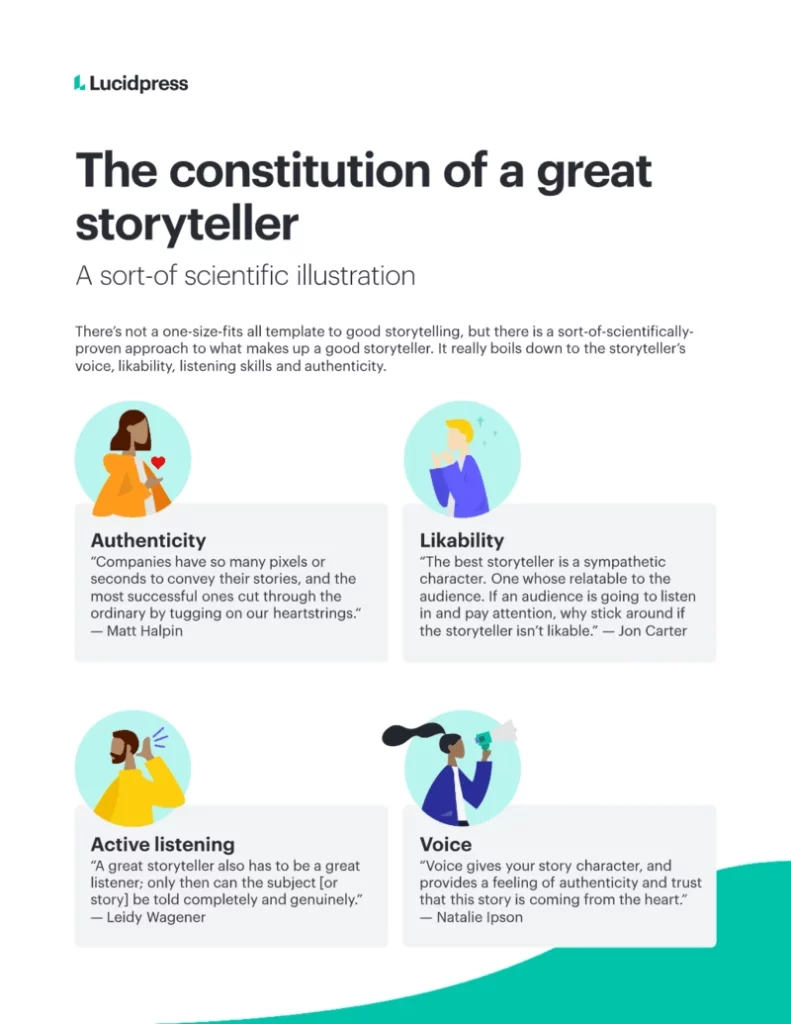
What makes the best stories?
The best stories are immersive ones — the ones people read until the very last sentence. But what exactly goes into making good and great stories? According to our proverbial “Storytellers Board,” it lay in your ability to:
Illustrate relatability and human emotion
“The anecdote of Ernest Hemmingway winning a bet by writing a compelling story in six words is a perfect example of this: “For Sale: Baby shoes, never worn.” Though the attribution to Hemmingway has never been substantiated, the point remains the same: you leave a lasting impression on your audience by connecting with their emotions as quickly as you can (e.g., the initial eight minutes of Pixar’s Up).”
Natalie Ipson
Use conflict as your aid
“The best story has conflict. It gets your attention, it’s entertaining and simply put, it’s like life. Life is full of setbacks and challenges and obstacles. Conflict.”
Jon Carter
Show what’s at stake
“The higher the stakes, the higher the suspense. Great conflict without great stakes, the audience is wondering why they should care.”
Jon Carter
Illuminate all aspects of the story
“A story is great when it is whole, which is a little hard to explain, I suppose. When I think of a great storyteller or story, I think of Chimamanda Ngozi Adichie’s TED talk “The Danger of the Single Story” and how she explains all that we are missing out on when only one aspect of a story or person is told. She is a great storyteller herself, but I think a great storyteller doesn’t fall into the trap of the Single Story and works a subject until it’s illuminated in entirety — even if all of the components aren’t necessarily part of the final result.”
Leidy Wagner
Connect with the audience’s values
“Not all stories we tell in the brand space are emotive at first glance, but we know that purchases — and brand loyalty — are ultimately emotional decisions, so it’s important to connect with the audience’s values. Speak their language, but also stay fluent in yours.”
Hanna Reichel
Related: Brand storytelling examples
What makes the best storytellers?
Every storyteller has their unique approach to pulling threads in a story and experience. However, what it boils down to is your capability to demonstrate voice, likability, active listening and authenticity.
Voice
“Voice gives your story character, and provides a feeling of authenticity and trust that this story is coming from the heart.”
Natalie Ipson
Likability
“The best storyteller is a sympathetic character. One whose relatable to the audience. If an audience is going to listen in and pay attention, why stick around if the storyteller isn’t likable. Why are your friends your friends? Same concept here. If the storyteller can also provide character change through experience, that goes even further in keeping your audience entertained and ready to act.”
Jon Carter
Active listening
“A great storyteller also has to be a great listener; only then can the subject [or story] be told completely and genuinely.”
Leidy Wagener
Authenticity
“Companies have so many pixels or seconds to convey their stories, and the most successful ones cut through the ordinary by tugging on our heartstrings. That could come through humor, a connection over a shared value or experience, or anything else that resonates with us [as humans] more than consumers.”
Matt Halpin
The best storytellers are all around you
The reality is we all have the capability of being storytellers.
However, the best storytellers are the folks who see the heart of a story, do the research and imbue words with rapt attention, tenor and authenticity. Good storytelling, and thus good stories, requires patience and the use of active listening. Keep in mind not all stories resonate with everyone, but (in part) that is the key to creating and nurturing a story — imparting education, conflict, development and relief.
Magic, try as we might, is not always given, but it is earned.
Check out our ebook The rise of the design democracy: How to maintain a consistent brand story.
Content marketing within the financial services industry has been lagging for years now. Because of this, financial service firms need to evolve in the ways they target customers and clients. This is where content marketing comes in — it can provide that edge a financial services company needs to beat out their competitors.
To help you be successful in your financial services marketing, we’ve put together six ways you can market your services and business with content strategy.
1. Embrace social media
Social media has become a powerhouse for financial services marketing and nearly all other industries. More than 90% of Gen Zers, over 80% of millennials and 70% of Gen Xers believe brands need a Facebook page. Facebook, LinkedIn, Instagram … they each provide the chance for companies to target multiple demographics, and it’s critical for your team to know where your customers like to hang out on social media.
How to start
- Begin by learning what content plays well on which platform.
- Identify your target audience.
- Craft a specific message for each channel following best practices for that platform.
- Strive for a mix of content that includes educational material along with news or promotional content.
- Post on a clearly defined schedule.
- Remember to be consistent with your branding and messaging throughout each channel.
As you start to create content, aim for images and captions that humanize your business — these will pique your audience’s interest. Don’t forget, too, that social media can become a great place for getting feedback from clients and customers. When Barclaycard developed its Ring MasterCard, the company reached out to existing customers on social media and asked for ideas. The Ring MasterCard has been recognized as the first social credit card to be designed and built through the power of community crowdsourcing.
2. Create educational content
With so much information at our fingertips, we’re always learning. Content marketing financial services can be a great way to not just generate traffic to your website but also to create potential conversations and awareness. By providing educational content through a blog, you can make your brand name trustworthy and become a go-to for people who are looking for specific content on financial services.
How to start
- Consider starting a blog or having an “education” tab on your website that houses helpful articles.
- Do a little research to discover what kinds of topics people are interested in learning more about, even if it’s just simple jargon. Remember that your customers aren’t finance experts like yourself. Simple, straightforward content can be hugely beneficial to building trust with your audiences.
- Use a content calendar to help you produce timely, relevant content.
Creating educational content can be vastly beneficial for financial services marketing. Take it from Liberty Mutual, who created an Alexa skill for customers to “receive actionable advice on common home and auto worries.” American Express has also used educational content to its advantage with a blog dedicated to helping small business owners get more clients and engage with their customers more.
3. Incorporate content personalization
Following the themes from above, knowing your audience is a huge aspect of financial services marketing. People love personalization — it’s why the customer journey has become the main focus for just about every marketing campaign. In 2019 alone, 35% of marketers in financial services were focusing on personalization, and that wasn’t just for kicks. According to data from Boston Consulting Group, personalization can offer a revenue boost of 10 to 30%.
Ensuring your company knows who the customer is and what their needs are not only makes them feel valued but also gives you a way to offer more applicable services.
How to start
- To personalize your content in the financial services sector, you first need to understand your customer base. Create persona profiles for different types of customers and work to build accurate customer records.
- Invest in tools that give you a look into your customers’ behavior in relation to your platform. And then use this data to make not only your products more relevant but also your content more relevant.
- Get feedback. Conduct surveys to understand how your banking customer experience is fairing. Direct feedback from customers can help you see where you’re falling short on the customer journey and what needs to be fixed, enhanced or made more personal.
Matthews Asia, a financial services firm specializing in Asian investments, uses Episerver integrated with data sources like CRM to drive personalization within its organization. Technology like this can help financial orgs with personalization by doing things like customizing the user experience to match whatever search terms were used or whatever content was viewed. For example, if someone searches for “mortgage rates” on your website, you can then use that info to see that mortgage content shows up for them — similar to how cookies and targeted ads work, but more specific to your site.
At the end of the day, the best way to achieve content personalization is to simply put the customer first. You’ll learn their wants and needs, which will in turn influence the way you advertise and market to your audience.
4. Adopt video marketing
Would it surprise you to know that YouTube has become the second largest search engine? Around 86% of YouTube viewers say they use the platform regularly to learn something new, which is why financial services marketers have started to invest heavily in video marketing. In fact, nearly 97% of marketers say video has helped boost user understanding of their services, and 76% say it’s increased sales.
We are naturally more attracted to video content over large blocks of text. By incorporating video into your marketing campaigns, you can explain complex financial products simply while also building a more transparent relationship with customers.
Take Bank of America, for example, who’s created video testimonials and interviews for its audience. Its video series show real people with real jobs being asked how they handle financial responsibility, so viewers can find out how their peers navigate the world of work in their own words. Bank of America uses a video library to house all of the videos in the series in one location, making it easy for viewers to navigate while also increasing the amount of time spent on the website.
A good starting point is to begin with the following video topics: guarantees, competitor differentiators, testimonials, firm history, video guides and how-to videos.
Each one of the above video ideas has garnered success among other institutions. For instance, WealthSimple has used extraordinary brand storytelling to accumulate over 1 million views on average. The company highlights its brand messaging “Investing for Humans” by bringing real faces to the stories in the videos.
5. Employ digital storytelling
Storytelling became one of the most effective marketing mediums long ago, and it still holds that title today. Whether in video, ads, on social media or cross-channel platforms, digital storytelling allows your marketing to extend into the real world.
How to start
- Figure out what story you want to tell, and make sure it’s consistent across all departments.
- Don’t focus on just one marketing strategy or try to incorporate everything in all at once.
- Identify how to tell a story that captures interest and evokes emotion.
You want to excite and move your viewer through relatable and shareable content. This content can either educate, entertain or simply help the audience in some way.
Let’s look at Allstate’s “Worth Telling.” In this marketing campaign, Allstate focuses on telling the story of a handful of customers who are making a difference. Through this campaign, Allstate is not only promoting what its customers are doing but also building trust by sharing real people with real stories.
6. Ensure sales and marketing alignment
Breaking down walls between departments in your financial services is crucial for content marketing to be effective. Today, just about everyone is a content creator within your firm. It’s no longer solely up to the marketing team to share content or post on social media. As such, you need to ensure that your sales and marketing teams are aligned on all aspects surrounding financial services content marketing.
A great way to achieve alignment between departments is to use templatized content. Templates can give you the control you need to ensure brand consistency and compliance while also empowering anyone to customize and distribute content as needed. A content marketing platform with a library of pre-approved templates is a great way to start.
As you start your journey on this new content marketing road, you’ll come in contact with lots of information around the content experience and customer journey. To give you a leg up, we’ve created an ebook on how you can deliver the extra 1% to your customers by providing a memorable content experience. Download it for free below.
Social media typically ranks among the top three sources of website referrals for most brands. And it’s affordable. Regardless of whether you have a budget of $0, $1,000 or $100,000, you can achieve your social media marketing goals with smart content and targeting.
Related: 7 serious social media mistakes that brands still make
The beauty of social media marketing is its umbrella of benefits. Its ROI isn’t restricted to the website conversions you see from social media referrals. It extends beyond that to include expanded brand awareness, mindshare, and the delayed effect of your social media campaigns on future purchase decisions. To create campaigns that deliver those benefits, you need to consider certain critical elements.
Things to consider before your next social media campaign.
1. Goals and outcomes
What does your brand want to achieve with social media? Defining this is necessary to set a sufficient budget, choose the right social media platforms, and create the right content.
Most businesses will track several different metrics from the table below to measure the success of their social media marketing strategy. While awareness and engagement metrics may be seen as “vanity metrics”, they can be a great way to gauge whether your content is resonating and will help drive conversions long-term.
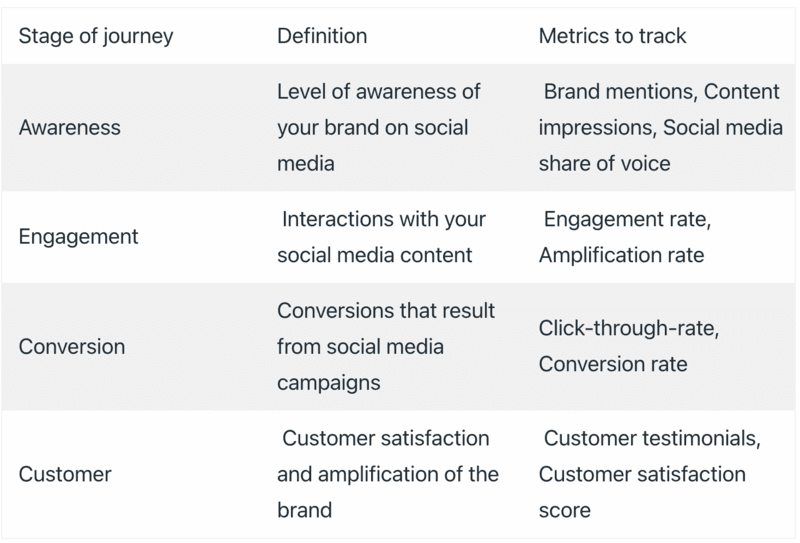
Once you have your goals, it’s important to focus on discovering what your customers’ goals are, so you can “figure out how your social media strategy connects both,” as Lee Odden, CEO of TopRank recommends. If you want people to pay attention to your content, the narrative should focus on them and not you—what value can you add to their lives? Which of their problems can you solve? To create such a narrative, you need clarity on your goals and your customers.
For instance, consider stem cell corporation LifeCell. Their goal was brand awareness among expectant mothers whose primary goal would be the safety and happiness of their children. So, they created posts that focused on the precious moments mothers share with their infants, like this one.
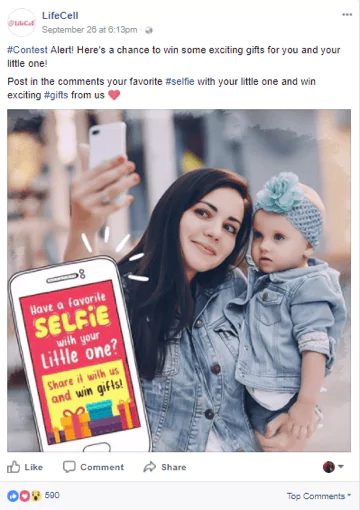
Target audience: Who is the ideal audience for this campaign? Most social media platforms provide options to filter your audience. Not all campaigns are designed to speak to your current customers—in fact, a good social media campaign should grow your audience and attract new followers. Think about the demographics and interests of your ideal audience, and target them accordingly.
Message: What is the main idea you’re trying to communicate with this campaign? Make sure your message is clear and focused. After all, attention spans are short on social media, so you’ve only got a few seconds to get your point across. Also, a word to the wise: Keep track of trending topics before delivering your message. A post that seemed like a great idea yesterday could be misinterpreted based on the news today.
2. Platforms and social networks
It’s never a good idea to spread yourself too thin by managing too many social media platforms. Especially if you’re a small business with limited budget and capacity, you’re better off choosing one primary social platform, so you can publish tailored content and fully participate in the responses you receive.
Facebook is a safe bet for most brands, since it’s become so ubiquitous. But for certain industries, such as fashion or food, image-sharing platforms like Instagram might provide a better rate of return.
Similarly, LinkedIn often works very well for B2B brands because it’s geared towards professionals. Research and choose a couple social media platforms that will best benefit your brand before starting a campaign.
To identify the best social media platform for your brand, you could simply survey your customer base or analyze your competitor’s social media presence. Choose the platform where most of your customers are active and where your competitors are receiving the best response. Alternatively, you could cross-post your social content to effortlessly create a multi-platform presence. Doing this manually is time-consuming, but an automation tool can simplify the process.
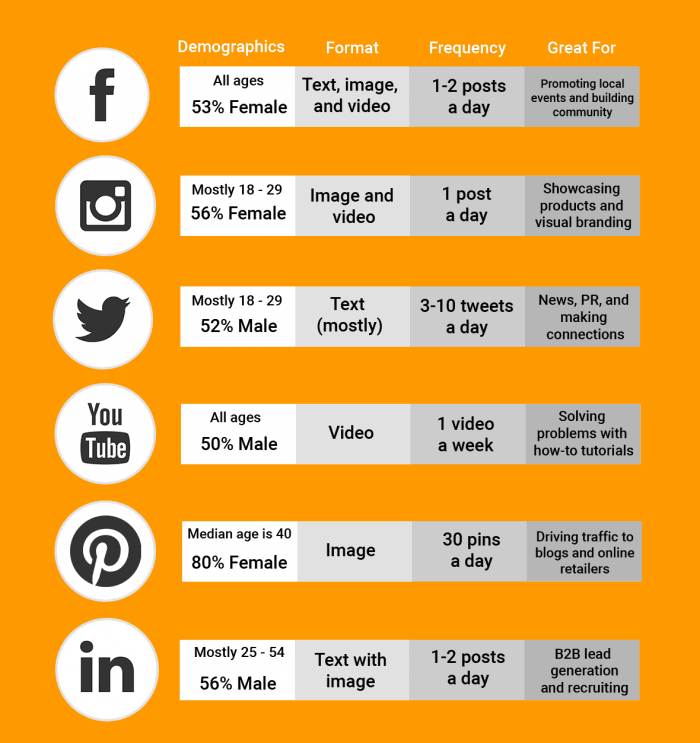
Source: Reaction.ca
3. Campaign timelines
Every social media campaign needs a definite timeline: a start date, an end date, and a publishing schedule. Without this, you won’t be able to connect your campaign to definitive results. Also, a timeline adds urgency and scarcity to whatever you offer during the campaign.
When creating a social media timeline, think about working in stages. Each stage can have its own content direction and outcomes. All of your plans can be documented on a campaign calendar. You can be more efficient by scheduling posts in advance, so you can review your content on a queued-up calendar and make any last-minute changes when needed.
4. Social media automation tools
Like a brand, running a consistent campaign is no joke. If you have time-sensitive plans, think about using a third-party tool for your publishing. There could be other features that matter to you, so it’s important to conduct some research before you decide to invest.
One example is DrumUp, a “set it and forget it” tool that can help with social media campaign management. If you decide to it, you can bulk-upload your social media posts from spreadsheets to libraries within the tool. Then, you can either custom-schedule your posts or queue up an automatic posting schedule. You can review upcoming posts in a calendar format and edit them any time before they’re published. Visit this post for a full list of social media automation tools.
5. Graphic design
Next, it’s time to create the actual content. For a coordinated campaign, you probably want to keep in mind the big picture when creating individual posts. You could begin by clarifying your core message. Once you have, you can create a “bucket of ideas” to work with for individual posts.
Keep in mind your ideal customer’s journey—how they move from awareness to conversion. You can then decide which format to create your posts in. Visuals work wonders when it comes to social media, where attention is sparse and distraction is plenty. If you aren’t sure what type of content you want to use, you could simply ask your audience, like IBM did.
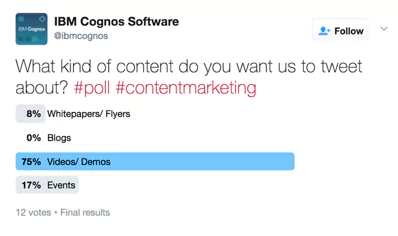
Worried about what your content will look like on different platforms? Use social media templates to make sure your graphics are on-point. Lucidpress has a whole gallery of social media templates sized to perfectly fit the platform of your choice, from Facebook and Twitter to Pinterest and Instagram. Upload your images and brand assets to your library, then edit the content with your brand colors and fonts. Creating social media graphics in Lucidpress is quick and easy, so you can have a full campaign designed in minutes.
Read more about designing social media graphics in Lucidpress here.
6. KPIs & tracking
Unless you continuously track the response to your content, you won’t have any points of reference to refine your social media marketing strategy. As people interact with your content, you can extract useful data based on their engagement. This data can prove useful in instances that aren’t related to social media marketing, such as product development and marketing on other channels.
Additionally, set KPIs alongside your goals, so you can measure your progress and assess the effectiveness of your efforts. Most social media platforms offer deep analytics, and there are third-party tools you can use to mine data. One of the tools I find useful is SimplyMeasured, because it offers several insights (in report format) for free. If you can’t log in to the tool on a regular basis, you could instruct the tool to send automated reports via email.
7. Social media management responsibility
Whether you’re a small brand with limited resources or a big brand with a large team, it pays to plan responsibilities in advance. Who will manage your social media campaign? Who will create the content, track the response, and interact with followers?
Some companies misjudge the amount of work involved in social media management. Content creation, community management, and analytics are demanding tasks that need people who can hustle, people who can stay on-point throughout the duration of the campaign. If you intend to outsource the work to an agency, you still need to track its progress. I recommend using Trello or Asana, so you can manage the review and approval process without having to waste time on calls and meetings.
8. Post schedule and cadence
The timing of your post matters a lot. It’s one of the most important factors in a particular post’s potential for engagement. To reach the highest number of people, content must be shared strategically to catch them while they’re online.
The peak times for various social media platforms are different. Conduct research to figure out the best times to post. There are tools like Facebook Insights and Followerwonk that can help you determine the right times to post.
9. Recycled content
You’ve likely noticed this: many popular pages will share the same content multiple times, continuing to earn engagement each time. Most followers will engage with the content without ever knowing that it was reposted.
It’s almost a given that your post will not reach your entire audience, so it’s not a bad idea to share the same content multiple times. However, do take time to review and make adjustments to the headline, description and image before sharing the content again.
10. Headlines and copy
People will read your headline before they decide whether to read the rest of your content. Your headline must be compelling enough to grab readers’ attention. It should contain a promise of value, information, or entertainment. Don’t forget, you’re competing with hundreds of posts from a variety of sources, so you’ve got to offer something exceptional.
Give yourself a leg up by testing your headlines. Don’t limit yourself to just one; instead, create multiple headlines and conduct A/B testing to see which one performs best. Then implement the winner across your campaign to boost your performance.
Not sure where to begin? Tools like Buzzsumo can help you research and discover high-performing social media posts.
11. Paid promotion
A little bit of advertising can go a long way. Most of the social media networks have a walled garden of advertising opportunities (as in they offer paid ad opportunities specific to that platform), which is great for anyone starting out with paid promotion. The key to ensuring a successful paid promotion initiative (and to refrain from wasting your budget) is to target specific audiences on specific platforms. So, place business ads for professionals on LinkedIn, or toss-up some self-serve ads on Instagram for Millennials. To dive a little deeper, we recommend checking out comprehensive article on social media advertising.
Ideas on developing your social media strategy
Want to kick butt and go viral on social media? Well you’ll need to establish a strategy. Here’s our recommendations as to how you can get started.
Research your competitors
Know thy enemy. Or something like it. Listen, you need to know who you’re up against (and why) — including what they’re doing well and what they’re totally dropping the ball on. So do some research. Create a shortlist, replete with similarities and differences. From there you’ll be able to plan how, where, when and why you’ll overthrow said competitor. Or you could just challenge them to a dance-off and see who wins.
Identify your content topics
Tempting as it might be to throw caution to the wind and just post whatever content comes to mind, we’d venture to say that you shouldn’t. Identifying content topics well ahead of time (and thus creating a content schedule) empowers you to use your time effectively and change gears should you discover that something’s not as effective as you’d like it to be. Plus, identifying content topics preemptively means you can bring more friends into the fold and ask for their assistance with visuals, copy and more. After all, no one likes being told “Hey I need your help but I’m not sure with what.”
Establish a visual identity and voice
Tragic as this might sound, recognition by association is what differentiates winners from losers. In other words, you want people to know who you are as it creates a winning environment. Therefore, by establishing a visual identity and voice, you create a foundation for recognition and success.
If you’ve been following Nest, you know they’re not your average home electronics company. Just check out the cool gadgets they make, and you’ll know what we mean, like:

Nest Learning Thermostat
Or this:
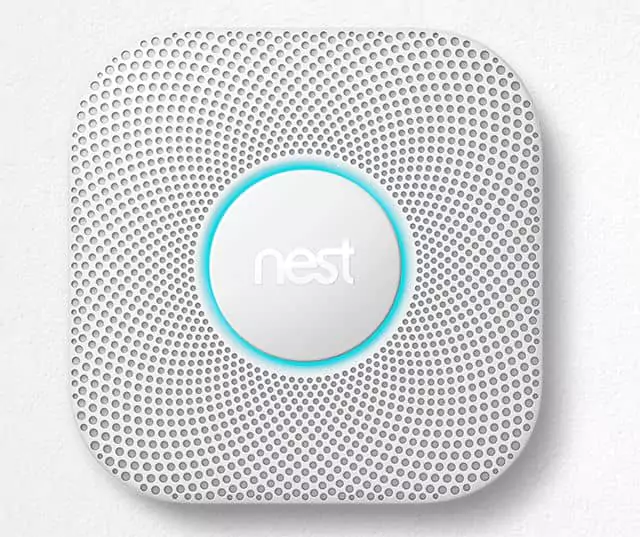
Nest Protect, a smoke & CO detector
But not only is Nest changing the home automation game, they’re also aces at marketing.
Recently, we had the chance to speak with the social media director at Nest to get the inside scoop on what makes for a successful social media marketing strategy.
Build a community
The first thing we learned is that Nest prioritizes community building. They do this by putting out a steady stream of social content that provides value for their customers. They’re also quick to retweet their customers’ content or respond to a comment by a customer who’s experiencing a problem.
Instead of thinking about what your business can gain from social media, think about what you can give. You could use social media to post helpful tips and friendly advice for your customers. This helps them get the most out of your product, and it builds the value of your brand. Here’s an example of this kind of post from Nest:
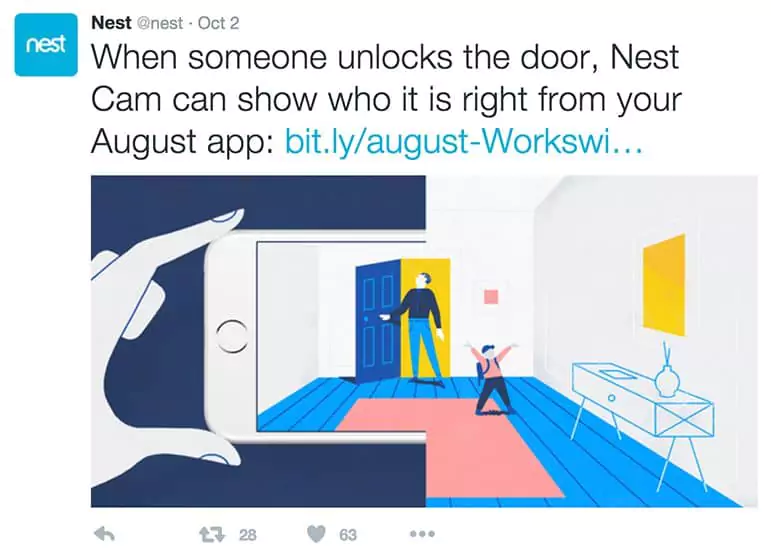
The more your approach to social media feels like a natural interaction between friends, the more success you’re likely to have. You want to build a community where customers share things they love with you, and you share things you love with your customers.
For example, Nest’s customers often mention them in tweets talking about how much they love using Nest’s products. Here’s one such tweet:
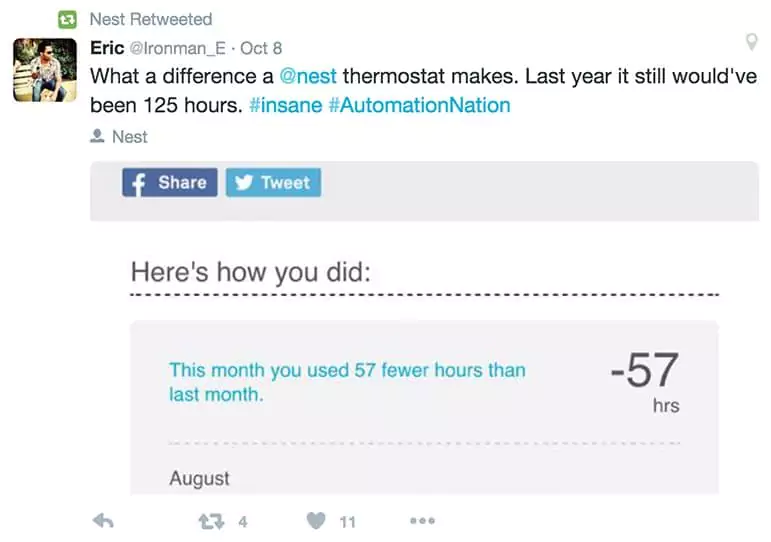
Happy customers give you free marketing and become your greatest assets.
Likewise, Nest is quick to share things they’re excited about, like this post that showcases a work of art a Nest user made to enhance their wall-mounted Nest thermostat:
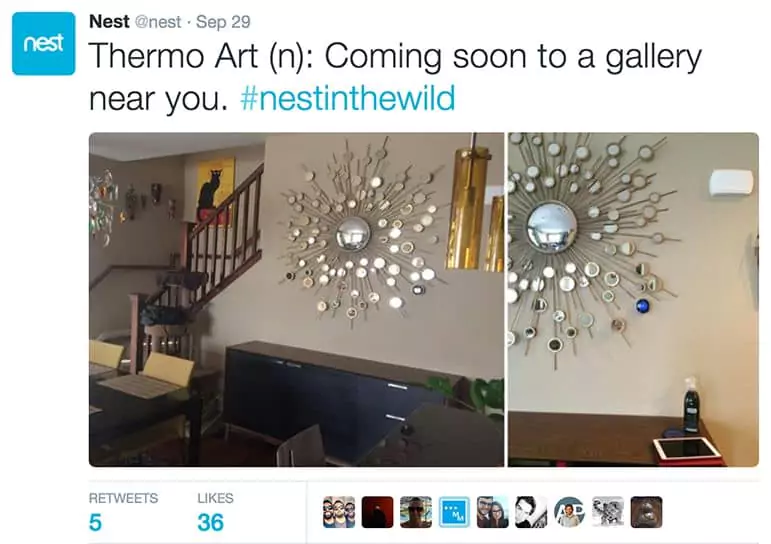
A marketer’s dream: customers seeing your product as a work of art.
This is the zone where you want to be with your social media efforts. But how can you get there? You need to start by becoming familiar with your customers. This leads us to the next lesson from Nest, which is…
Use customer insights to inform your social media strategy
This is a simple principle, but that doesn’t mean it comes easily. To be personal and relatable to its customers, Nest needs to know them really well, and they’ve clearly invested the time to do so. You can’t help someone see how your product will contribute to the things they care most about without knowing what those things are.
Your customers and community should be the main consideration in your social efforts.
Nest has mastered the strategy of observing how their community is interacting and engaging with their social channels, then producing content that speaks to those interests.
What does this look like in action? One of Nest’s principal products is a smoke & carbon monoxide detector called Nest Protect. They recognize that their customers care about safety, and in response to that, they promoted a campaign to nominate local fire departments for a grant.

If you’re a local brand, consider looking for community causes you can get behind, then supporting them in a social campaign. It’s a great thing to do for your community, and it can help you gain some social media traction as well. Just make sure you’re sincere in whatever you do.
Additionally, all of Nest’s branding and content have a personal feel that gets to the core of what a good connection between the customer and company looks like. One of my favorite things that Nest does on social media is the Caught on Nest Cam video series, which consists of clips of funny or interesting moments captured by Nest Cams in the homes of actual customers. Here’s a good one:
With this social media effort and many others on Nest’s pages, they are using a technique perhaps best exemplified by one of my all-time favorite marketers: Apple. Though Apple is a huge company, they’ve managed to maintain a personal feel in their branding, and they often focus on the human element of their products.
Apple’s marketing shows their products integrating seamlessly into everyday life and enhancing the things that people care most about. Nest does the same thing by showing their products in people’s homes and providing the safety, peace of mind, and convenience that their customers crave. A recent ad by Nest did a great job of capturing the human element. It depicts a house as a speaking character talking about his experiences with the family.
Your business can do this, too. Think about the basic ideas behind why you started your business. What value does it add? How does it make people’s lives better? If you can answer these questions, then it’s just a matter of telling people about it.
If you own a sandwich shop and you think your food tastes the best and will make people happy, then post a photo of happy people eating at your shop, or your food bringing people together at a party. When you focus on your customers, your ideal strategy will become clear.
Customize the content for the platform
It’s not an easy task to customize your content for each social media platform, but if you’re serious about social media success, it’s a necessary investment. You should optimize the headlines, images, descriptions, and even your tone of voice to match the platform you’re posting on.
The same content that performs well on Facebook isn’t guaranteed to perform well on other networks. For instance, Twitter has a character limit. Instagram only supports certain image sizes. The tone you would use on LinkedIn is likely quite different from the one you’d use on Snapchat.
This is another good reason to limit how many social media platforms you choose. By focusing on the most important ones for your audience, you’ll have more time to craft content that feels native and authentic to the platform.
Embrace the visual
A recent study showed that visual content is 40% more likely to be shared than plain text content. And as you know, more shares lead to better reach and higher engagement.
Try to create attractive, eye-catching images not just for your brand’s profile but also for every single post. Try experimenting with different types of visual content such as infographics, memes, and so on.
In the case of image-sharing social media platforms such as Pinterest, Instagram and Snapchat, posts with poor visuals have no hope of attracting attention or engagement.
Ask questions
A great way to engage your followers is to ask questions relevant to them. Everyone wants to share their opinion, and the comment section is a good place for you to connect and interact with your fans. It helps your brand feel more human and build more personal connections.
There are plenty of creative ways to ask questions to your followers. Create a poll, a quiz, a would-you-rather, or a trivia question to stimulate conversation. Make sure someone is watching the discussion to keep it focused and productive—and to remove inappropriate comments if necessary.
Reach out to influencers
According to this study, an average return on investment for an influencer marketing campaign is $6.50 for every dollar spent. This speaks to the power of influencers and influencer marketing.
There are hundreds of influencers on social media platforms today, and each of them has curated a unique audience. Contrary to popular belief, you don’t have to find influencers with millions of followers to be effective. You’ll probably find that the best results come from partnering with influencers who share an audience similar to your own, so dig into your niche and make a shortlist.
Wrapping up
Finally, it’s important to consider roadblocks in advance. Social media is a constantly changing landscape, so be prepared to forecast and preempt potential disasters. Check whether the dates you’ve selected clash with any meaningful holidays, and consider whether your content has the potential to bump into sensitive issues. By considering this in advance, you can set yourself up for success.
Ready to make your own social media posts? These free social media templates are a great starting point.
Summoning creative inspiration can be a little like eating peanut butter on saltines while you’ve got cottonmouth. In other words: It can be difficult.
If we’re being completely honest, it’s safe to say that some days are just harder than others. And on those days, it’s easy to feel lonely in your pursuit of content marketing. But here’s the thing — you’re not. You don’t have to fly solo or reinvent the wheel. There’s a whole big world of marketing experts out there, replete with wonderful knowledge, sage advice and whatever else you can dream up.
So whether you’re crafting up a blog post like yours truly here, designing a bland (but “make it inspired!”) marketing brochure or wrangling some content for social media, you can look to our listicle of marketing quotes to get you jump-started — or to share with others!
Famous marketing quotes
“People don’t buy what you do, they buy why you do it.”
Simon Sinek
“Instead of interrupting, work on attracting.”
Dharmesh Shah
“I’ve learned that people will forget what you said, people will forget what you did, but people will never forget how you made them feel.”
Maya Angelou
“Good marketers see consumers as complete human beings with all the dimensions real people have.”
Jonah Sachs
“Our job is to connect to people, to interact with them in a way that leaves them better than we found them, more able to get where they’d like to go.”
Seth Godin
“Marketing is really just about sharing your passion.”
Michael Hyatt
Branding marketing quotes
“It’s quite fun to do the impossible.”
Walt Disney
“Behind every piece of bad content is an executive who asked for it.”
Michael Brenner
“A brand is no longer what we tell the consumer it is — it is what consumers tell each other it is.”
Scott Cook
“Making promises and keeping them is a great way to build a brand.”
Seth Godin
“Your brand is a story unfolding across all customer touchpoints.”
Jonah Sachs
“Do one thing every day that scares you.”
Eleanor Roosevelt
Social media marketing quotes
“Content is fire, social media is gasoline.”
Jay Baer
“Social media is about sociology and psychology more than technology”
Brian Solis
“Build it, and they will come” only works in the movies. Social Media is a “build it, nurture it, engage them and they may come and stay.”
Seth Godin
“Social media is about the people. Not about your business. Provide for the people and the people will provide for you.”
Matt Goulart
“Social media requires that business leaders start thinking like small-town shop owners. This means taking the long view and avoiding short-term benchmarks to gauge progress. It means allowing the personality, heart, and soul of the people who run all levels of the business to show.”
Gary Vaynerchuk
Content marketing quotes
“You can’t sell anything if you can’t tell anything.”
Beth Comstock
“Content builds relationships. Relationships are built on trust. Trust drives revenue.”
Andrew Davis
“Not viewing your email marketing as content is a mistake.”
Chris Baggott
“Whether B2B or B2C, I believe passionately that good marketing essentials are the same. We all are emotional beings looking for relevance, context and connection.”
Beth Comstock
“What separates good content from great content is a willingness to take risks and push the envelope.”
Brian Halligan
“Quality content means content that is packed with clear utility and is brimming with inspiration, and it has relentless empathy for the audience.”
Ann Handley
Storytelling marketing quotes
“Marketing is no longer about the stuff that you make, but about the stories you tell.”
Seth Godin
“Good content isn’t about good storytelling. It’s about telling a true story well.”
Ann Handley
“I’ve learned that people will forget what you said, people will forget what you did, but people will never forget how you made them feel.”
Maya Angelou
“If your stories are all about your products and services, that’s not storytelling. It’s a brochure. Give yourself permission to make the story bigger.”
Jay Baer
“The most powerful person in the world is the storyteller. The storyteller sets the vision, values, and agenda of an entire generation that is to come.”
Steve Jobs
At the end of the day
“Inspiration doesn’t respond to meeting requests. You can’t schedule greatness.”
Jay Baer
Your brand needs to go the distance. A memorable brand shows up for their customers. But, cultivating that type of experience is a whole other story. Because regardless of your role in marketing or what type of marketing content you’re creating, knowing and understanding the effectiveness of your content is the key to being “that brand” for “that customer — learn more about what constitutes effective content and how to begin nurturing it for your brand.
A marketing brief is the blueprint that keeps your team aligned from the start of any marketing campaign, big or small. Unfortunately, these briefs don’t always feel like the superhero that makes your life easier, rather, they tend to feel like a complicated task that takes too long to put together.
But hey! It doesn’t have to be that way. It’s time to ditch the traditional document that can be too complicated. In order to get you to a more efficient starting point, we’re going to outline how to write a marketing brief like a champ so you can get the ball rolling on success.
Why you need a marketing brief
Marketing briefs give creative team members, along with stakeholders, a foundation for the marketing strategy for each and every project. They provide a hard outline of what everyone needs to know to carry out your campaigns for advertising, communications, websites, public relations, etc.
With the right things included in the brief, you’ll get down to the nitty-gritty, like the target audience and budget for any marketing campaign. With a good marketing campaign brief template, you can also clarify roles and objectives so everyone you work with on the campaign knows exactly what you want and how you want it done.
It’s important to note that a marketing brief is different from a creative brief. A good marketing brief example is as follows: it explains the purpose of a marketing strategy, identifies the goals and audience of the campaign, sets timelines, and establishes measurements for success. Essentially, it’s the instructions for the agency or team you’ll be working with.
A creative brief is a separate document used for campaigns or projects that require creative strategy. A creative team uses it to outline aesthetic elements and address any other problems through a creative strategy. A creative brief can include your target audience, correct logo use, brand colors, etc.
What to include in a marketing brief
To make things easier for yourself in the future, create a simple marketing brief template. We’ve outlined the most important things you should always include in a marketing brief below. There may be some projects that require more information than what we’ve included, but this outline will be a great starting point to build off of.
1. Goals and Objectives
Use this section to outline exactly what you want to achieve with the campaign or project: Increase brand awareness? Gain 10,000 new subscribers? Generate $20,000 in new online purchases? Be as specific as possible. This section is also a good spot to highlight any potential risks associated with the project.
2. Background
This section of your marketing campaign brief is meant to help team members understand the significance of the project. Providing background context for why the work is being requested will influence their decisions and help the project reach its goals.
3. Audience
In every marketing brief template, you’ll find a section with information on the audience or target market. This is one of the most important sections because it will explain exactly who you’re trying to reach. The more specific you can be, the better.
4. Deliverables
Clearly list out what finished products are expected to be included in the campaign. This may include ads, designs, logos, social media posts, landing pages, etc.
5. Channels
Where are the deliverables going to live and how will they be distributed? Outline which channels you’re currently using and if you want to experiment with new channels. This will be influenced by your target audience.
6. Timeline
No matter how big the project is, you need to outline the timeframe for work expected. Include hard and soft deadlines and whether they’ll fall within a quarter or particular sprint. Break down every step as much as possible. Remember to include when the campaign will launch and end.
7. Budget
Remember to outline your budget for the campaign. You can start with a range and then map out expenses once the full execution plan is decided on. You may either need to scale back or have some wiggle room when comparing your final budget to the initial range.
8. Tracking and Measurements
A marketing brief template would be useless if it didn’t include a section for tracking and measuring success. At the end of every campaign or project, be sure to collect any necessary data to determine if the campaign was a success, to measure marketing performance, and to see if your initial goals and objectives were met.
A marketing brief template that includes these eight sections will provide any potential agencies you work with the right background to put together a plan that can achieve your marketing goals. Overall, your marketing brief is meant to help define, plan and evaluate the overall campaign or project. When you think about it, it’s really just as simple as outlining what all stakeholders involved need to be doing, how they need to do it and when they need to do it by.
Check out our free marketing brief template for help getting started.
Top performers in the tech aren’t just taking content marketing more seriously, they’re being more creative with its uses. We’re seeing top performers treat content marketing as a strategic business function, and we’re telling you, it’s pretty cool to witness the creative results.
Take Wistia for example. Wistia ditched the standard resource page and boring blog posts and instead created an almost Netflix-like approach to content marketing with their Learning Center.
But, Wistia isn’t the only company making waves with its stellar content marketing though. By following these seven major trends in content marketing, you too can start to see success.
Related: Tech marketing strategies
1. Continued growth of content marketing
According to a recent survey by the Content Marketing Institute, half of technology marketers (51%) expected their 2020 content marketing budget to be higher than it was in 2019. Meaning content marketing is experiencing a growth surge.
If you aren’t finding success with your current digital marketing tactics, try thinking outside of the box. Check out these examples of content marketing from technology companies that are really making a splash.
Blendtec
You’ve probably heard of Blendtec’s popular YouTube series “Will it Blend?” It’s a social campaign that’s garnered millions of views, and it’s been more than just that. It’s also been a sly bit of product marketing that harnesses the right kind of content for its platform. Blendtec didn’t just start throwing out these videos willy-nilly. They researched what works on YouTube and it’s truly paid off — their channel has 867,000 subscribers and the top video (Will It Blend? – iPad) has over 19 million views.
Squash Games
Co-creator of the cult classic cartoon Rick and Morty, Justin Roiland saw potential in the online fan communities of the show and decided to use it to his advantage when he created the VR brand Squanch Games. Rather than wait for consumers to start conversations about Squanch, Roiland and his team created spaces on the platforms their audience was already using like Discord and Reddit. The discussion channels aren’t overly populated by advertisements or intrusions from Roiland himself, but both websites are linked on Squanch’s homepage, bearing an official stamp of approval.
2. Content for multiple audiences
The average number of audiences technology marketers create content for is 3.8 — thus, expanding your reach beyond one or two audiences can generate new customers quicker than you’d imagine.
It’s more common for technology companies to reach out to multiple audiences on multiple platforms because what works for one target demographic, may not work for the other. The biggest challenge we’re seeing for B2B technology companies is creating content that appeals to multi-level roles within the target audience(s). In fact, 59% of tech marketers say this was their top marketing challenge. To move past this hurdle, we suggest identifying personas at all relevant levels of the organization and create content for each role regularly.
3. LinkedIn as a distribution platform
Don’t underestimate the power of LinkedIn as a distribution platform. We found that 97% of technology marketers use LinkedIn organically while 84% of tech marketers use LinkedIn as a paid platform.
There are demographics available on LinkedIn that you may be completely missing out on. As you move to make your mark on LinkedIn, it’s important to note some new features to be aware of that will ultimately help you reach your target audience:
- LinkedIn Live and LinkedIn Events
- Stories Ads
- Audience Insights
- Document Ads
- Products on Pages (where users can leave reviews similar to G2 Crowd)
- AB Testing/Split Testing
- Campaign Manager Lite
- LinkedIn Business Manager
4. Prioritization of customer loyalty
Current customers are just as important as new ones.In fact, technology companies that see the best results are ones that prioritize customer loyalty — 85% of top performers use content marketing to build loyalty with existing customers. On the other hand, only 58% of all respondents say the same.
By focusing your marketing efforts on current customers, you build an infrastructure that fosters retention and even upsell or cross-sell additional features, products and services.
Here are a couple of other ways you can re-market to pull current customers back in:
- Customer communities: Customer communities can be a safe space for people to “talk shop” with peers, share new information about the industry or even collaborate with other professionals. They can also be a great place to announce eBooks or a new whitepaper.
- Nurturing programs: It’s quite common for B2B technology companies to remove existing customers from marketing automation programs. But rather than lump current customers in with new customers, implement a separate nurturing program for them, with touches occurring less frequently. Instead, try highlighting customer success workshops, live events or webinars.
5. Power of case studies
People trust other people, which is why case studies are one of the most powerful ways to convince consumers that your product or service is the right solution. Among tech marketers, case studies are considered one of the highest-performing types of content.
Case studies can help communicate the value of something technical. By introducing real-world examples, you bridge the divide between the complexity of your product or service, the pain point of the customer and the technical understanding of those involved in the purchase. Surprisingly, case studies are more popular with tech content marketers than with B2B marketers — 82% of tech marketers use them versus 69% of B2B marketers overall.
That said, case studies can be a hard area to get right. Here are a couple of tips for creating useful and successful case studies:
- Introduce the solution and benefit of your product or service right away
- Craft the narrative from a peer-to-peer perspective, and then move beyond
- Humanize the content with pain points or direct quotes
6. Digestible content and interactive experiences
We’ve seen a rise in documentaries and other forms of content as companies look for ways to leverage brand affinity marketing. And while this approach has been used by retail companies for years, tech company branding stands to benefit from it too.
Producing content that connects with your audience on a deeper level can provide something your everyday assets (like sales enablement collateral or email nurture campaigns) aren’t able to.. Your product may feel like a tool more than a service most days, but that can be changed by simply humanizing it (hey, case studies!) through an interactive experience or a fun video series. Don’t believe me? Check out these two companies:
Mail Chimp
One of the first brands to dip their toe into easy-to-digest content, Mail Chimp created a 5-part series called Second Act. The documentaries feature stories of people who were leaving careers to create new ventures. The mini-series highlighted the service that most new companies utilize when starting a business but explained the benefit of it through a heart-warming story of people following their passions.
Yeti
Yeti was among the first brands to create their very own online content highlighting people’s stories rather than focusing on the product. At first, they simply focused on salt of the earth people who used Yeti, but with time, their efforts have moved more towards telling stories that resonate with their audience and leaving the sales-focus behind.
Both of these companies were able to create content that could be turned into a viral series, pulling customers back in, over and over again. A docuseries doesn’t have to be the answer, either. Creating interactive product tours, interactive ebooks, quizzes or personalized content recommendations are all other great starting points that will resonate with your audience.
7. Use of intent data
Intent data is behavioral data collected about a person’s online activities — which is a combination of topic and context data.
Topic and context data provide insight on who the person is behind an action and what topics they’re expressing interest in. For example, by reading this article, you’re expressing a level of interest in trends for technology marketers. This is considered topic data. On the other hand, we might assume that you’re a marketing professional and are therefore searching for a new approach to digital marketing. That’s context data.
Intent data can be incorporated into your sales and marketing platforms to identify and find in-market buyers. Intent data can also be poured into marketing technology like a MAP or CRM. Additionally, 80% of B2B brands are leveraging intent data to help with account prioritization and scoring for ABM initiatives. Successful technology marketers have found that intent data can not only help their sales teams focus their outreach, but it can also focus their advertising dollars to determine which topics to address within their content marketing platforms like social media.
Go from blah to cha-ching
Whether you choose to implement one or all of the trends above, your digital marketing strategies are sure to go from blah to cha-ching. Just remember that quality over quantity should be a priority no matter which path you take. If you’re looking for a better way to give your customers a memorable and unique content experience, check out our eBook on how to get that extra 1% of a memorable content experience.
Many of the current tactics used by tech marketers are falling short of leading to sales. But here’s the thing, there’s often not enough focus on strategy. If you’re finding that your team is great at digital marketing but doesn’t know much about traditional marketing, then you’ve got a problem.
Marketing in today’s world shouldn’t be traditional versus digital. Yes, your marketers need to know about SEO, email marketing, content marketing, etc., but they also need to have a foundation in marketing mix, messaging and the other good stuff that traditional marketing is founded on.
Tech marketing really isn’t that different from marketing for any other company in a different industry. It just takes a little translation to apply it to your business. So, we’ve found seven great strategies to help your team change the way you approach tech marketing, starting with the most fundamental elements of any marketing strategy.
1. Build a strong brand
Branding is one of the most important aspects when it comes to tech marketing. In fact, 60% of brands believe maintaining a strong brand is important when generating leads. It’s crucial for every business out there — your brand is what people will remember most about you. But remember, tech company branding isn’t just about logos and pretty designs; it’s about delivering your company’s mission in a concise way. It’s showing off your personality and telling people you live up to what you promise. With a strong brand, you’ll see a surge in new leads, customers and conversions.
Here’s where to start with renovating your brand:
- Set brand guidelines
- Offer your team a branding masterclass
- Provide branding resources
- Think beyond your website
When correctly implemented, your brand will establish credibility and trust with potential and current customers. Ultimately, a strong brand has a trickle-down effect, boosting your bottom line, employee morale and brand status.
2. Identify your target market
A crucial element to any tech marketing strategy is your audience. You cannot, I repeat, cannot have any marketing strategy, tactic, mission, product … anything without knowing and understanding your target market. Your target market answers fundamental questions that, in turn, influence almost everything you do in your company. Knowing and understanding specifics like what messages resonate with them or what channels will best connect you to them will pave the way for your tech marketing strategy.
Dive deep into the demographics: who your market is (age, ethnicity, gender), where they live, what industries they work in, what they care about, etc. If you don’t know these specifics, nothing else we say from here on out can help. You have to know who you’re creating a product or service for in order for it to work effectively.
As you begin to answer who your target market is, you can then move on to what channels they interact with most and then to what tactics you can use to deliver your message. Getting to know your target market and understanding how your product solves their problems will get you on the right path.
3. Create more effective content
The number of ads a single person may encounter in one day has grown exponentially in the last 20 years. Breaking through that noise to strike a chord with a potential customer can be difficult. And not all of those ads are effective — a lot of them are simply background music that people scroll or swipe past. Sadly enough, 60% of consumers believe that branded content is totally useless. Oof.
Don’t be part of that 60%. Make a point to create more effective content. If you’re not sure whether or not your content is effective, try this simple test we’ve put together.
If you find that your content isn’t as effective as you hoped or assumed, or if you’re just wanting to learn more about how brand templating can help you grow your business, check out our free eBook: Brand templating: How creating more effective content gets results.
4. Host or attend live events
Because audiences are inundated with digital marketing and ads, it’s more important than ever to include face-to-face interactions. Many tech buyers want to get to know you personally in a way that only IRL interaction can provide, and hosting a live event can help. Additionally, integrating live events into your tech marketing efforts can do the following:
- Heighten brand awareness. Sometimes, the biggest challenge when you’re starting out is simply getting noticed. Live events help you showcase the “wow” factor of your product.
- Provide leads. If you’re a more seasoned business, generating leads face to face can be critical for you. Before attending the event, make sure to reach out to key prospects to drive attendance.
- Strengthen customer engagement. Live events can provide an informal, low-pressure environment where you meet and greet current customers. This strengthens your relationships with them, leading to customer loyalty and retention.
- Educate. Educational content and workshops are some of the most effective live event marketing solutions. Workshops can draw in current and potential customers.
Promote the event heavily on social media and stay active and engaged on your social platforms before and after the event.
5. Enable automation
To stay on top of contacting potential leads for your tech marketers, you’ll want to invest in tech marketing automation tools. Automated systems can collect leads, build a marketing pipeline, segment contacts, and market to them on a consistent basis. Marketing automation can help you nurture, qualify, and pass leads from your tech marketing team over to sales when they’re ready. This is an essential tool since pre-sales and sales cycles can last anywhere from weeks to months. Finding the right automation tool will depend on the size of your company, along with the target buyer and the nature of your product.
A few tools you can check out to get you started are ActiveCampaign, Marketo, Pardot, Oracle Eloqua or Mautic.
6. Include influencer marketing
A recent turn in digital marketing is the reliance on influencers to help promote services and products. Business leaders and decision makers are starting to turn to experts in their fields as they evaluate new technologies. A partnership with an influencer or two can help up your credibility and your social media reach.
If you’re like me, you can see the benefits of reaching out to an influencer to help market your product or service. I follow experts and sometimes non-experts to help me when it comes to buying just about anything these days. I’d rather not spend the time doing the research. So if someone else already has done it, then you bet I’m going to take their word for it and invest or buy whatever they’re promoting. My Amazon account can prove it.
Decision makers are beginning to rely more and more on others they trust (or just simply admire) to share their experiences with a solution, platform, product or service before they invest in it. This creates an incredible opportunity for you to leverage influences who already have a loyal following to help market to your target market.
7. Harness video content
Video content has become an extremely prevalent marketing tool for tech companies. Some people just don’t have the time to go through a product datasheet, but we all have a minute or two to watch an engaging, entertaining video about a valuable solution. Here are some areas to focus on when producing original content:
- Great stories. Focus on telling a compelling story. Walk your viewers through how you specifically helped a customer get from point A to point B. Make sure to keep things as simple as possible. You can get into specifics during a sales call later.
- Fun concepts. We know you’re in the tech industry, but that doesn’t mean your videos have to be technical too. Creating humorous videos will help you stand out from the crowd.
- Useful content. As you strive to be funny, don’t forget that your video should also be useful or educational. Your video could be anything from a tutorial or product demo to industry best practices.
- Testimonials. Client testimonials are a powerful tool in marketing. They give potential customers a moment to see a business similar to theirs finding a solution. “If it worked for them, maybe it’ll work for us,” is the mentality.
Whether you choose to implement one or all of these strategies, we know you’ll start to see a shift in your marketing approach overall, along with lead generation. Although simple, these strategies could equal that secret sauce you’ve been needing to change your tech marketing from meh to wow!
And don’t forget to grab our free, mini-ebook Brand Templating: How creating more effective content gets results.
Data-driven decision making has gained increasing importance in marketing over the past few years due to the high availability of tools and sophisticated Martech stacks. The results? A level playing field that allows even small businesses to measure and act on customer data. It seems that nearly all companies are doing all they can to gather more market research and sales data — and what they can do to understand data implications better and apply it more effectively.
According to the joint survey published by the DMA and Winterberry Group, 40% of marketers said their companies intended to increase budgets for data-driven marketing somewhat and/or significantly. The most common marketing applications for data-driven decision making include customer journey analysis, A/B testing and personalization. While all of these are influenced by content, 44% of the respondents specifically chose copy optimization.
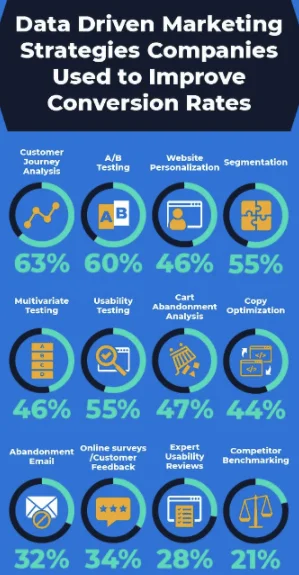
Source: https://www.invespcro.com/blog/data-driven-marketing/
There are undoubtedly countless benefits to relying on data to guide all types of strategies — but when it comes to content marketing, applying data insights can feel somewhat complicated. From what we’ve seen, marketers consistently struggle with proving ROI for content, and it seems that applying data insights can cause additional issues.
Before Covid-19 made a mockery of all surveys, opinions and empirical findings, the WARC reported in 2019 that big data management and digital transformation were among the top three challenges marketers faced across the board.
This finding leads many marketers to wonder — do all content marketing decisions need to be driven by data? What is the data’s place in developing and executing a successful content marketing strategy?
To that end, we’ve compiled a list of need-to-knows that all marketers must consider when applying data to the content creation process.
Content marketing doesn’t always deliver measurable results
One thing that sets content marketing apart from other strategies is its intention. More often than not, content creation aims to cultivate brand awareness and help customers along their journey rather than directly influencing sales.
Marketers use digital formats like blog posts, podcasts or content hubs to support the site’s overall searchability and drive in organic traffic. The most common use cases for these platforms is to highlight best practices, demonstrate product capabilities or engage existing customers. But the content isn’t necessarily intended to explicitly sell products or services — it’s more so designed to educate and inform. Many additional elements in the marketing mix lead to desired outcomes, like a conversion or however your org establishes an MQL.
Keep in mind; the modern customer journey isn’t as linear as it once was — it may take your customer up to seven separate interactions with marketing content before they even remember the brand, let alone convert.
Additionally, results aren’t always concrete. Despite the great availability of precise data from lead gen and sales-specific digital marketing channels, attribution modeling for conversions and pinpointing the exact touchpoint where a customer makes a purchase decision can be trying due to inconsistencies between the channels’ engagement data.
Content marketing is simply a building block along the customer journey — and it’s not always possible to zero in on where it fits best along the way.
What kind of (and how much) data do you have?
“Let data dictate the content you create,” is a frequent and over-used piece of advice dished out by marketing experts and keynote speakers in the industry.
The reality of data collection and application, as we all know, is different.
Now, this isn’t to say that it’s entirely impossible to utilize data when making decisions relative to content marketing. But all data is not equal — some are more relevant (and accurate) than others. Therefore, marketers must understand the difference between qualitative and quantitative data and how to use them effectively.
Quantitative data is the “hard” data points that are easily measured and organized. This includes statistics like costs, traffic numbers or sales revenue. Quantitative data is often the one that executives are most concerned with. However, quantitative data is merely just a small part of the puzzle.
Qualitative data is harder to organize, but it is equally (if not more important) than quantitative. For marketers, qualitative data points include influencer opinions, prospect intent and audience information from social media and review platforms.
Proving a direct correlation between qualitative content marketing and sales can be challenging. But other metrics like online traffic, brand recognition and customer sentiment can be cohesively and easily tied to content campaigns. Therefore, it is solidifying the importance of measuring and conveying this type of “soft” data and hard numbers when it comes to strategic planning.
One way to correlate soft data is by analyzing information like reviews or market research to measure overall sentiment before and after a campaign is completed. Using a structured process for sentiment analysis and noting any positive or negative shifts in overall remarks or ratings can be one way to prove the influence of content.
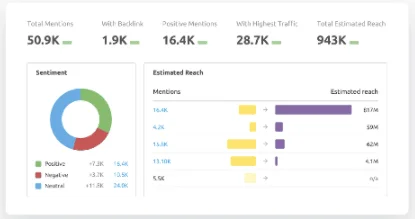
Source: https://www.semrush.com/features/brand-monitoring/
Take full advantage of technology
Thankfully, it’s become easier for content marketers to utilize available technology — like AI and machine learning — to make more data-driven content strategies.
Plus, good business leaders see the true value of investing in martech. An Adobe study on digital trends noted that top-performing businesses were twice as likely to use AI in their marketing strategies than their competitors. Even in hardcore sales (which is generally considered the antithesis to content marketing), the adoption of AI and automation technologies is predicted to increase by more than 100% as per Salesforce’s State of Sales report.
This is great news for content marketers who have long struggled to understand the data’s place in their work. New tech platforms and measuring systems make it easy to gather, organize and track metrics more accurately. What’s more — AI-enabled predictive algorithmic forecasting lets marketers precisely chart out trends and their impacts across industries in business, government and non-profit.
Correctly utilizing predictive analytics makes a content marketer’s job easier. A simple example is how marketers use Google Trends today to spot upcoming keyword trends and decide topics and themes on which to create content. Another content planning martech tool is MarketMuse, which uses AI to determine the topics that might work best for your site as well as the keywords that can generate the most traffic.
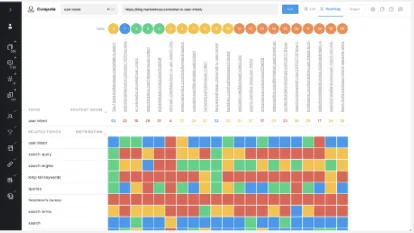
Source: https://www.marketmuse.com/
Finding balance
Although technology is becoming more common and prevalent in the content creation process, marketers need to understand its place in the overall scheme of things. Ultimately, content marketing relies on creativity and empathy, which algorithms and AI struggle to provide.
Data certainly has its place, and it can be used to support content marketing, but it must not be the end-all, be-all. As data tools become more popular to use throughout business strategies, marketers must learn how to balance their so-called human skills with technology to improve the content’s quality and results.
Customers want personalized and humanized content. So when content’s only purpose is to sell, it will likely be unsuccessful, so companies who continually dig for ROI from content marketing in terms of dollar value may be disappointed.
After all, Gary Vaynerchuck once famously asked, “What is the ROI of your mother?”
Like a relationship, content marketing is a series of conversations, and you can never assign a dollar value to each person-to-person conversation, be it parent-child or brand-customer. Consumers can sense when a piece is merely promotional and are often turned off by it. So, although an AI tool can gather hard data to “learn” about consumer segments, a content marketer is the one who actually “understands” their audience. Ultimately, it is up to content marketers to convey the value they offer without tying it directly to monetary gain.
We tell stories every day. Whether it’s a quick ditty to a friend or a long anecdote to your grandchildren, storytelling is ingrained in us. In our professional lives, we also tell stories. We tell stories to persuade someone to support a project, inspire a team, or explain a complex problem.
Storytelling is an essential skill in the professional world, but you may not be using it to its full advantage. Successful business storytelling can set you apart from your competitors and bring in loyal customers, which is why it’s essential to know how to craft a great story. We’ve created this quick guide to break down the business story writing process so you can fine-tune your storytelling skills and reap the benefits.
What is storytelling in business?
Business storytelling takes abstract concepts and complex messages and solidifies them into simple and attainable terms. It can help your customers take a non-tangible concept and relate it to concrete ideas and emotions. Storytelling in business is also the heart of inbound marketing. It’s not facts and figures that stick in our minds — it’s the stories and emotions they invoke that leave us wanting more (or have us running out to buy the new iPhone).
How many Super Bowl commercials can you remember that left you in tears? Or, ask someone and chances are they can tell you the reason why they donated to a cause or bought something. It may surprise you how often those reasons link back to a story the company told. So without further ado, let’s break down business storytelling so you can get writing.
Steps to creating a story
1. Know your audience
We’ll stress this until we’re blue in the face: Know your audience. This important piece of work will determine your message, your medium, your distribution … it may already determine your product or service. The extra time you take to dive into your audience’s demographics will pay off greatly in the long run. Without specific information on their wants and needs, you could end up with a real disaster. For example, if you are set on sending out flyers or a brochure when your audience is largely a Gen-Z crowd, you’re going to fail. Younger audiences expect that useful information is most likely going to come in digital form.
As you start research on your target market, it can help to define your buyer personas. A buyer persona can also help provide direction for the first few steps as you build out the foundation of your story. Make sure to move past age, gender and other obvious sections of their demographics. Find out what their triggers and stressors are. Even better, find out what pushed them into the content-consumption phase of their customer experience.
2. Determine your message
This, of course, is coming as number two because it doesn’t matter how long or short or where you are publishing it — your story needs to have a core message. It will be the foundation of your story moving forward. Eke out whether your story is to raise funds, advocate for an issue, explain a service or something else.
To help determine the point of your story, try summarizing your story in one simple sentence. Or give it the old elevator pitch (30 seconds or less!). If you’re unable to, you don’t have a core message, so go back to the drawing board.
3. Include a story arc with conflict and resolution
The best storytellers know that all good stories have an arc that involves a wonderful conflict apex with a tapering resolution. The conflict will be the lesson of how your character overcame a challenge. Your conflict is what will connect you to your audience through relatable experiences. Without that conflict, your story is going to be a bit boring or fall flat with your audience.
And don’t forget that every good story has a closing. Use your resolution to wrap up the story, provide context around the conflict and leave your audience with a call to action.
4. Select your medium and layout
Stories come in all shapes and forms. Some are watched, some are listened to, and others are read. There are several different ways you can distribute your story: in a video, in copy on your website, through in-person or virtual presentations, via social media, etc.
Picking the right medium for your story will probably depend on your resources and budget. Just remember that no matter which medium you choose, you want to make your message relatable to your audience.
5. Produce it
Once you’ve chosen your medium, it’s time to produce your story. The production phase will probably include a larger team than you imagine. You’ll want writers to help with a script and other creatives to aid in backdrops for a visual story or layouts for a written story. Involve your social media team to make sure what you produce will translate well on social platforms.
6. Distribute it
You’ll almost always want to share your story on social media and via email. If you’ve chosen a written story, don’t forget to publish it beyond your blog; get it guest-posted or shared on other publications. Digital stories are great on your own social media platforms, but also be sure to include them on Vimeo and YouTube. The more places you share your story, the more engagement you’ll get.
Do’s and don’ts of business storytelling
- Make the customer the hero of the story.The focus of your story should be on your audience or customer. Hone in on events you’ve witnessed or lessons you’ve learned, but try to keep yourself out of it. Your story shouldn’t be about how great you are; it will alienate your audience and could pull them away from you.
- Keep it simple: stick to one storyline and one message.Don’t let unnecessary details detract from your message. Some of the most memorable stories are straightforward and rely on the “less is more” principle. Certain details are important to include, such as emotions, the expression on a face, etc. These kinds of details help immerse your audience without distracting from your core message.
- Include a call to action.Don’t forget to include your call to action! Outline specifically what you want your audience to do after reading/watching/listening. It can be as simple as a colorful share button at the bottom of a screen or a quick callout at the end of a video.
- Don’t make it a sales pitch or an advertisement.Your audience is already overwhelmed with ads day in and day out. The purpose of storytelling is to further a brand or foster community outreach. Don’t use a really good story to simply sell a specific product or service you provide. Instead, use it to grow brand awareness or reach out to donors and investors.
- Include a hook and make it engaging.If you ever took a writing course in school, you’ll remember how important that first paragraph is. How often your teachers stressed having a good hook to draw the reader in. It’s no different with your content. You need a good hook that will draw your audience in, and then you need to continue that momentum throughout to keep them engaged.
Some great brand storytelling examples
A recent example of effective business storytelling has been Best Buy’s commercials in recent years. The company’s most recent campaign, “Dear Best Buy,” is an homage to the letters children write to Santa Claus, only these letters are specific to the strange times we’re currently living in. The ad starts out with a customer asking for holiday gift-giving advice and ends with a Best Buy employee providing recommendations.
Another great brand story comes from TOMS. The shoe company shares stories of not only its customers but also the people it serves through each purchase. By doing so, TOMS created a movement that increased sales and built a community.
We’d be remiss if we didn’t include Apple in our brand storytelling examples. Apple uses real-life stories to describe exactly how its products benefit users, and oftentimes a script isn’t even needed. The company’s latest commercials for AirPods show customers using the extensive features of the earphones throughout everyday experiences like catching the metro or walking home. Apple leaves the technical jargon at home, letting the music do the talking.
As you pull out that computer or lay out your pen and paper to write your story, remember that in the end, storytelling is always about your audience. What do they need and what do you have that can help them? If you’re stuck, go out and talk to people. The best storytellers know that they don’t have the only stories to tell. Chat with a colleague, a friend or a peer. Inspiration could strike from anywhere, and just remember that storytelling is a trial-and-error process. Your first run at it may not be astounding, but as they say, practice makes perfect!
We’ve got some tips on how to get your whole organization on board for consistent storytelling: Check out our ebook The rise of the design democracy: How to maintain a consistent brand story.
Recipes are relatively easy to follow. They’re designed to be replicated and, to some degree, guarantee an element of success. Take chocolate chip cookies for example. They’re hard to screw up and generally liked by most folks.
The same concept applies to marketing. Certain marketing strategies, aka your chocolate chip cookies, are designed to succeed — but that doesn’t mean they work for everyone. As in: one size does not fit all.
Alternatively, you need to put a new, customer-friendly spin on your go-to recipes. AKA, swap out an egg substitute for those who don’t consume eggs, or maybe use a gluten-free flour for those who are allergic. Minor changes in your recipe can make a world of difference. And doing so can ensure your marketing campaigns actually move the needle and resonate with target audiences.
So, while we head out to the store to grab some cookie baking supplies, we’ll leave you to glean inspiration from some excellent marketing campaign examples.
11 examples of great marketing initiatives that move the needle
Interactive scoring quiz
Who worked on it: Plain writing team — Derek Gillette
What they did: “Schools will need to consider and prepare for things such as purchasing equipment, training instructors, getting board or executive level approval, and designing their course pathways……To assist, we designed a ‘Readiness Quiz’ to help educators understand where they were at in the process, including a downloadable guide at the end walking them step by step through the outstanding items.”
Why it was effective: “The quiz acted as a first step for prospects, giving them clarity, and then pointing them to the next best resources, such as course demos, presentations, equipment lists or an application. The results of the quiz were also fed back into the marketing database, making it easy for sales or field teams to follow-up in a meaningful way with prospects.”
Additional context: Readiness quiz

Customer affinities
Who worked on it: Cricket Depot — Content creators, content strategist and founder (Jeff Neal)
What they did: “To boost our conversion rate, we created ‘supplemental’ articles that complimented the roaches we sell. When we started, our content focused on the health benefits of crickets. This was decent content. But it attracted people who already knew they wanted crickets as feeders for the reptiles…. Instead, we pivoted our content strategy, and started writing care guides for popular reptiles like bearded dragons and leopard geckos.”
Why it was effective: “These care guides brought in a whole new group of people that were unaware they could buy crickets online. When they discovered our content, they then discovered they could buy from our store, which led to a very low 36% bounce rate, and a whopping 10% ecommerce conversion rate…..so content that indirectly helps our customers was a great way to quickly boost our conversion rates.”
Additional context:
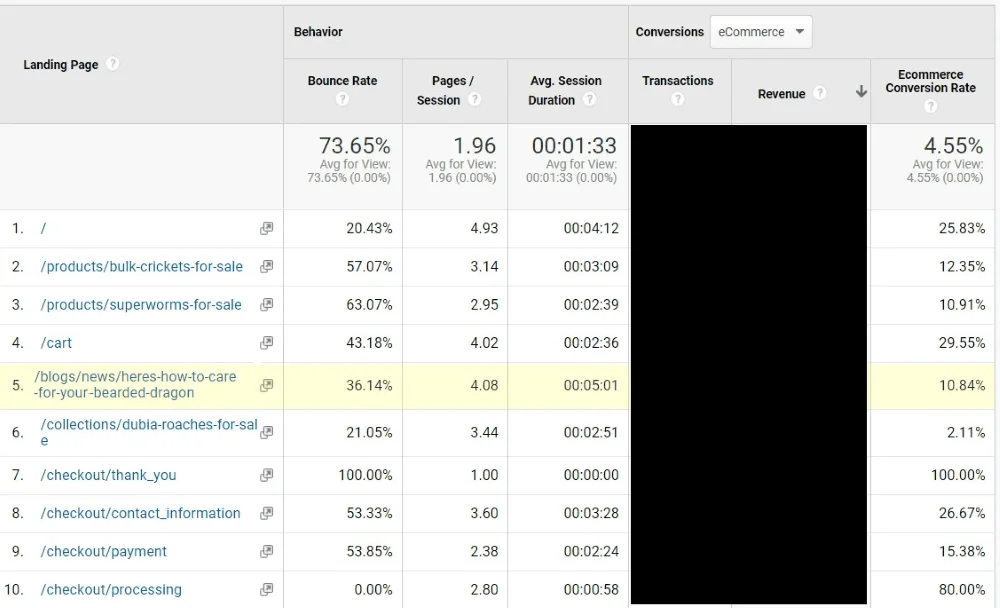
Timely content
Who worked on it: Filter King — Writer
What they did: “Educating people on all things to do with the home offers us great leverage — reparation, improvements and safety. When Covid arrived, and it was evidence that it was here for the long ride, we created a Covid-centric marketing campaign. We wanted to educate people on how air filters are working to help in the battle against Covid. One huge noticable change due to Covid is how everyone is wearing a mask — Masks are basically air filters. So if you are to wear one while outside, why not ensure your home has high quality air filters to protect it from outside elements? Because, ultimately, you protect those indoors — your friends, family and loved ones. We sent one of our best writers to pull up the research and data of our air filters and to compile them into an educative, informative, and easy-to-read and understand blog post.”
Why it was effective: “It has taught us that when creating blog posts, we should concentrate on real world events and trends. If we want to get a larger response we need to be relevant.”
Additional context: “We sent the email with weekly blog posts — but the customer reaction was incomparable than emails before. We had a 39% open rate, with a 16% CTR!”
Mini product samples
Who worked on it: PLM — Helena Gutierrez Alvarez
What they did: “We reached out to potential prospects over Linkedin and shared a microlearning series, similar to what you can see at our company page at Linkedin. After sending three pieces of microlearning content, we invited our prospects to a strategy session.”
Why it was effective: It got people in the door! And in the product.
Additional context: “We sent 200 messages over linkedin and got three new customers from this campaign, it was a great success.”
Who worked on it: Mountain View — Matthew Lally, founder of TheGiftYak
What they did: “Post-covid world we shifted content strategy to heavily favor work from home and remote working productivity. The team worked hard to analyze the customer behavior (both large enterprise businesses and small business owners) and the shift that was occurring in our organic and paid advertising data. This led to a lot of whitepaper and blog content, as well as heavy paid advertising investment shifts. We also helped the client spin up and launch a completely new product offering.”
Why it was effective: “It was a free version of an adjacent digital product and allowed us to further tap into our core markets at a very fast pace.”
Additional context: “Our growth didn’t index as high as e-commerce clients during this period, but we had to have seen 20-30% higher ROI than other B2B brands that failed to execute.”
Virtual concert
Who worked on it: Fortnite Team — written about in The Verge
What they did: “Travis Scott’s April (2020) concert in the metaverse of Fortnite’s Battle Royale was an ingenious spectacle that effectively allowed Scott to release his new track to over 12.3 million participants.”
Why it was effective: “The partnership was ingenious because it included an entire ecosystem of IRL and avatar merch, tons of PR buzz, and a stunning production value while everyone was under Covid stay-at-home orders thus bringing more people into Fortnite and Scott’s fanbase and setting an all-time record for Epic Games.”
Additional context:

User-generated content
Who worked on it: Premium Joy — Hassan Alnassir, founder and owner
What they did: “We ran an online contest through Gleam using our products as the prizes and the goal was collecting high quality user generated content (namely funny children videos) for marketing purposes…..Those selected contest videos will be utilized in a future blog post and YouTube video to promote our business (i.e., content marketing).”
Why it was effective: “The valuable $100+ contest prizes attracted several video submissions from customers out of which the best five were awarded.”
Augmented reality
Who worked on it: CocoSign — Caroline
What they did: “Asos — a famous British fashion and cosmetic brand launched an innovative feature for their mobile app. This feature is named ‘Virtual Catwalk’ and it utilizes Augmented Reality technology in order to work. Through it, users can point their smartphone towards any surface and watch the models walking in that set on their mobile as if they are in front of them. This feature enabled buyers to see Asos products in a better way. Increasing the interest of buyers and clarifying the product view, the organization could improve its online sales efficiently even in pandemic times.”
Why it was effective: “It is one of the best (indirect) marketing initiatives that has an element of surprise and curiosity alongside the power to educate buyers.”
Additional context: “Augmented reality helps virtually connect consumers with products and services without physically going to a retail store. Thus, it is a great marketing medium with consumers putting a high value on convenience. When they can test out products without leaving their homes, people are more likely to buy them online.” — Stephen Light, CMO of Nolah Mattress
Celebrity collaboration
Who worked on it: Just Eats — McCann Creative and Snoop Dog
What they did: “Equipped with a tagline you can’t help but hum, Just Eat has unleashed its secret weapon upon the festive season, leveraging the rapper’s popularity to draw attention to its food delivery service this Christmas…..The rapper first gave Just Eat the Snoop Dogg treatment back in May. Billed as ’this year’s biggest collaboration’’ the campaign saw Snoop jazz up its jingle – ’Did Somebody Say Just Eat?’ – doggystyle. Created by McCann, who won the newly-unified account back in 2018, the fresh tagline was a marked departure from the reign of Karmarama which focused on the ’magical world’ of Just Eat’s service.” — The Drum, Snoop Dogg fronts Just Eat’s festive ad spitting bars about fried chicken stockings
Why it was effective: “Globally, the Dutch-based business — which reportedly paid rap star Snoop Dogg £5.3million to front its summer ad campaign — racked up orders of 151.4-million in the quarter to the end of September.” — Metro UK, Business briefing: Rap boost — Snoop Dogg in Just Eat ad
Interactive video content
Who worked on it: Tate Law — Stanley Tate
What they did: “Tate Law is an organization that helps students with their student loan problems. We’ve helped manage $400 million worth of student loans so far. Last year, because of the pandemic we were forced to go 100% remote. This took a toll on our sales process and we were forced to rely on online channels only. Thanks to referrals and some online funnels we were able to bring qualified traffic to our homepage. But our conversion rates were quite low. After a lot of experimentation, we finally decided to settle on a video chatbot that would reply with pre-recorded videos of mine. It would eventually lead them to schedule a call with me. It was an instant hit. Our conversion improved by 654%.
Why it was effective: “It was a huge success because it respected our customers’ time. They were given hyper-specific information based on what they asked for. It was such a contrasting experience compared to an explainer video explaining the whole service.”
Additional context: “Many delighted customers said that the whole experience mimicked a live video call and gave a personal touch. It was a very efficient way to give them a feel of what kind of person I am and how I work. The best part — being a bot, it works 24/7/365!”
Digital PR
Who worked on it: NeoMam Studios
What they did: “World heritage sites exist in constant danger of degradation or destruction. From militants to motorists, earthquakes to urbanization, these meaningful landmarks face both human-made and natural threats.
UNESCO’s List of World Heritage in Danger draws attention to sites at risk of losing the characteristics that make them special. By definition, these structures are significant to ‘all the peoples of the world……’ We worked with architects, Jelena Popovic and Keremcan Kirilmaz and industrial designer Erdem Batirbek to research and illustrate six of these legendary locations for the best online experience: a series of gif animations reconstructing each site from how it looks now to how it looked when first built.”
Why it was effective: Ultimately, they acquired 211 backlinks from unique domains due to this initiative. Additionally, “time doesn’t stand still. Human culture is built from moving parts. The way we define, preserve, and interact with sites of importance says as much about who we are as the monuments themselves.”
Holiday-focused campaign
Who worked on it: NASA’s Exoplanet Exploration Program Office
What they did: “With Halloween just around the corner, NASA has released its latest Galaxy of Horrors posters. Presented in the style of vintage horror movie advertisements, the new posters feature a “dead” galaxy, an explosive gamma ray burst caused by colliding stellar corpses, and ever-elusive dark matter; the posters are also available in Spanish.”
Why it was effective: “‘The poster art is a really fun way to imagine one of these happening,” said Racusin. “But I wouldn’t want to be those space travelers!’”
Additional context: “As fun and creative as all three posters are, they’re based on real phenomena. In a dead galaxy, new star birth has ceased and most remaining stars are the long-lived variety, which are small and red, giving the galaxy a crimson glow. Likewise, when dead stars collide, they sometimes create a gamma ray burst, or the brightest type of explosion in the universe. And while dark matter may sound like it’s right out of a Halloween tale, its gravity keeps stars inside galaxies and hold groups of galaxies together in clusters — yet scientists don’t know what this invisible stuff is made of.”
At the end of the day, the core commonality between all these marketing strategies is a memorable content experience. So, yes, while it may take extra time or creative energy to think outside the box and concoct a marketing initiative on par with any of the examples above, the long-term benefits outweigh the short term ones. Because to be memorable is to be reliable — and to be reliable, as an organization, gets you so much further than your competitors.
To learn more about how to deliver the extra 1% to your target audiences time and time again, check out our ebook.
As a marketing manager, you’ve got a content vision, and you’ve got a content strategy — and you know what kind of content you want to offer. And you’re also committed to establishing a system of content intelligence to inform content decisions.
But executing all of this may be more of a stumbling block than you imagined. Plus, it’s come to your attention that your content may be suffering from misuse or ineffectiveness. So what’s missing? How can you better connect the dots?
There’s a growing discipline called content operations, and it may be your missing link. It can help you sustain and scale your implementation while ensuring effective and efficient work from your team.
What are content operations?
Content operations are defined as the people, processes and technologies that empower an organization to implement its content strategy to produce and deliver content effectively. It’s considered the behind-the-scenes work of managing content activities.
Unfortunately, content operations are not often the priority for companies. Too many organizations justify scrambling once or twice a month to throw content together. If this sounds familiar, you might need to rethink your content work. To be able to sustain and scale effective content, you need to develop mature content operations.
Why pay attention to content operations?
It may feel like that monthly scramble is good enough for your creative and content marketing teams, but there are several benefits to implementing content operations at your org.
Ultimately, implementing content operations better aligns your backstage activities with your content vision and strategy, so you reduce the risk of failure while repeating or scaling success more quickly.
In more specific terms, content operations will help you make the most of your content assets by:
- Creating or streamlining repeatable processes with content playbooks
- Putting the right people in the right roles
- Distinguishing between content maintenance and ongoing content innovation
- Choosing the right tools and tech to support your operations
Content operations also help your organization avoid these costly growing pains:
- Duplicate efforts on content
- Conflicting or inconsistent content
- Off-brand voice or tone
- Gaps between customer needs and your content marketing
- Failure to grow content capacity and supply chain to meet demand
- Failure to optimize processes to create, deliver and manage content
- Purchase of duplicate or incompatible content-related technologies and tools
These aren’t the only things you can improve with content operations. A content science study found 51% of participants were scaling content operations across business functions. In that same study, it found that 65% of content goes completely unused by sales reps. Content operations can curb the production of unused content by guaranteeing that it gets used because it’s effective and fulfilling your team’s needs. Additionally, content operations offer a better ROI for your content along with unified customer experiences.
How to get started with content operations
That’s all well and good, but where do you go from here? If you feel your team and organization could benefit from implementing content operations, then let’s go over how you can get started.
Get the right talent on your team
Your team won’t be able to thrive if you rely solely on one content rock star. Your team needs to consist of content gurus who can make your content operations shine.
Consider hiring people who can tackle a variety of content jobs, such as these roles: content analyst, content strategist, content engineer and content designer. For your more basic or entry positions in content marketing and writing, make sure you look at people with these qualities: high output, curious, systems-thinking, considerate and competent in their content skill or role.
Implement brand templating
Brand templating has myriad benefits for content teams. When it comes to content operations, templatizing content helps reduce the costs of wasted and unused content. Templates can be stored in a central location and therefore accessed by all members of your team — and you can even give access to other members of the organization.
Because, realistically speaking, a lot of people are involved in the content creation process (even beyond your team), so giving access to templates ensures that branding and prospective customer engagement are consistent. It also gives people more autonomy with the knowledge that they are producing content in line with your content strategy and goals.
Empower analysis and evaluate the performance
Having access to data will help your team to make decisions around your content more effectively. It will also enable you to assess past content decisions and marketing performance, and ultimately providing your team with deeper insights and intelligent content. Innovation helps your organization push beyond the status quo of content.
You don’t have to rely only on metrics, though. Feedback from your team can be a great place to find recommendations. Including your team in the process will help boost morale and encourage innovation.
Make content a core competency
Content can and should not be siloed — it needs to function as a core competency in your organization. This competency will cut across business functions just as competencies like design and information technology cuts across business functions such as sales, product, marketing and support. By not elevating content to a core competency, you may end up suffering problems that cause your content to be ineffective while making its operations inefficient at scale.
A few ways to make content a core competency in your business are to hire a chief content officer or executive, empower content coaches and advocates, and create a center for content excellence.
Where there are content operations, there’s effective content
Now that you know what content operations are and how to start building yours, you’re ready to move forward. If it feels overwhelming or you’re stuck on a budget, unable to hire new talent, focus on one of these steps and then move onto the next as time and finances allow. Don’t try to implement them at once, as you may overwhelm your team and yourself with so many changes. Your first step could simply be to check out our ebook on creating effective content.
There’s no denying it – Facebook isn’t the powerhouse of a social media platform it used to be back in the aughts. But while organic reach has declined over the years, don’t discount how valuable Facebook can be as a part of your social media marketing strategy.
As of 2023, Facebook has over 3.03 billion monthly active users. That means if you want to get eyes on your brand, Facebook is definitely a place to build a consistent presence.
Want some tips on building brand affinity on Facebook in 2023 and beyond? Keep reading!
How to build brand affinity on Facebook
1. Create captivating, on-brand creative
With so much competition already on Facebook, you want to be publishing content that not only catches peoples’ eye, but content that is clearly consistent with how your brand looks elsewhere. Using unique imagery and bright colors can be a good start, but only if that fits with the brand you’ve already curated.
For example, if you publish 20 Facebook ads that all use different styles and colors, no one is going to be able to recognize your brand.
Instead, stick to your brand colors whenever possible and always include your logo in the ad. You should also use the same principal font that’s on your site, and never use more than two fonts in one ad.
Here’s a great example of what to do vs. what not to do:
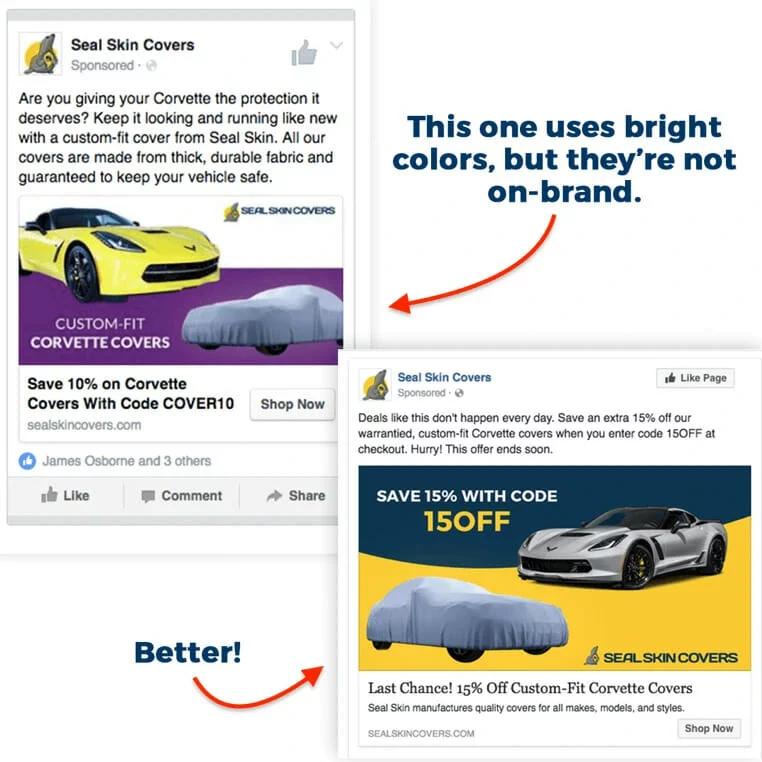
2. Use targeting filters and “Lookalike audiences” to find new fans
While remarketing campaigns are like shooting a fish in a barrel, finding new consumers who will have a genuine interest in your brand is a far more challenging task. Luckily, Facebook has a variety of unique targeting features that can help you refine your audience. Think about the demographics, behaviors and interests of your ideal customer and use that information to narrow your selection. For example, if you own a bridal shop and want to increase your wedding dress sales, you could target people who recently became engaged.
Facebook also has a unique feature called Lookalike Audiences. Think of it like a matchmaking service for brands looking to grow their audiences. To use this tool, you’ll want to create or import a custom audience that fits your ideal consumer.
Then, Facebook will work its magic and identify new customers who are likely to be interested in your brand based on that custom audience. This can be an incredibly valuable tool, and can help you save on ad spend and spend less time searching for quality leads.
3. Establish a brand voice—and stick with it
One of the most important elements of building brand affinity (no matter what platform you’re using) is sticking to your brand voice. For example, if you own a mortgage firm and your brand voice is authoritative and professorial, then you don’t want to run ads that are filled with over-the-top puns and jokes.
We recommend being consistent with your terminology as well. If your e-commerce company refers to buy-one-get-one-free sales as “BOGO,” this should be a consistent term in all your ads.
The more people you have working on copy for your Facebook ads, the trickier it can be to establish a consistent brand voice. Creating a brand style guide with rules on tone, voice, and POV can help.
4. Advertise free content, too
Everyone likes free stuff – especially if they might not be ready to fully commit yet. Instead of focusing exclusively on selling, get creative with free content, whether that’s free information (whitepapers, newsletters, ebooks, etc), or free products.
Athleisure brand Girlfriend Collective used this tactic to their advantage when they first launched. To drum up word-of-mouth and interest in their sustainably-made leggings, they offered their audience free leggings for a limited time. The result? They received over 10,000 orders on the first day of this freebie campaign. Not too shabby, eh?

5. Follow the right image sizing guidelines
Visuals are everything, and in the world of social media, they’re often the first things your audience notices. As such, you want to make sure your images are the right dimensions.
Here’s a handy guide to Facebook image sizing.
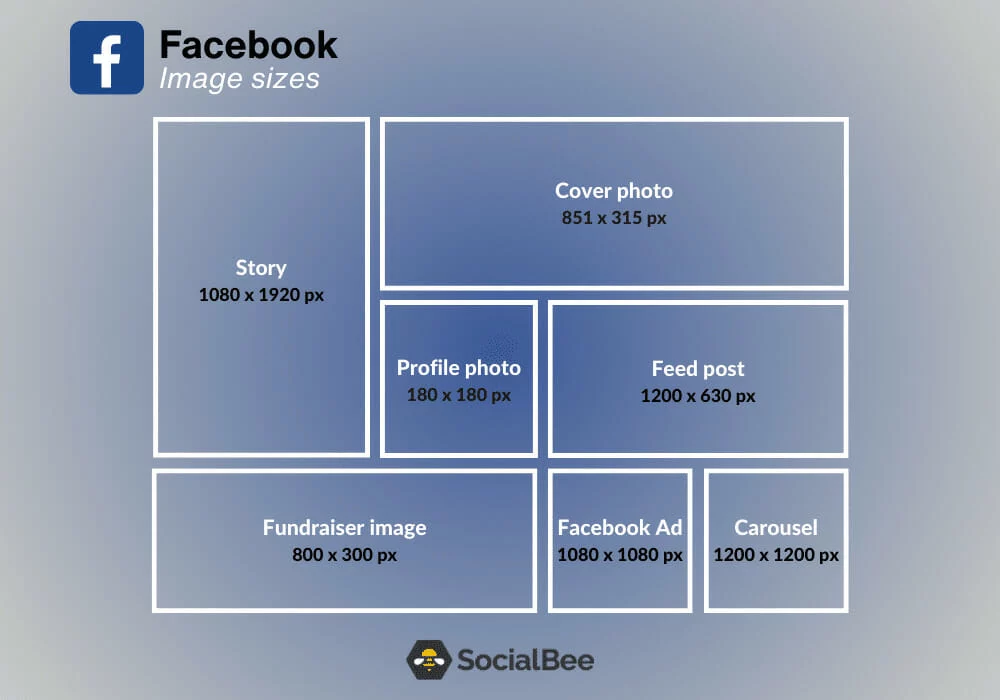
When it comes to your profile page in particular, making sure your imagery is visible both on desktop and mobile devices is crucial. While the ideal Facebook cover photo size is 820 pixels wide by 360 pixels tall, if you use an image that size, the edges will be cropped on mobile (and the top and bottom will be cropped on a computer). To avoid losing important elements of your cover photo, keep the most important details 90 pixels from the right and left sides and 12 pixels from the top and bottom edges – like this:

Want to streamline your Facebook marketing process? Check out our free library of customizable Facebook ad, cover photo, and post templates and get publishing today!
Each month, over two billion users log in to their YouTube accounts. Needless to say, the site sees a pretty unbelievable amount of traffic — it’s probably why you created a YouTube channel in the first place.
There’s also an unbelievable amount of content on YouTube. (Over 500 hours of video are uploaded to YouTube every minute — that’s 720,000 hours of new content every single day.) Your channel — and any channel, for that matter — is just a tiny drop in an enormous river of content. So how can you make your videos stand out?
Making content is only the first step towards a successful YouTube channel. To reach your audience, you also have to promote your YouTube channel. And there’s no “right” way to do this. In this post, we’ll break down various strategies you can use to promote your YouTube channel and start racking up the views.
Understanding the YouTube algorithm
Like Google (or Bing), YouTube is a search engine, which means that the best way to promote your YouTube channel is by optimizing your content to rank well in YouTube searches. It’s a pretty simple concept: The higher your videos are ranked in searches, the more likely they will be watched.
So how does YouTube’s algorithm rank content?
First, let’s see what YouTube has to say about it: “Videos are ranked based on a variety of factors including how well the title, description, and video content match the viewer’s query. Beyond that, we look at which videos have driven the most engagement for a query.”
While the description is a little vague, it gives us a list of places to include keywords: the title, description, and content (closed captions are important!). Once you’ve loaded up on keywords, you’ll want to turn your attention to engagement. YouTube wants users to stay on their platform for as long as possible — your videos can help make this happen.
Not sure where to go from here? Don’t worry — we explain how to find YouTube keywords, increase engagement, and further promote your YouTube channel in the following section.
List of ways to promote your channel
Remember: There’s no “right” way to promote your YouTube channel. And there’s also no fix-all — you’ll have the best results using a number of the strategies listed below. The good news is that most of the following ways to promote your YouTube channel are completely free!
Identify and include high-volume keywords
Finding YouTube keywords can be tricky (and unreliable) — the results are often just pulled from Google keyword tools. If you’re interested in doing a deep dive, Ahrefs has a great guide on YouTube SEO.
Before diving into YouTube keyword research, we’d recommend starting with Google keywords. For many Google searches, the top results are videos — these could be your videos! As you create your content, do some Google keyword research and include those keywords in your video title and description. You may also want to plug those keywords into Google quickly: What types of videos are showing up? How long are they? You’ll want to pattern your content after the videos that are ranking well. (We’re not calling for plagiarism, of course. Your content should be original.)
Make your own thumbnails
Before clicking on your video, a YouTube user sees two things: the title and thumbnail. YouTube allows you to create your own thumbnails for your videos — as in you have control of the viewer’s first impression! YouTube suggests using thumbnail images that catch the viewer’s eye, aren’t misleading, and show the viewer what your video is about. It’s a tall order, but they offer loads of great tips.
Use metadata
YouTube allows you to add “Tags” — searchable keywords that don’t show up in your description or title — to your videos. Make sure to include a few for each video you publish. Don’t go overboard: You want the tags to be accurate and relevant to your content.
Interact with your audience
One of the easiest ways to drive engagement with your YouTube videos and channel is replying to comments (good and bad). Interacting with viewers gives a chance to show your channel’s personality, so have fun with it!
Create playlists
Remember how we said YouTube wants viewers to stay on the site? By creating playlists of your related videos and linking them at the end of each video, you can help drive viewer engagement and rack up more views!
Promote on other social media platforms
Your company’s online presence likely extends beyond YouTube — so make use of those other social media platforms! Whether it’s on Facebook, Instagram, or your blog, link to your YouTube channel and embed videos to drive traffic towards your channel.
Invest in YouTube ads
If you have room in your budget, YouTube ads are one of the best ways to promote your content. You can target specific demographics with your ads to try and reach the ideal persona with your content.
As you implement these strategies, remember that promoting your YouTube channel is a process — you don’t have to do everything right away! Start by focusing on keywords or cross-promoting, and build from there. The longer you stick with it, the more results you’ll see.
There’s not much point in promoting your YouTube channel if it looks unprofessional. Potential viewers are ruthless — they might take one look at your page and leave! Ensure your YouTube channel makes a good first impression with Lucidpress YouTube channel art templates.
You might still think of YouTube as a place to watch cute cat videos, but in only 15 years, YouTube has become the second most visited website in the world (behind Google, of course).
Because of its popularity, YouTube plays a critical role in successful social media marketing strategies. Writing, shooting and editing videos is no small task — but it’s a huge opportunity. Creating content for YouTube will help you grow your audience and connect with them in new ways.
Each month over 2 billion users log in to their YouTube accounts. (That’s over a quarter of the earth’s population!) That’s a big audience. And how do you reach them? By creating and optimizing a YouTube channel.
Creating a YouTube channel sounds like an involved process, but it’s actually pretty simple. This post demystifies the process, giving you the know-how you’ll need to get started.
Setting up an account
The first thing you need to know is that YouTube is owned by Google. If you already have a Google account, you can use that to log in to YouTube. (If you use Gmail or any Google Workspace apps, you have a Google account — go ahead and skip to the next section!)
If you don’t have a Google account, you’ll need to create one. Follow the link and click “Create account” in the lower-left corner of the sign-in screen. You’ll have the option to create either a personal account or a business account — for our purposes, it doesn’t really matter which you choose. Your Google username won’t be associated with your YouTube channel, so choose any username you’d like.
Fill out the rest of the information and click “Next.”
You’ll have to verify your phone number, enter some additional information, and agree to Google’s privacy policy, but it’s all fairly straightforward. Once you’ve clicked “Agree,” that’s it. You should be ready to go.
How to create and optimize your YouTube channel
Now that you have a Google account, it’s time to log in to YouTube and actually create your YouTube channel. There are two types of YouTube channels: personal channels and brand channels. A personal YouTube channel uses the name associated with your Google account and can only have one owner or contributor — you. A brand channel can be named whatever you want and can be shared between multiple owners.
By default, the first YouTube channel you create must be your personal channel. To do this, open YouTube and click “Sign In” in the upper right corner. Sign in using your Google account. Once you’ve logged in, click your profile picture (if you haven’t chosen one, Google uses your initials on a colored background) in the upper right corner and select “Settings” from the drop-down menu.
Click “Create a channel” — this will appear just below your profile picture in the “Your channel” section. Enter your first and last name, and then you’re all set. With that out of the way, you’ll be able to create a brand channel.
Creating a brand YouTube channel
To create a brand channel, you’ll follow the same steps as above with a few slight changes. Once again, click on your profile picture in the upper right corner and select “Settings.” Click “Create a new channel.”
Because you’ve already created a personal channel, your only option is to create a brand channel — and YouTube makes this pretty clear.
Enter a name for your brand account, click “Create” and get customizing!
Creating YouTube channel art
At this point, you’ve got a brand YouTube channel, but it’s not exactly your brand channel. That is to say, it’s a blank slate — it’s time to make it your own.
When you create a brand channel, you’ll be redirected to the channel home page.
To start making some aesthetic changes, click “Customize Channel” in the upper right corner. Navigate to the “Branding” tab (as seen below).
Before you do anything else, you’ll want to add a banner image. This is the first thing viewers see when they visit your channel, and first impressions are everything, so make it count.
If you want to create a banner image yourself, YouTube recommends using an image that is 2048 pixels x 1152 pixels. To avoid headaches, try using Lucidpress’s YouTube banner maker — a free tool that will make your life a whole lot easier. If you’d rather not start from scratch, try our YouTube channel art templates.
Tips for channel growth
So you’ve finally gotten around to creating a YouTube channel for your brand — that’s a great start, but your videos aren’t going to watch themselves. You need viewers; the more, the better. There isn’t one “right” way to reach a wider audience and rack up those views. As with website visits, a combination of factors drives engagement with your videos.
Here are some possible routes you and your team can take to reach a wider audience and get the most from your YouTube Channel:
- Optimize for SEO: YouTube is often called the second largest search engine — and for good reason. To maximize your views, you’ll want to take steps to help your videos rank on Google and within YouTube itself.
Within YouTube, videos are ranked based on how well the title, video content and description matches the search terms, as well as engagement. For an in-depth look at YouTube keyword research, take a look at Ahrefs’s guide.
- Consistent content schedule: One of the easiest things you can do to expand your YouTube channel is post content regularly. Once a week, once a month, every other day — it doesn’t matter. Figure out a schedule that works for you and stick to it. Viewers are more likely to view and engage with your content when it comes in predictable intervals.
And remember: Just because you post a new video every week (or however frequently you choose to) doesn’t mean you have to film every week. If it’s better for your schedule, consider setting aside a day to shoot 5-10 videos and then release them in intervals.
- Cross-promote on your website: This should be a no-brainer. You’ve likely poured more time and effort into your website than your YouTube channel. Maybe it’s already ranking well on Google. Take advantage of the traffic to your website or blog to promote your YouTube channel — it is, after all, another resource site visitors can use to learn about your brand and company.
- Drive engagement: When compared to Facebook and Instagram marketing, YouTube certainly feels like a different beast — so much so that it is easy to forget that YouTube is just another social media platform. So be social! Interact with your viewers, reply to comments and listen to viewers’ requests.
- YouTube ads: If you’ve got the budget for it, your team can also consider paying up for YouTube ads. Through YouTube advertising, you can focus your ads on certain demographics, helping you reach the audience you want for your channel.
Ready to reach a new audience with your own YouTube channel? Looks aren’t everything, but when it comes to marketing, they sure do go a long way. Keep your page professional looking without the price-tag — try our free YouTube banner templates.
With 330 million active users monthly, Twitter can be a goldmine for business marketing. Celebrities, journalists and politicians flock to this powerful social network daily to strut their stuff and engage with followers. And it’s become a hub for brands who use Twitter as a clearinghouse for customer service concerns and boost brand reputations. However, if you haven’t figured out how to use Twitter for business marketing, you’re not alone.
Tweets fly thick and fast on the platform (nearly 500 million a day), so it’s easy to lose your way in the buzz of trending hashtags. Before jumping into the fray, we recommend developing a Twitter marketing strategy that centers your organization’s priorities — from brand awareness to boosting conversions; Twitter is a fantastic tool to reach your target audience if you leverage it effectively.
How to create a Twitter marketing strategy
Not all social media is created equal. Your Twitter marketing strategy should play to the platform’s strengths while centering around your business goals. Follow these steps to solidify your Twitter marketing strategy and start building a solid foundation for your brand’s social media presence.
Audit your accounts
Whether your brand has a handle you’ve used a handful of times or a patchwork of accounts, take stock of your Twitter presence. Make a list of:
- The profiles associated with your organization
- Who manages them
- What these profiles are currently being used for
Pay attention to metrics like how often the account tweets and how many followers it has. If an account isn’t verified yet, now is a good time to reach out to the Twitter verification team.
Keep an eye on competitor accounts
Once you have a good sense of your own social media presence, it pays to take a peek at the competition. Look for the good, the bad and the ugly in terms of engagement on the platform, as well as reach and whatever else you can learn from any missteps made. Keeping your finger on the pulse of industry leaders can serve as inspiration for how to refresh your presence on the platform.
Articulate your goals
A commitment to improving your brand’s Twitter marketing strategy should start with SMART goals that are specific and measurable. While you may be tasked with a vague sense of improving the brand’s social media reach, setting goals requires quantifying what success looks like. Make sure the goals you set are reasonable and actionable, and break down the strategies you’ll use to get there.
Assign responsibility
It doesn’t make sense to drive traffic to your Twitter account if no one is going to tend it. Discuss who is responsible for monitoring the account and set expectations for response time. Twitter is a fast-paced platform, and complaints can snowball into serious PR issues. Every engagement is your brand’s opportunity to build trust in the public marketplace.
Set some guidelines
If you don’t already have social media guidelines, now is a good time to define them. Communication between various members of the team attending your Twitter account should be consistent and transition seamlessly. Discuss how handoffs with the customer service team will occur and protocols for addressing the most frequently surfaced concerns.
Find your voice
Leverage your brand style guide to figure out what your social media voice sounds like. Set guidelines not only for when you’ll engage with followers but how. While you might opt to use humor or keep it more buttoned-up, the most critical piece of advice for successful social media engagement is to be human. Whether someone is a fickle Twitter follower or devoted customer, people appreciate brands that strive to be authentic and sincere.
Create a content strategy
In the same way that you create a content strategy for your blog or website, you should create a strategy for your Twitter content. Focusing on customer success stories, amplifying promotions or providing industry insights are all ways Twitter content can communicate your brand’s priorities. Studying buyer personas may also help you to flesh out what content your audience craves.
Plan a Twitter content calendar
Having goals for your Twitter marketing strategy is a start, but taking action is paramount. Establishing a social content calendar enables you to control the timing of your messaging for maximum impact and implement effective campaigns across all your channels. There are several third-party services that can help manage campaigns in one place and schedule tweets in advance.
Measure, analyze and adjust
Once you have a Twitter marketing strategy solidified, start measuring your progress. Fortunately, Twitter puts much of the data you’ll need at your fingertips. Here are just a few of the metrics Twitter analytics provides.
- Engagement: You can click to see engagement on each tweet or access overall engagement metrics for your account from the main menu.
- Impressions: Impressions are a measurement of how many people have seen your tweet and the reach of your content.
- Hashtags: Twitter measures the popularity of certain hashtags among your followers, so you know what to amplify.
- Top tweets: See your top-performing tweets, so you know what’s working and can tweak your approach to gain better traction.
If you’re using Twitter ads, you’ll get additional analytics and advice on how to improve performance in the Twitter Business Center.
Twitter marketing best practices you should follow
While there’s no single approach for using Twitter for business marketing, there are some best practices brands follow to make the most of the platform. Here are some ways to get your Twitter handles churning out social media buzz.
Brand your profile
From the images you display to the website your account connects to, every piece of your Twitter profile should align carefully with your brand. Twitter allows users to customize profiles, so make the most of that valuable real estate with content creation tools like the Lucidpress Twitter header template.
Leverage hashtags
Every social media platform has unwritten rules about hashtags. On Twitter, the home of hashtags, the motto is to use them sparingly. Branded hashtags are a great way to amplify campaigns, but sprinkling in too many will trigger Twitter’s spammy senses. Using popular hashtags also helps your brand ride the wave of Twitter trending topics and expand organic reach.
Engage, engage, engage
Gaining more followers is the name of the game on any social media platform, but it’s especially important on Twitter. However, instead of approaching Twitter as an opportunity to build clout, think of it as a chance to build community. The more you engage in the replies or the discussions happening in your mentions, the more you’ll build trust.
Mix it up with media
While Twitter might not be as visually appealing as platforms like Instagram, users still love dynamic tweets with high-quality images, GIFs, and videos. Including a mixture of media creates “shareable” content and enables you to do more with Twitter’s 280 character limit. In some cases, a picture really is worth a thousand words.
Want to create branded graphics for your tweets that’ll pop-off with your audience? Use Lucidpress Twitter post templates.
Promote and advertise
Twitter offers a few different ways for brands to advertise. One method is through promoted tweets, where businesses pay a monthly fee to promote tweets to a targeted audience. The other method is through Twitter Ads, which leverages keyword or timeline targeting. Both promotion methods can be great ways to elevate your brand profile and build a following while driving conversions.
Keep these helpful tools handy
Twitter does offer other bells and whistles worth discussing. One is Twitter lists, which weed through the chatter by aggregating tweets from accounts you select. Creating lists is a clever way to curate content and amplify trends within your industry. Twitter Moments also offers customization by allowing users to select tweets from their own timeline and mix in tweets from other accounts to create a comprehensive take on a topic.
Take the time to listen
Instead of dropping into your brand’s mentions or replies sporadically, set up scheduled interactions with followers by soliciting feedback through Twitter polls or hosting a Twitter chat. Many brands find Twitter chats are more successful if organized around a theme or hashtag and scheduled consistently from week to week.
Know that challenging interactions are par for the course
Twitterverse is notorious for broadcasting customer service mishaps. And your response to those complaints can make or break your brand’s reputation. Once an incident starts trending, it can be hard not to watch the train wreck. That’s why it’s critical to tend your mentions closely and respond quickly. Decide whether it’s a conversation you want to have in a public forum and direct the customer to your direct messages for a speedy resolution.
Whether you’re pruning a Twitter presence or nourishing a neglected handle back to life, you don’t have to go it alone. Lucidpress is here to help with streamlined Twitter templates and resources.
Try these Lucidpress Twitter templates to create a buzz-worthy, branded Twitter presence.
White papers are popping up in marketing campaigns even outside the tech industry — and for good reason. In this guide, we’ll go over what a white paper is, why creating one might be good for your business, how to write a white paper, and a few examples to check out.
What is a white paper
A white paper is an in-depth report used to educate an audience on a specific topic. White papers often require an email address for access, which helps capture leads. It’s for this reason white papers should be a staple in your content marketing arsenal.
Here are a few white papers you can check out to get acquainted with the genre:
Evry
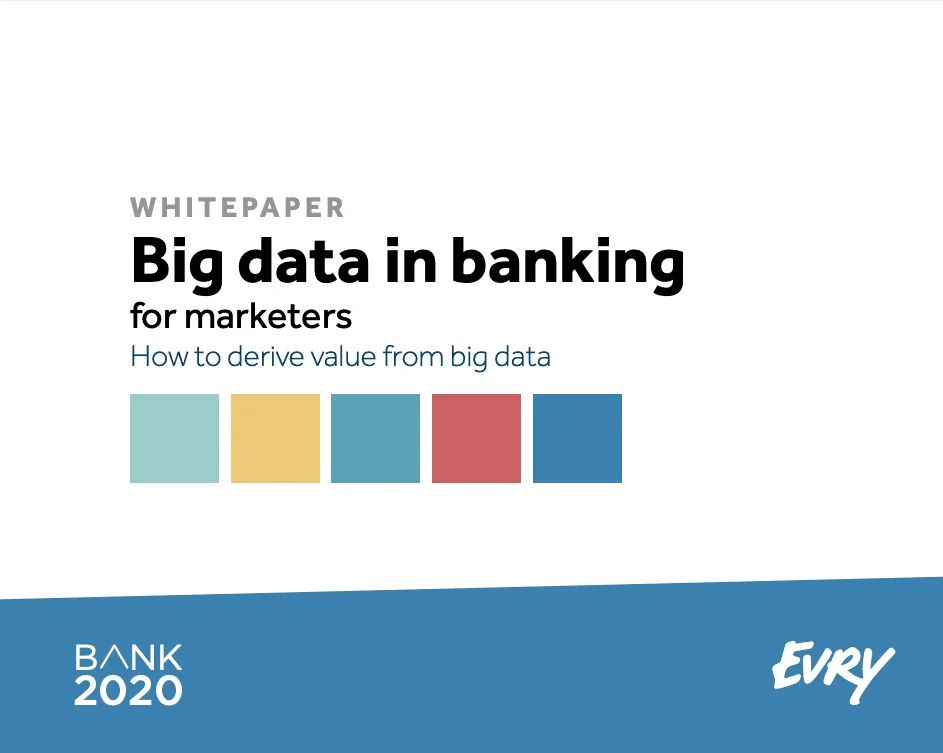
Microsoft + NetHope
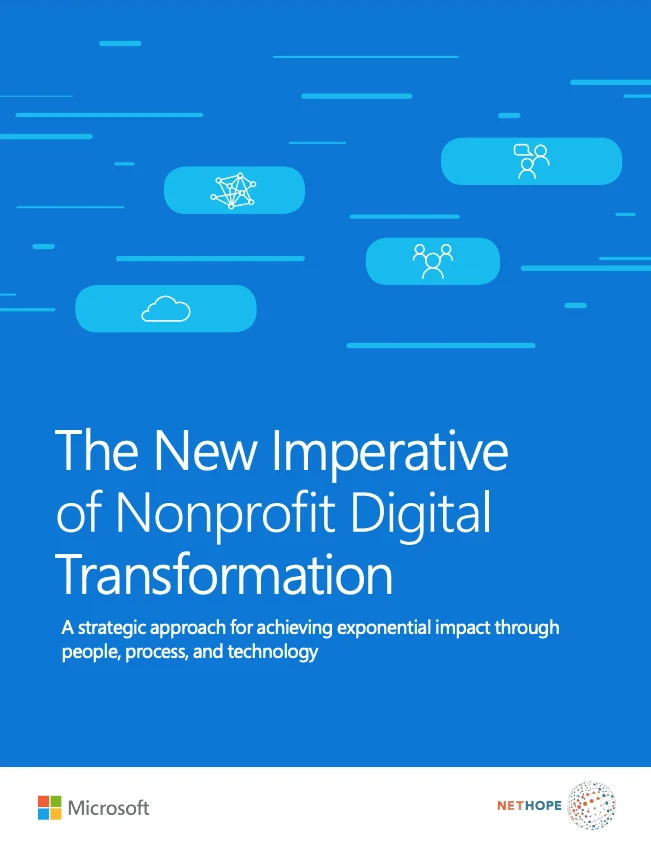
AT&T Business

How white papers are used
White papers are used for a variety of purposes, but according to Demand Gen Report, 71% of B2B buyers use them to research purchasing decisions. White papers are bonafide marketing collateral and should be used as such — to promote or highlight certain features of a product, service or a solution.
However, there are some common misconceptions about white papers…
White paper myths
- Myth #1: A white paper is a product pitch.
- Myth #2: Addressing both technical and business audiences in a white paper saves you time and money.
- Myth #3: Using the second-person point of view (“you”) in your white paper is inviting.
- Myth #4: White papers should be more than 2,500 words long.
The biggest thing to worry about is whether or not a white paper is right for your purposes, and that’s an easy question to answer. Since a white paper can be considered sales collateral, it’s most likely right for you. Ultimately, any business that is selling something new or complex (or even costly) can benefit from a white paper.
What to consider before you get started
Keep the basics in mind before you get in the weeds of white-paper writing.
- WHO is your audience?
- WHAT are your goals?
- WHEN do you need to complete this by?
- WHERE will you promote and use this content?
- WHY should your target audience care about this white paper?
- HOW realistic are your expectations?
Steps to create a white paper
1. Choose a format
Most white papers follow a tried-and-true format. Here are the types you’ll run into the most.
Product overview
Also known as “The Backgrounder,” a product overview will explain how a product functions and the context surrounding it. Use this technical white-paper format to showcase a new product or service.
Comparison
Best used towards the end of a sales cycle, a comparison white paper will weigh the pros and cons of competing vendors or solutions with a clear winner at the end.
How-to or list
Numbered lists or straightforward how-tos are aimed at a casual audience. This format is a useful introductory marketing tool to answer common questions or explain the benefits of a product or service.
Strategic narrative
This white paper format tells a story. It explains how your business got to this point, what your vision for the future is and how you’ll get there.
2. Do your research
White papers are meant to be authoritative in tone, which means research is imperative to your success. When writing a white paper, you should provide information your readers won’t be able to get anywhere else. This can be done by, for example, conducting an original survey.
3. Follow a standard outline
Nearly all white papers follow a basic structure:
- Title
- Abstract
- Problem statement
- Background
- Solution
- Conclusion
- References
Following this format keeps your information tidy while also helping with readability.
4. Dedicate time to design
Don’t forget the impact your overall design will have. Use the same fonts, colors and overall branding you use for your other marketing collateral and go from there. You’ll also want to think about these design elements::
Supporting images and graphs
Use images strategically to help break up the text and to make your data easy to visualize. Well-placed graphs, charts, illustrations and images will enhance the reading experience and make your white paper much simpler to digest.
Headings, subheads and white space
Be sure to use clear headings and subheadings so your reader can quickly scan the white paper and find what they need. Using different fonts or colors for your headings and subheadings will create a clear distinction while allowing readers to focus on the points that matter most to them. And don’t be afraid to have white space around your main design elements either — this keeps your white paper from looking cluttered.
White paper templates
You can also start your design with a white paper template. Having something like a template can really help you envision things, so try starting with a white paper template if this is your first go-around.
White papers do’s and don’ts
Because the white paper format is pretty fluid, it’s easy for anyone to call anything a white paper. But that doesn’t necessarily mean yours will get the attention you want. To help your white paper stand out, consider these tips:
- Don’t stress the length. Concision is more important than any minimum requirements you’ll see out there. If your topic requires a good amount of detail, then dive into that detail.
- Follow the white paper structure. This will not only help with your concision but also with cutting out any fluff while producing an easy-to-read document.
- Consider the style. Make sure your white paper is professional and well written. If you need to, reach out to someone to help edit and design your white paper.
Here are a few other do’s and don’ts to help your white paper stand out:
Do’s
- Invest the time in good design.
- Tell a story.
Don’ts
- Make it a sales pitch.
- Forget the research.
- Leave it abstract.
We know writing a white paper isn’t all that easy, but the time you put into creating one will produce a valuable document your sales and marketing teams can leverage. If you follow our simple guide, you’ll be creating your first one in no time. And if you want to really cut that time in half, check out our free white paper templates.
Real talk: Trying to find a strong content marketing example is like looking for a needle in a haystack, mostly because there are just so many stinking options. Seriously though — between social media algorithms, walled gardens, SEO, paid ads and everything else under the marketing sun, we’re inevitably served some sort of content marketing experience that’s designed to get our goat and draw us in.
So, how do you decide what counts as “the best content marketing examples?”
:eyebrow wiggle:
>Related: Examples of great marketing initiatives
How we evaluated the general existence of content marketing
The best content marketing tells a story. Well, not just any story, a good story. One replete with emotions, thoughtful cadence and something that ties it all together — good content marketing speaks to you on some level. Which is to say that the best content marketing does these three things:
- Keeps the throughline (or red thread) obvious
- Knows its audience — e.g., where to exceed expectations and where to keep it simple
- Creates a sense of camaraderie
So, without further ado, here are our fave examples of good content marketing:
1. Mailchimp’s original content
Mailchimp, the beloved marketing platform that helps small businesses do everything from email to website building and analytics, is also putting out the best content in the game. The brand is undoubtedly #1 in our book, and whenever the subject of good content comes up, we all inevitably sigh and get big heart eyes over whatever Mailchimp has recently put out.
The brand has not one but two content platforms: Courier, which offers marketing advice from experts and articles about trendy small businesses and Mailchimp Presents, a collection of original podcasts, movies, and video series that “celebrates the entrepreneurial spirit.”
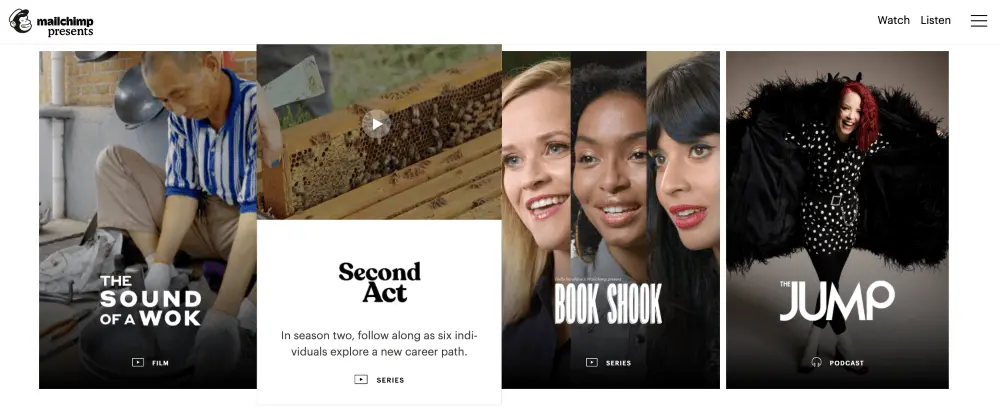
Right away Mailchimp’s red thread is obvious — the brand story, a celebration of entrepreneurship and creativity, is loud and clear. And while the budget involved in this level of production is nothing to sneeze at, money will only get you so far. Mailchimp has perfected the art of taking human stories and turning them into content that’s relevant, interesting and, above all, inspiring.
While we’re gushing, we encourage you to watch one of our favorite pieces, Noodle School: a short documentary about students in Lanzhou, China, learning to make traditional hand-pulled noodles.
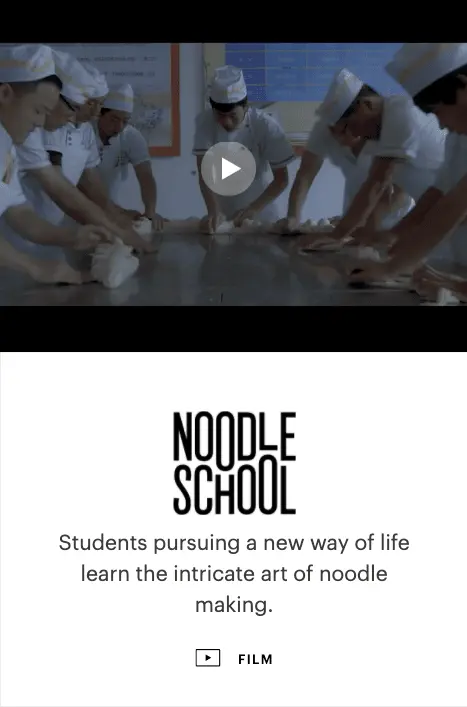
2. Great Jones’s food media
Great Jones has made a name for itself offering high-quality cookware at affordable prices, complete with a jewel-toned aesthetic that sets millennial hearts aflutter. And true to the brand’s hip ethos, its content does not disappoint.
The Great Jones Digest is filled with mouth-watering recipes and interviews with the movers and shakers of the food world. Is it a blog, per se? We’re not sure. Is it a perfect amalgamation of product placement and food-celebrity endorsements wrapped in genuinely good content that rivals large publications like Bon Appétit? Yes.
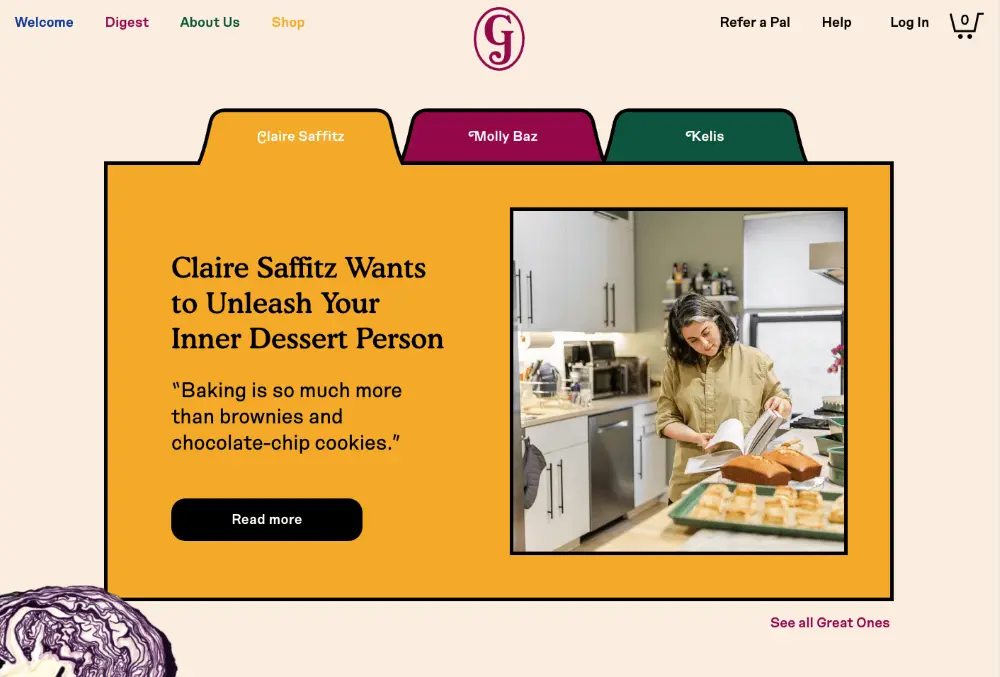
(The brand also has an extremely well-curated Instagram that does wonders for their marketing.)
There are a few elements at work here, and combined, they pack a powerful punch: content that’s relevant to a culinary-inclined audience (recipes!), trusted endorsements, pleasing design and format, showy but not annoying displays of the product. Yes, it is the whole package, but working even one or two of these tactics into your own content marketing can help move the needle.

Thanks, we’re hungry now.
3. Trello’s straightforward blog
Alas, good content doesn’t have to be the flashy, big-budget crème de la crème. Sometimes it’s as simple as offering a well-written blog post.
The Trello blog, whose content is also served up in a weekly email newsletter, offers uncomplicated articles full of good advice on topics that appeal to the wide-ranging workers of the world. What makes it special? Good-quality writing on topics that we’re genuinely interested in.
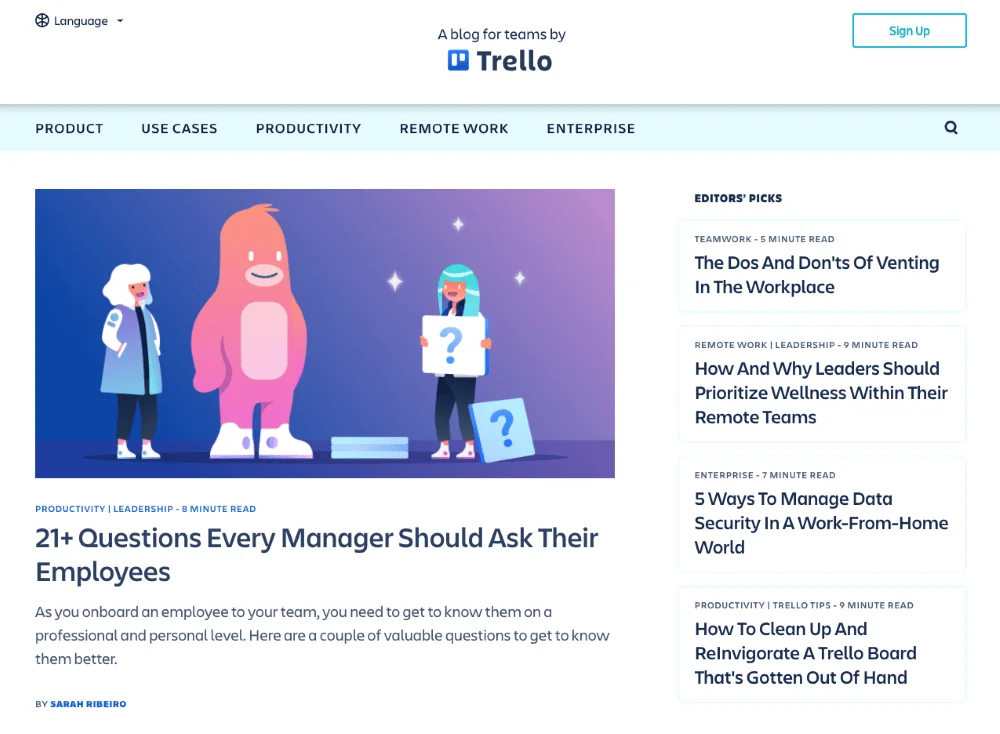
With topics including how to manage work anxiety, productivity hacks and mastering work-life balance, Trello’s content will resonate with anyone on the 9-5 grind. The blog also manages to work in plenty of product-focused tutorials for its customers in a way that doesn’t feel pedantic or out of place.
Take note: Spending time to do the simple things well can really elevate your content. A good blog can be small but mighty.
4. Tushy’s customer testimonials

Americans are intensely private about their bodily functions. It’s taboo to talk about poo — likely a result of their Protestant roots — regardless, they aren’t big fans of bidets because, well, bidets clean your bottom region. And that means you poop.
Enter: Tushy.
Tushy is “the modern bidet for people who poop.” Or “the modern bidet that saves your ass, saves your money, saves the planet and saves the world.”

Pretty exciting stuff, eh? Real people, on the john, in real life. Well, kinda. But, how do you get people to actually buy a bidet when a.) we’re afraid of our own b-holes and b.) when we’re afraid of bidets?
- One — Tushy lowered the barrier of entry. Buying and installing a bidet is intimidating. So, Tushy made the installation process ridiculously easy (both writers on this post have installed Tushys in their respective abodes). Plus, traditional bidets aren’t exactly renter-friendly (in the sense that you can’t exactly uninstall your personal, full-size bidet when you move). Tushy, on the other hand, is totally transportable.
- Two — Tushy harnessed the power of social proof to destigmatize talking about our bathroom habits. Because, in a world of information and option overload (and marketing campaigns galore), it’s hard to know who to trust and what information just a total crock of bullsh*t. So instead of leaving you high and dry, they ensure you have unobstructed access to what other Tushy enthusiasts have to say about that bidet life.
Customer testimonials are about as timeless as they come — plus they’re some of the most effective, easiest marketing content you can get. All you have to do is ask for it.
5. Ruffwear’s interactive content and social media
Pets, though more specifically dogs, mean a lot to us — they’re our companions, support animals, entertainment sources and more.
Ruffwear’s “My Dog is My” campaign spotlights the various ways in which dogs contribute and participate in our lives, presenting great opportunities for people to see the product in action, worn by dogs like their own in some way, shape or form.
Ruffwear uses its “My Dog is My” marketing in a variety of ways, however, there are three worth highlighting here:
Ruffwear blog
The Ruffwear blog is a great space to share “My Dog is My” stories, without necessarily needed to have a scoped out marketing campaign, replete with photographers and such.
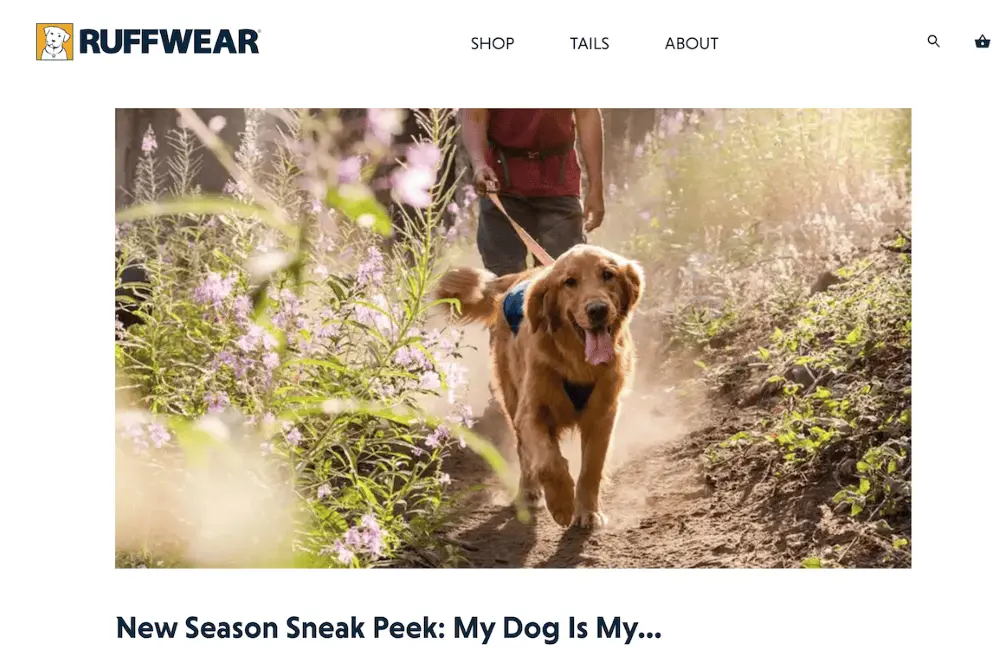
Core homepage
Ruffwear has an incredibly diverse range of customers — as highlighted by the various core homepage content stories related to the “My Dog is My” campaign.
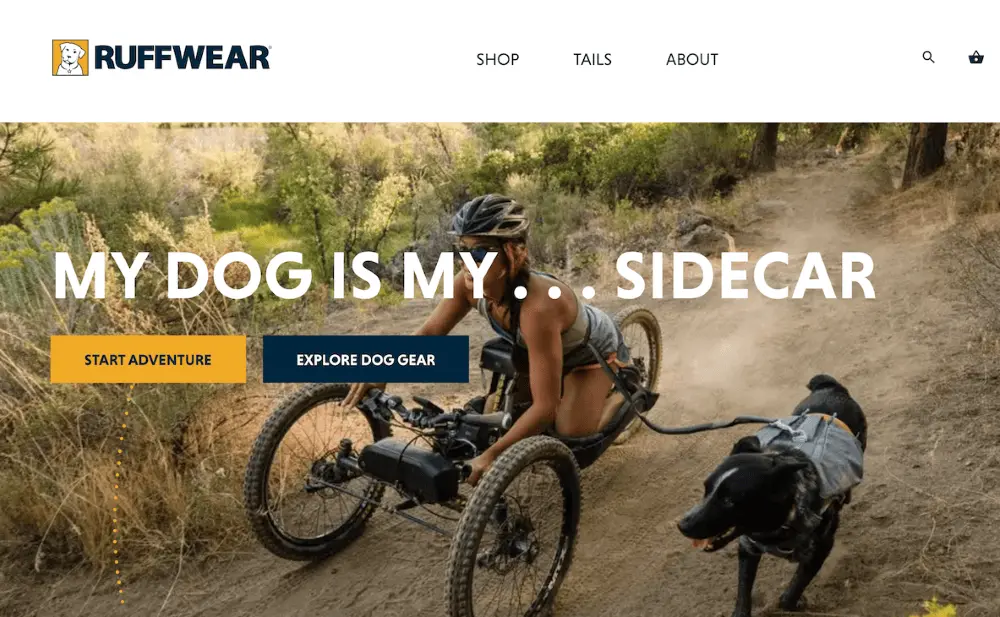
Social proof
Ruffwear leverages customer participation and real-life examples of their product in action with the social media hashtag #mydogismy. Crazy to think that there are already 350K posts of various pups in Ruffwear threads.
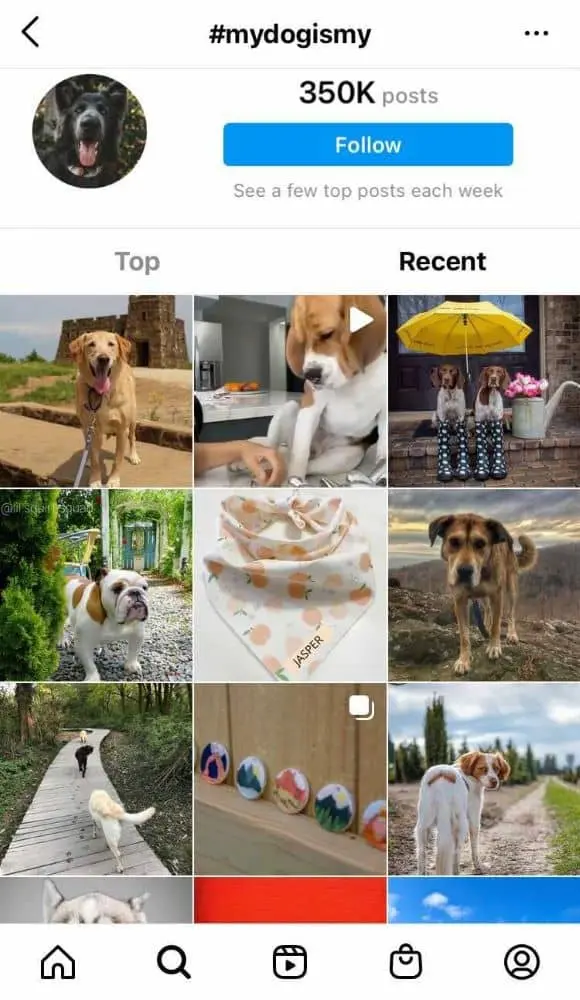
If there’s one takeaway to be had from Ruffwear, it’s that you don’t need a giant marketing budget to create effective content — you just need a creative way to encourage your customers to share their stories.
Overall, pups and people are the heart of Ruffwear’s “My Dog is My” content marketing campaign. By encouraging customers to use the hashtag and highlight their pup, Ruffwear effectively creates a community of Ruffwear-lovers and dog-lovers alike.
>Need more info? Check out measuring marketing effectiveness
6. Cricut’s celebrity endorsement
Hey, you, put down the pinking shears and the granny square afghan! You may think you know DIY, but you have no idea. Cricut takes crafting to the next level and blasts open your world of DIY crafting opportunities with its cutting machines.

Celebrity endorsements can go one of two ways — great or poorly. In Cricut’s case, the brand’s endorsement and collaboration from Zooey Deschanel were pretty stinking spiffy.
A key component of successful celebrity endorsements is knowing your audience. Now, there’s something to be said about an ironic celeb collaboration, but again, that content’s effectiveness depends on your audience. So Cricut’s decision to work with Deschanel was a well-informed and smart one. Because not only does Zooey Deschanel stars as the ultra-crafty Jess in “New Girl,” but Deschanel happens to be quite the craft enthusiast in real life.
7. And Bud Light’s celeb highlight we couldn’t resist
At the end of the day, a Bud Light is just a Bud Light. You can’t change it, dress it up or put lipstick on that ole pig. You know exactly what to expect when you’re drinking a Bud Light, aka a BL Smoothie — cold and gold. Anything else would be absurd.
Bud Light manages its customers’ expectations well. Case in point: Bud Light’s use of Post Malone in the 2020 Superbowl ad for Bud Light Seltzer.
Everyone and their cousin is coming out with an alcoholic seltzer, so Bud Light needed a creative way to stand out in the crowd without alienating its current base and most loyal customers.
And, yes, having ample money in your marketing budget is a pretty beautiful thing, but, more importantly, the Bud Light marketing team enlisted assistance from customers for the final verdict — “the marketing team decided it couldn’t decide which of two Bud Light Seltzer ads it should air during the actual game so it’s letting fans vote between one featuring the rapper Post Malone in a convenience store and another of him in bar.”
So how can you use this inspiration and take action? It’s never a bad idea to brainstorm with your team and identify what it is you like about certain campaigns and then see how you can take those principles and apply them to your own brand’s content. Ask what resonates with your audience and what would surprise them, who supports your product, and what you yourself would actually be interested in creating.
For more tips on creating effective content that resonates, take a peek at our free mini-ebook: Brand templating: How creating more effective content that gets results.
You can’t go anywhere today without being hit with content marketing — and we’re interested in how effective all that content really is. So interested, in fact, that earlier this year we did a survey of professionals in various fields to see how their content is performing and what their attitudes toward content are.
The results, compiled in our Content Effectiveness Report, gave us great insights, as well as a boatload of content marketing statistics to share with the world. Some of these content marketing stats won’t shock you, but others may come as a surprise and get you thinking about how you can improve your own content strategy.
Here are some of the highlights from the report.
Content demand and personalization
One of our top takeaways is that demand for content isn’t going anywhere. Marketers are reliant on content to achieve their goals, but not just any kind of content will do.
People want, and respond best to, personalized content: Meaning content is customized and relevant for them. Unfortunately, not many brands can keep up with the demand.
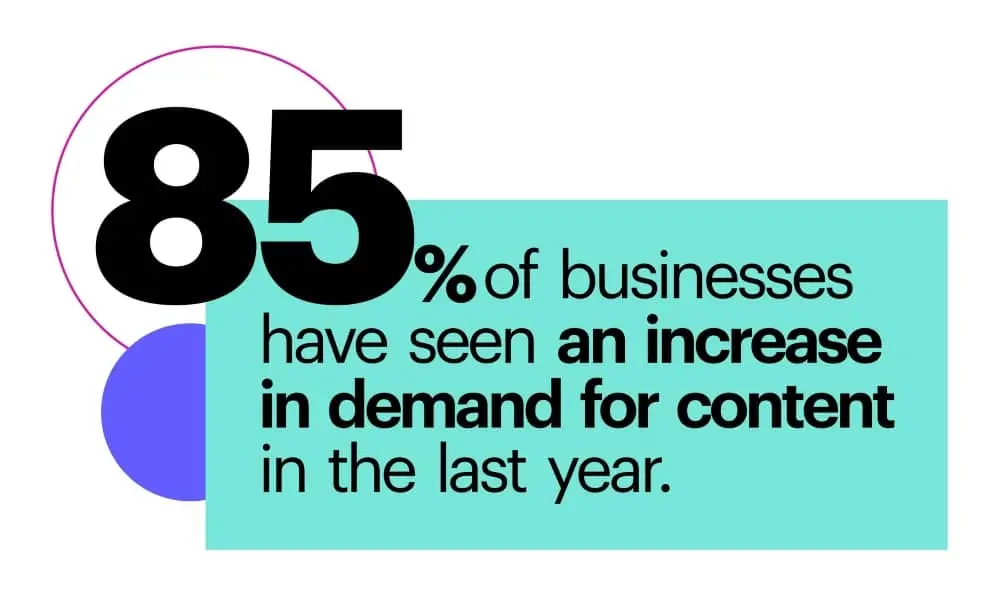
- 85% of businesses have seen an increase in demand for content in the last year.
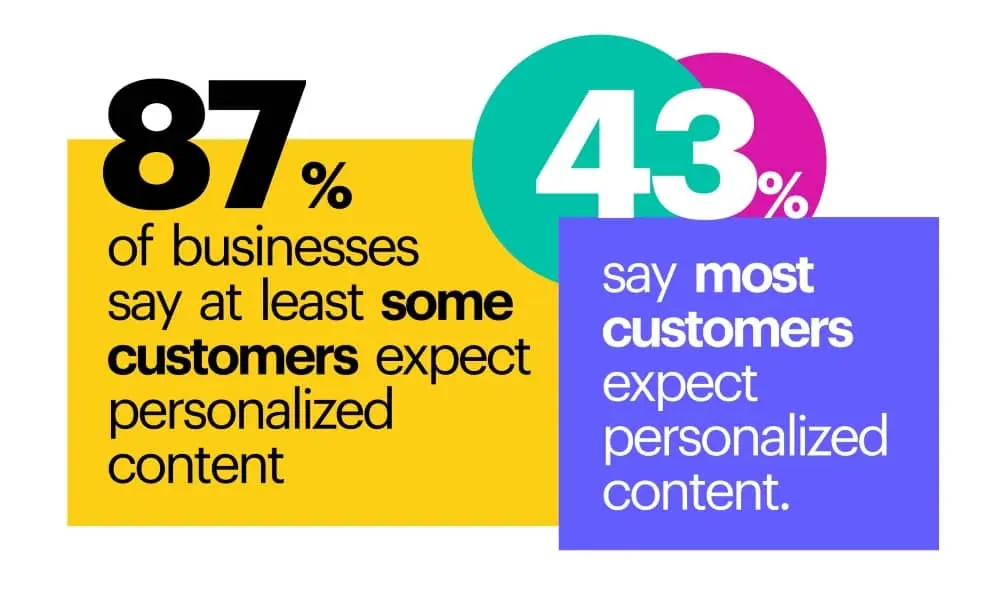
- 87% of businesses say at least some customers expect personalized content, and 43% say most customers expect personalized content.
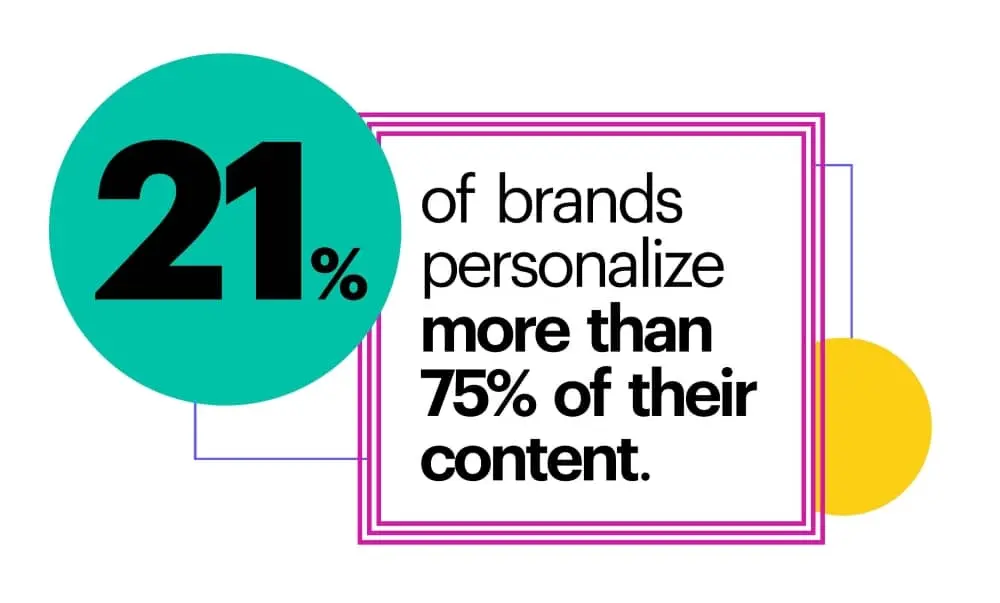
- 21% of brands personalize more than 75% of their content.
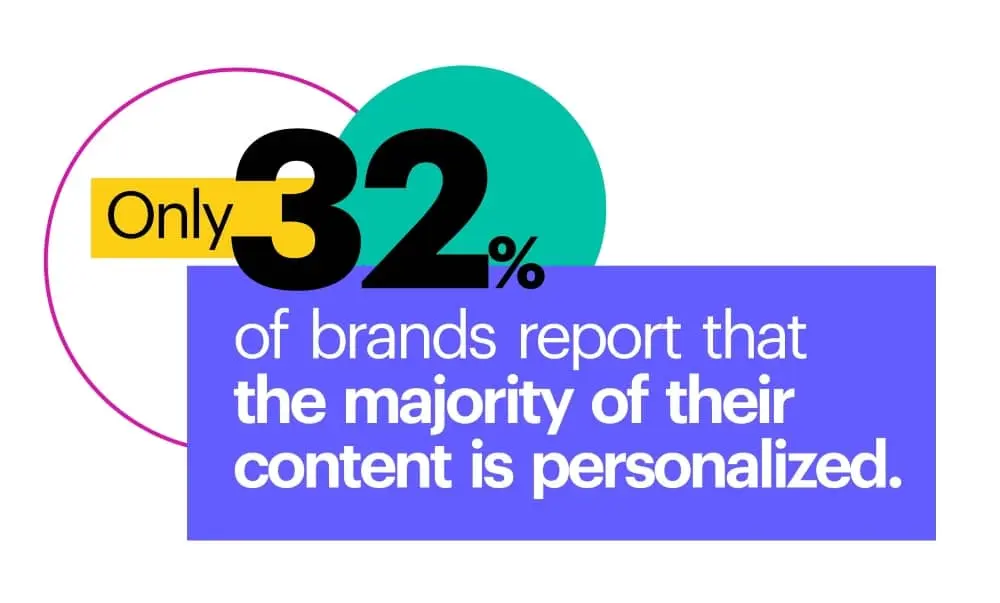
- Only 32% of brands report that the majority of their content is personalized.
Content effectiveness
How and where is content most effective? Most agree that the beginning of the buyer’s journey, in the awareness and consideration stages, is where your content makes the most impact.
It’s widely acknowledged that content can have a major influence on your brand’s success, and most companies believe that their content is relevant and converting customers.
Interestingly, most people think other businesses’ content isn’t relevant, which shows a disconnect between how we perceive ourselves and how others perceive us.
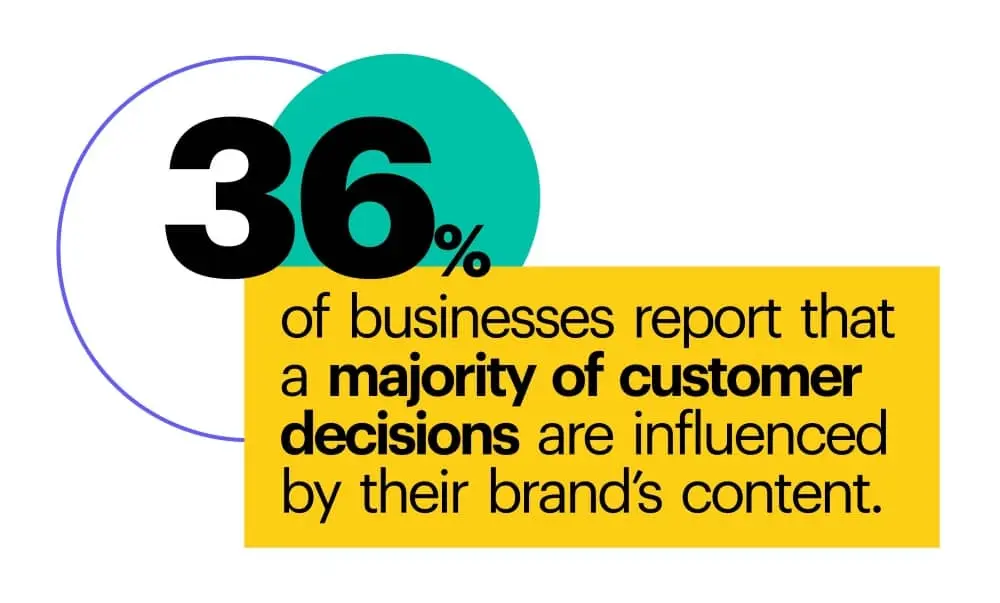
- 36% of businesses report that a majority of customer decisions are influenced by their brand’s content.
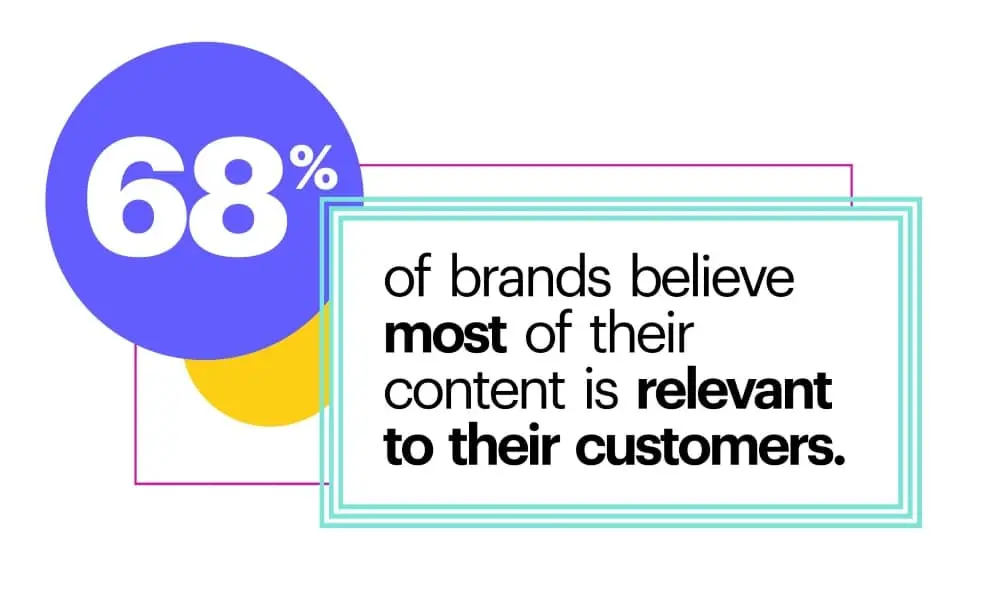
- 68% of brands believe most of their content is relevant to their customers.
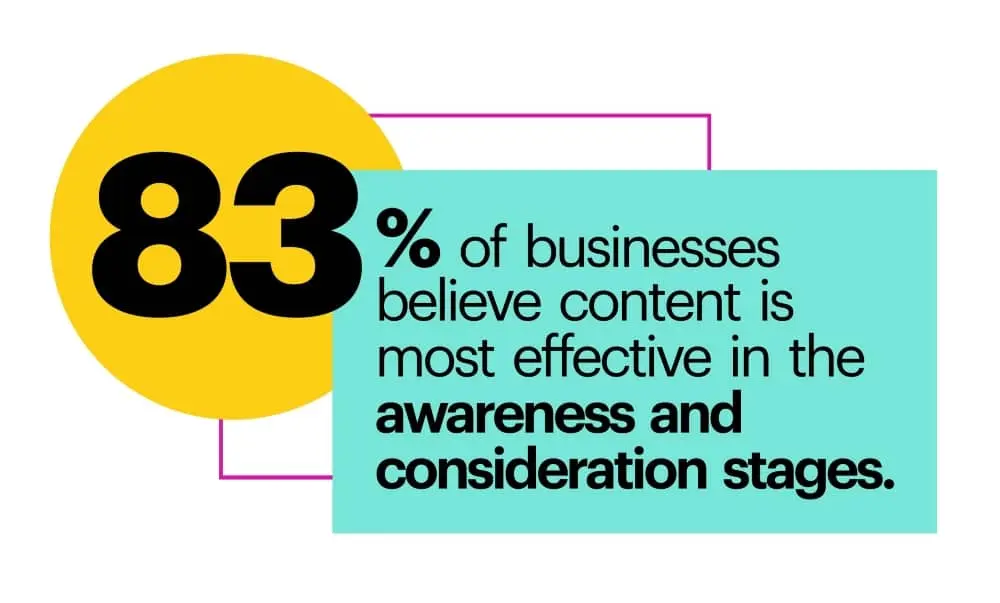
- 83% of businesses believe content is most effective in the awareness and consideration stages.
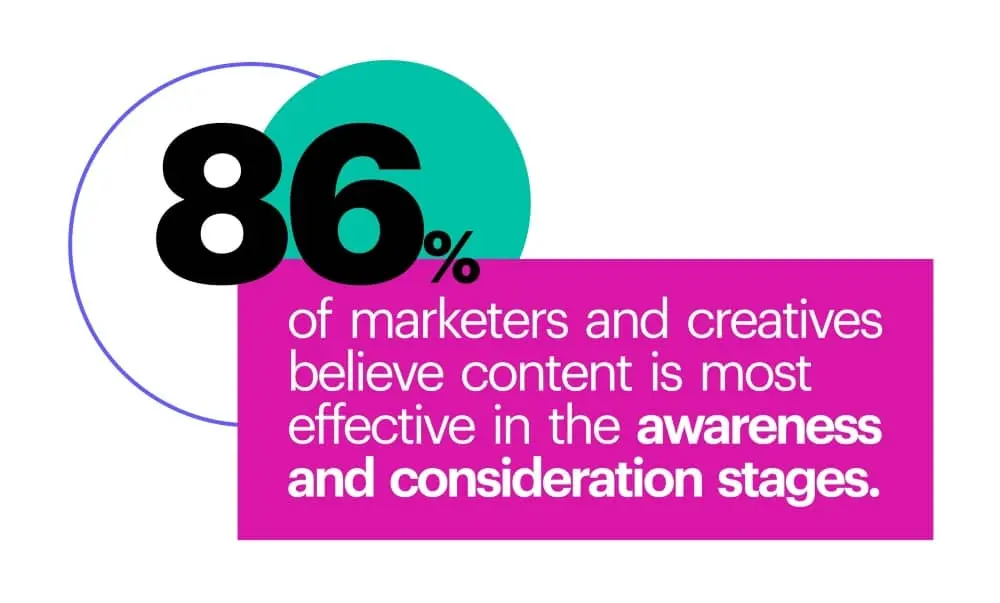
- 86% of marketers and creatives believe content is most effective in the awareness and consideration stages.
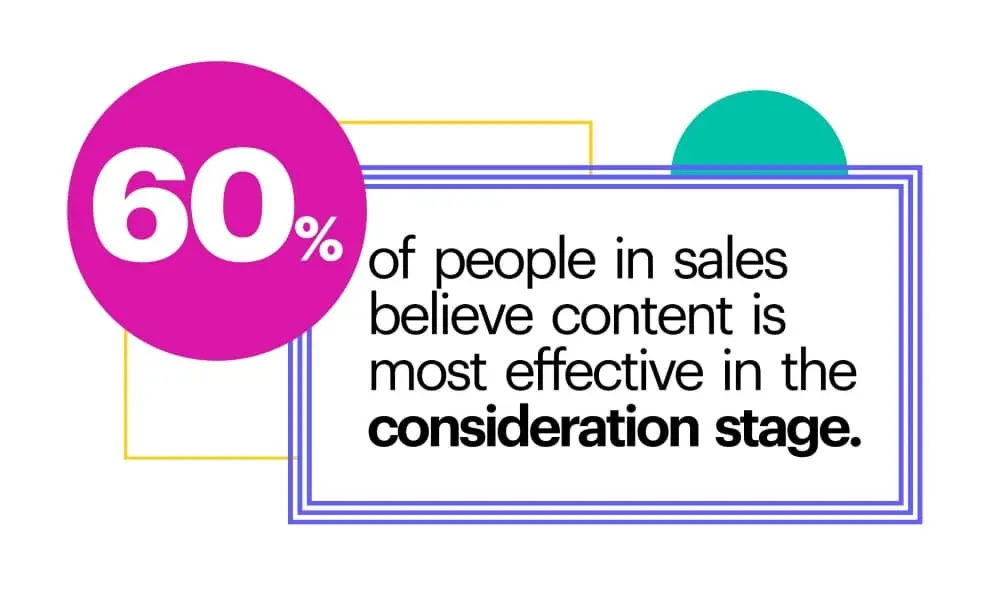
- 60% of people in sales believe content is most effective in the consideration stage.
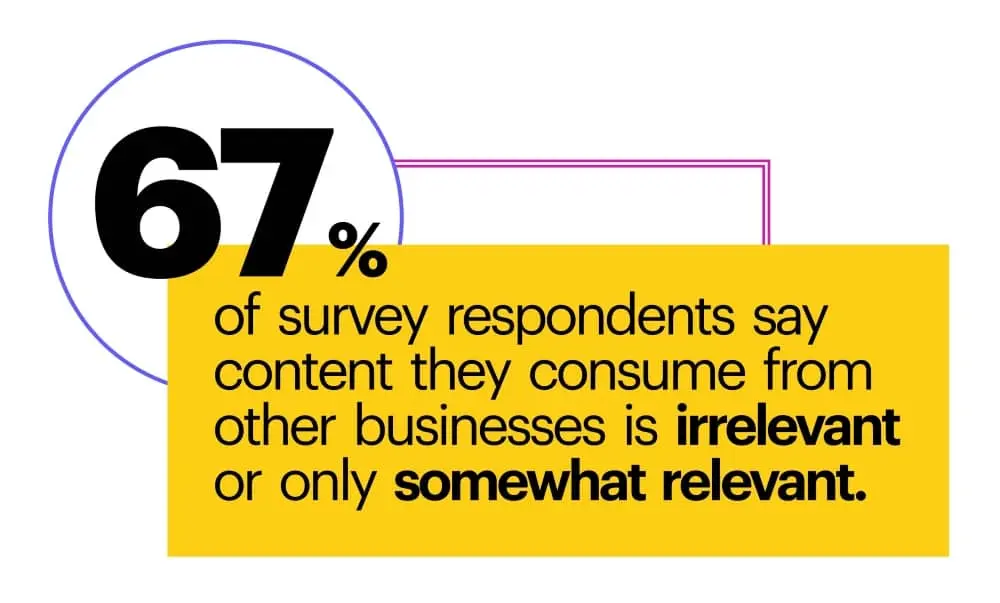
- 67% of survey respondents say content they consume from other businesses is irrelevant or only somewhat relevant.
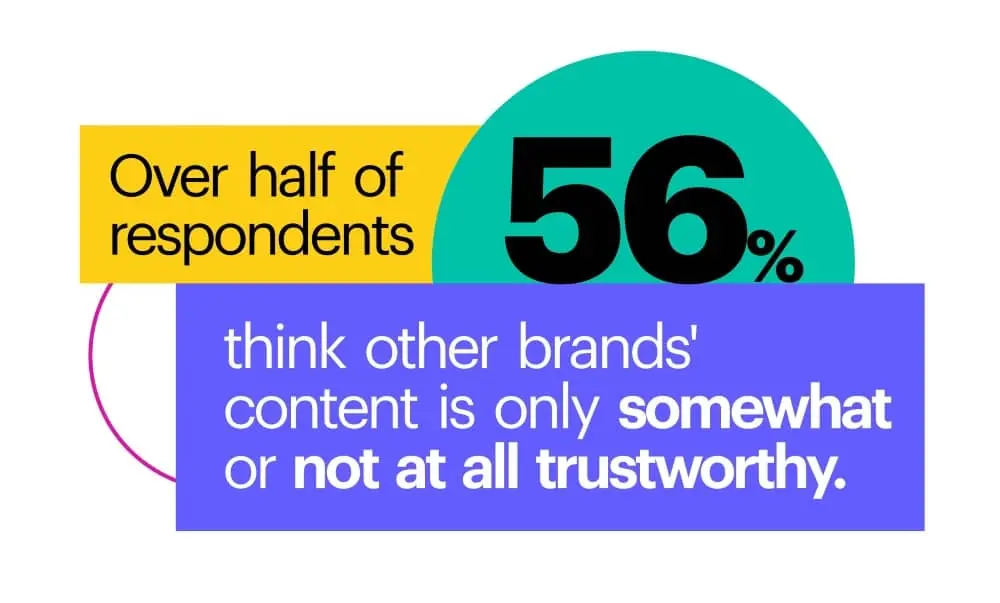
- Over half of respondents (56%) think other brands’ content is only somewhat or not at all trustworthy.
Content ROI
With all the effort we put into creating content, you can’t help but wonder how much that effort is paying off. Your return on investment is definitely something to keep track of, but very few brands do.
Our survey results show that lots of content is being created and going unused. Content use as a metric is also something that often goes unmeasured.
However people are or aren’t tracking their content, survey respondents estimated that content — specifically personalized content — could, on average, increase revenue by a whopping 48%.
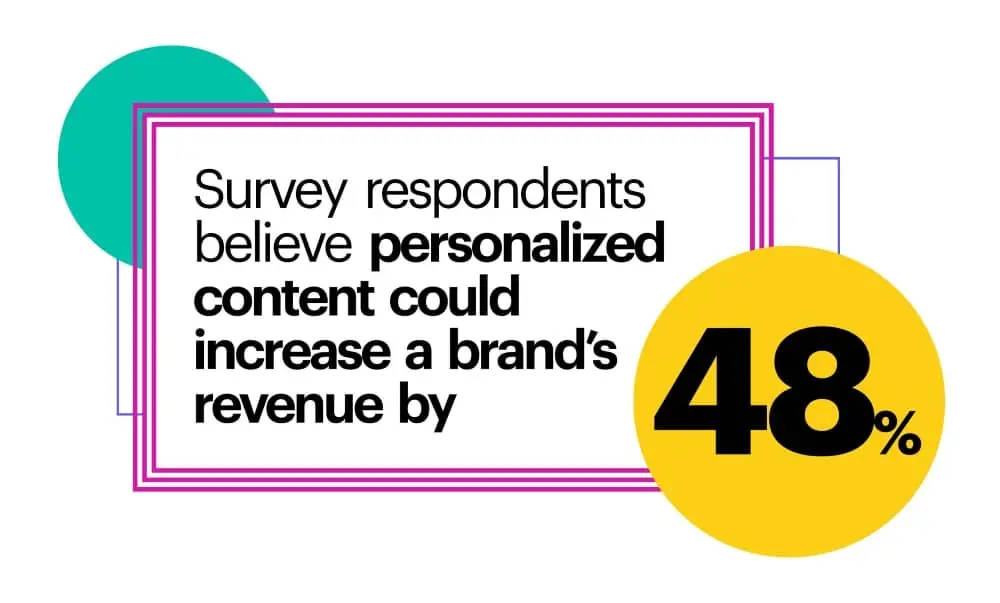
- Survey respondents believe personalized content could increase a brand’s revenue by 48%.
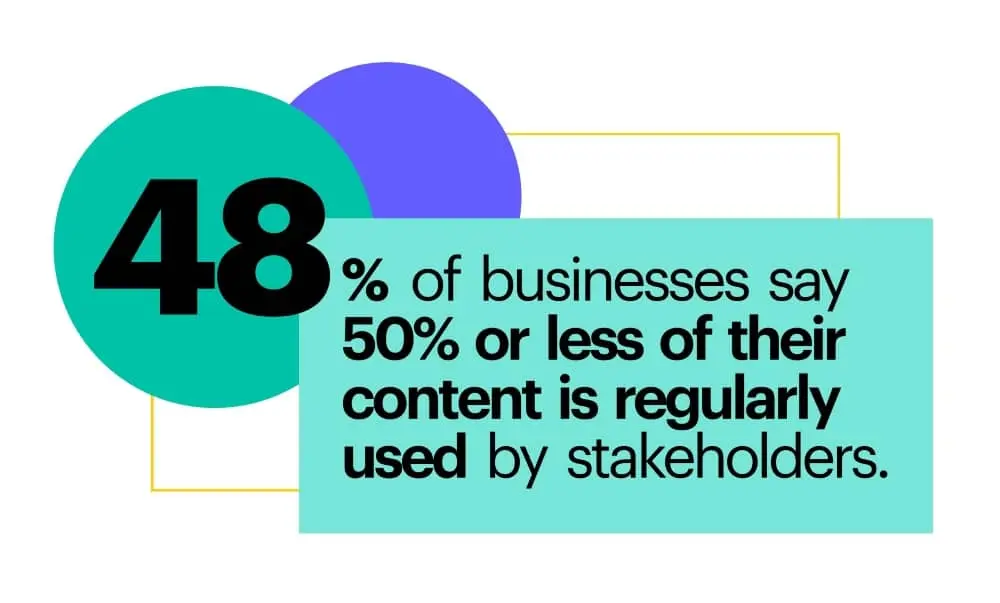
- 48% of businesses say 50% or less of their content is regularly used by stakeholders.
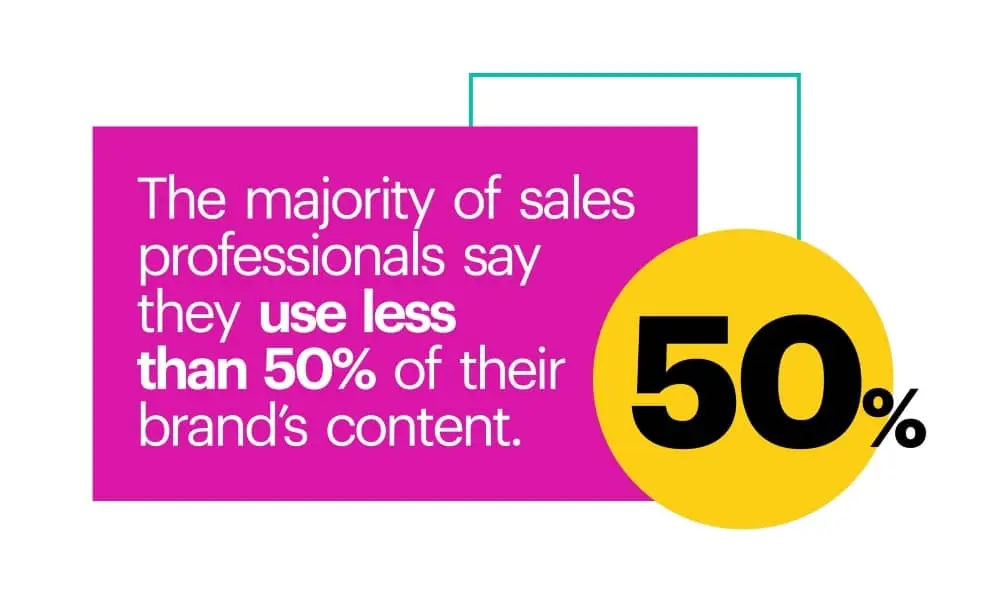
- The majority of sales professionals say they use less than 50% of their brand’s content.
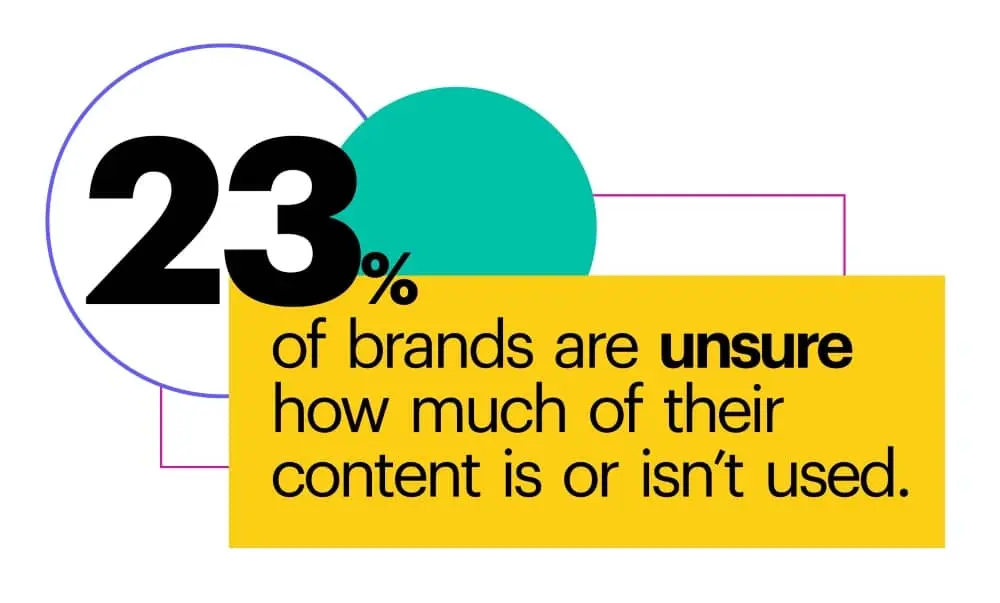
- 23% of brands are unsure how much of their content is or isn’t used.
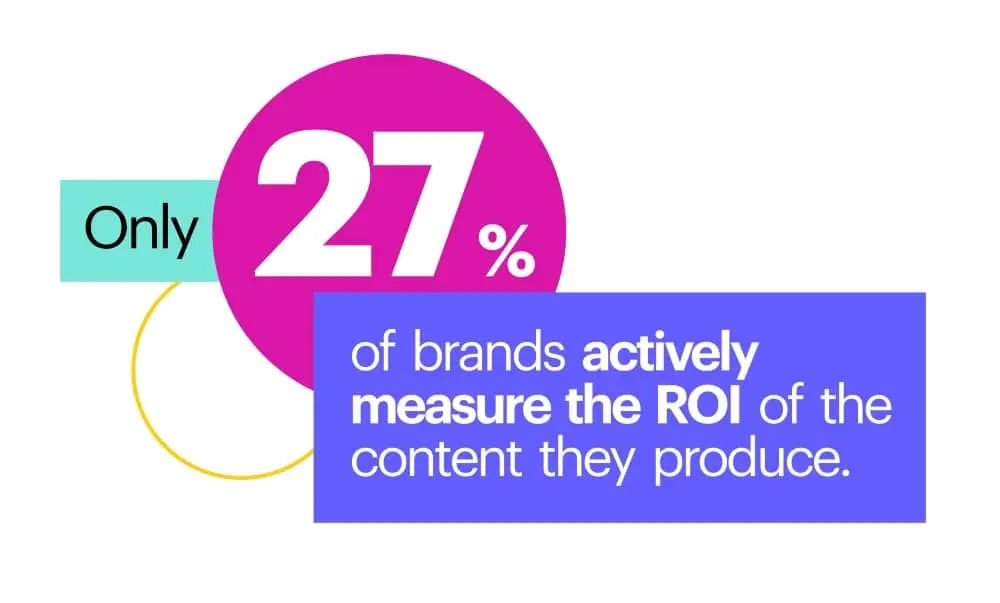
- Only 27% of brands actively measure the ROI of the content they produce.
Content bottlenecks
It’s no secret that it can be hard to get creative requests turned around in a timely manner. Designers are swamped with requests both major and minor, and many brands have turned to templates as a key part of their marketing strategy and a way to mitigate the creation of off-brand content.
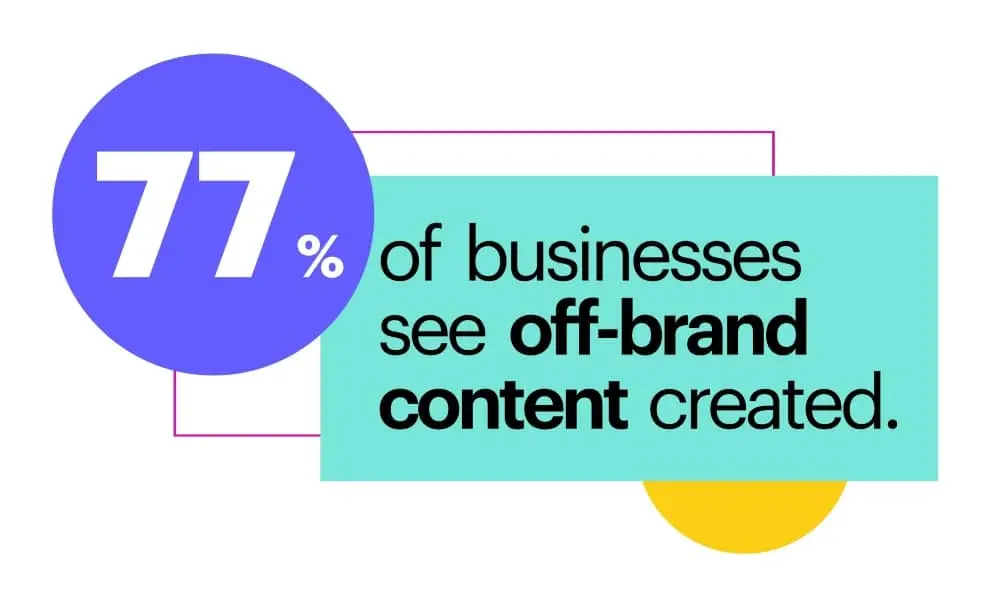
- 77% of businesses see off-brand content created.
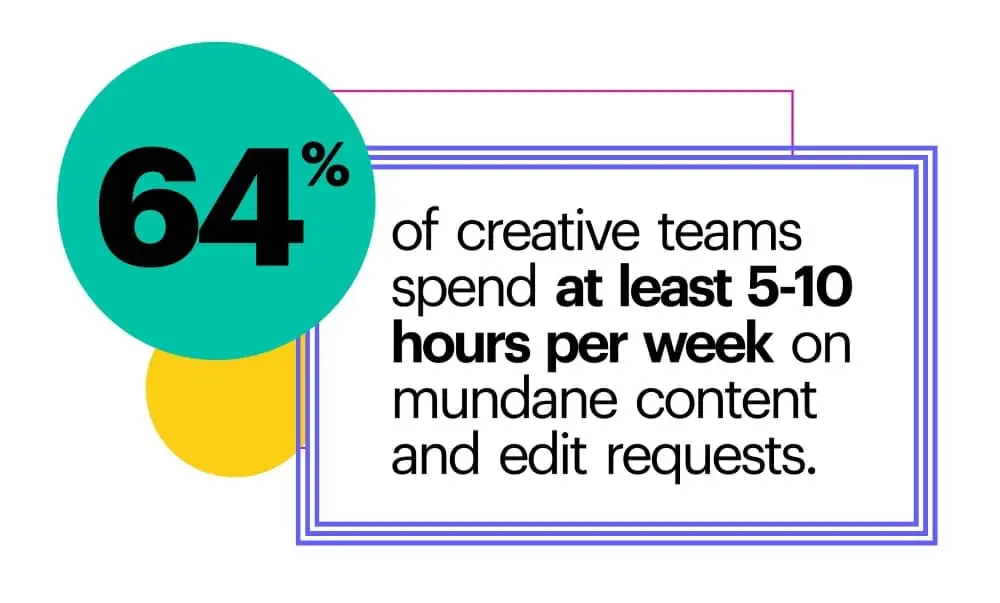
- 64% of creative teams spend at least 5-10 hours per week on mundane content and edit requests.
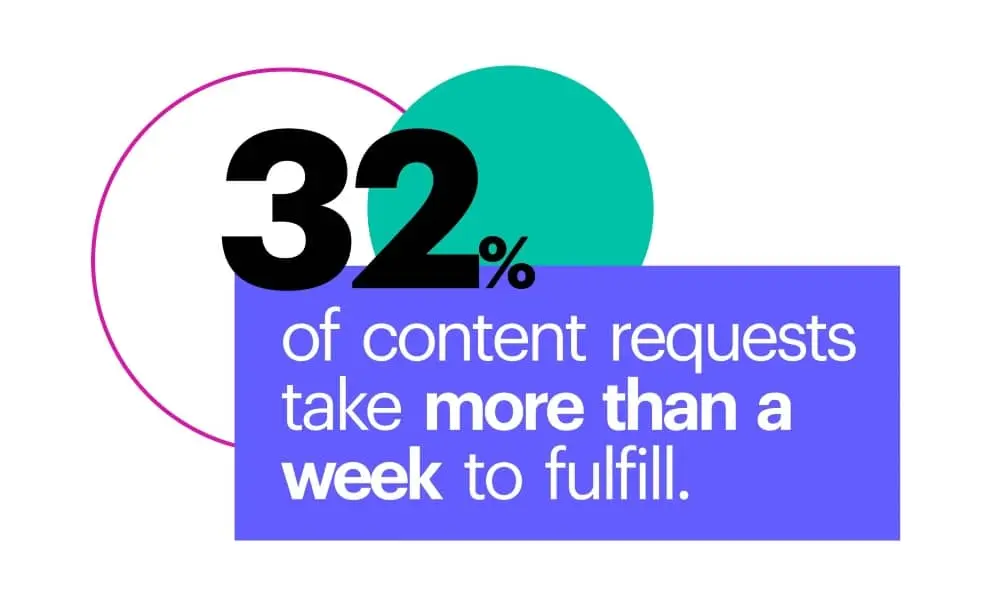
- 32% of content requests take more than a week to fulfill.
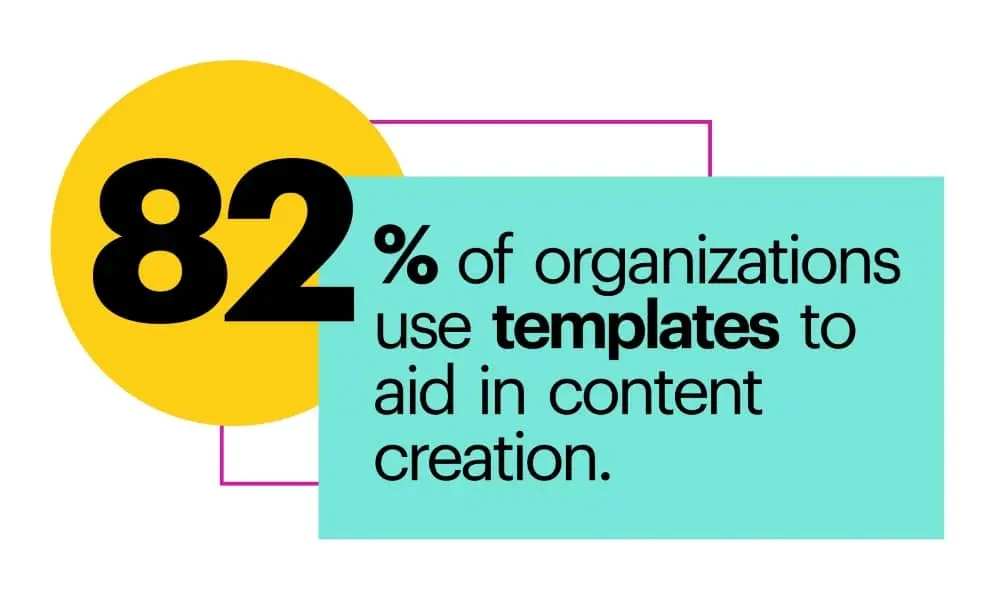
- 82% of organizations use templates to aid in content creation.
If you want more than just the highlights, dive into our full Content Effectiveness Report for all the detailed insights, numbers and content marketing statistics. You’ll find stats broken down by industry, info on what kinds of templates are most popular, and much more detail about how confident brands are about their content.
Medical marketing can be challenging in an online environment of huge healthcare conglomerates, but there are some healthcare marketing strategies that can help your practice stand out in a crowd. Despite some of the high advertising costs for medical terms in the digital marketing space, connecting with prospective patients and promoting your practice doesn’t have to be a costly endeavor.
The following healthcare marketing ideas can help you get beyond traditional healthcare advertising and reach referring physicians and new patients who can expand your practice and ensure success in a highly competitive industry.
10 healthcare marketing ideas and strategies
While marketing in healthcare can seem confusing, healthcare marketing trends closely mirror trends in other industries. The following healthcare marketing ideas distill what works in other digital marketing spaces and apply them in ways that can be a huge benefit to your practice.
1. Create educational content for patients and physicians
People use the internet to stay informed about every aspect of their lives, including health and wellness. You can leverage that interest by creating content that speaks to what potential patients might be concerned about. Fortunately, healthcare content that gets clicks such as those listed below doesn’t always require hiring a content marketing agency.
- Blogs or articles: You can feature educational content on your own website or look for opportunities to guest blog or be featured in other online publications. Guest blogging has the built-in bonus of framing you as an expert in the field, and it can bring your practice to the attention of a fresh audience of patients and other physicians. Getting featured on another site also promotes backlinks to your webpage, which can improve SEO (search engine optimization).
- Videos: You may have heard that video is currently king of social media, and healthcare marketing is no exception. Not only does video drive better ranking on Google, but it can elevate your social media profiles and drive engagement in digital marketing channels like YouTube and Facebook. Check out TikTok to see how creating short, easily digestible videos doesn’t have to be rocket science.
2. Know your competition and your healthcare marketing trends
Researching other medical professionals online can offer some insight into how to make your own practice stand out. Make sure the contact information for your practice, clinic or hospital comes up easily in search and is listed in various directories from Yelp to Yahoo and Google. And don’t forget about industry-specific sites like Healthgrades.
Also be aware of what kinds of digital technology your competitors are offering patients. Health apps and telemedicine are leading the digital healthcare revolution, and utilizing these tools can signal to patients and physicians that you’re an industry leader.
3. Smart medical marketing is about keeping it local
One often overlooked component of healthcare marketing is the clear advantage of focusing on local digital marketing campaigns. Most patients prefer not to travel outside their own communities for check-ups and medical procedures, so localized SEO is crucial.
Showing up at the top of the local search results, sometimes referred to as the Google 3-pack, isn’t as easy as claiming your listing on Google. Ranking top of the pack involves citation building, consistently updating your profile, and snagging plenty of those coveted five-star reviews.
4. Cultivate reviews and be responsive on social media
Speaking of reviews, there are few things that drive positive impressions quite like authentic details of a patient experience. And recall that patient experience is more than whatever medical procedure or physician interaction happens. It’s also about how your practice manages patient anxiety, financial details like billing, and a space that supports open communication.
Soliciting patient feedback via surveys and requesting online reviews are all vital healthcare marketing strategies, but remember not to neglect your social media presence. Staying connected with patients means being present in online spaces that they might consider extensions of their community.
5. Develop consistent branding and digital marketing assets
The digital marketing assets you use for healthcare advertising should be consistent, high-quality messaging that conveys your brand. While you might feel confident about your expertise, online users only know what your healthcare marketing strategies communicate. If your healthcare marketing seems outdated or unprofessional, it can suggest the medical services you offer don’t embrace modern medicine.
When it comes to keeping your healthcare marketing messaging consistent, Lucidpress can help. Check out our brand templating platform that can help hospitals and medical practices spend less time designing quality branded content that attracts new patients.
6. Leverage relationships with existing and previous patients
While attracting new patients is often the focus of many medical practices, don’t forget your existing and previous patients can be a goldmine. Not only can retargeting this group to promote services and procedures be an overlooked component of marketing in healthcare, but rewarding those patients for loyalty can lead to increased satisfaction.
Both other physicians and previous patients can be your best sources for referrals, so make sure outreach to this group is a central focus of your healthcare marketing strategies.
7. Put the hospitality in hospital marketing strategies with an open house
Both virtual and in-person open houses can help increase the visibility of your practice and help it become a cornerstone of the community. When someone asks for a referral, you want your practice to be top of mind, even if those in your community haven’t been patients.
Unfortunately, “build it and they will come” isn’t usually how healthcare marketing works. But you can foster a more successful event by offering incentives. Think about how to create connections and leverage relationships with community leaders to encourage participation. Don’t hesitate to offer the traditional incentives people usually enjoy at open houses, such as great food and fun activities for families.
8. Optimize your website to provide a better healthcare marketing experience
You’re trying to market your services, but visitors to your website are probably just trying to find information quickly. A good user experience on your website sets a precedent that you’re a provider that cares about patient support and customer service. Think of your website as the lobby of your practice. Does it reflect how you’d like patients to be greeted and the information you want them to have access to upfront?
Here are a few things to consider when evaluating the user experience on your website.
- Does your website work well on mobile devices?
Going mobile can be tricky, but your website should adjust automatically to accommodate different browsers and devices. It should also have fonts that are easy to scan in sizes that don’t need to be adjusted for mobile viewing.
- How are users coming into your website?
Depending on your ranking in Google and which terms are driving search results, your main page might not be how patients are finding your website. Conduct an audit to determine how users are finding you online and what page they land on when they arrive at your website.
- Does your website load quickly?
Large images and other assets that aren’t optimized can lead to long load times for pages on your site. Think of the effect as similar to that of the waiting room at your clinic or the hospital. If the wait time is too long, patients will simply leave and go elsewhere.
9. Effective communication is one of the best healthcare marketing strategies
When every team member is communicating effectively and consistently, it can drastically improve the patient experience and healthcare outcomes. In fact, communication errors were the root cause of nearly a third of medical malpractice suits, according to a 2016 study from CRICO Strategies.
But overcoming bottlenecks, department silos and other dynamics can often make cleaning up clinic and hospital communication challenging. Leveraging technology to provide channels for two-way consultation, implementing team huddles, templatizing patient communication, and promoting cross-functional collaboration are all solid strategies for improving your clinic or hospital communication.
10. Try a physician liaison
Don’t wait until all else fails to explore an outside perspective. Physician liaisons specialize in growing referral programs and work to help your medical practice make the right connections in the community.
If you don’t have the budget to devote to a formal liaison, identify someone from your healthcare marketing team to work on forging relationships with physicians and beefing up your referral program. A little extra focus on these relationships can pay big dividends in growing your patient base.
Evaluate the return on investment you currently get from healthcare advertising and consider whether exploring one or several of these healthcare marketing ideas could be the right move for your practice. In today’s fast-paced, social media-focused environment, traditional medical marketing approaches may need an update to keep pace in an increasingly competitive industry.
While other industries raced to embrace social media platforms to connect with customers and create loyal brand followings, healthcare social media marketing has been more tentative. Many hospitals and healthcare organizations cited concerns like HIPAA and professionalism as reasons not to be actively involved in digital marketing on social media channels.
However, social media healthcare marketing has come a long way in the last few years and is beginning to transform how we interact with and access health information online. Healthcare marketing teams have recognized the outsized role social media can play in driving conversations on topics like preventative care and public health measures.
Why social media healthcare marketing matters
From helping navigate healthcare crises to making patients feel more comfortable seeking care, healthcare organizations are beginning to use their social media presence to connect in meaningful ways. Here are just a few reasons healthcare social media marketing content matters.
Creating a sense of community
Communities aren’t just physical spaces anymore. Healthcare organizations that invest in a robust healthcare social media marketing strategy can become trusted members of an online community by being present and interacting with patients.
Connecting with a new audience
Hospitals and clinics used to exclusively rely on word-of-mouth referrals or simply being the closest local provider to win over patients. Today’s digital marketing and social media channels allow hospitals and clinics to reach new audiences and build a national brand.
Establishing trust in online spaces
One of the unspoken rules of the internet is if you don’t answer the question, someone else will. As most providers know, Dr. Google is not a good substitute for medical expertise. Healthcare social media channels are fantastic avenues to answer patients’ frequently asked health questions, provide professional advice, and correct health misinformation.
7 tips for effective healthcare social media marketing
Using social media channels to market your healthcare organization can be a tricky balancing act. Unlike businesses that can showcase products and strut their stuff openly, hospitals and clinics have to be wary about HIPAA concerns and medical ethics. However, that doesn’t mean social media platforms can’t be leveraged in the following ways to benefit both your organization and the public.
1. Focus on the patient experience
Going behind the scenes and highlighting the patient experience can be a profound way to connect to followers. It also offers the opportunity to indulge in a little healthcare social media marketing by showing off the expertise and services your organization provides. Take, for instance, this Facebook post from New York-Presbyterian Hospital that showcases the incredible neonatal care a patient received and how it helped her triumph over the odds.
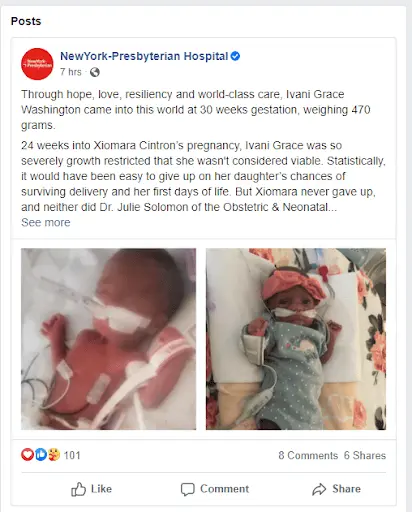
When you do a deep dive on a patient experience, be sure you have their express permission to share that content or to amplify social media posts. Shout-outs for other user-generated content like reviews also demonstrate you’re engaging in social listening and can go a long way toward making patients feel seen and heard.
2. Combat misinformation
The proliferation of health misinformation on social media cannot be overstated. A 2021 study from the Journal of Medical Internet Research indicates as many as 87% of social media users are affected by health misinformation on the platforms they frequent. Reputable medical organizations can play a role in correcting and minimizing the harm misinformation causes.
Social media healthcare marketing creates space for trusted voices of medical providers to deliver reassurance and fact-based medical advice. For instance, the American Academy of Pediatrics has long been considered an authority in pediatric medicine, and its advocacy for vaccination is the cornerstone of a powerful and persuasive public health campaign.

3. Educate the public
Alongside fighting the spread of misinformation, healthcare social media marketing content is an effective educational tool. Keeping up with research and helping the public understand its relevance to current practice goes a long way toward establishing your credibility on social media.
Organizations like Cedars-Sinai that have their own health information databases can use social media channels to not only distribute these articles but also drive engagement with the hospital’s website and improve search engine rankings.
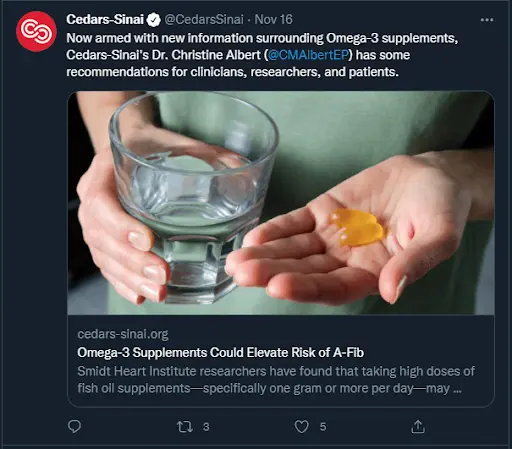
4. Shine a light on preventative care
Raising awareness is one of the crucial ways healthcare organizations have an outsized impact on social media. But it’s also an effective means to market preventative services that can really make a difference in medical outcomes. Take, for instance, the World Health Organization’s campaign to end cervical cancer by promoting screenings for 70% of women around the world.
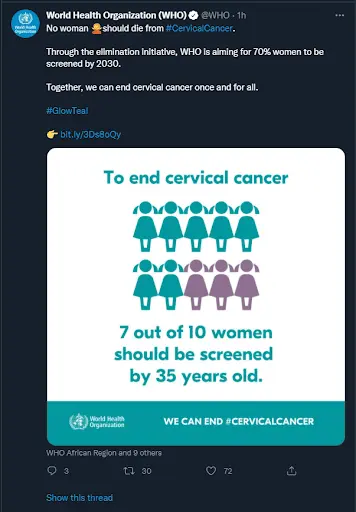
Preventative care campaigns are also an excellent opportunity to create a partnership with another healthcare organization. Tackling the social media healthcare marketing campaign together can amplify the reach of your content and expand your audience.
5. Become a trusted source
As you invest in healthcare social media marketing, you’ll want to pay special attention to becoming a source of trusted healthcare information and an authoritative voice in the industry. The best way to accomplish this is to look for ways to highlight the fantastic talent within your organization.
The Mayo Clinic is renowned for its social media prowess, and it’s built a powerhouse brand because of it. The secret sauce to Mayo Clinic’s success is to lean into its world-class doctors and cutting-edge researchers as the face of the organization. They are repeatedly put front and center in social media channels, allowing these trusted professionals to reach millions of followers.

6. Create a community of support
Social media platforms are online communities, and as such, they can be tools to create support for patients and their families. Even if your healthcare organization doesn’t have the bandwidth to support patient communities as part of its healthcare social media marketing strategy, you can act as a catalyst to connect people to resources.
This approach is particularly helpful for hospitals and clinics that treat a large community of patients with chronic conditions and life-threatening diseases such as cancer. By giving patients the means to connect, you create a sense of community between your providers, patients, and the families you serve.
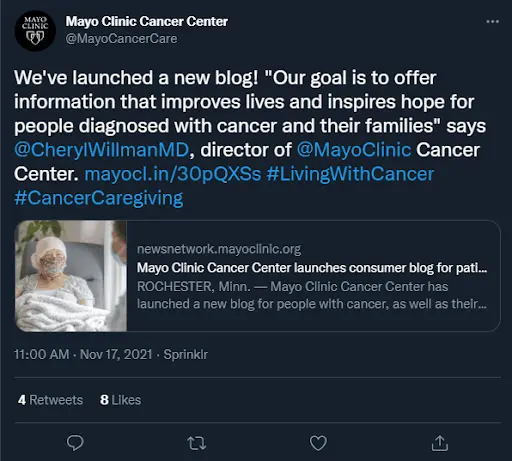
7. Destigmatize sensitive topics
Some healthcare topics can be a little sticky on social media, but allowing your providers to wade into those waters as trusted professionals can destigmatize important topics. And it serves your social media healthcare marketing strategy both by establishing trust and encouraging your followers to become more involved.
Doctors without Borders consistently exceeds fundraising goals, and it does so in part because the organization’s social media presence has a commitment to advocacy and tackling stigmatized topics with fact-based health advice.
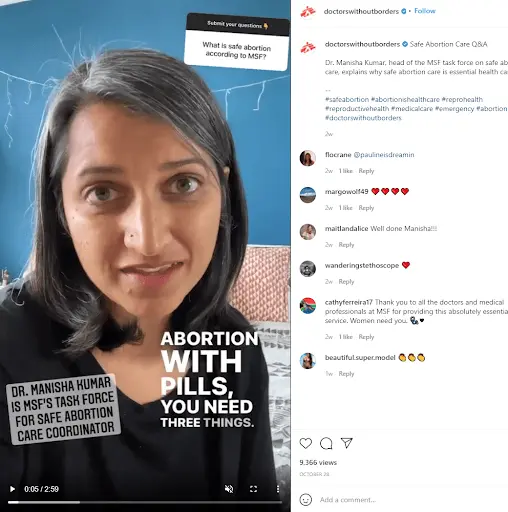
So while healthcare orgs can’t fill their social media timelines with brand ambassador endorsements or swag giveaways, there is a real opportunity for hospitals and clinics to provide trusted, sound medical advice from licensed practitioners. This approach can create healthcare social media marketing content that cements your healthcare brand’s reputation, reaches new patients, and expands your influence both online and within your local community.
Knock your healthcare social media marketing goals out of the park with our free ebook.
Once upon a time, it seemed product catalogs, especially print versions, were headed towards the dustbin of history. While booming e-commerce sites made paging through a glossy product spread seem passé, digital and print product catalogs are now making a big comeback for a variety of reasons.
Digital product catalogs put a wealth of information and interaction at your customers’ fingertips, while print catalogs remain useful tools to elevate your brand. Product catalogs of both varieties continue to be a cornerstone of successful marketing campaigns by teasing new product lines and shaping a better shopping experience.
Our guide to product catalogs will help you determine the value to your business and decide how to create a product catalog without breaking your budget.
5 reasons your brand needs a product catalog
If you’re worried a product catalog isn’t worth the investment, consider a few statistics from the USPS. The results of a study conducted by the US mail service determined that 92% of households take time to sort through the mail specifically to keep catalogs. And on average, a person will spend as long as 30 minutes paging through a single catalog of interest.
Those compelling stats indicate product catalogs hold their value and can provide a captive audience your brand doesn’t want to miss out on. Here are a few other reasons both digital and print catalogs are compelling marketing tools that offer much more than product eye candy.
Already convinced? Skip over to our catalog creator to try some templates on for size.
1. Catalogs are a chance to show off your style
Pulling together stunning visuals for glossy full-page layouts is also a chance to reshape your brand’s style. Product catalogs can help you branch out into something new, show off cutting-edge items from a new line, or demonstrate how your product fits into consumers’ everyday lives. Both digital and print catalogs offer a chance to put your brand’s style, voice, and values front and center.
2. Catalogs are a tactile approach that pays off
Don’t underestimate the value of putting something tangible into people’s hands or getting them into the driver’s seat of the shopping experience. There is still an advantage to seeing products in print or being able to click through for more details. It can also propel prospective customers to seek out your retail or online stores for more information. This is especially true for millennials, who have an affinity for old-school, traditional print catalogs.
3. Product catalogs can be data goldmines
Both digital and print product catalogs can be a fantastic opportunity to get more data about your customers. Gather email addresses for mailing lists or embed QR codes to track how and where customers are learning about your products. Create social media campaigns in concert with catalog launches to increase conversions and demonstrate which channels are effective platforms for your brand.
4. Catalogs help consumers commit
Product catalogs are like one-on-one window shopping. They offer a glimpse into a lifestyle or an experience that customers can try on for size. And they can be effective marketing strategies provided they offer a simple path towards purchase. Research shows product catalogs can shorten the buying journey, leading to increased brand loyalty and customers who come back for more.
5. Product catalogs aren’t just for potential customers
And last but not least, product catalogs aren’t just for customers. They can assist in improving the sales process and act as a reference and training tool for new employees. This is especially true of B2B businesses who utilize product catalogs to shape new product offerings and pivot clients toward upgrading to the new lines of products.
How to create a product catalog
Creating a product catalog doesn’t have to be a costly creative endeavor. And where you start in laying out the pages for your catalog depends on where you want to end up. What do you want your product catalog to accomplish? What do you have to say to customers?
Once you’ve brainstormed the marketing goals of your catalog, consider taking the following steps to flesh out your pages and help your product line put its best foot forward.
Don’t start from scratch. Seriously.
While there’s something to be said for ingenuity, you don’t have to start from scratch to create a compelling catalog concept. Grab customizable catalog templates like the ones Lucidpress offers and start tinkering.
You’ll find basic components in most product catalog templates like cover and product pages, but you also don’t have to rely on traditional layouts to make an impact. Dynamic product catalog templates let you mock up something basic and then add or drop elements as the project comes into focus.
Define the basics before you begin
Customizable catalog templates offer a lot of flexibility, but you should define the basics before you dive into the details. Ideally, you want a template that meets specific parameters you have in mind for dimensions, length, and quality of the images for digital catalogs. All those components can have consequences for mailing costs and page-loading times.
Making sure you’ve dialed in the basics keeps you from having to head back to the drawing board later when your template doesn’t quite fit your specifications. If those details sound a little overwhelming, stick with standard sizes or call your printer to clarify expectations regarding product catalogs.
Gather the details
Product catalogs don’t get conjured out of thin air. You’ll need to define what’s going into the catalog and start gathering product details. In addition to item numbers and cost, consider compiling some extras like reviews, dimensions, pictures, and testimonials so you have everything handy in one place.
Some details that shouldn’t get left by the wayside are colors, fonts, and other branding elements that are consistent with your existing marketing materials. If you don’t have a brand style guide, it’s worth developing one before you dig into your product catalog.
Professional photography is a must
The entire purpose of a product catalog is to highlight your products in splashy, full-color digital or print spreads. That means high-quality, professional photography has to take center stage in your catalog. Keep in mind that a variety of images will be needed, from sharp close-ups of products to larger lifestyle photos that set the mood.
Professional photography doesn’t always mean carefully staged images. Decide if highly stylized photos fit your brand or if your customers prefer more relatable images. Depicting your products in luxurious, pristine settings may make your brand seem out of reach or unattainable to some customers.
Make the most of character counts
Product catalogs are at their best when they let the photography do the talking. Plan on keeping product descriptions as concise as possible and set your character counts in advance. Use some descriptive language selectively to enhance the vibe of your catalog, but make sure every word is pulling its weight.
While it makes sense for most catalogs to use words sparingly, that’s not always the case for every brand. The infamous J. Peterman Company’s lavish catalog product descriptions are a great example of how wordiness can become your forte. If your brand has a long-winded tradition that sits well with customers, find a template that makes room for the verbose.
Say something about your brand
A product catalog should speak volumes about your brand’s story. Every choice you make about what goes into it and how it looks reflects what you want customers to feel about your products. The difference between a Tupperware catalog and a luxury clothing catalog lies less in the layout and more in the images, colors, and style choices.
Shoot for lofty goals that elevate the lives of consumers or a more down-to-earth strategy that strives to make products a seamless part of your customer’s day. Once you decide what you want people to feel when they thumb or click through your pages, look through the catalog and make sure both the layout and every image deliver on that expectation.
Make it easy to navigate and share
A pretty product catalog doesn’t do much for your bottom line if nobody sees it. Consider how your catalog will be consumed and how you can make it easier to share. Who is your audience? Where will they be engaging with your product catalog, and how can you make it easier for them to make purchases?
For print catalogs, that means providing an easy way to scan the catalog and find products online. Digital catalogs make it easy to make online purchases, but consider how you might help customers who need to try an item on or make sure it will fit their space before they purchase.
Product catalogs can be a cornerstone of a brand’s marketing approach, but they don’t have to be a huge investment of creative capital. Get organized, find a template, and start customizing a catalog to help your product line put your brand’s best face forward.
Download our free catalog templates and get started.
If you’re trying to figure out how to create an ebook without getting overwhelmed, you’ve come to the right place. While ebooks may take a little extra effort to produce, learning how to create a branded ebook can provide a lot of bang for your marketing buck.
Statista analysis indicates ebooks are still nibbling steadily away at the dominance of print books, with an expected growth of 5% in the coming year. Businesses that have invested in creating their own ebooks discover they are a powerhouse for lead generation, search engine optimization, and establishing brands as thought leaders within an industry.
One of the clear advantages of learning how to write an ebook comes from the in-depth content it provides and the way it establishes your organization as a voice of expertise in the field. Ebooks are also great ways to gain external links and visibility among your competitors, generating buzz and amplifying your brand. And while there may be an investment of resources up front in learning how to make an ebook, they are low-cost to produce and easy to templatize.
How to create an ebook in 10 steps
If learning how to create an ebook is the current project on your plate, you may feel you’ve bitten off more than you can chew. The idea of writing an entire book can be overwhelming no matter the topic, but it’s much easier to tackle with a plan of attack in place. We’ve captured the steps for how to write an ebook below, but if you’re already familiar, you can jump over to our ebook creator and get started.
1. Identify your ebook topic
Chances are, if you’ve already jumped into the deep end of how to make an ebook, you have a topic in mind. But it’s worth exploring a few different ebook ideas to ensure the one you’re leaning into is the best fit for you or your organization.
Part of picking a topic is not only making sure the topic is of interest but that it supports the kind of deep-dive an ebook provides. And if your main goal in learning how to create an ebook is to generate leads, consult with your sales team to make sure the topic you’re writing about will turn up the kinds of leads they’re looking for.
Before you start throwing darts at a list of potential ebook titles, take a moment to identify the type of ebook you want to create. Here are just a few general categories of ebooks to consider.
- Research and surveys: Conducting your own research and sharing your findings can become the basis of an ebook and provides additional value to your readers.
- Case studies: These types of ebooks can be powerful tools for B2B marketing because they show your products or services in action in the real world.
- Interviews: Because a single interview doesn’t provide enough fodder for an ebook, partner with a few industry leaders to create an ebook based on their insights.
- Product demonstration: If you have a complex product or service, learning how to make an ebook that encompasses all aspects of that product is a good place to start.
- How-to guide: Learning how to create an ebook that is a step-by-step guide can take many forms, from stringing together a series of long-form blog posts to using a shorter piece of popular content as a launchpad for a deeper dive.
And for now, don’t worry about the title. Just get lots of input from inside your organization and from customers about what’s of interest to them. Generate a list of potential ebook topics and then pursue those that have the most potential.
2. Outline your ebook
While there are no hard and fast rules about how to create an ebook, usually the structure is similar to that of a novel or a textbook. Many ebooks choose to utilize chapters to organize content, or at the very least sections, that segment the information into subtopics. Outlines usually begin by breaking down your topic and deciding how granular you want to get in each section.
Most ebooks also contain an introduction that frames the topic, supporting images throughout, and a resource section or footnotes. One of the advantages of thinking intentionally about how to write an ebook is that creating an outline allows you to identify quotes to highlight or feature. It can also spark ideas about how to utilize or recycle blog or website content for your ebook.
3. Plan your ebook visuals
Thinking ahead about how to make your ebook doesn’t mean you have to know the exact layout right now. But you should consider what visuals you want to include in which sections. Some images in your ebook may serve to break up text and create a more visually appealing page. Others may specifically complement or enhance the text, such as charts, infographics, and more.
As you outline, consider creating a list of assets you’ll need, from stock photography to graphic design elements. If you do need some charts or infographics, consider if those resources already exist or if you’ll have to create them. Gathering other marketing tools such as a brand style guide can also be helpful so you can choose visuals and other design elements that align with your branding.
4. Draft your ebook
This can be the most intimidating step in the process of how to write an ebook, but at some point, you simply have to sit down and write. Tackle a section at a time and work through your ebook outline point by point. Focus on simple language that conveys your meaning effectively, and try to keep your approach to each section consistent.
If you’ve decided to recycle some content from your blog or website, focus on making sure it aligns with the rest of the ebook both in terms of formatting and tone. Transitions can be especially tricky, so pay attention to how the segways between paragraphs and sections are written. Reusing some phrases or word choices from previous paragraphs can help smooth transitions for readers, but take care not to sound too redundant.
5. Edit your ebook
Editing is an essential piece of how to make an ebook one your customers will want to read. As Ralph Waldo Emerson once said, “Let the reader find that he cannot afford to omit any line of your writing because you have omitted every word that he can spare.” If your first draft was too wordy or rambled, editing is the chance to clean it up and make it concise.
While some writers find they can edit their own work, it’s best to get a second, third, and even fourth opinion. Even if you use editing software such as Grammarly, you’ll discover there is still plenty of room for error that the eye of an experienced editor will catch. Remember to allow some additional time in this step of how to create an ebook so you have the chance to incorporate plenty of feedback.
6. Design your ebook
If you’ve got your content written and visuals identified, now is the time to start bringing those elements together to design your ebook. In this step of the process, Lucidpress ebook templates are your best friend. Look to download one that supports the type of ebook you want to publish, and then start customizing.
One of the crucial parts of ebook design is to focus on readability. Break up long paragraphs into shorter ones that are easier to scan. Create more dynamic pages by featuring pull quotes or statistics as design elements. And remember that graphic design is as much about what isn’t on the page as what is. Strive for a balance of both blocks of text and visuals that won’t overwhelm your reader.
Here are a few other design elements to consider as you create your ebook:
- Make sure font, size, and color for subtitles, header, and body text is consistent
- Keep similar formatting, spacing, and margins throughout
- Maintain consistent spacing between and around visual elements
And last but not least, don’t forget page numbers, and remember to place them in the same spot on each page.
7. Brand your ebook
Once you start customizing an ebook template, you’ll be surprised how quickly it starts to reflect your brand. One of the first places to start is with the color scheme. Identify both a primary palette that is part of your branding and a secondary palette that plays well with those colors. Then begin using your color palette to full effect on each page and in the graphic design elements of your ebook template.
If you’re stuck on how to create an ebook cover, remember there’s a lot of visual real estate in the first few pages. Consider incorporating your logo and other elements of your style guide on the cover, or feature pages of the ebook for maximum impact. As you put final touches to your branding, don’t forget to include contact information for your organization and specific calls to action.
8. Format your ebook
It’s tempting to hang a mission accomplished banner once you’ve gotten to this point, but there are still a few more steps to take in learning how to write an ebook. One of the most important is formatting your ebook. Ideally, you want readers to be able to download it in a file type that will work on whatever device they’re using.
While you probably can’t satisfy everyone, there are a few common ebook file types that’ll cover most of the bases for compatibility, including the following.
- PDF: The most well-known file type, PDF is best for ebooks you’ll read on a computer desktop.
- EPUB: Electronic Publication files are a flexible ebook format that’s helpful for reading on smartphones.
- MOBI: If you want to make sure users with Kindles and other e-readers can read your ebook without issue, MOBI files are the way to go.
- IBA: This file type is proprietary and specifically for Apple Books and is not compatible with other e-readers.
Offering your ebook in a few of these file types will satisfy the majority of potential readers and devices.
9. Publish your ebook
Now that you’ve formatted your ebook, the next step is to publish it. Have your team give your ebook one last lookover, including trying it on different devices. You’ll want to make sure to work out any formatting kinks before the link goes live.
Most of the time, the best way to publish an ebook is to give it a dedicated landing page on your website. This allows you to link directly to it in promotional campaigns and control and track downloads. You’ll also be able to measure analytics such as clicks, time on page, and conversions. Many organizations also choose to gather email addresses or other sales leads as a prerequisite for downloading ebooks.
10. Promote your ebook
You’ve hit publish on your ebook, so you’re done, right? Not so fast. You’ve got one last step to make it a success. Promote your ebook on social media, via email campaigns, in your newsletter, and across as many channels as you can manage.
Go live on Facebook or do an Instagram story announcing the launch of the ebook. Create a blog announcement and email your subscribers to make sure they know the moment it hits. You can even create a pop-up for your website encouraging visitors to download the ebook. Make sure you have a promotional campaign complete with digital assets ready to go when you hit publish so you can maximize the momentum of your ebook launch.
Ebooks may seem like daunting creative endeavors, but like any project, they’re manageable if you stage them a step at a time. Invest in the tools and templates to learn how to create an ebook today and watch your sales and marketing team reap the benefits of those downloads for many tomorrows.
